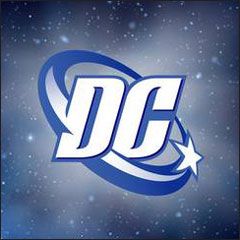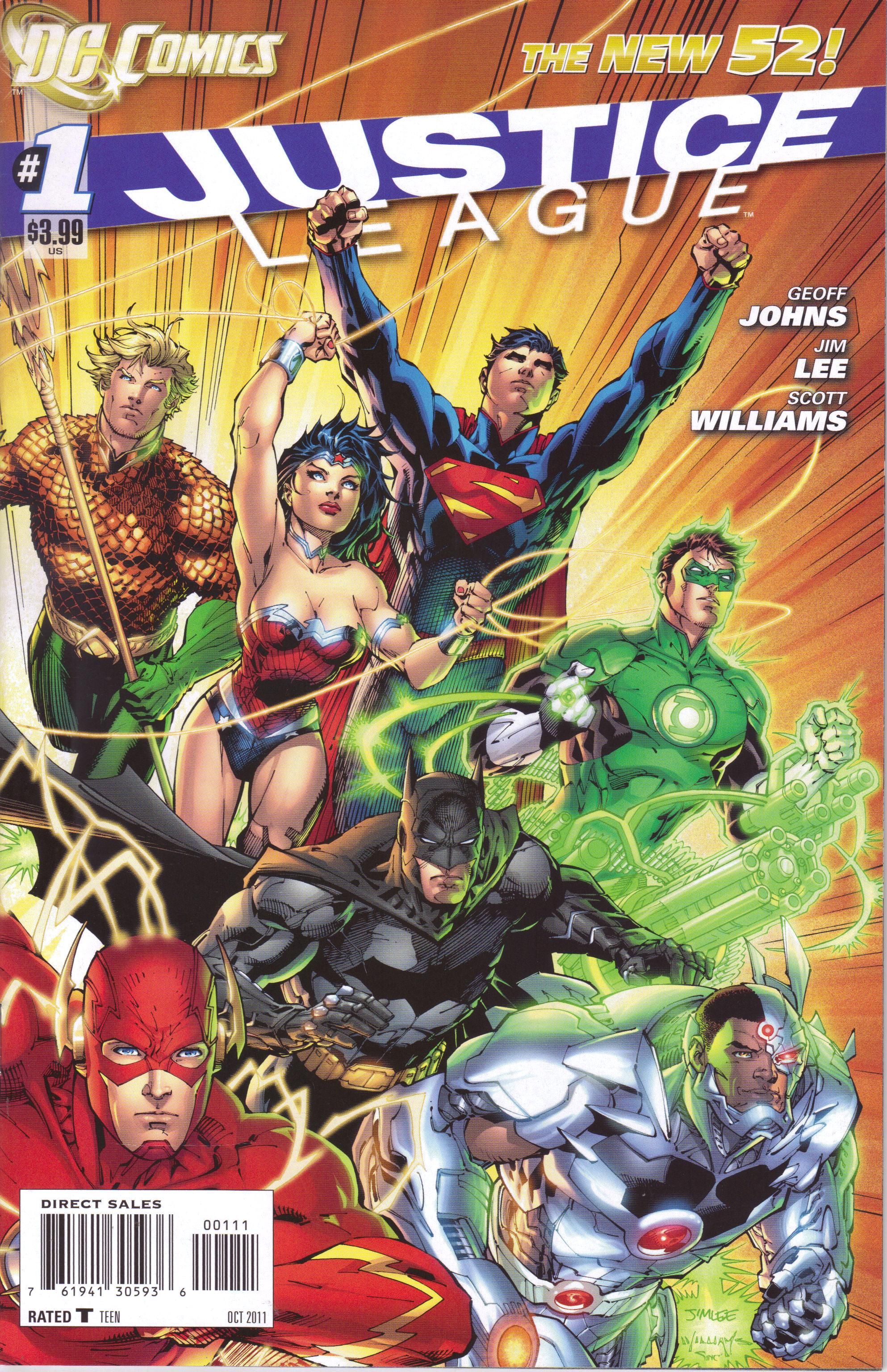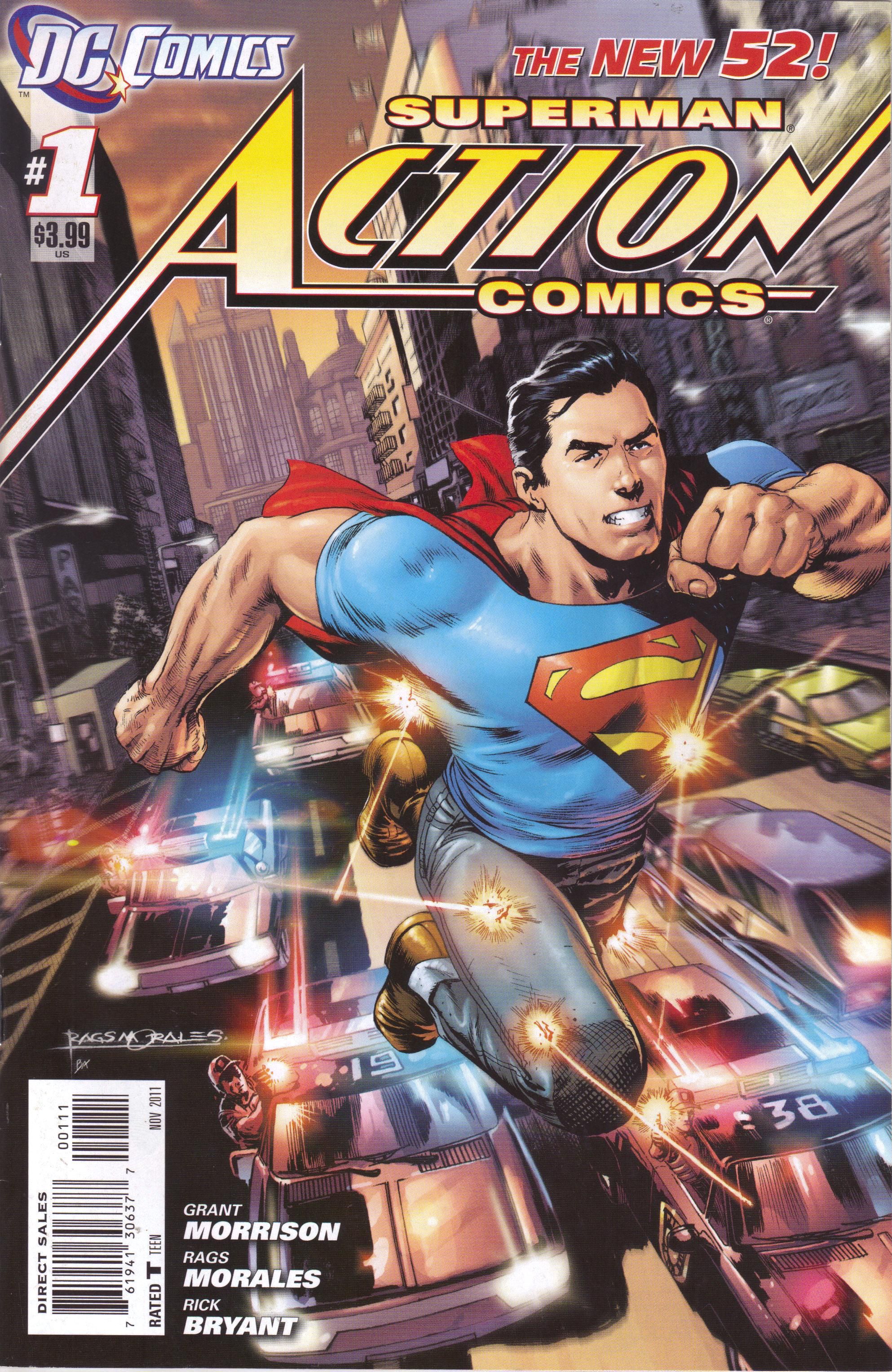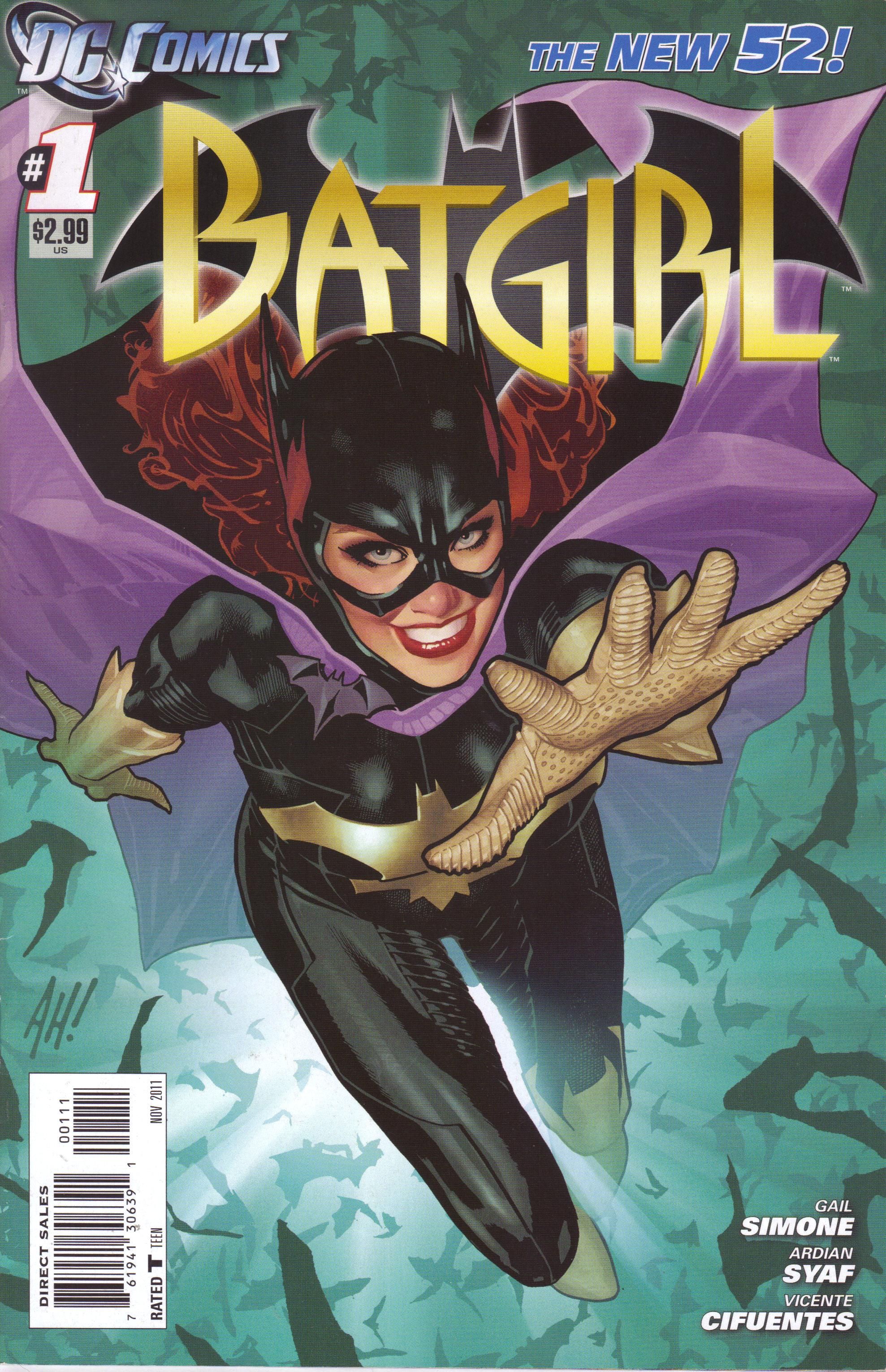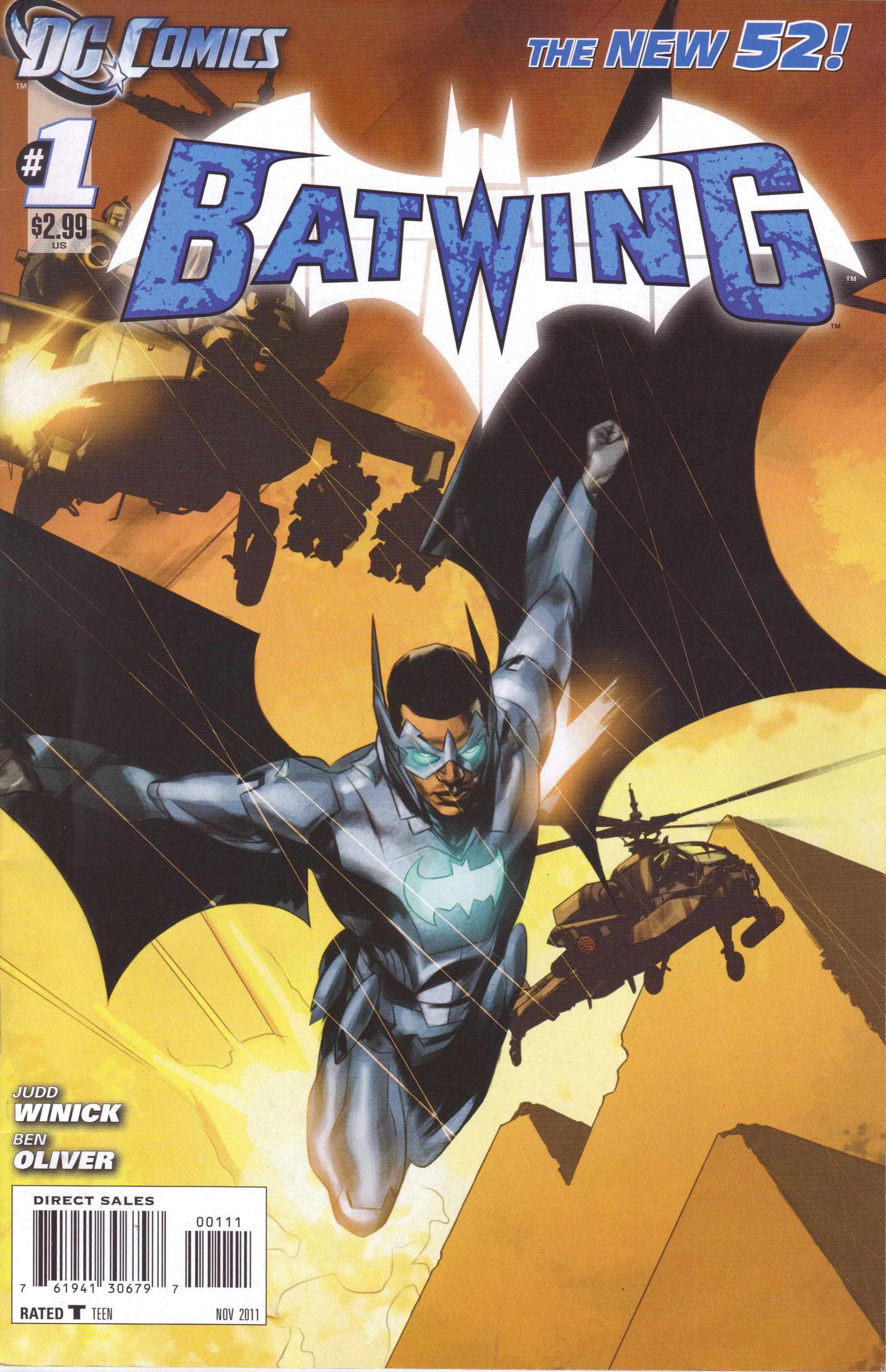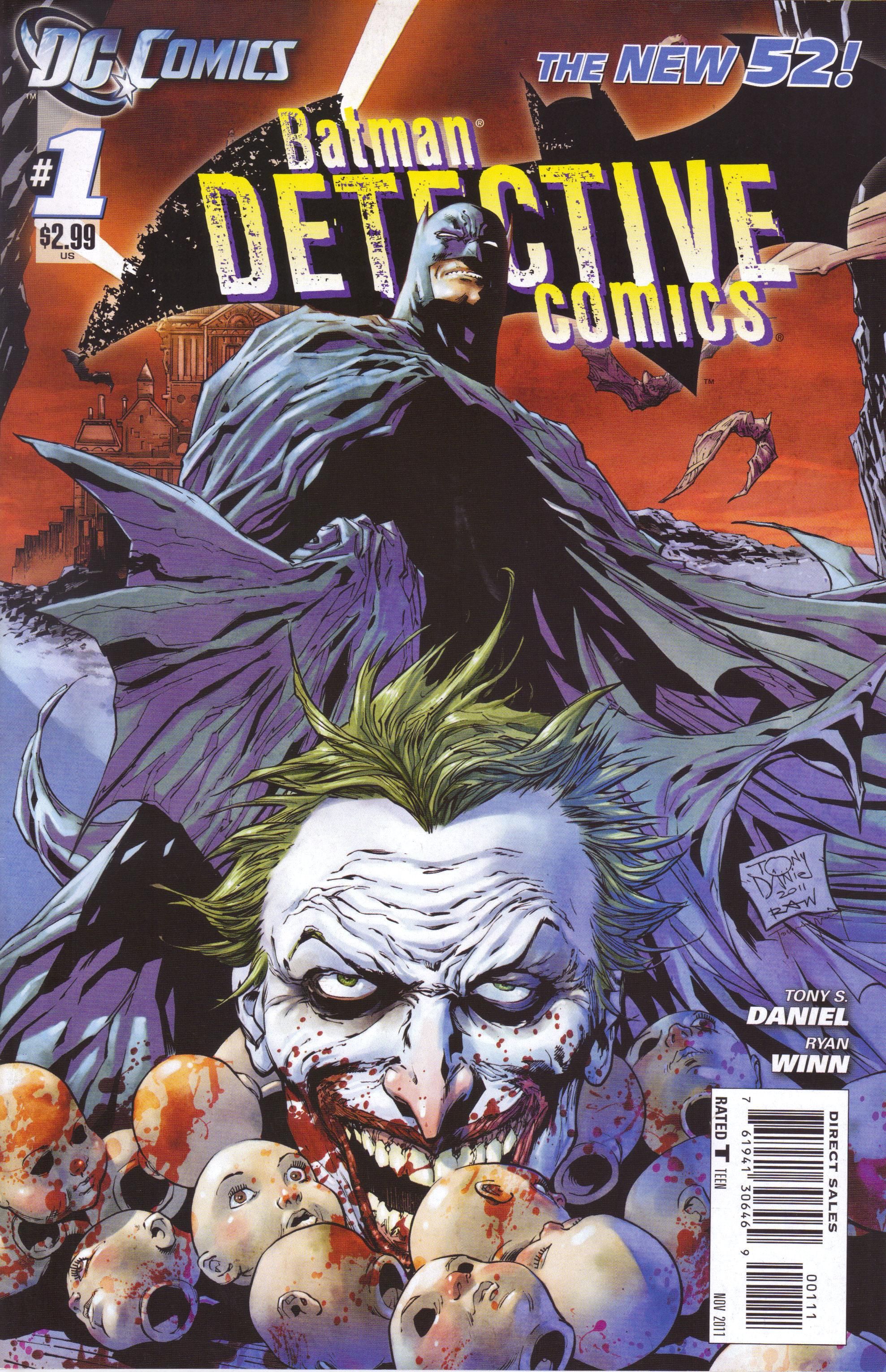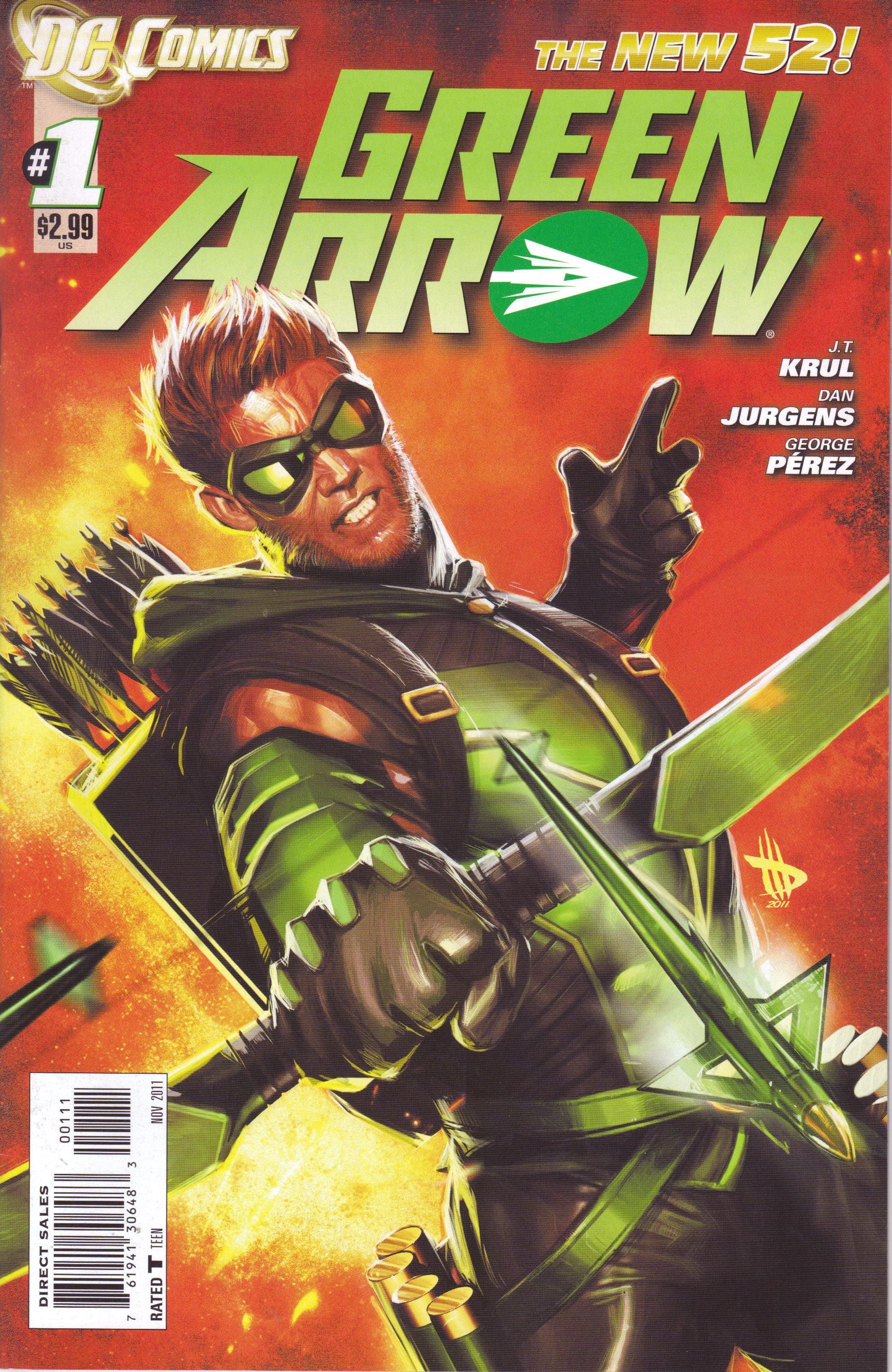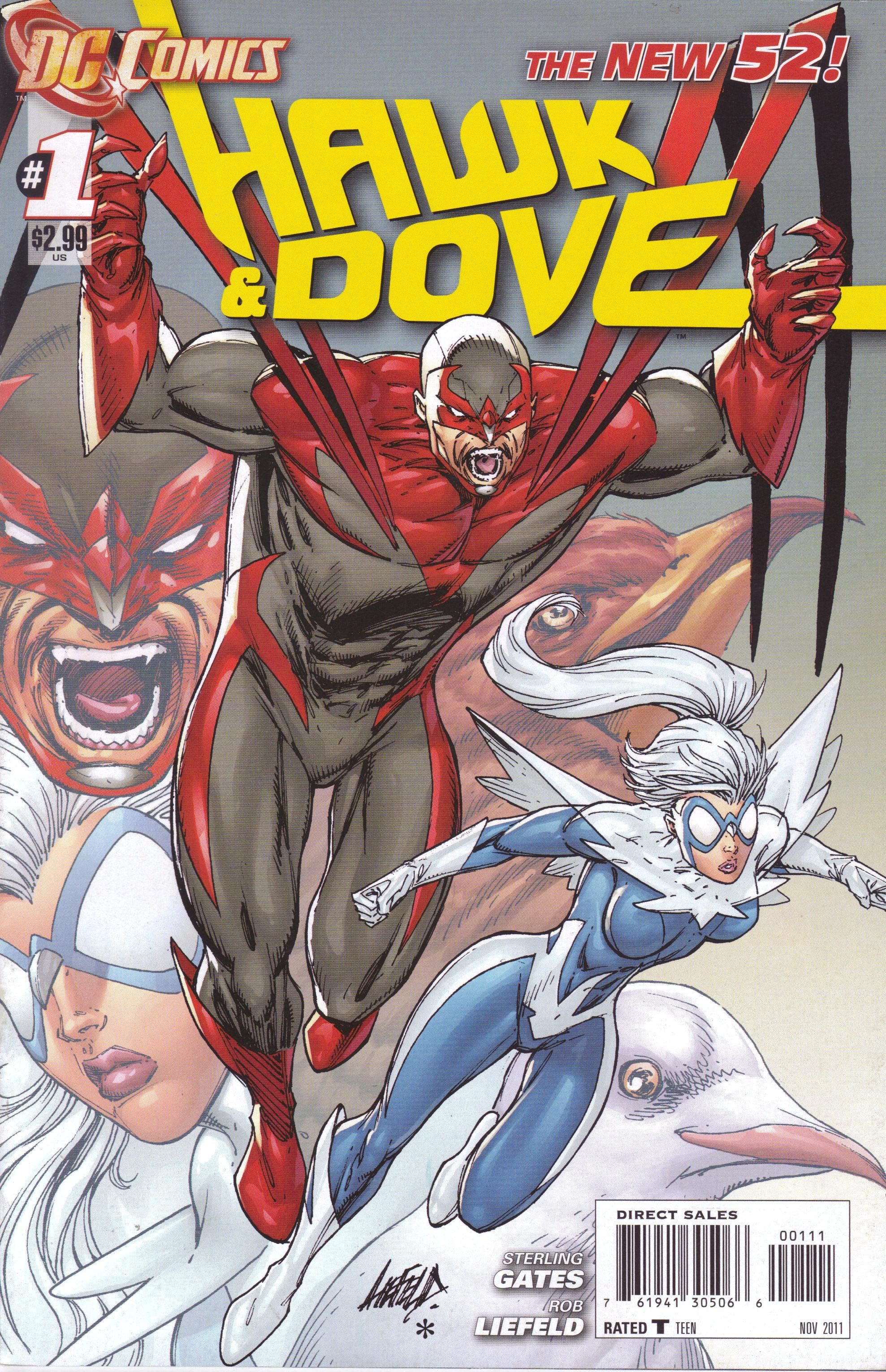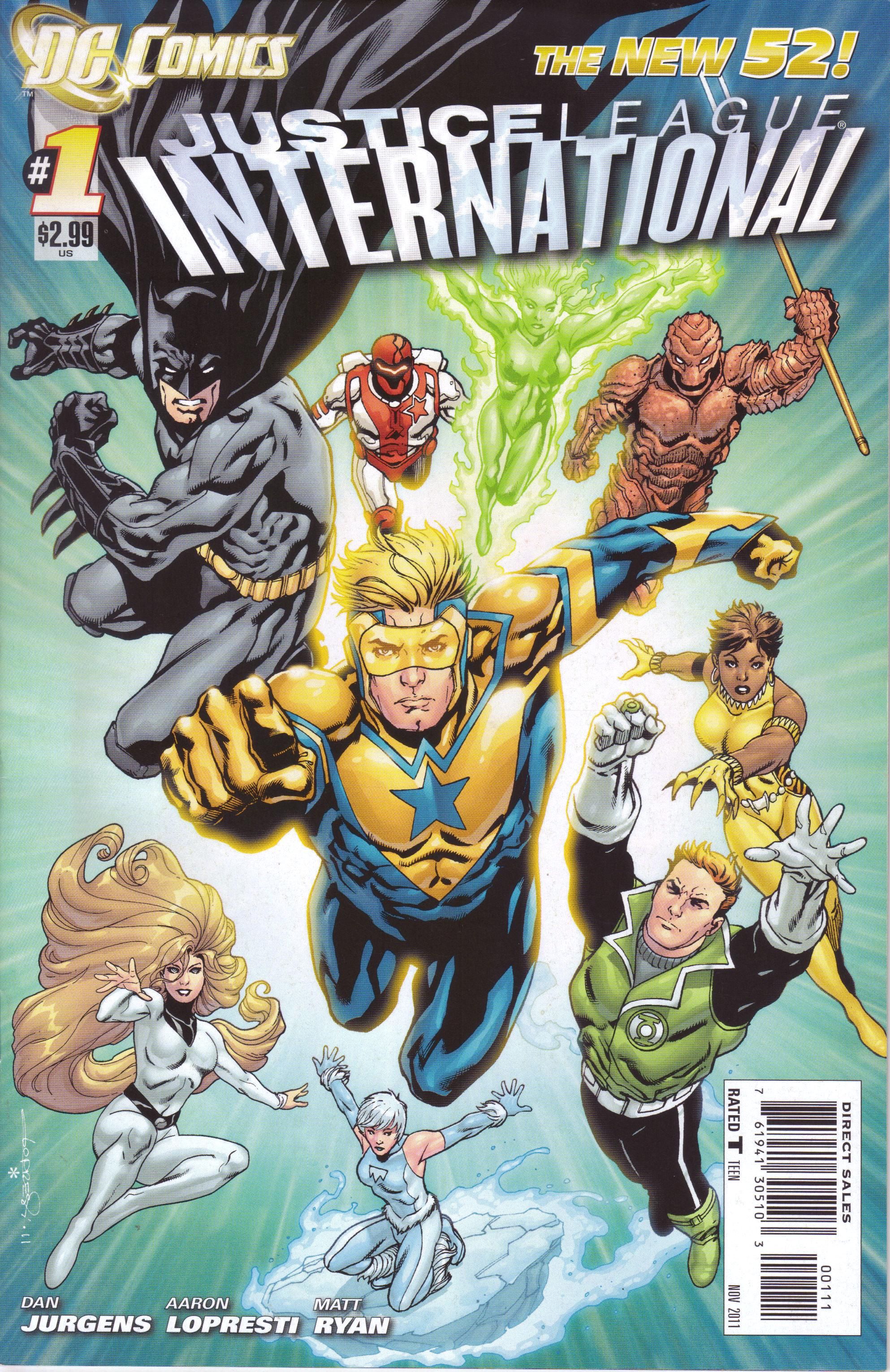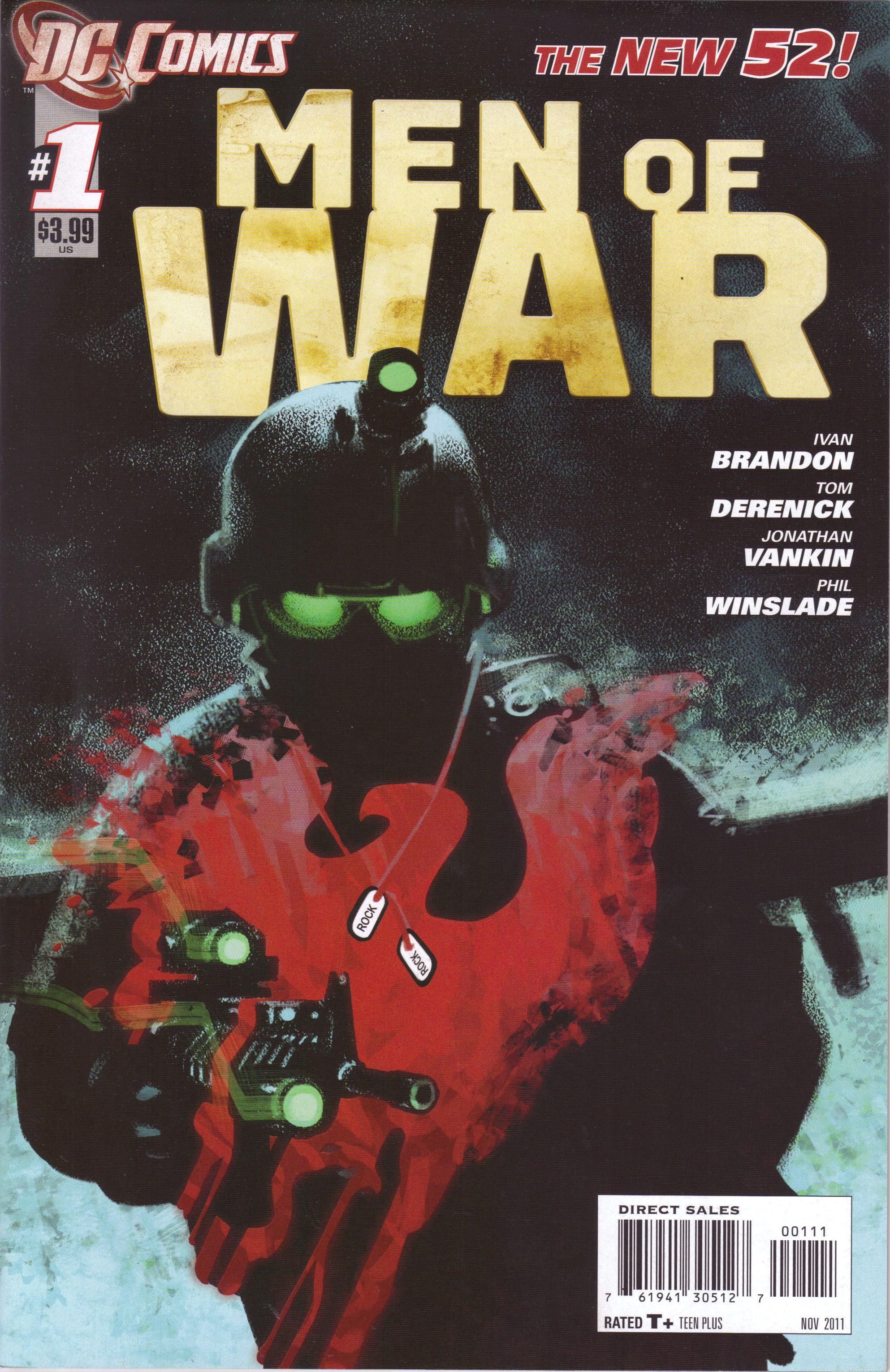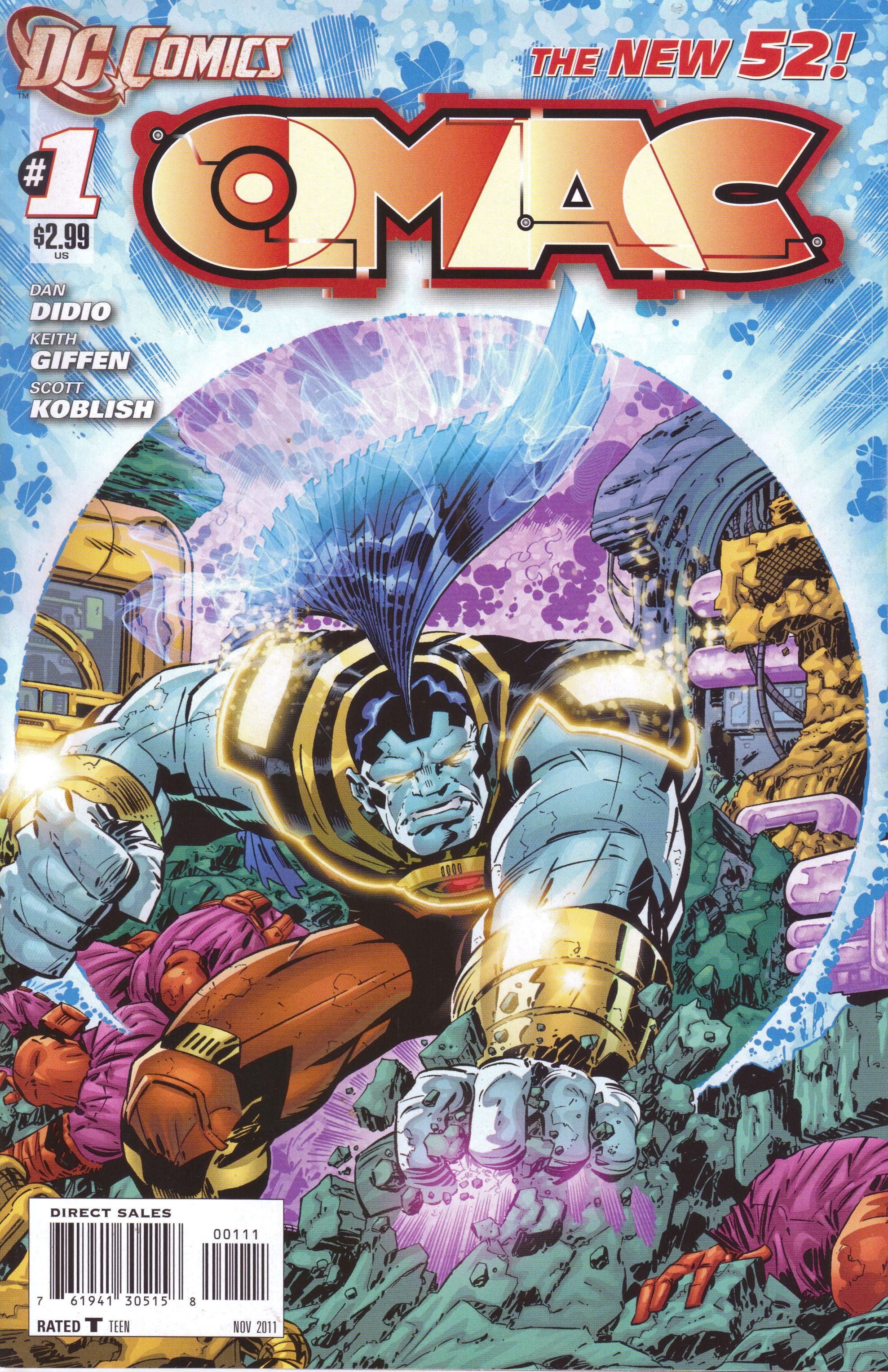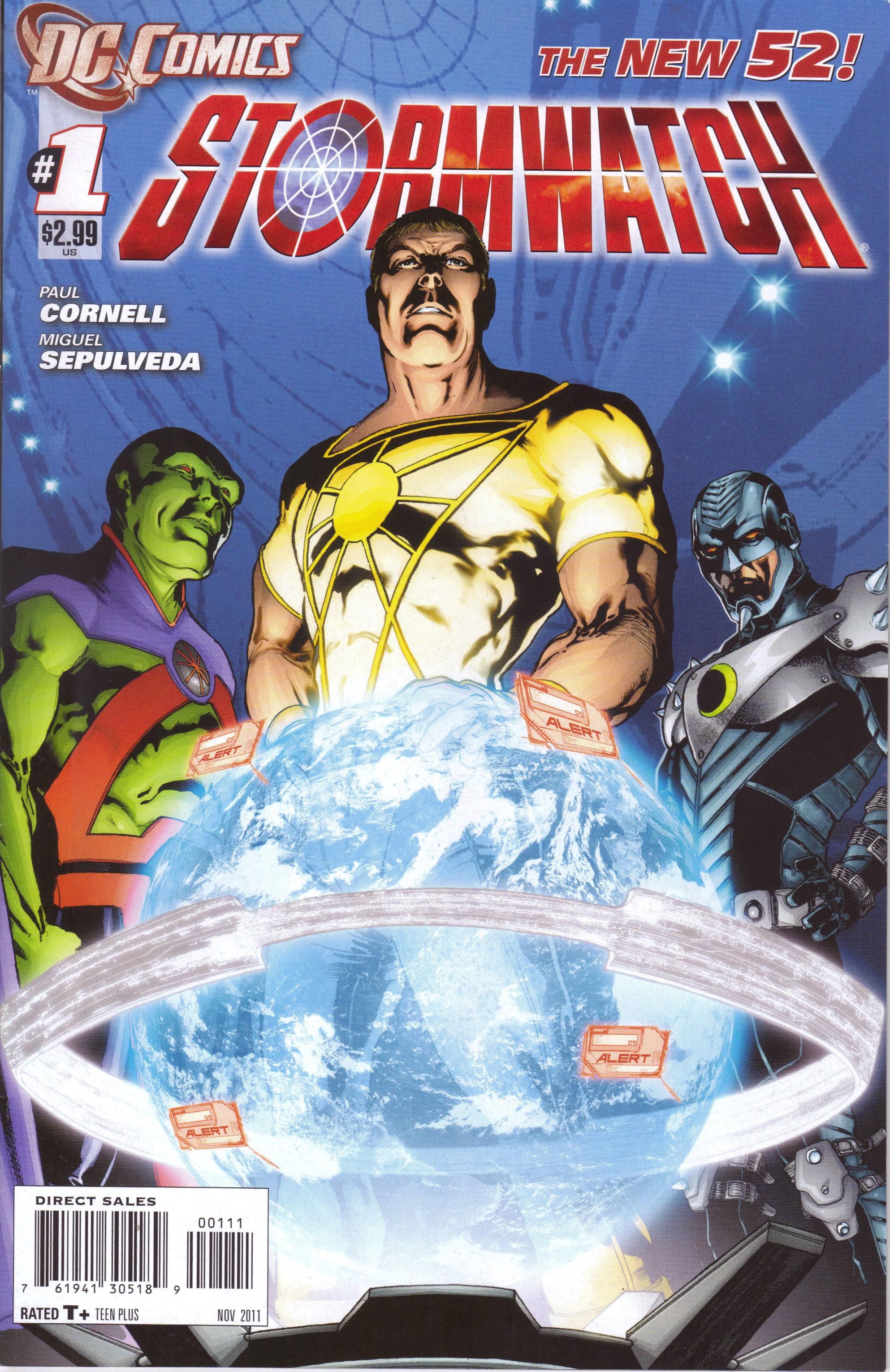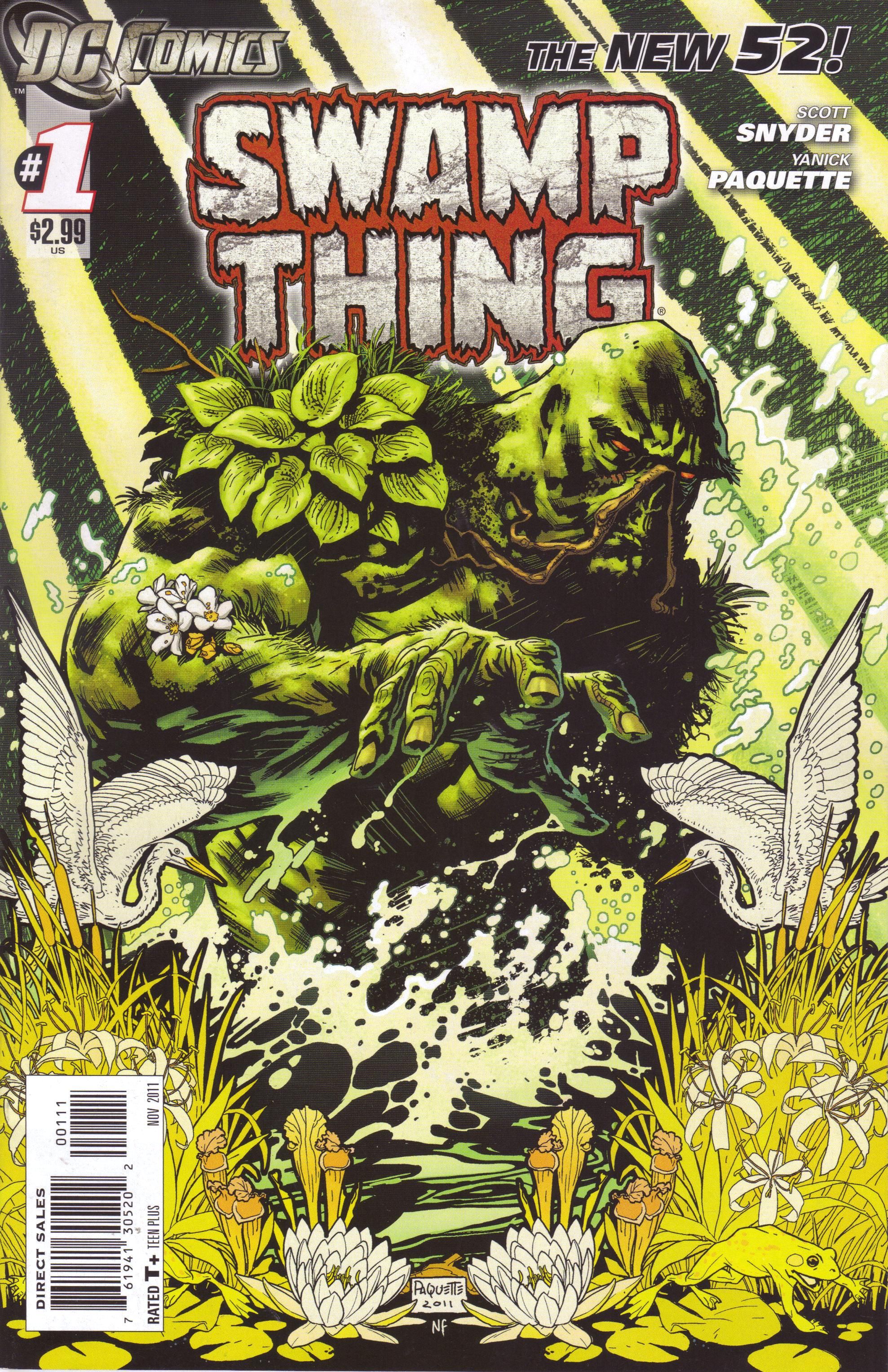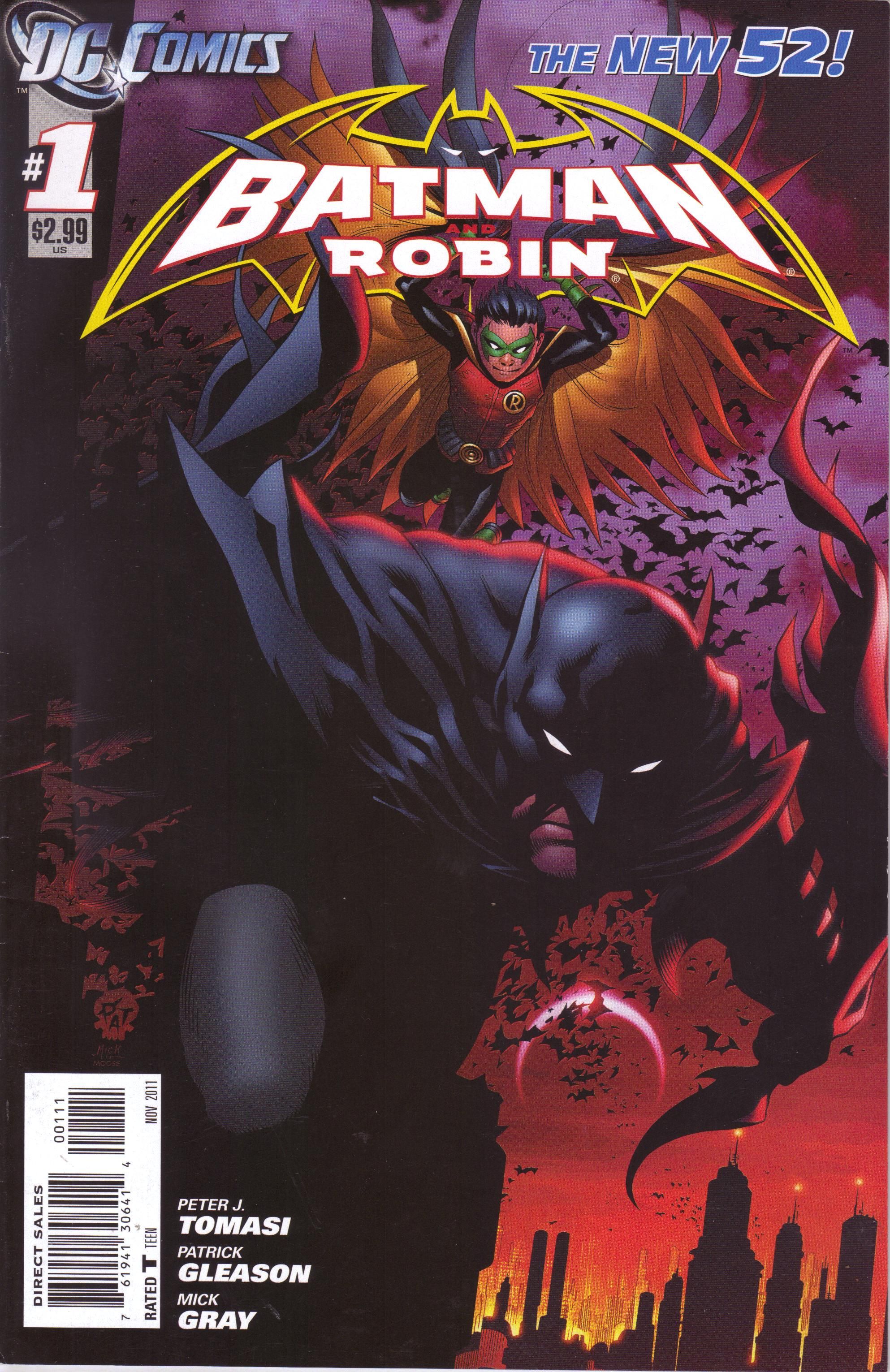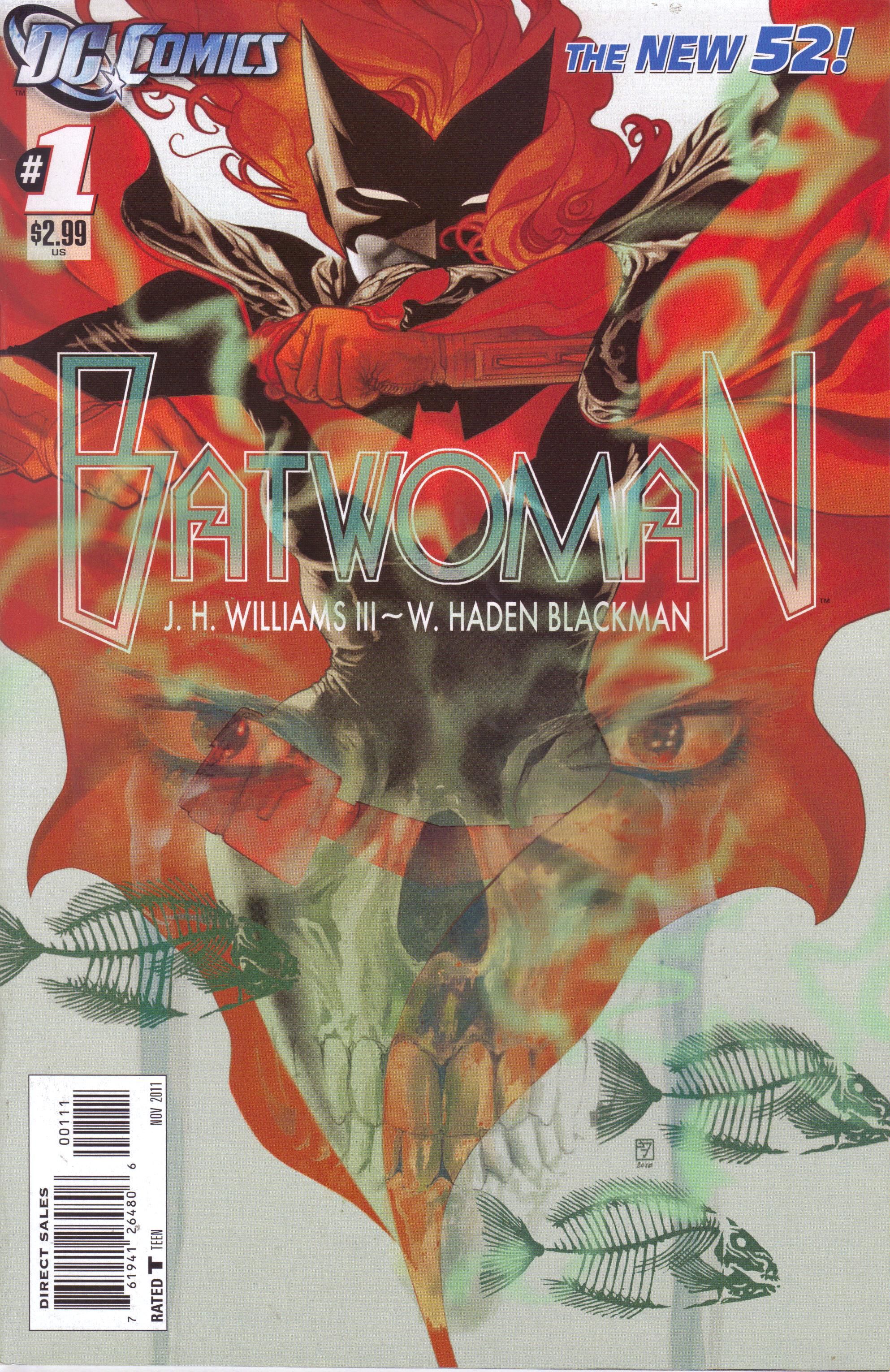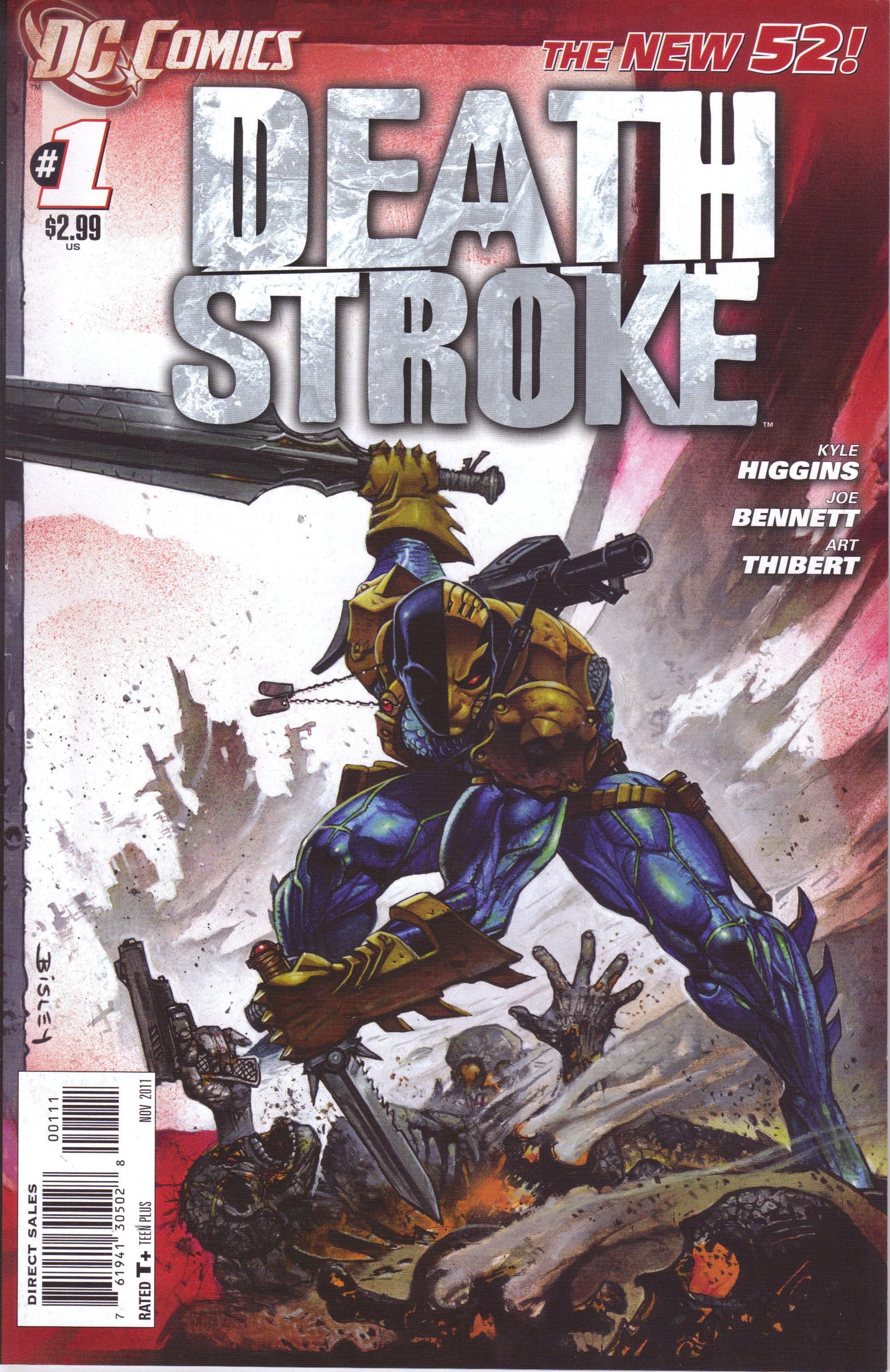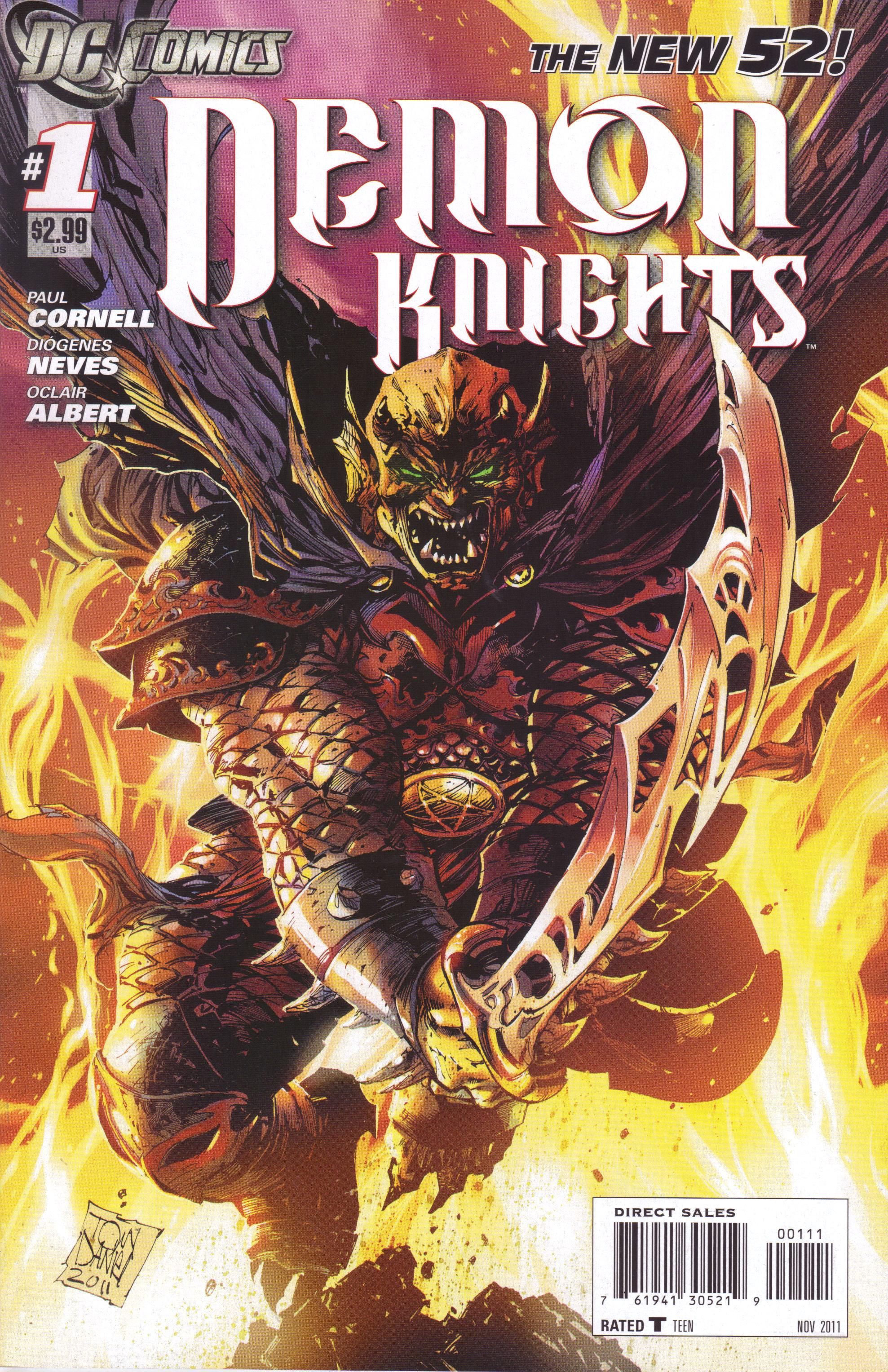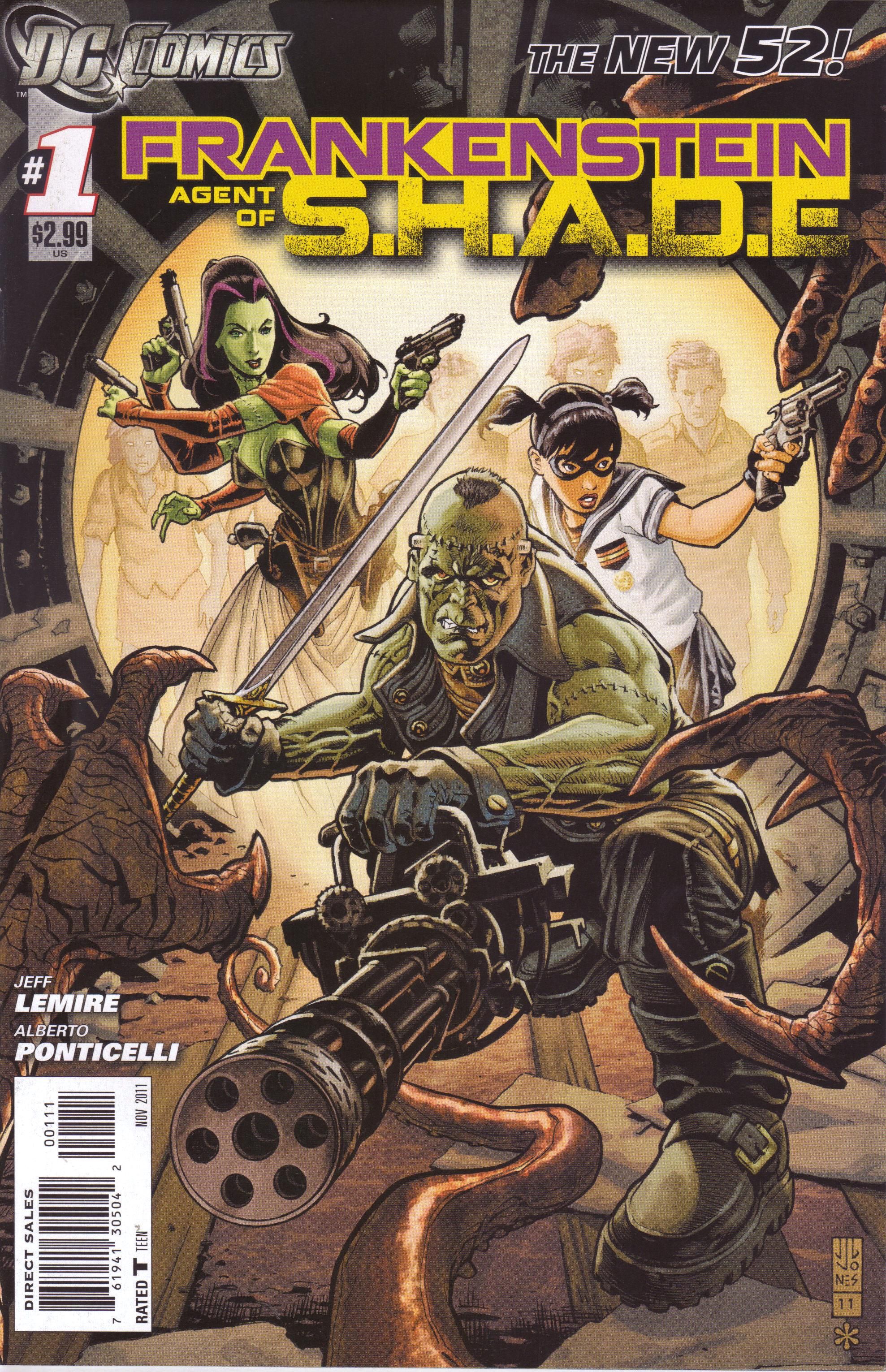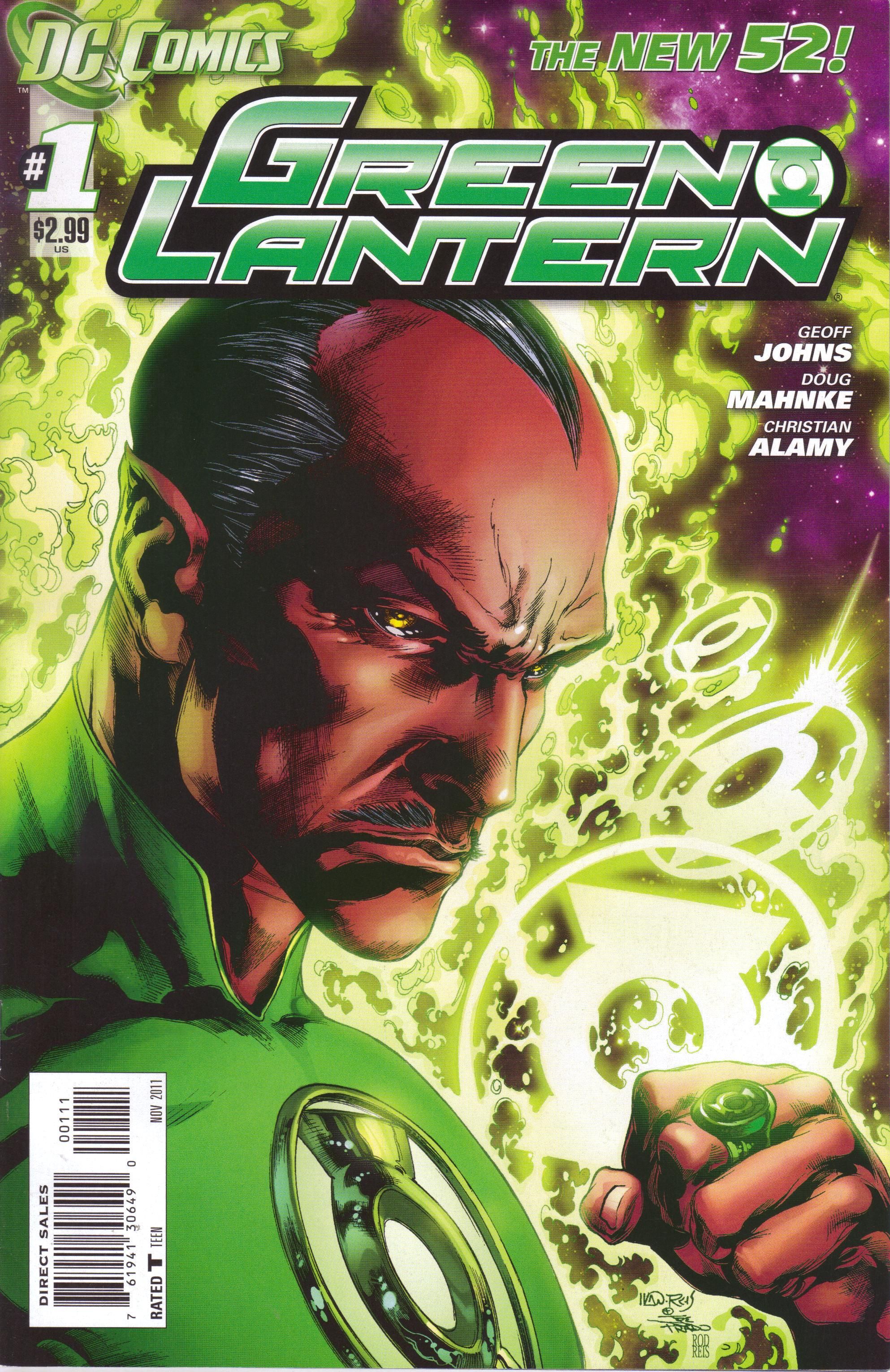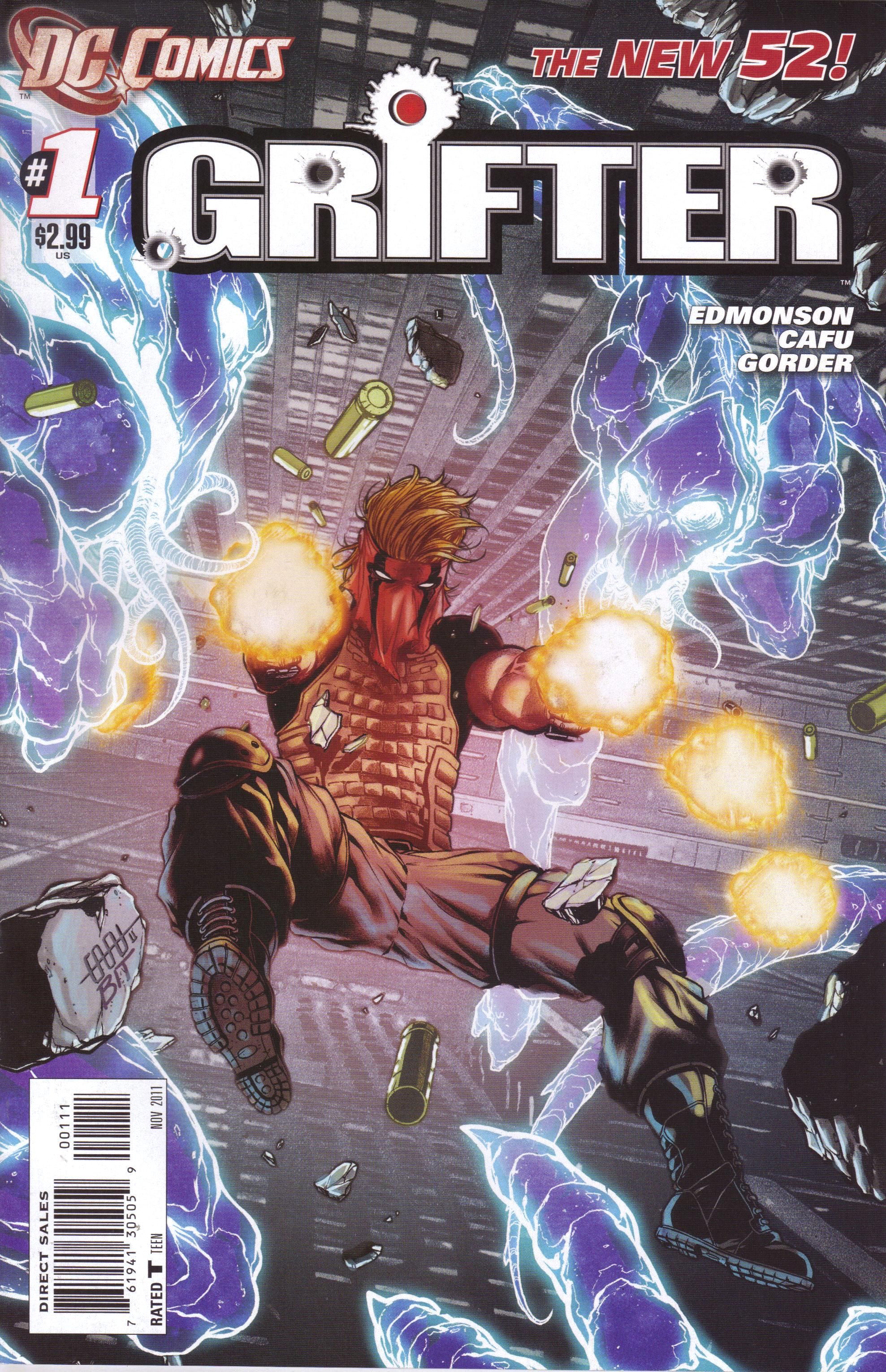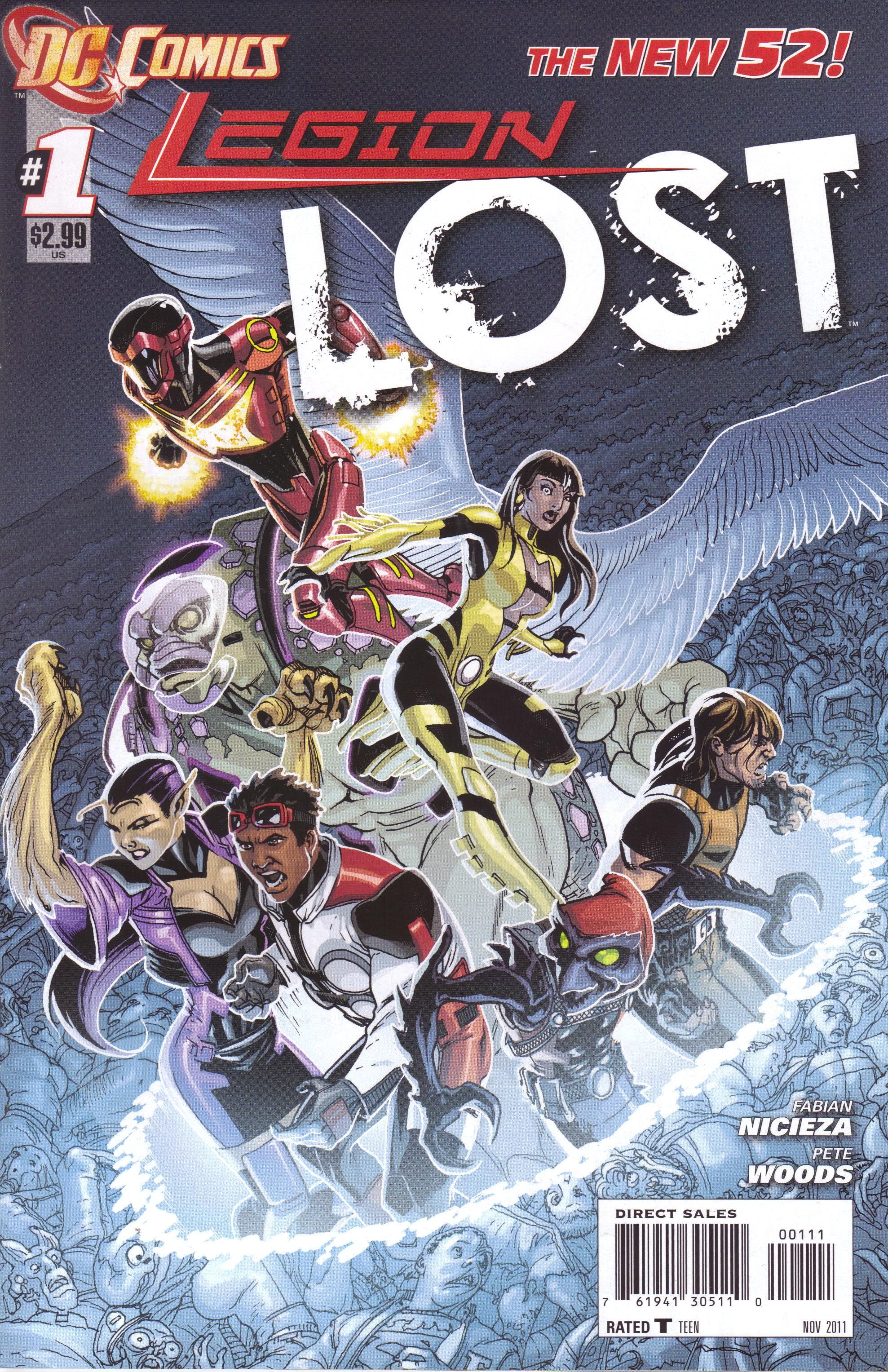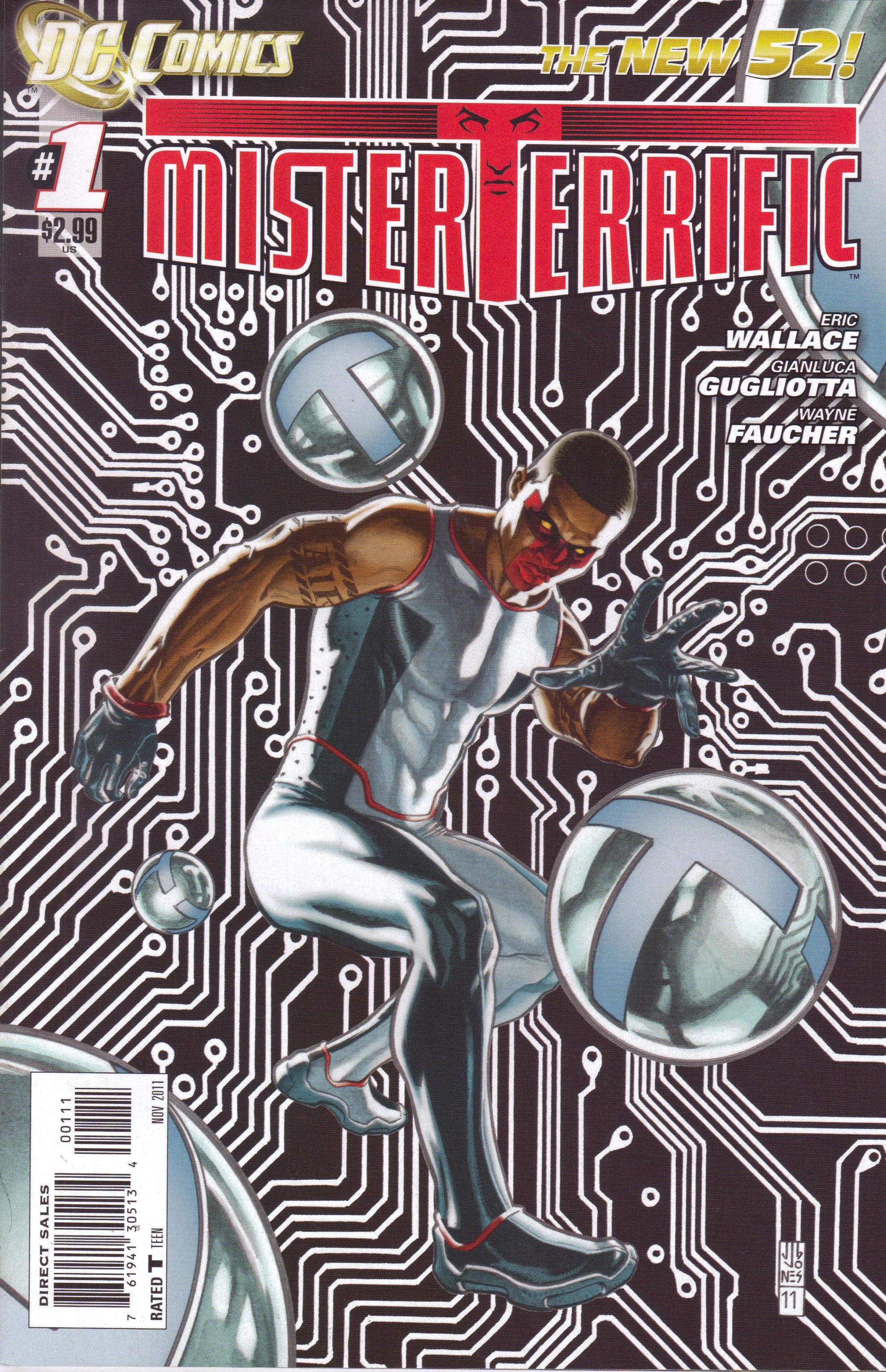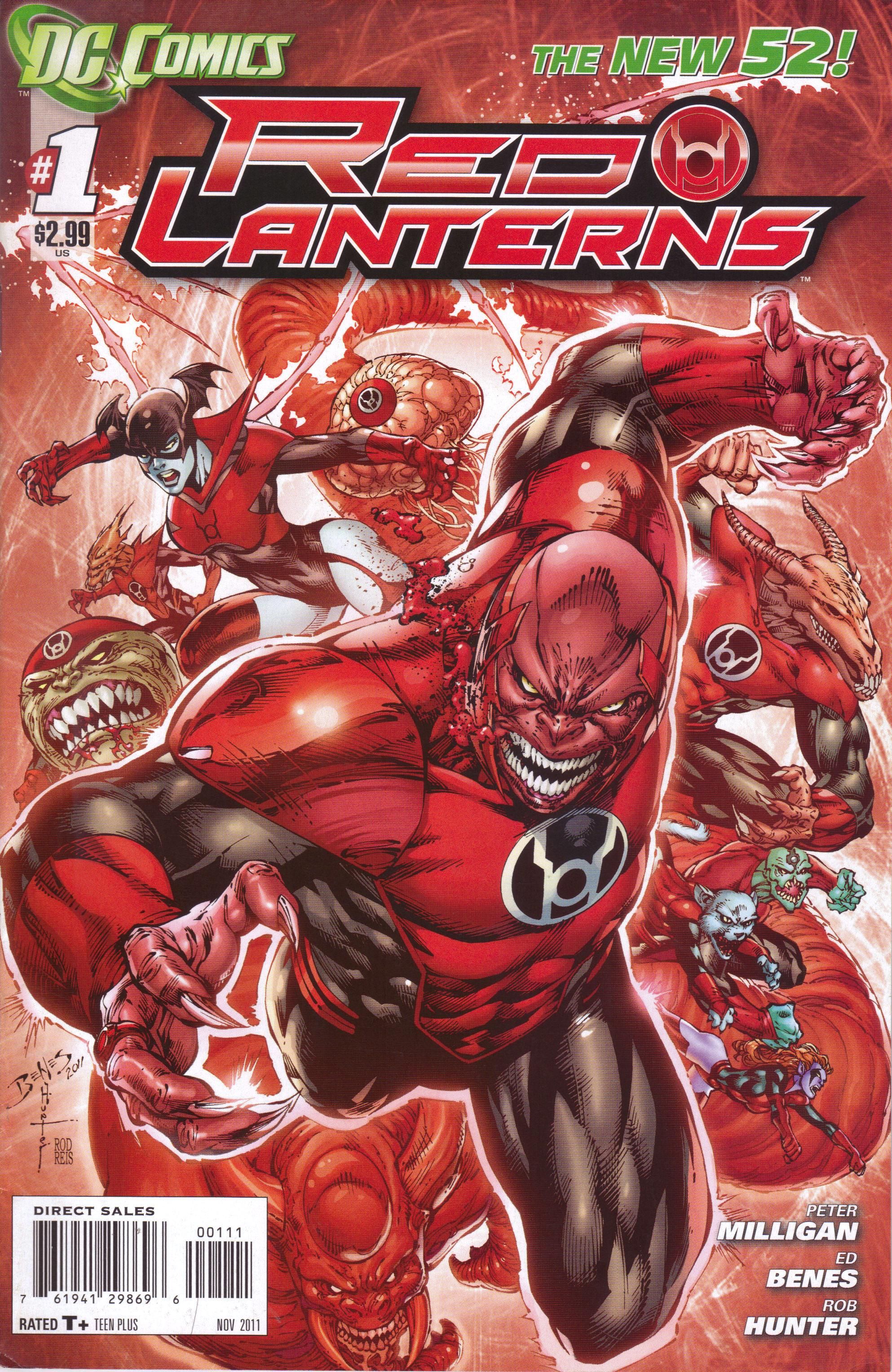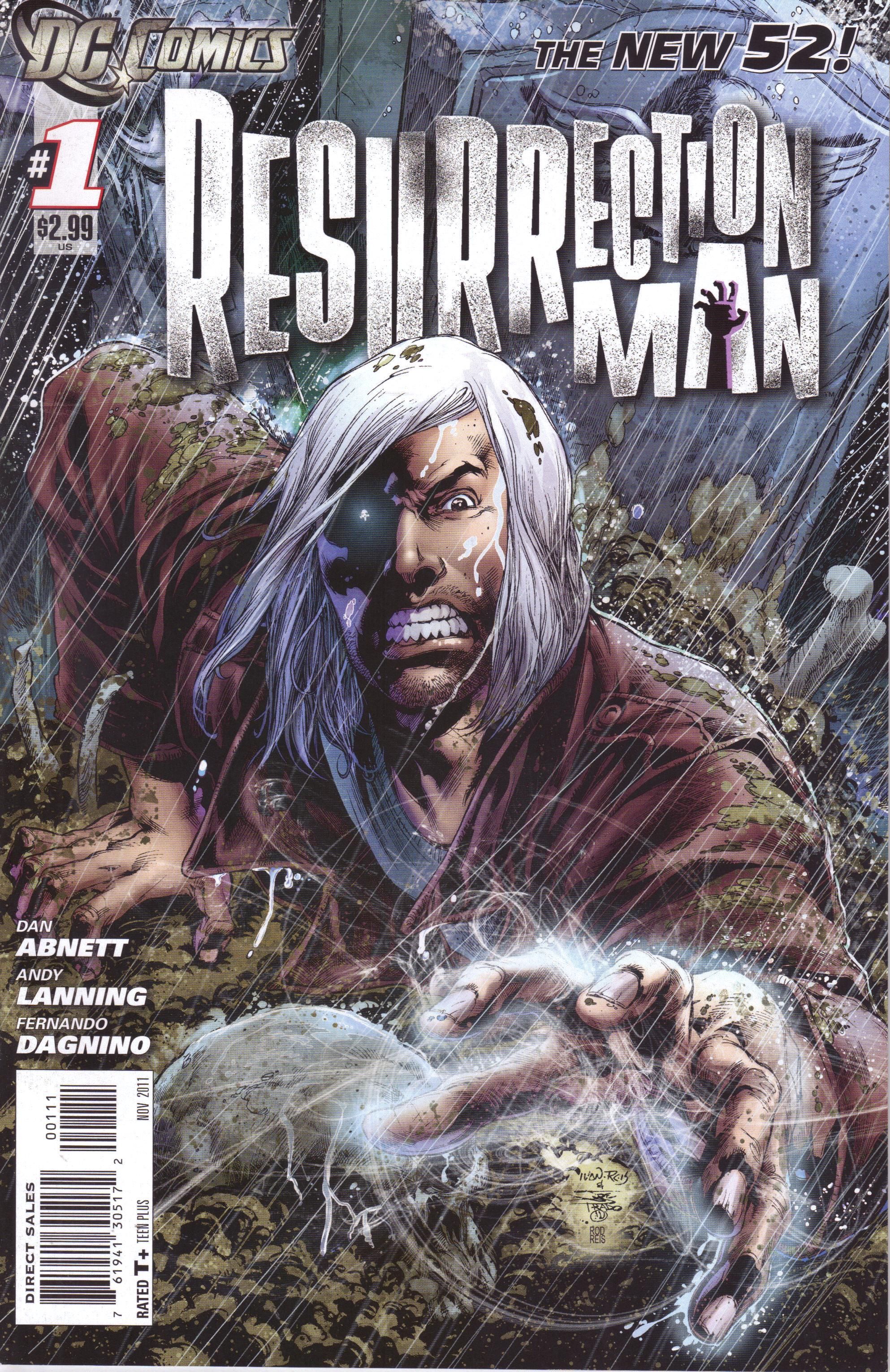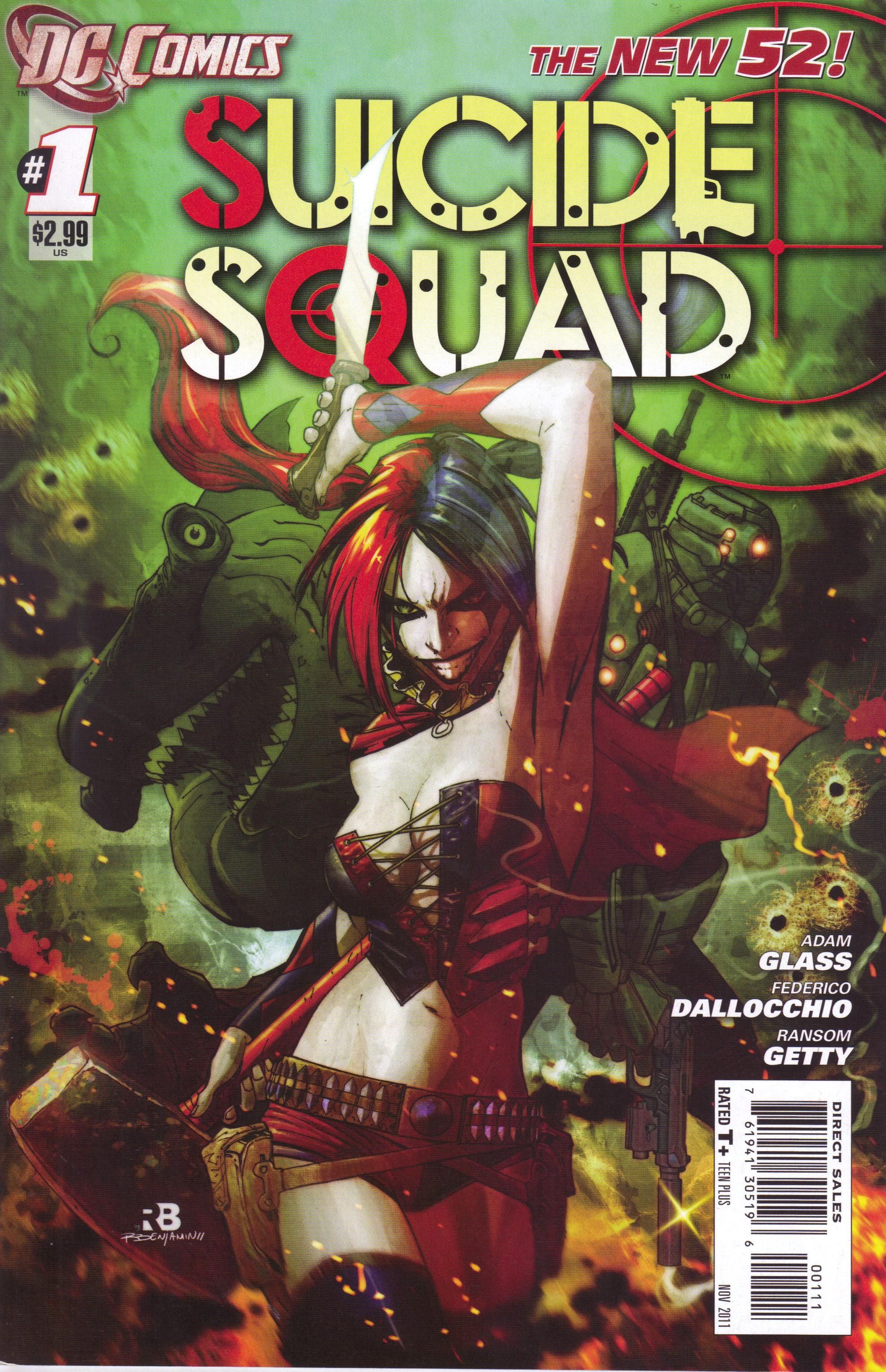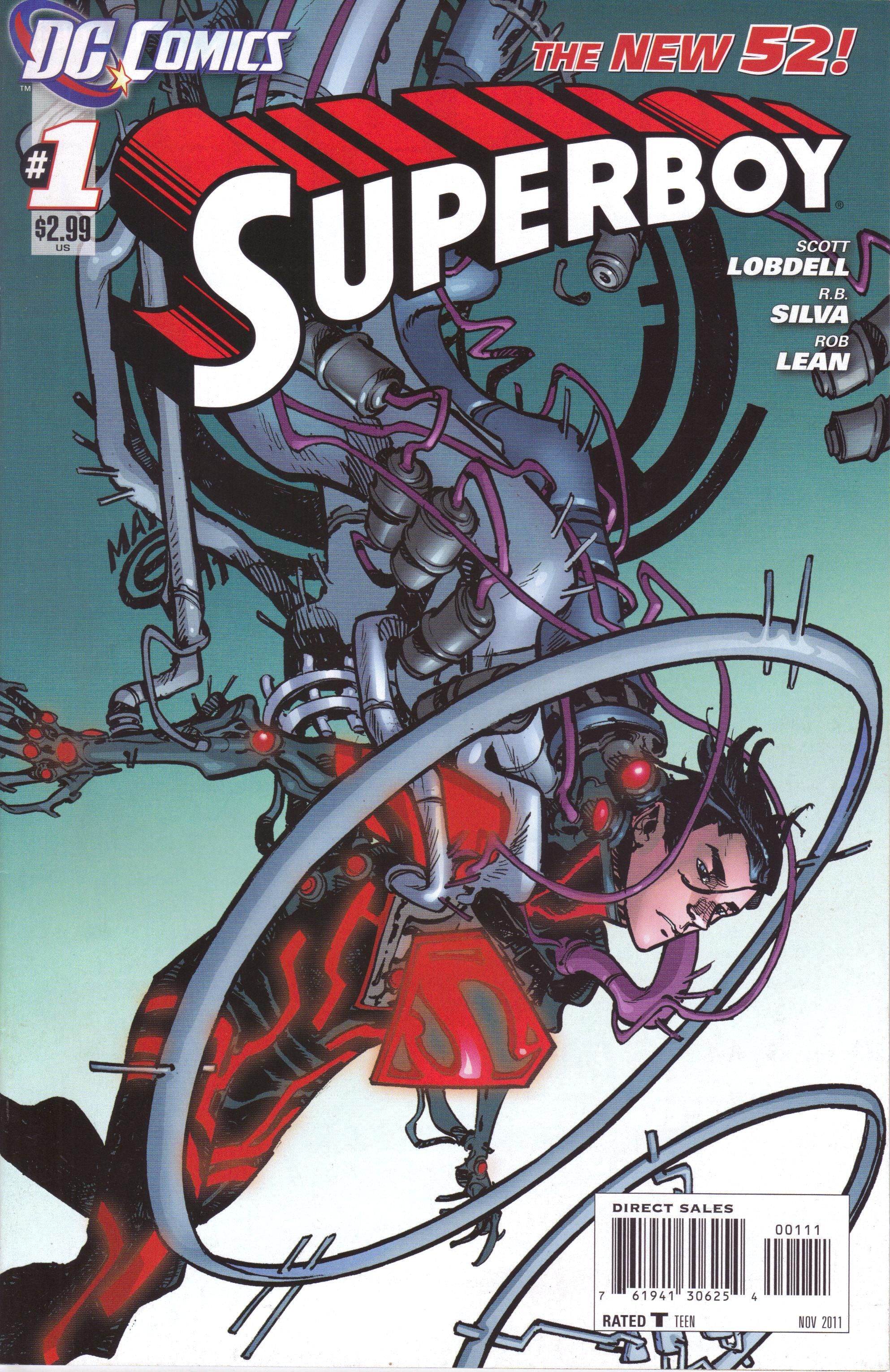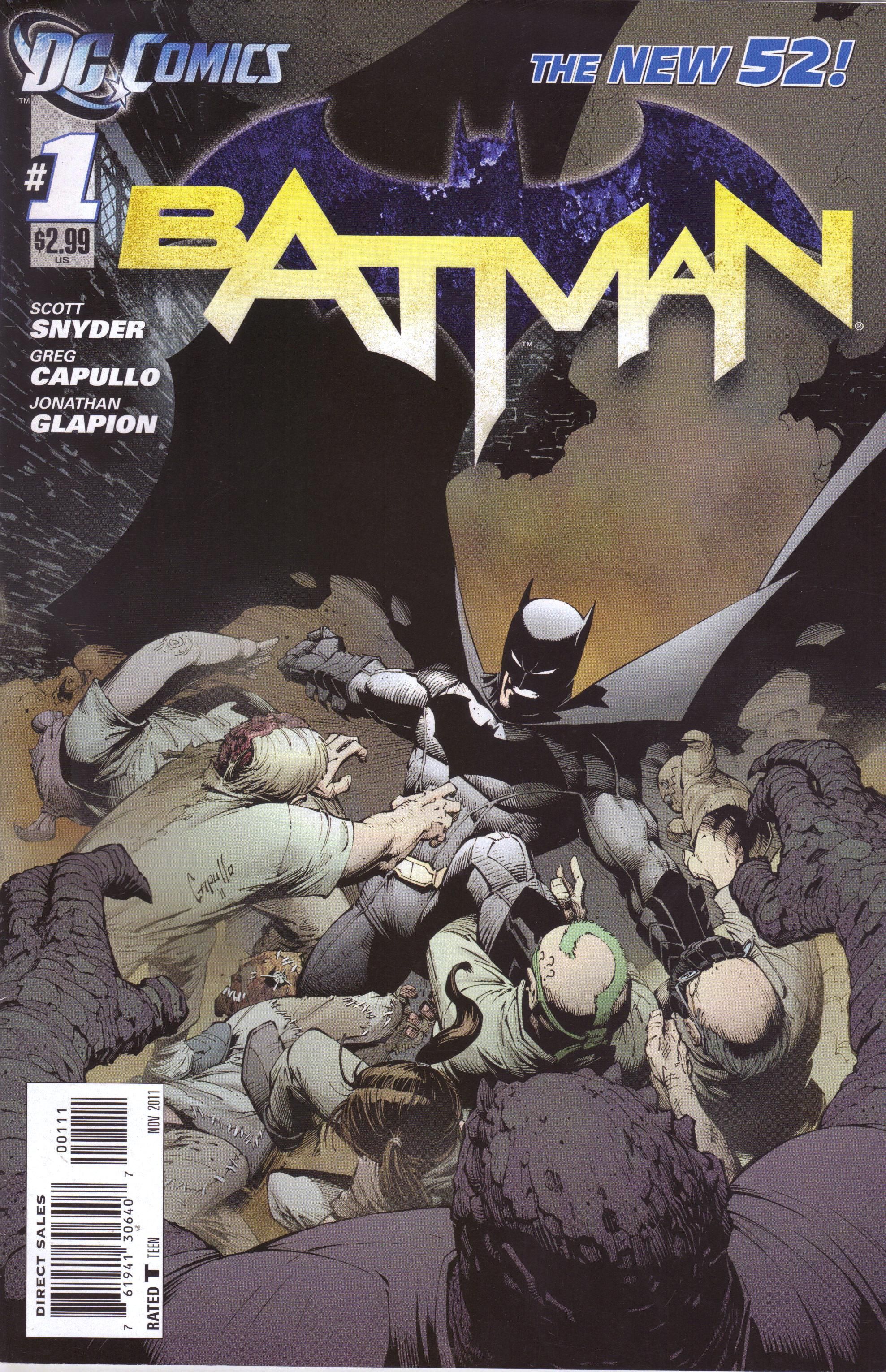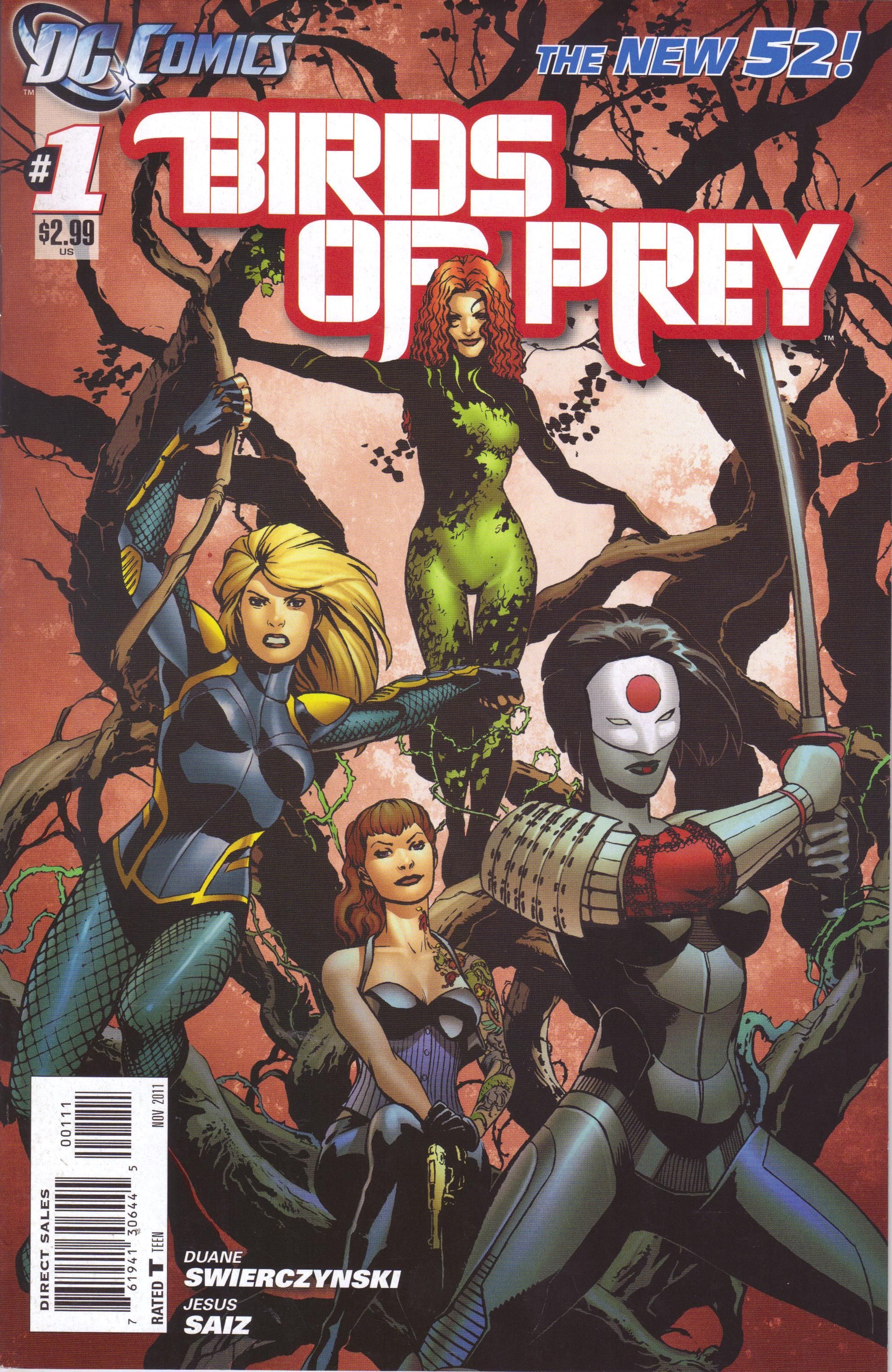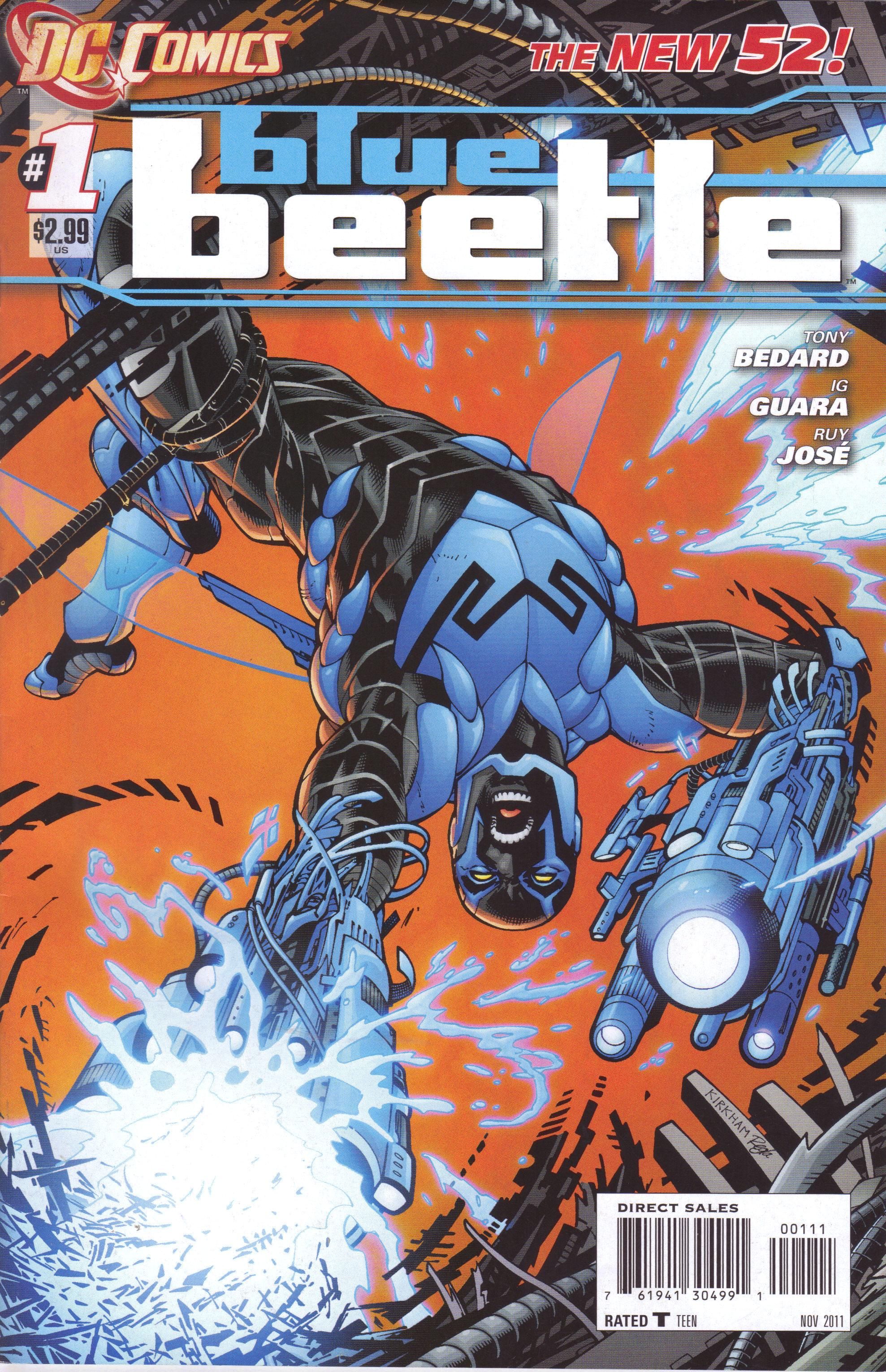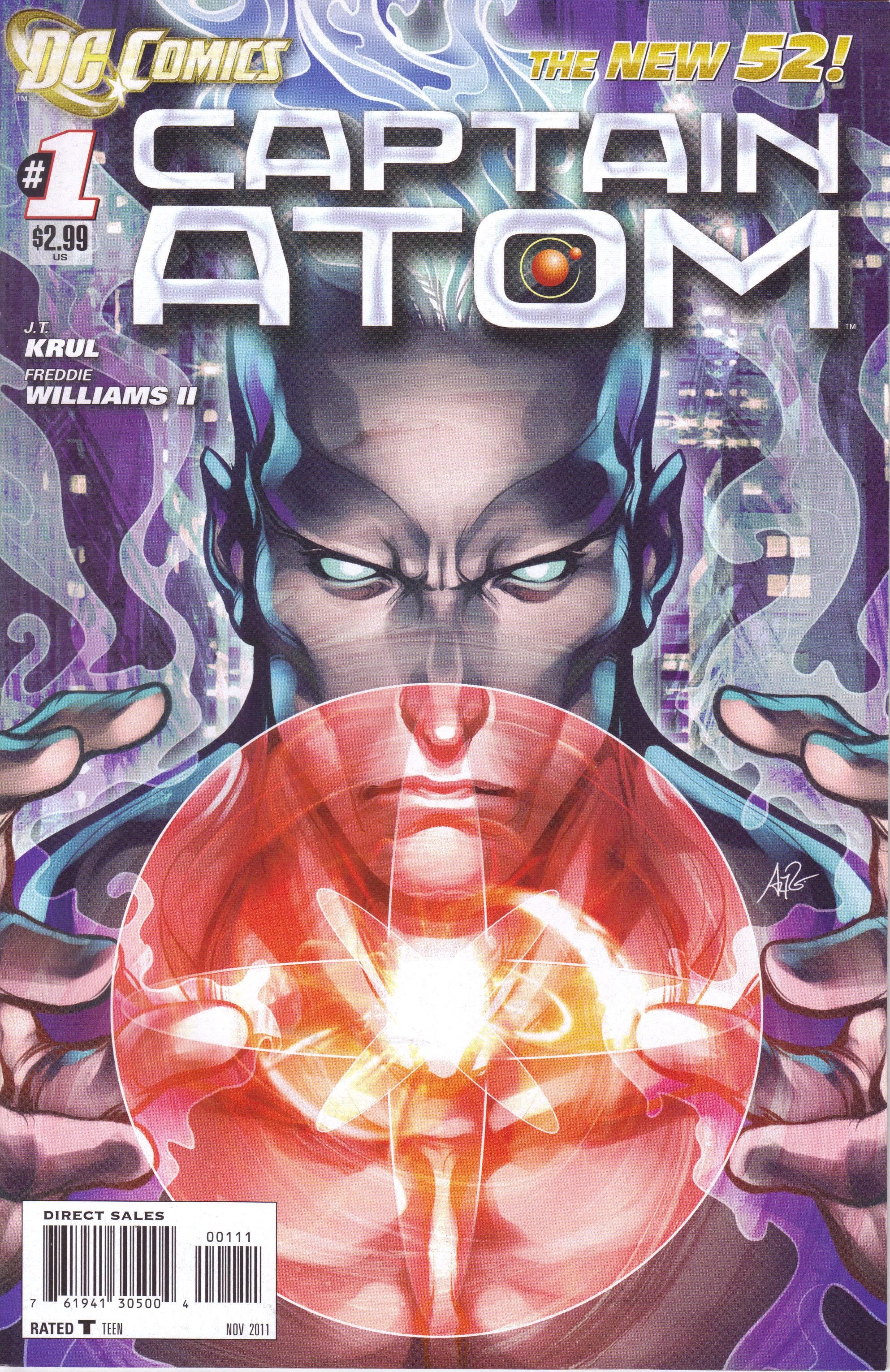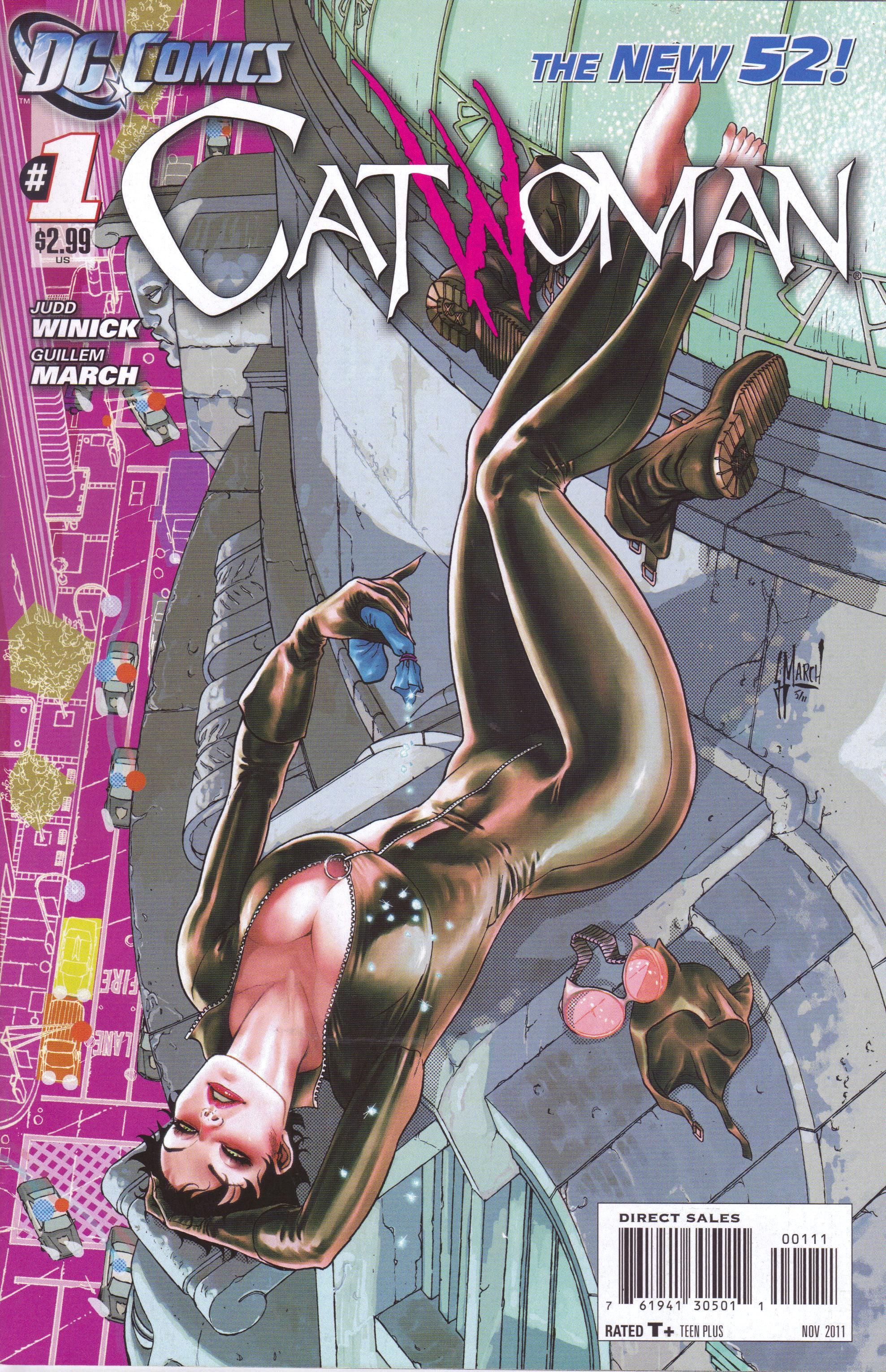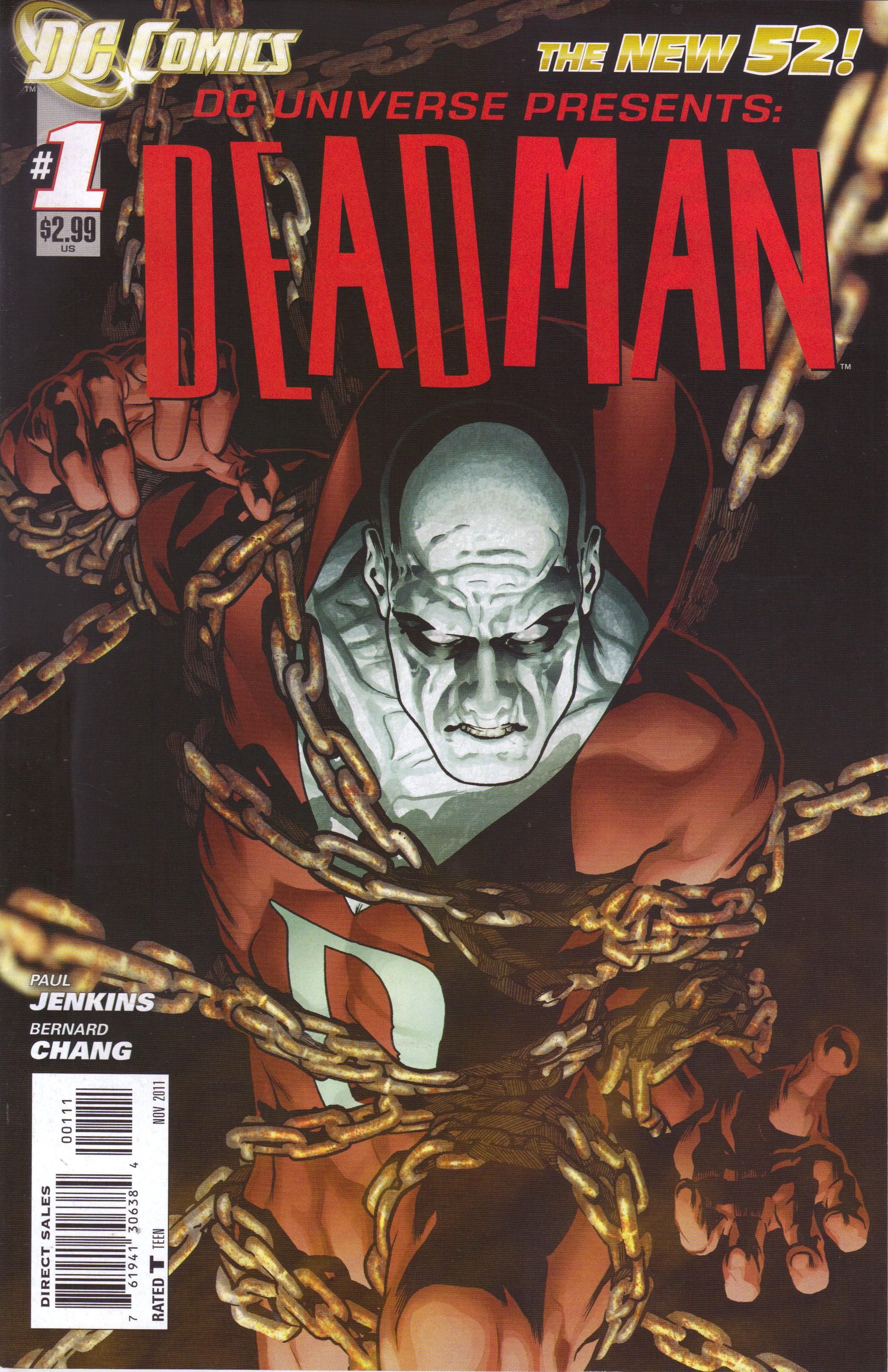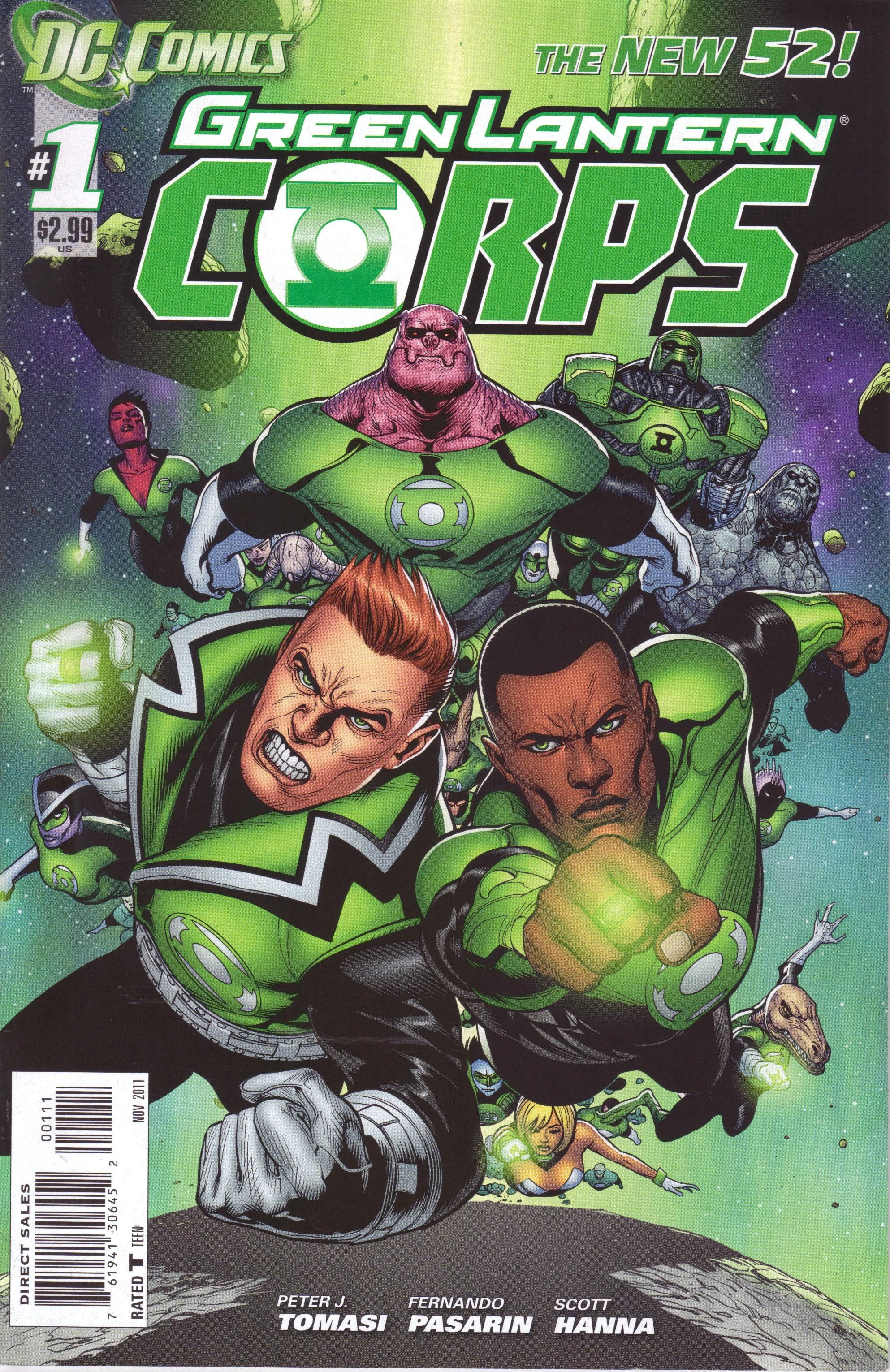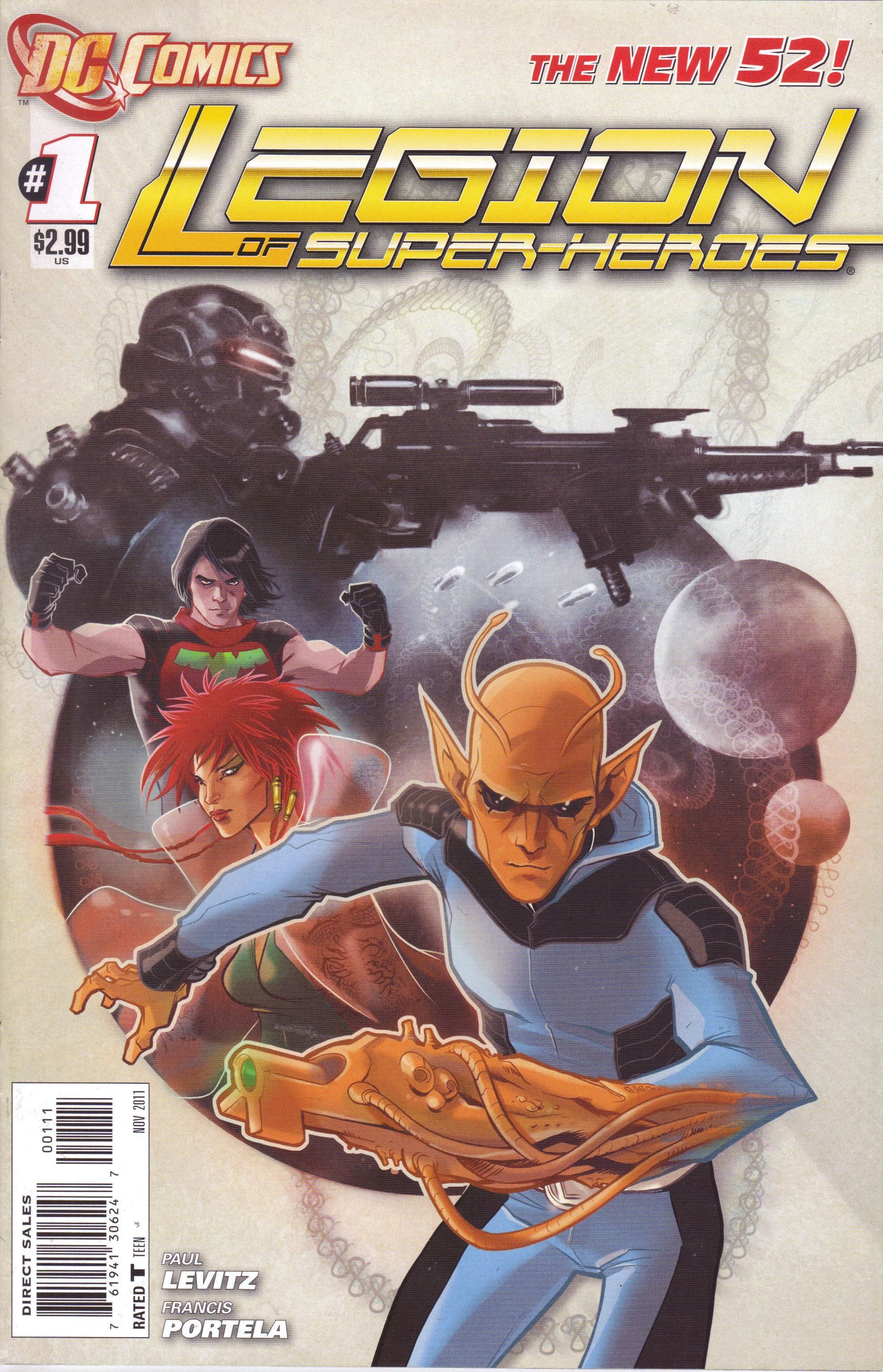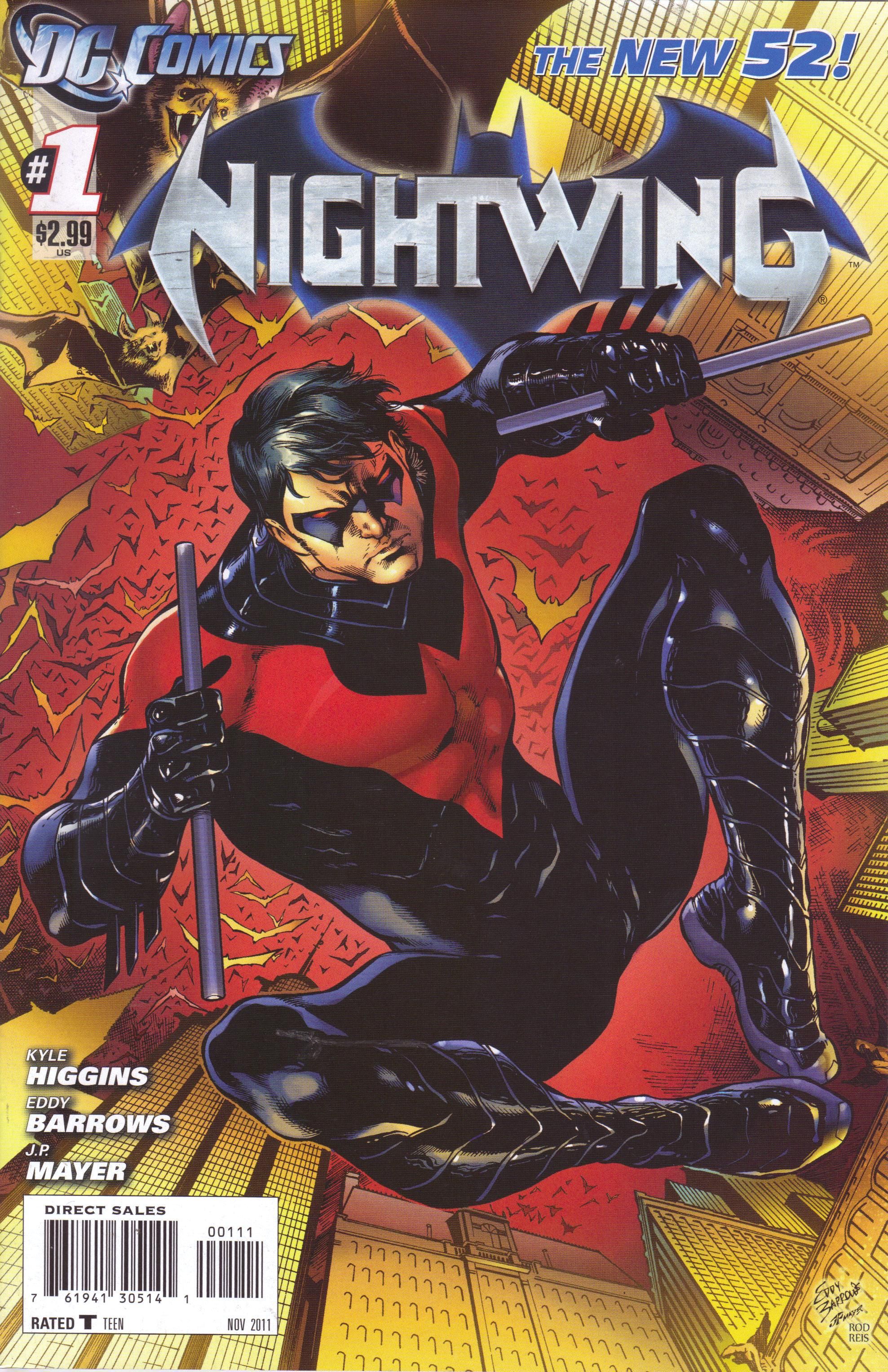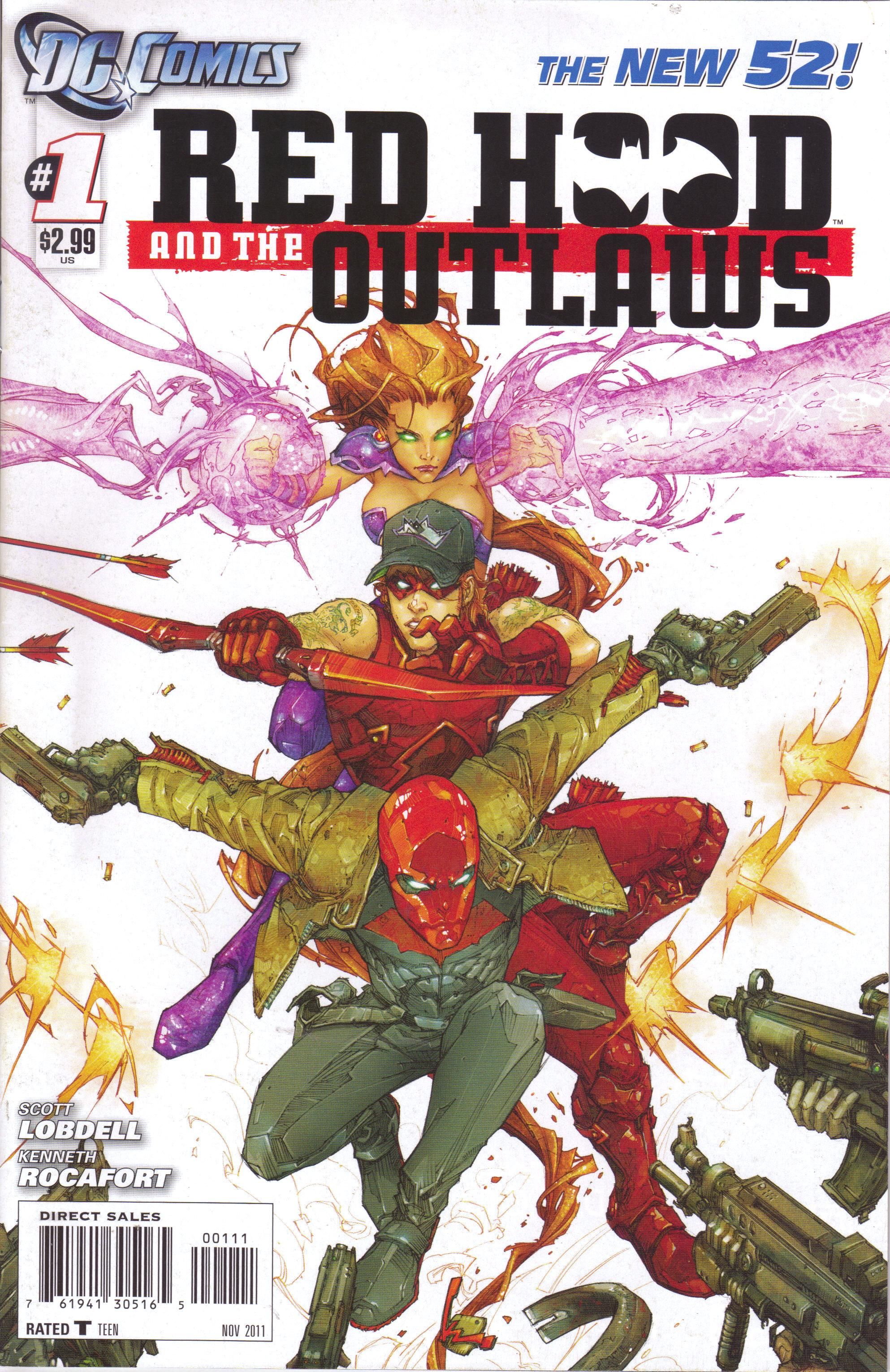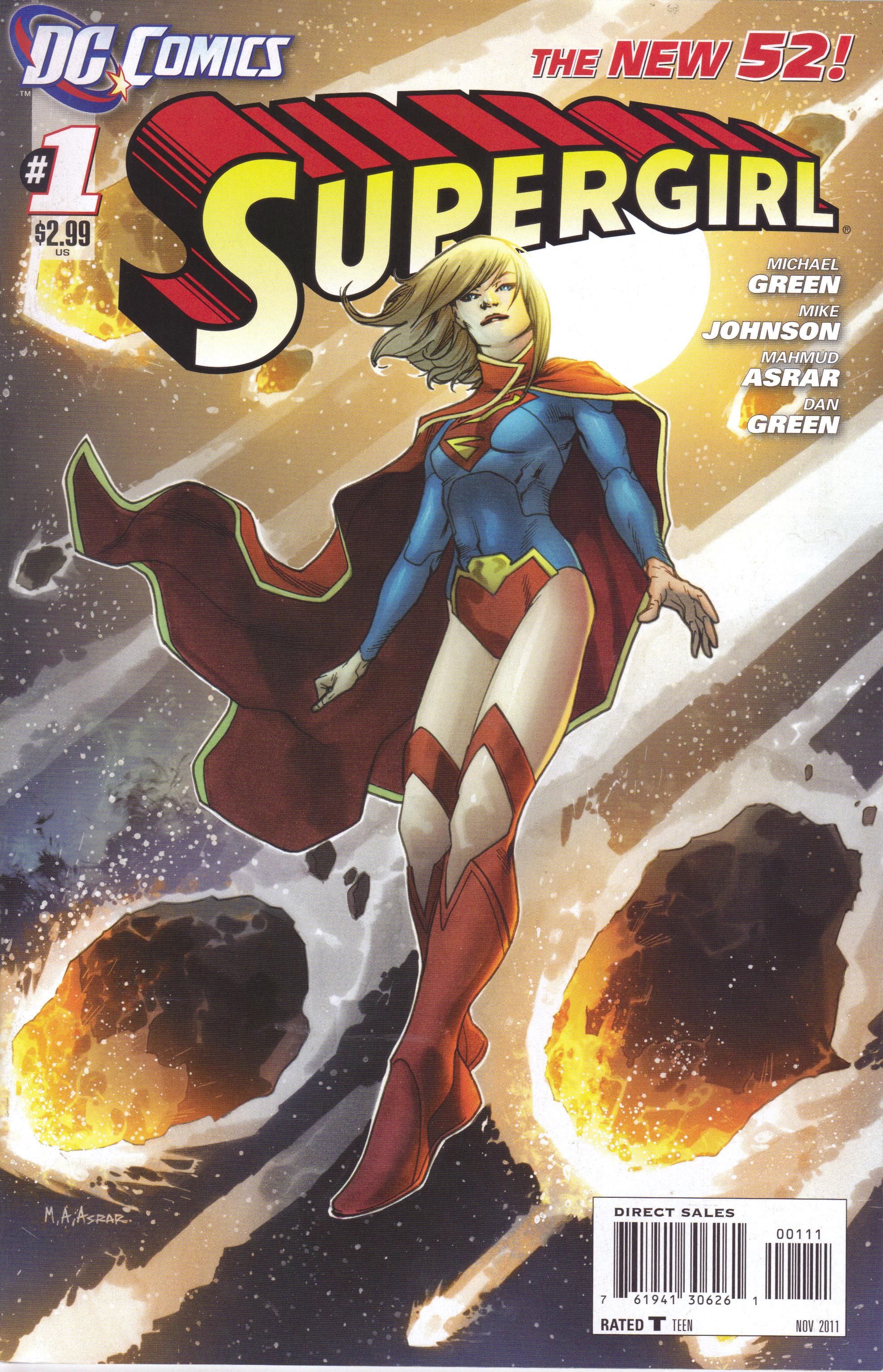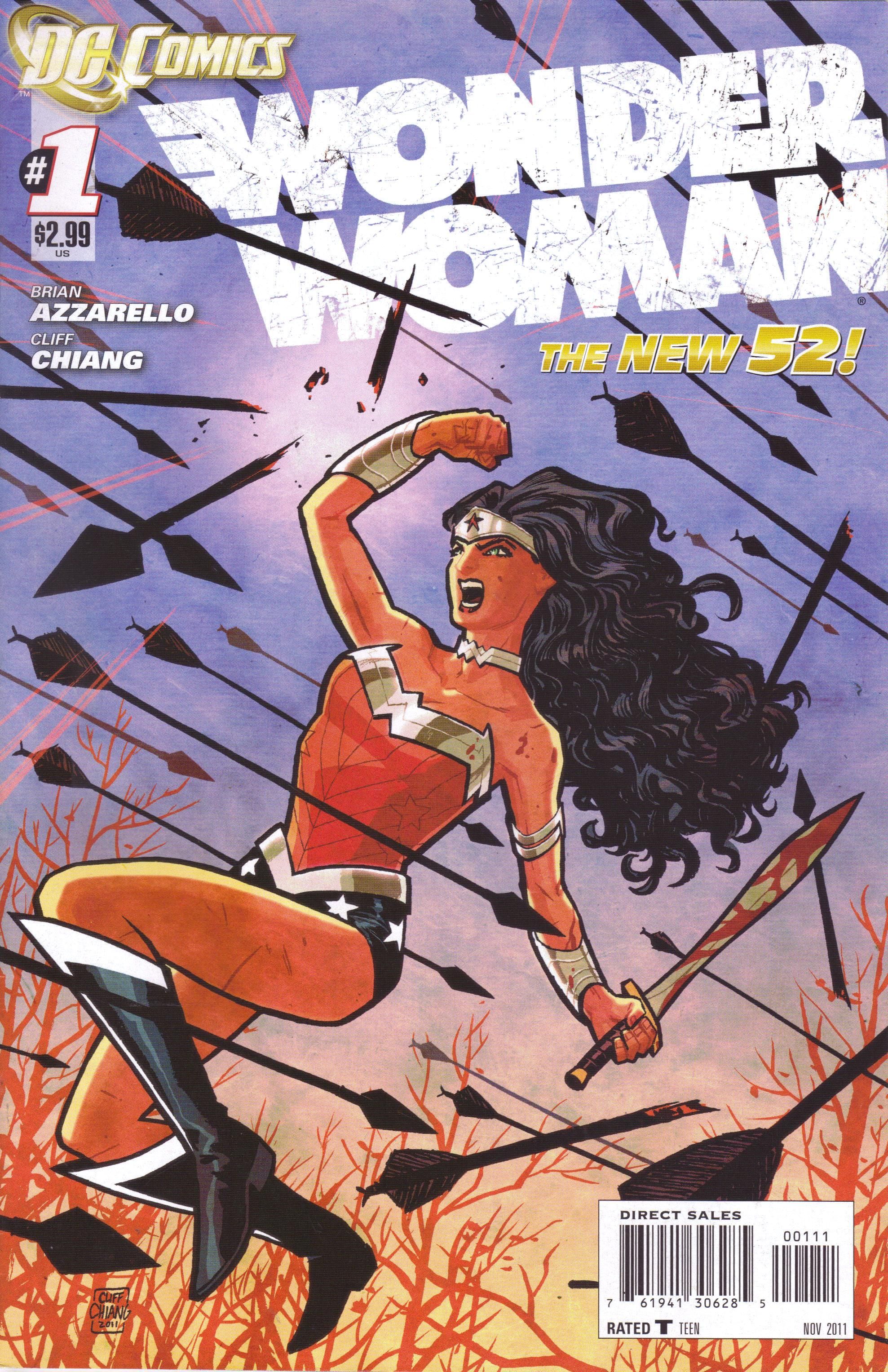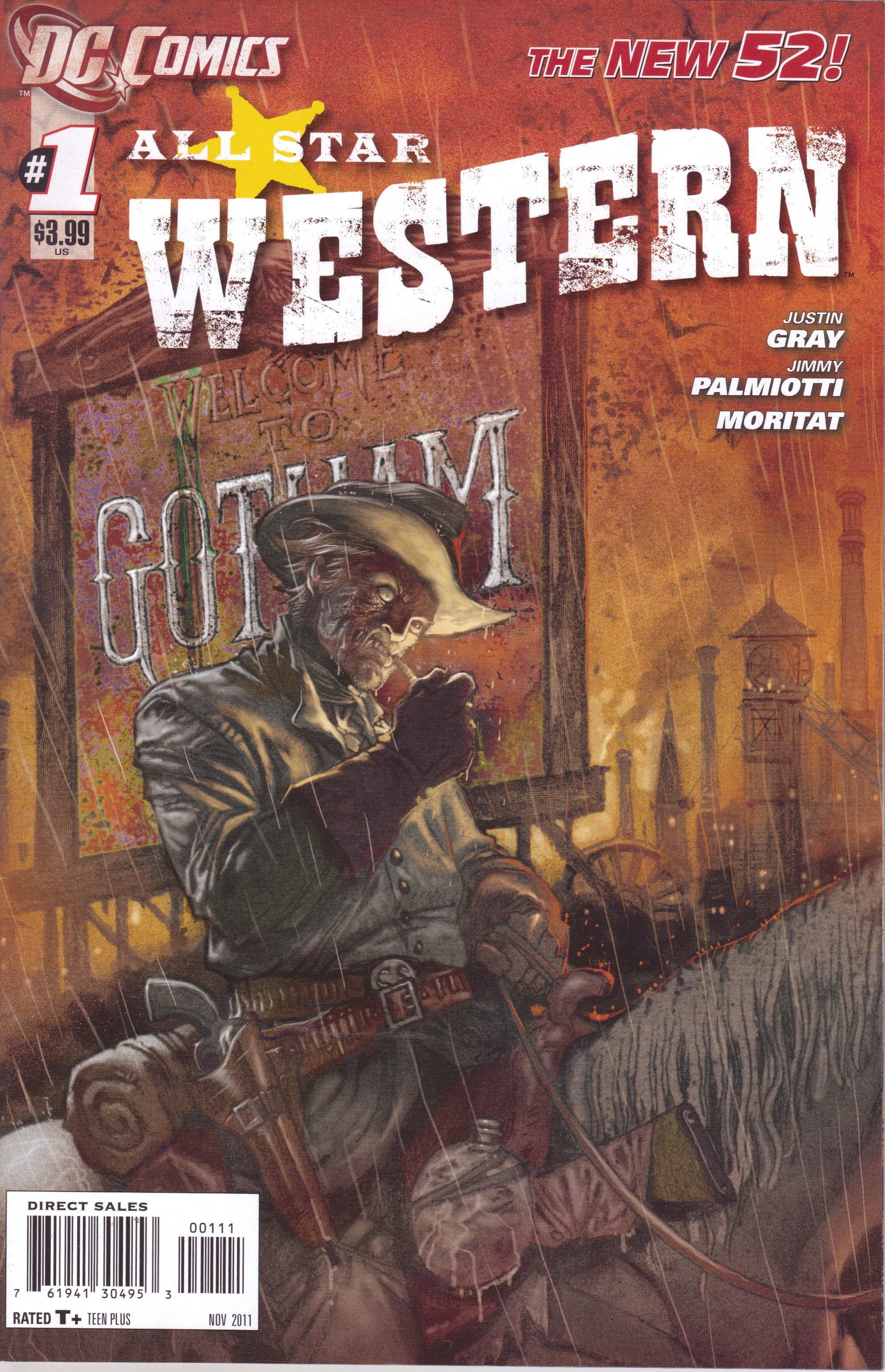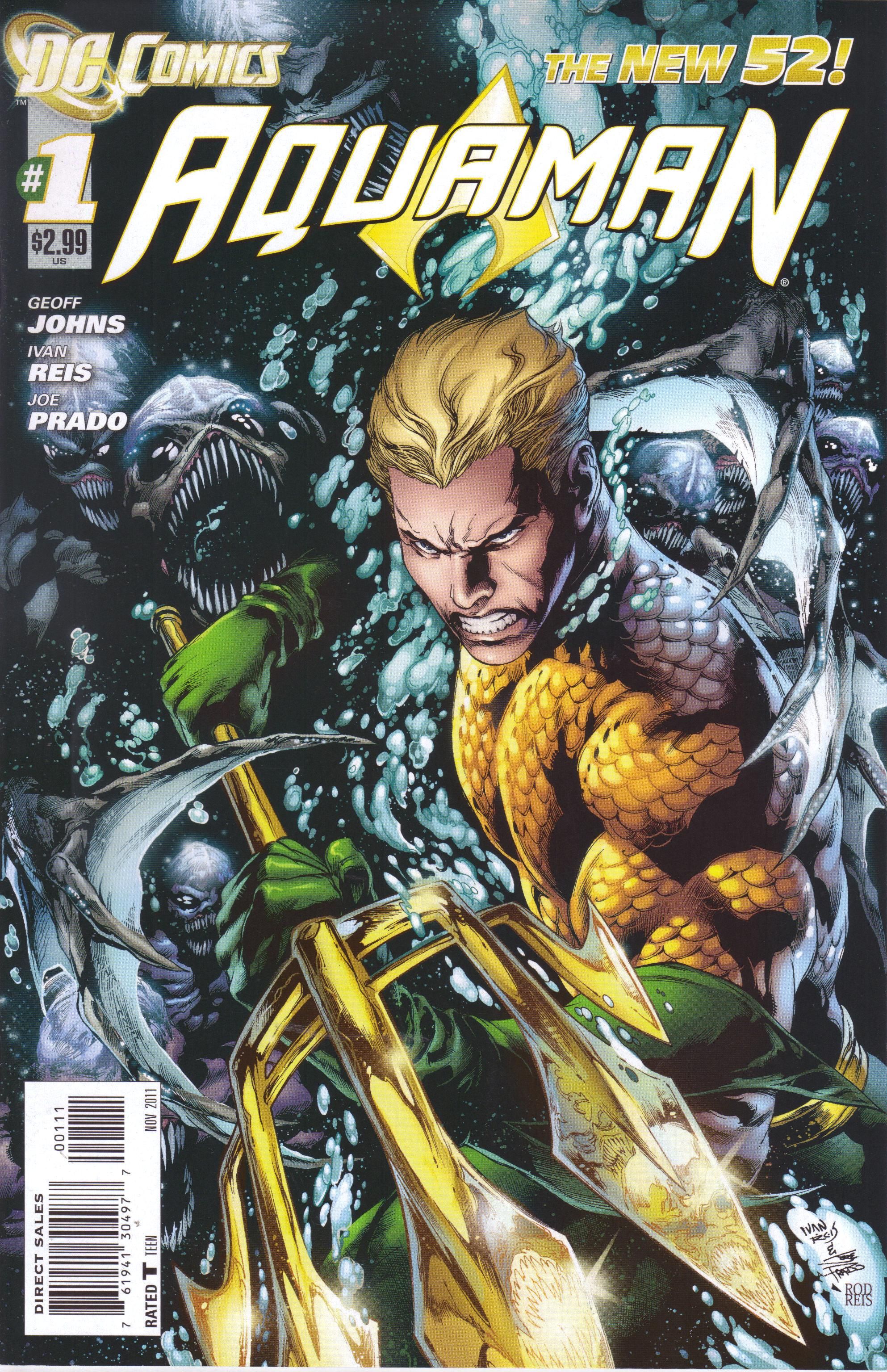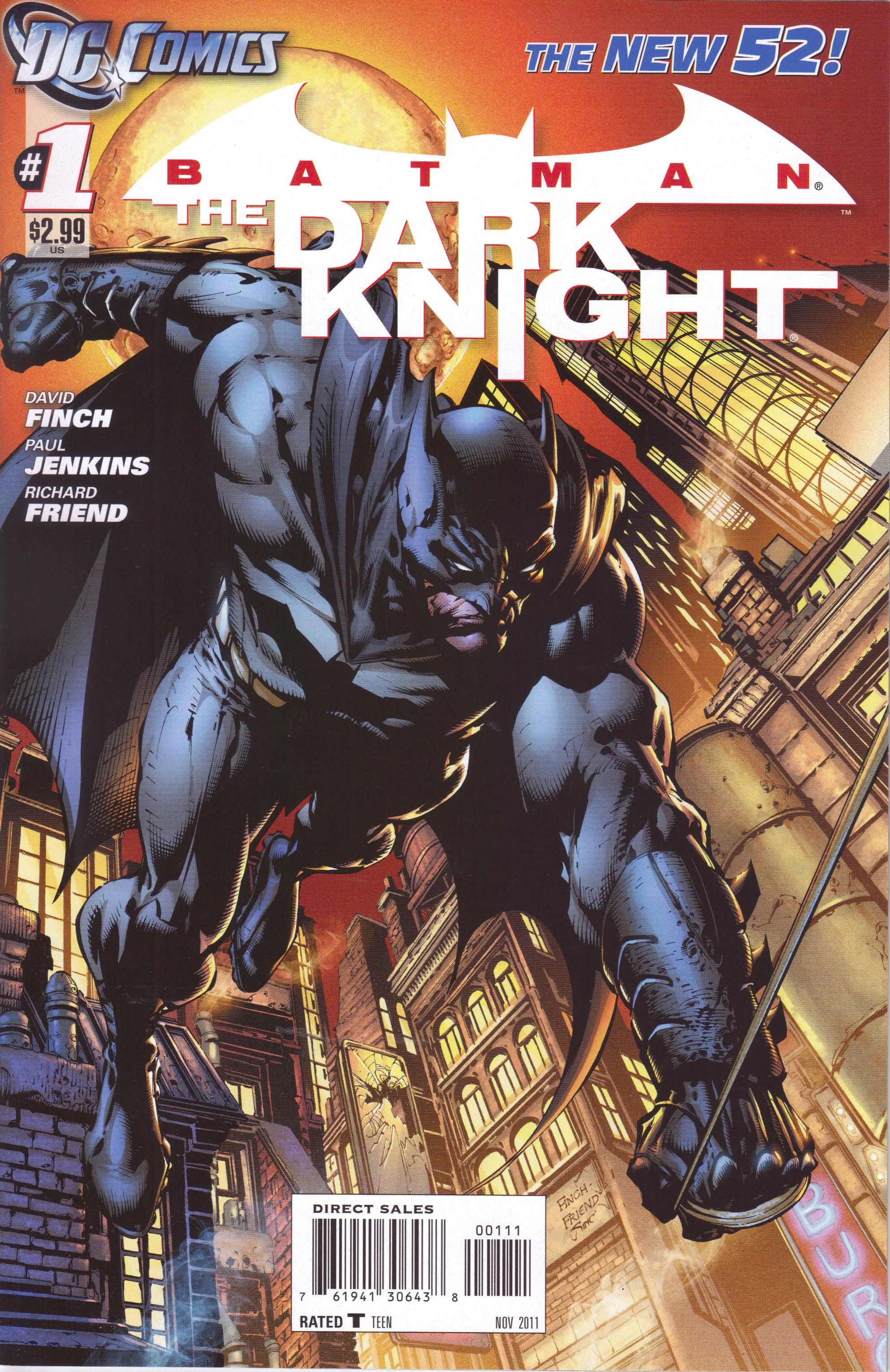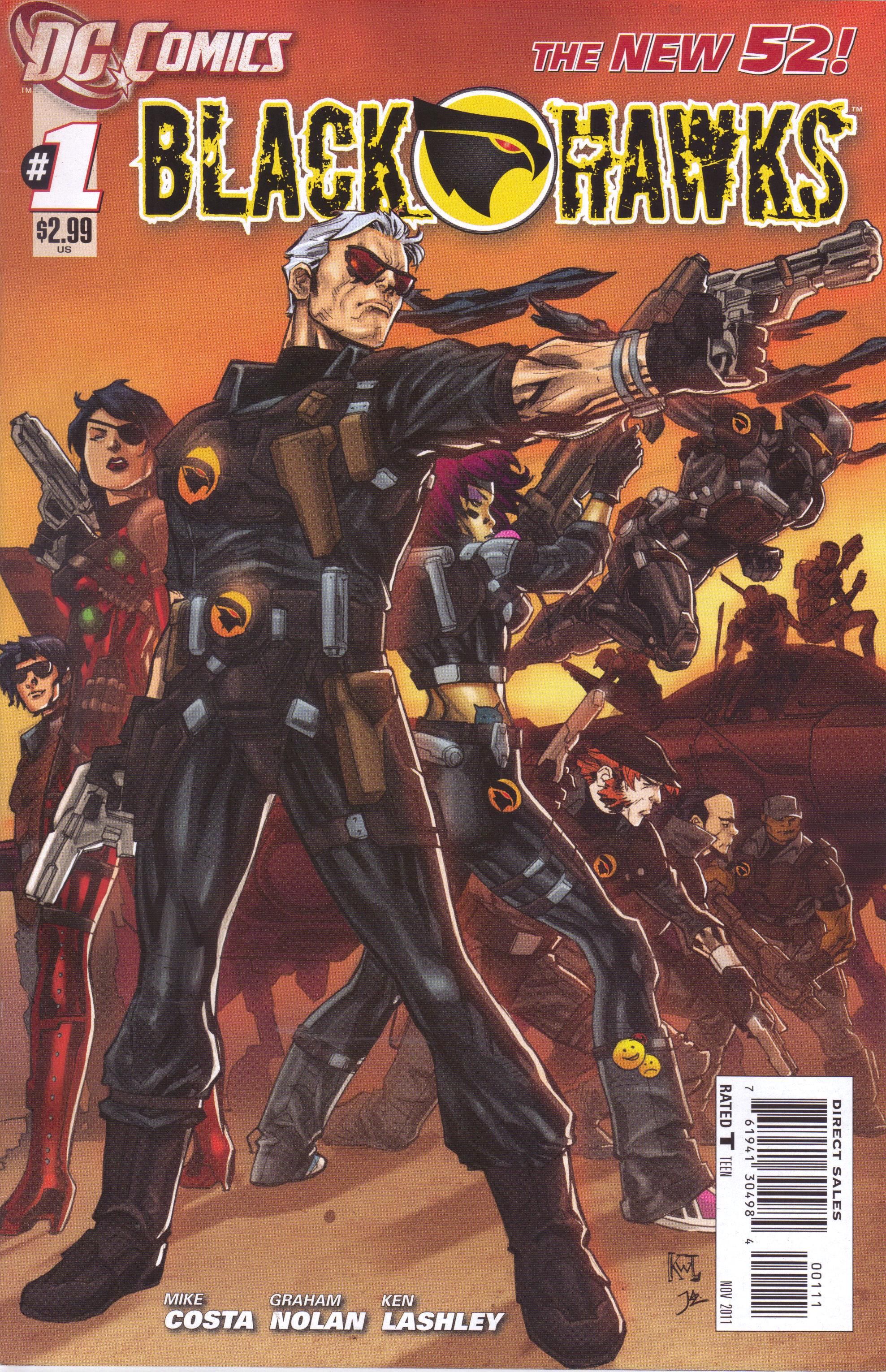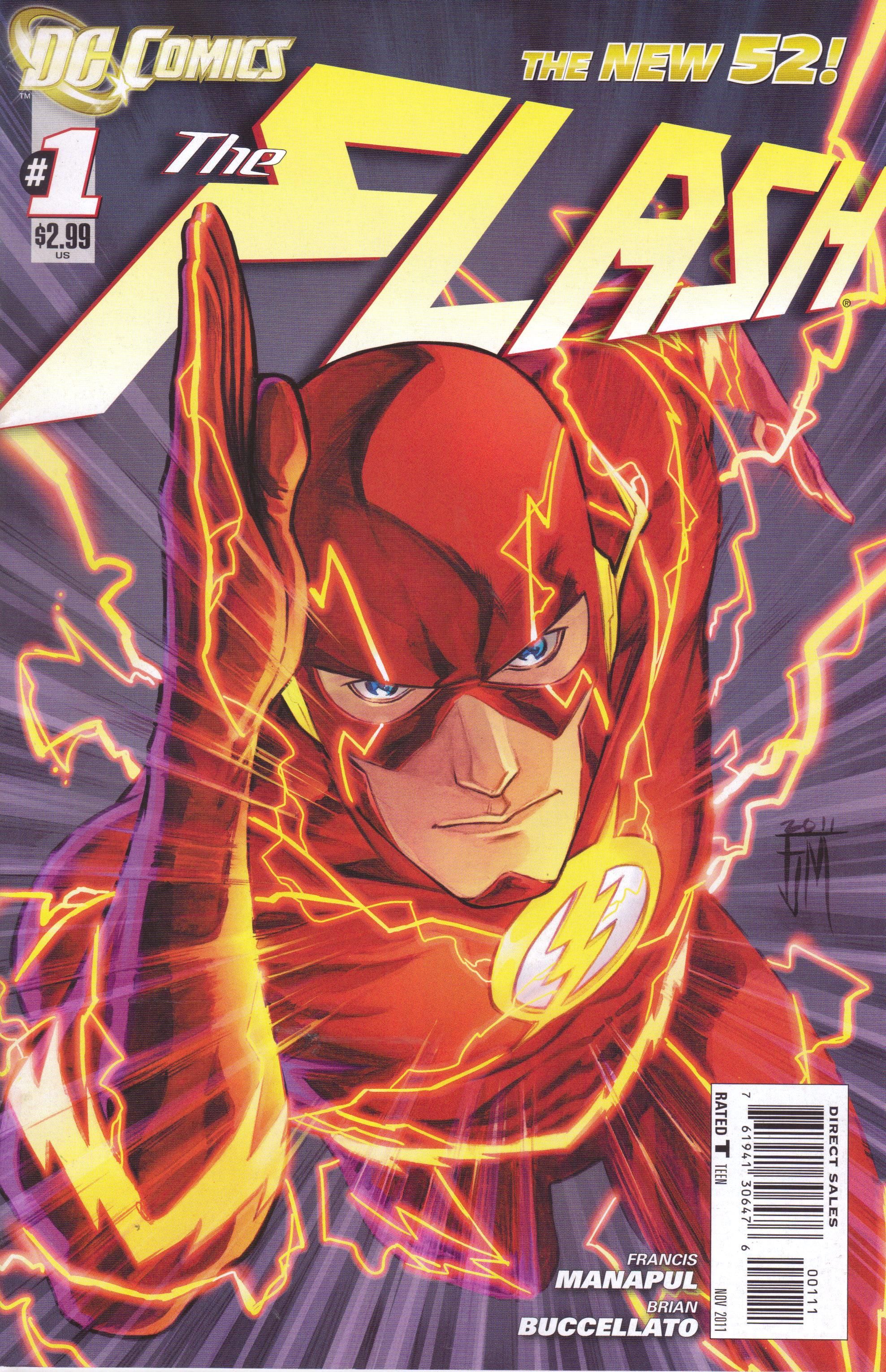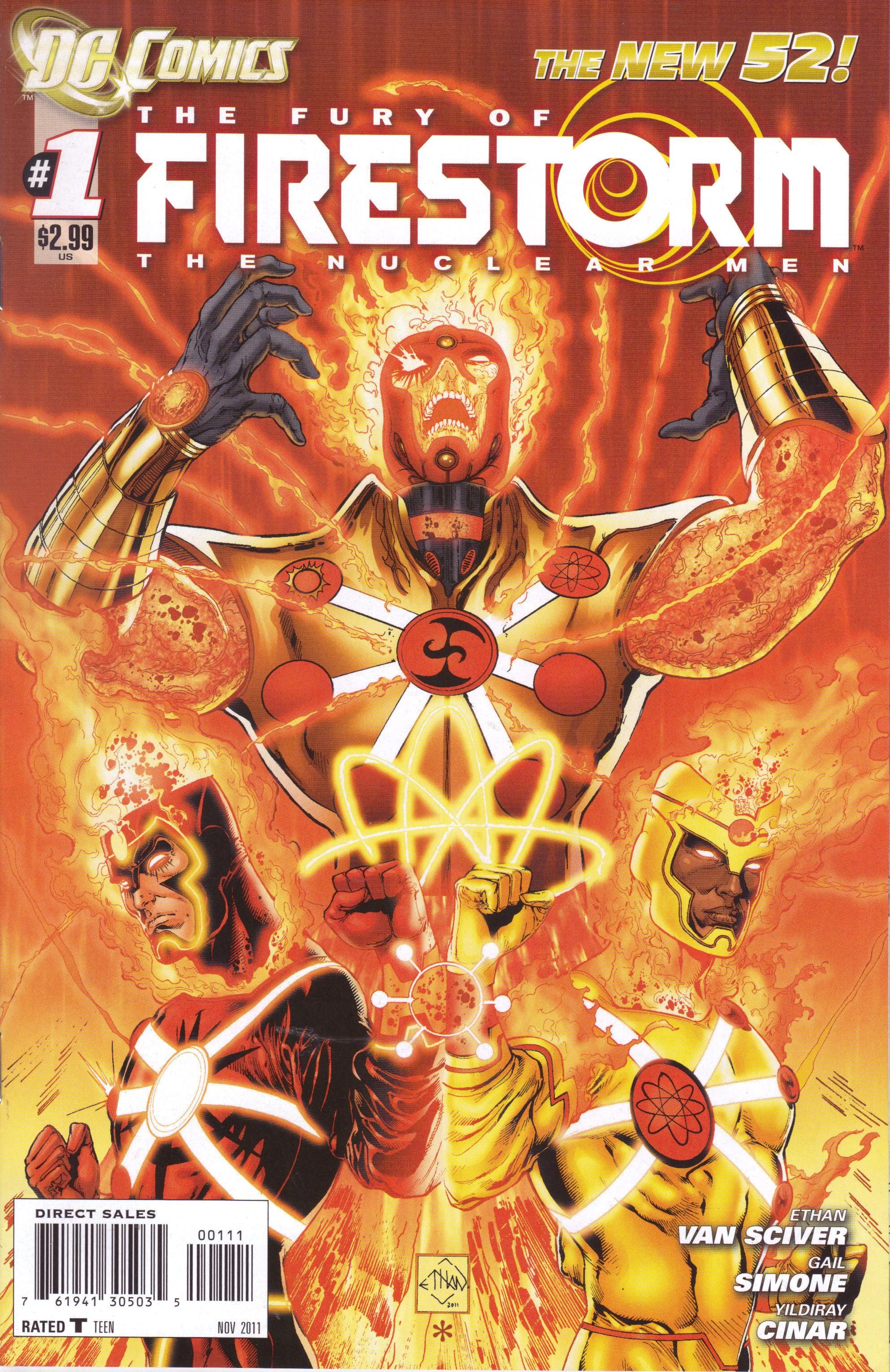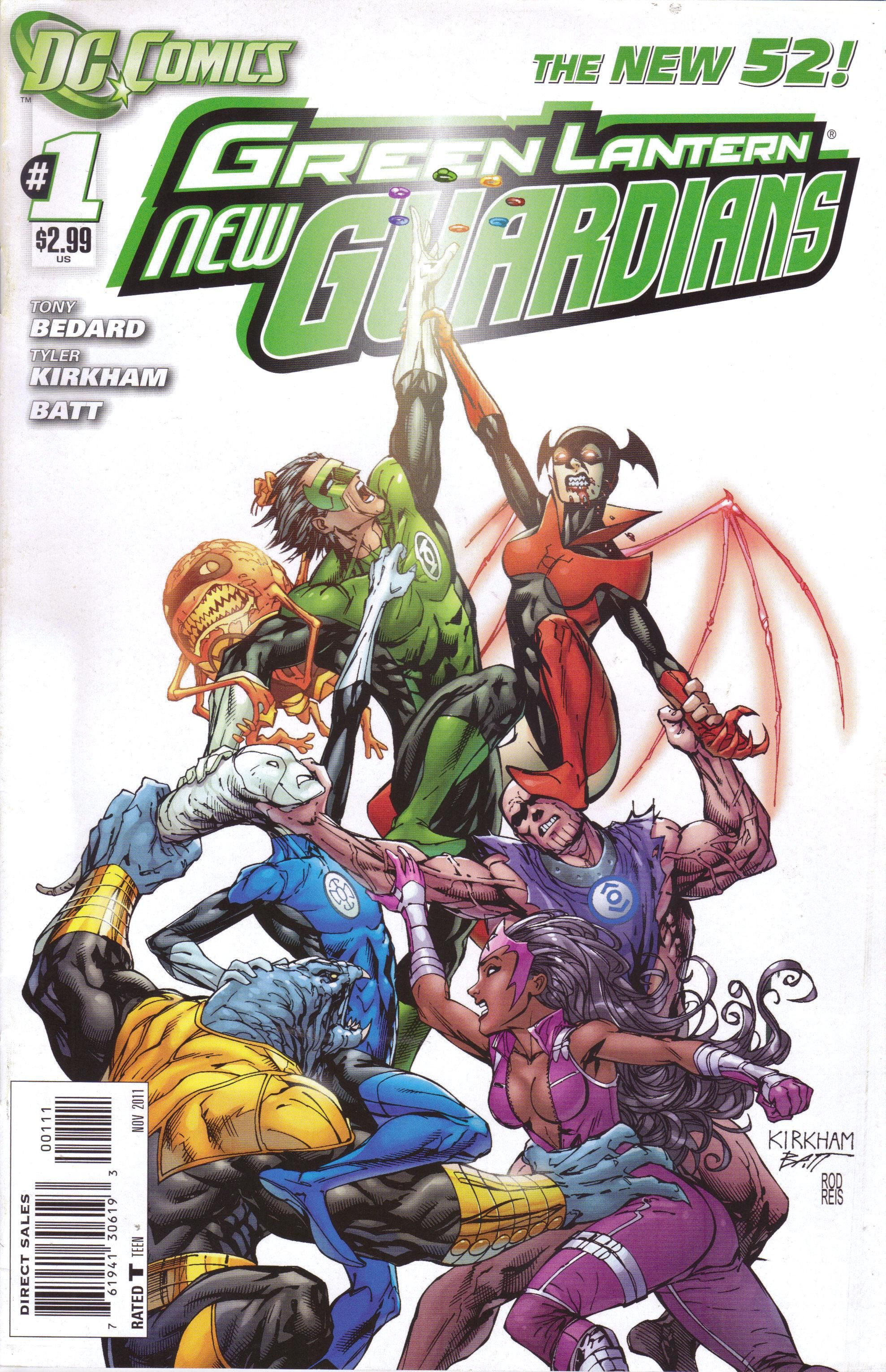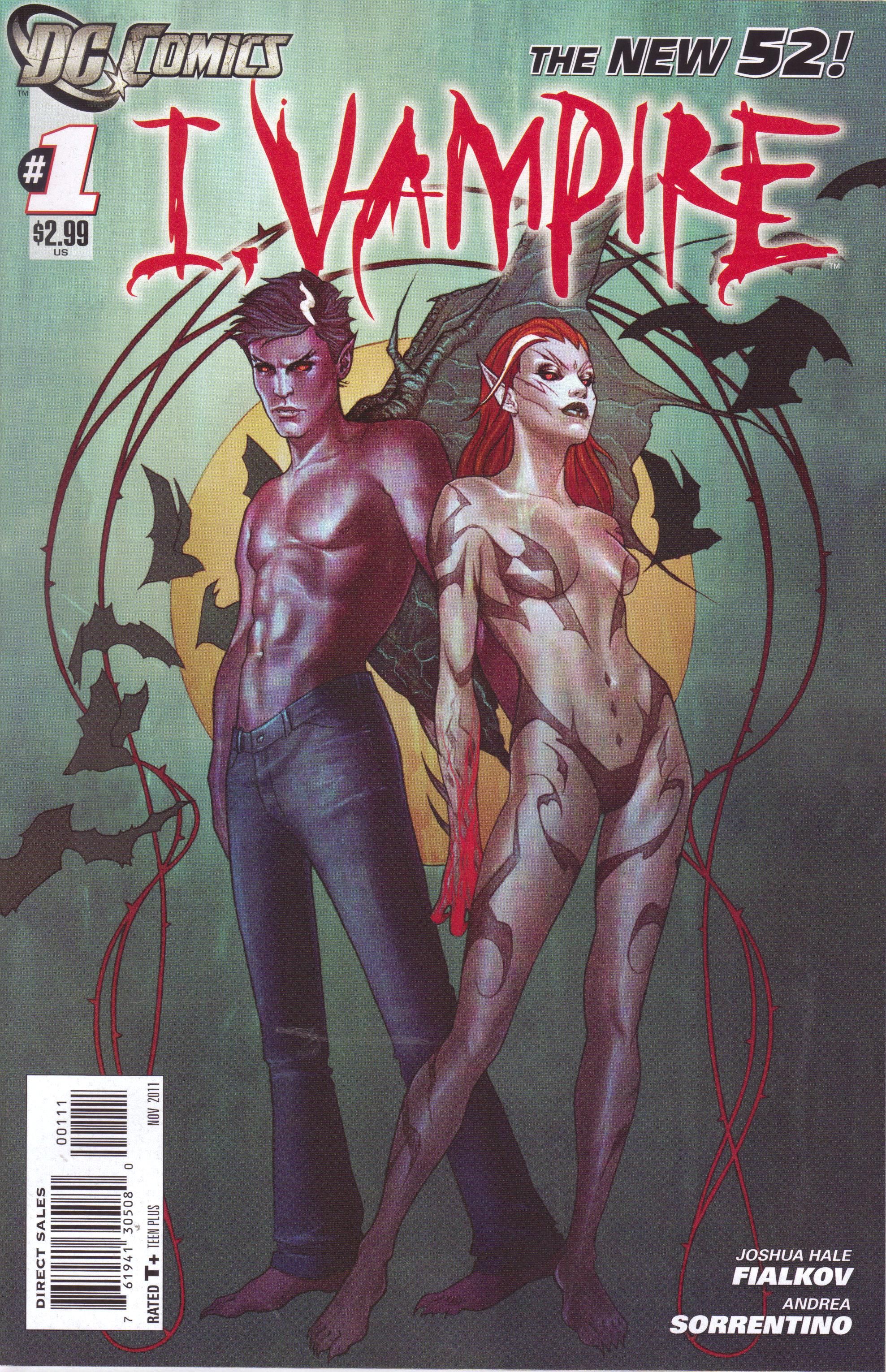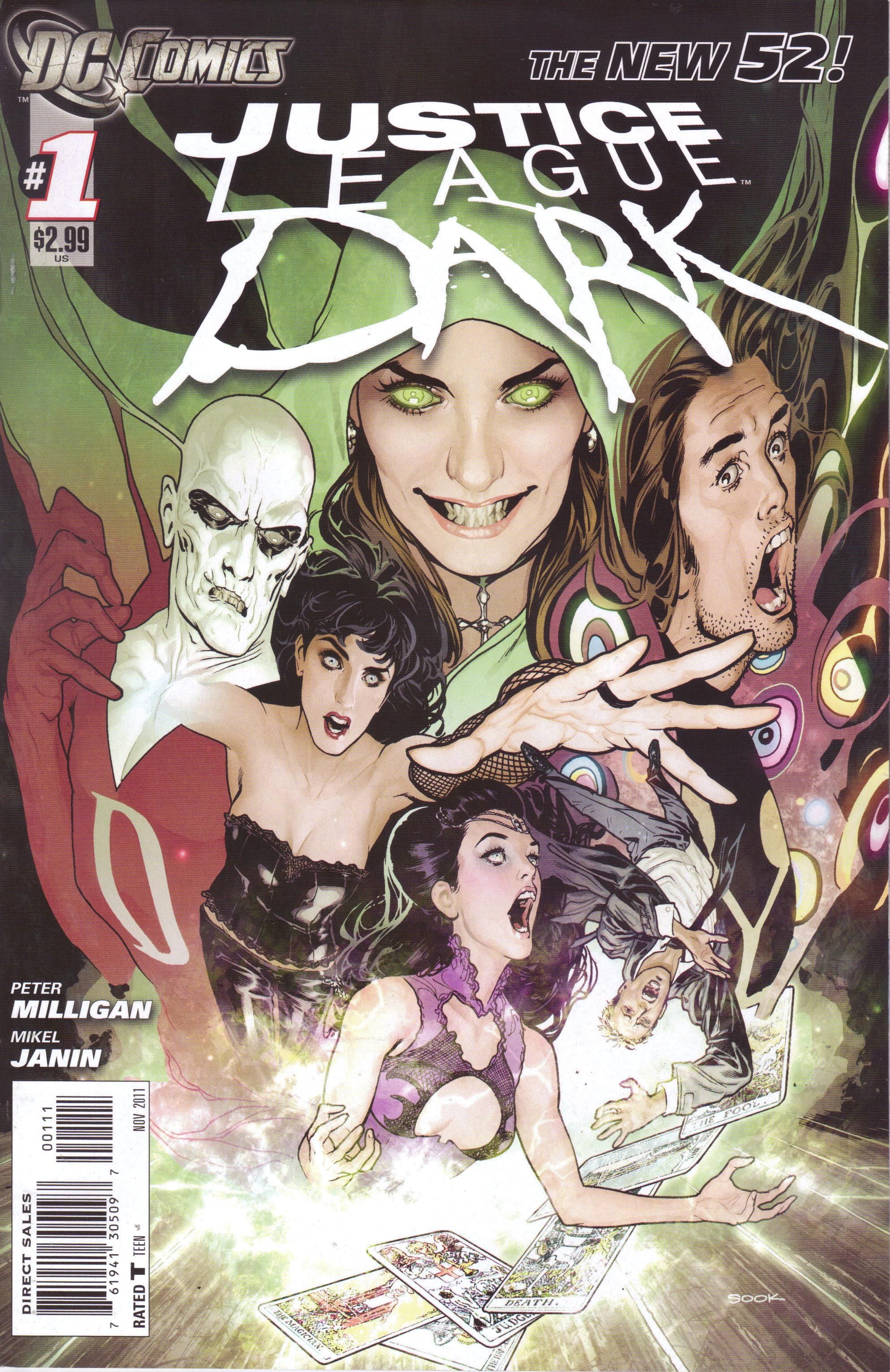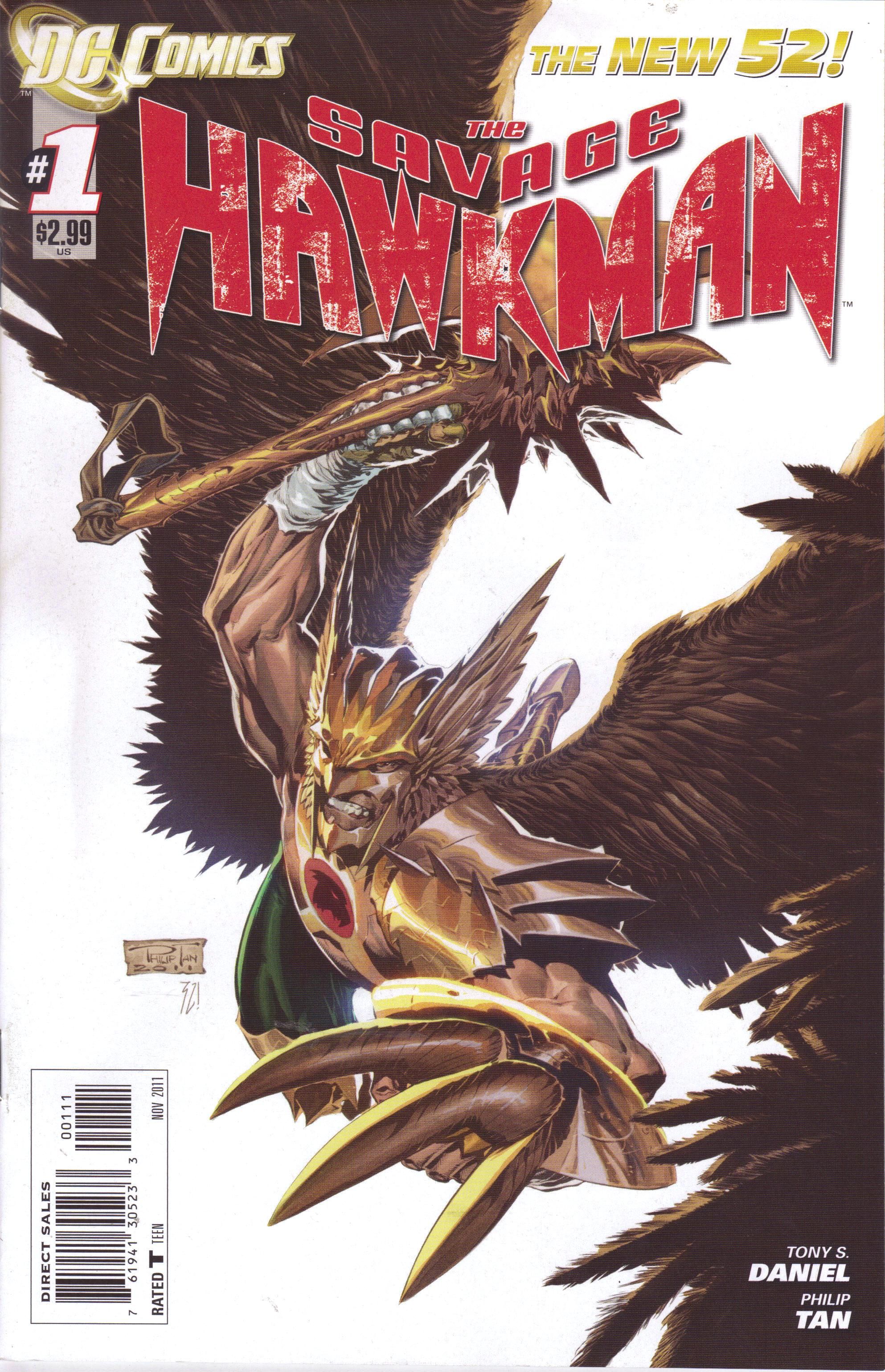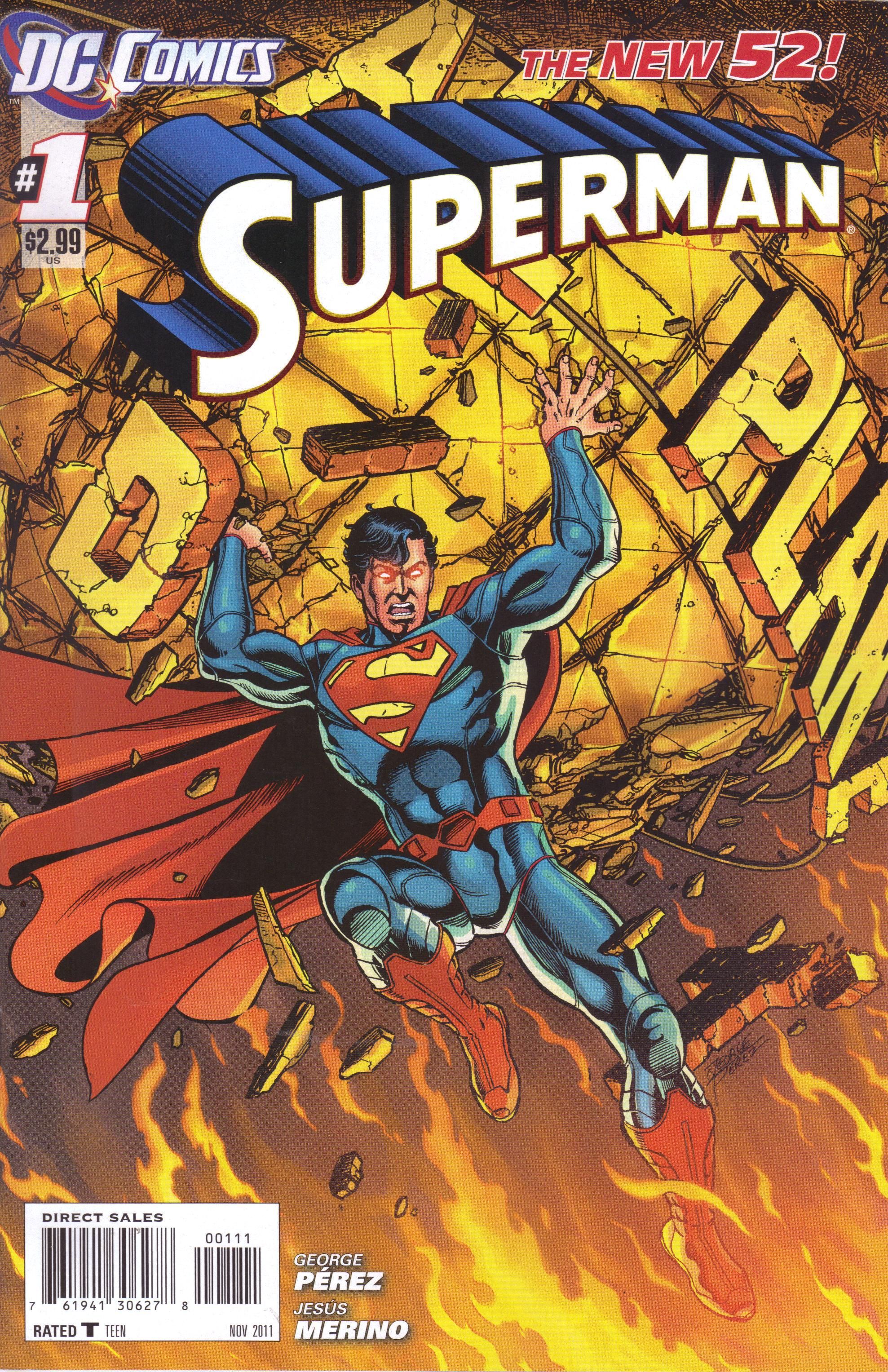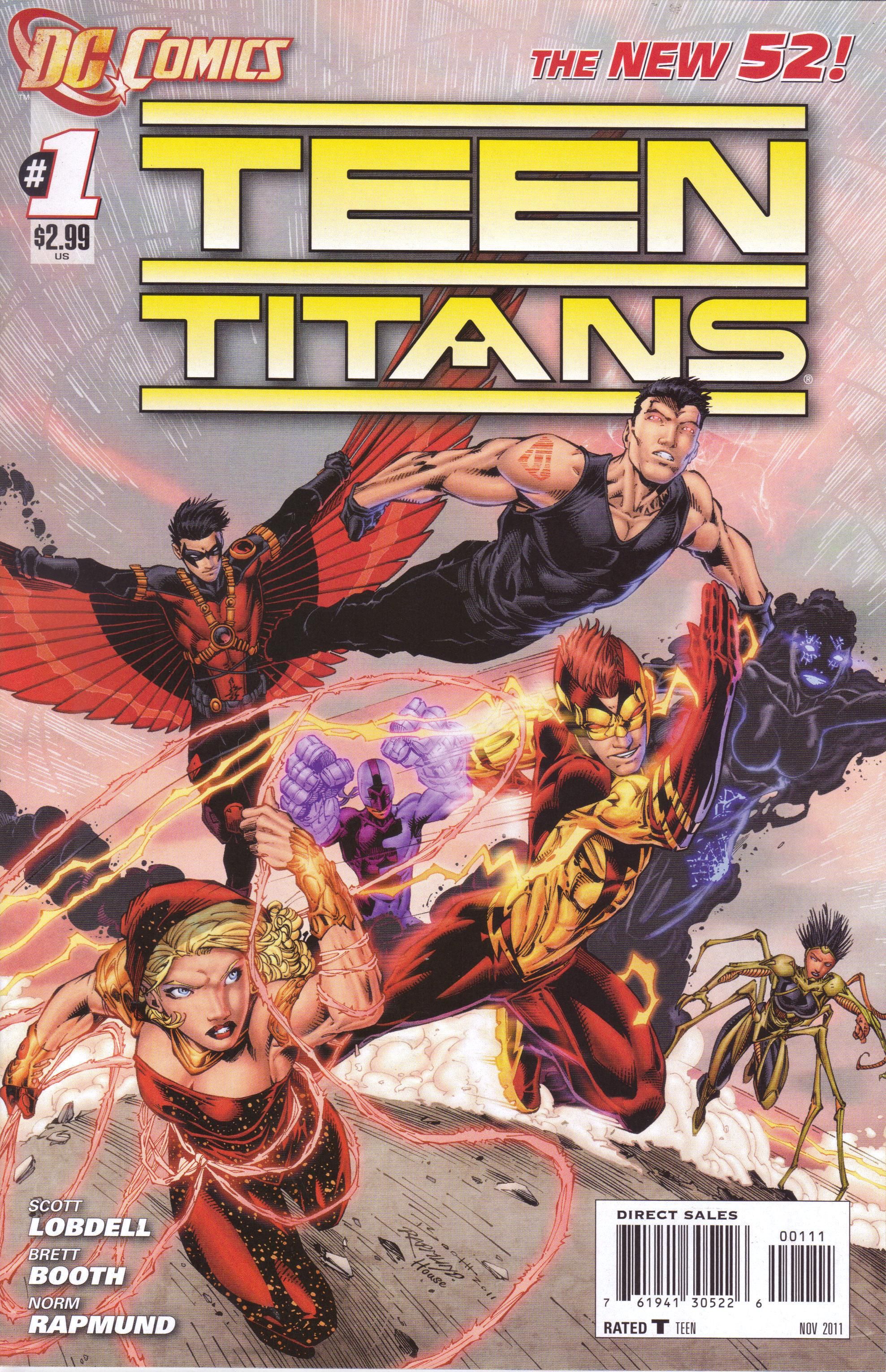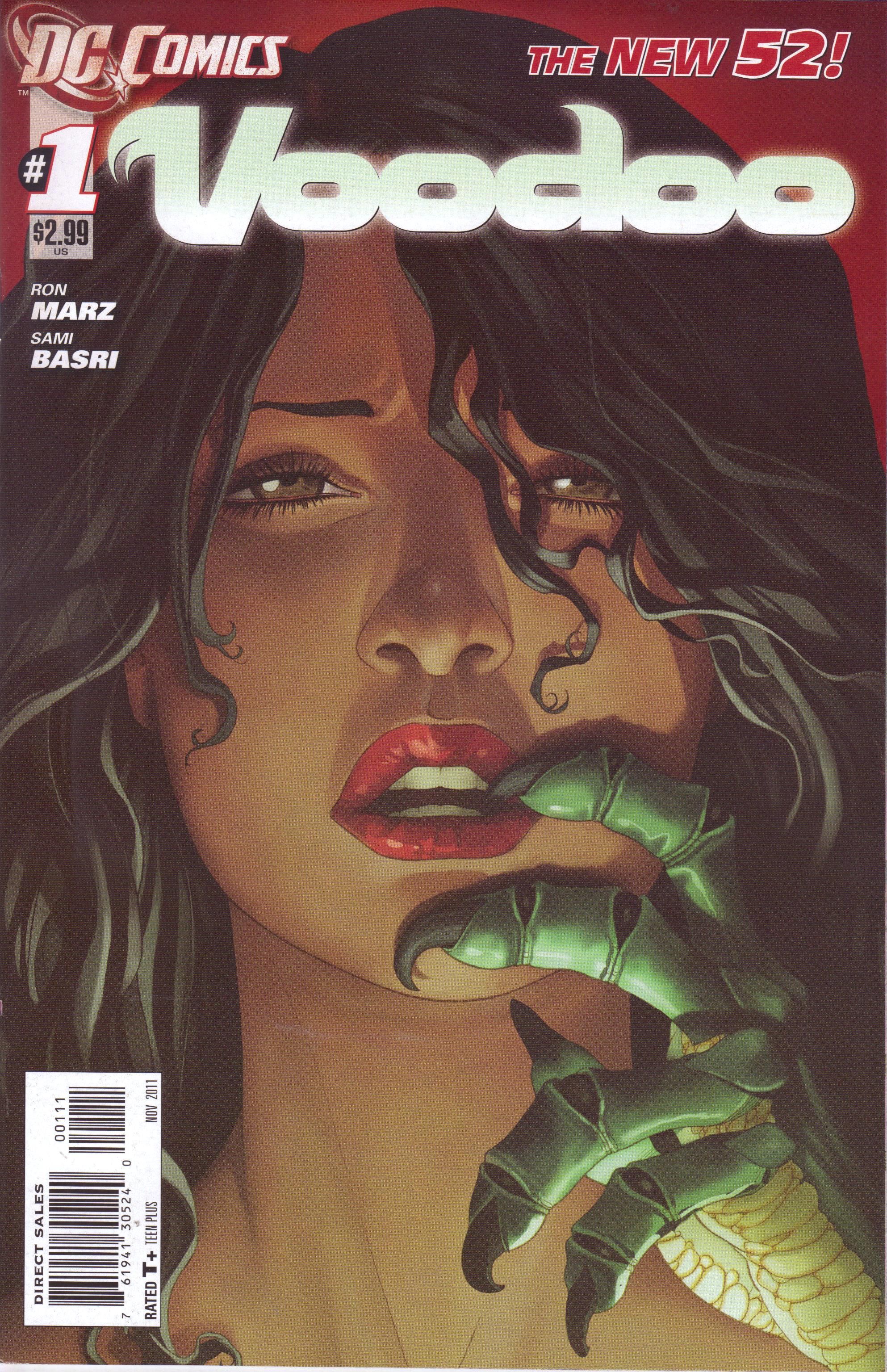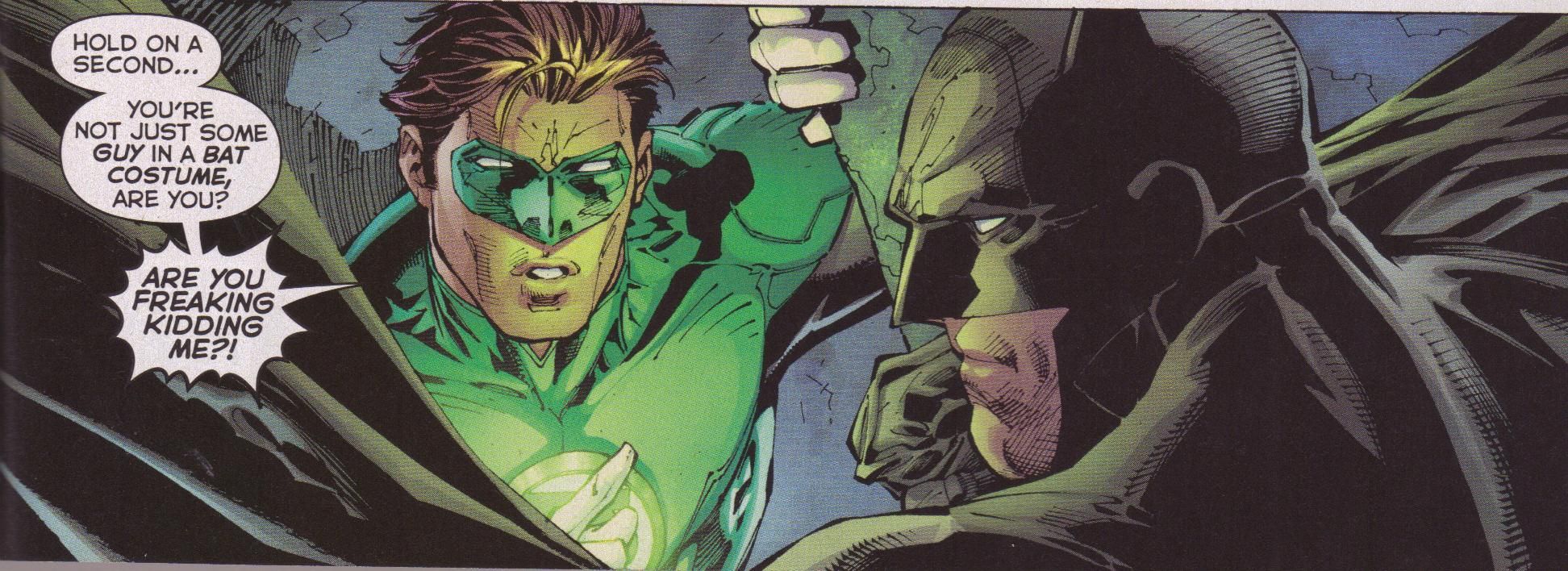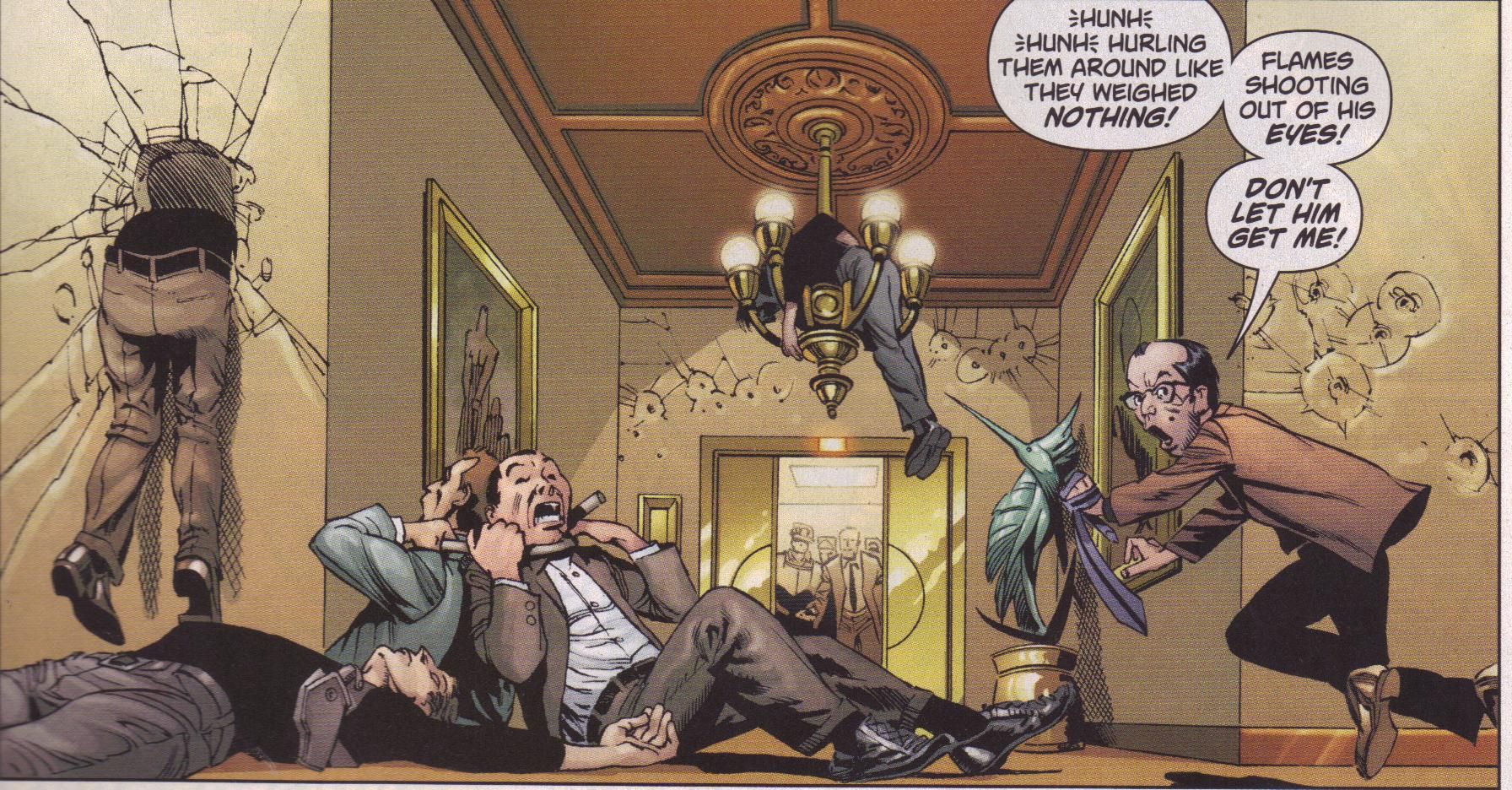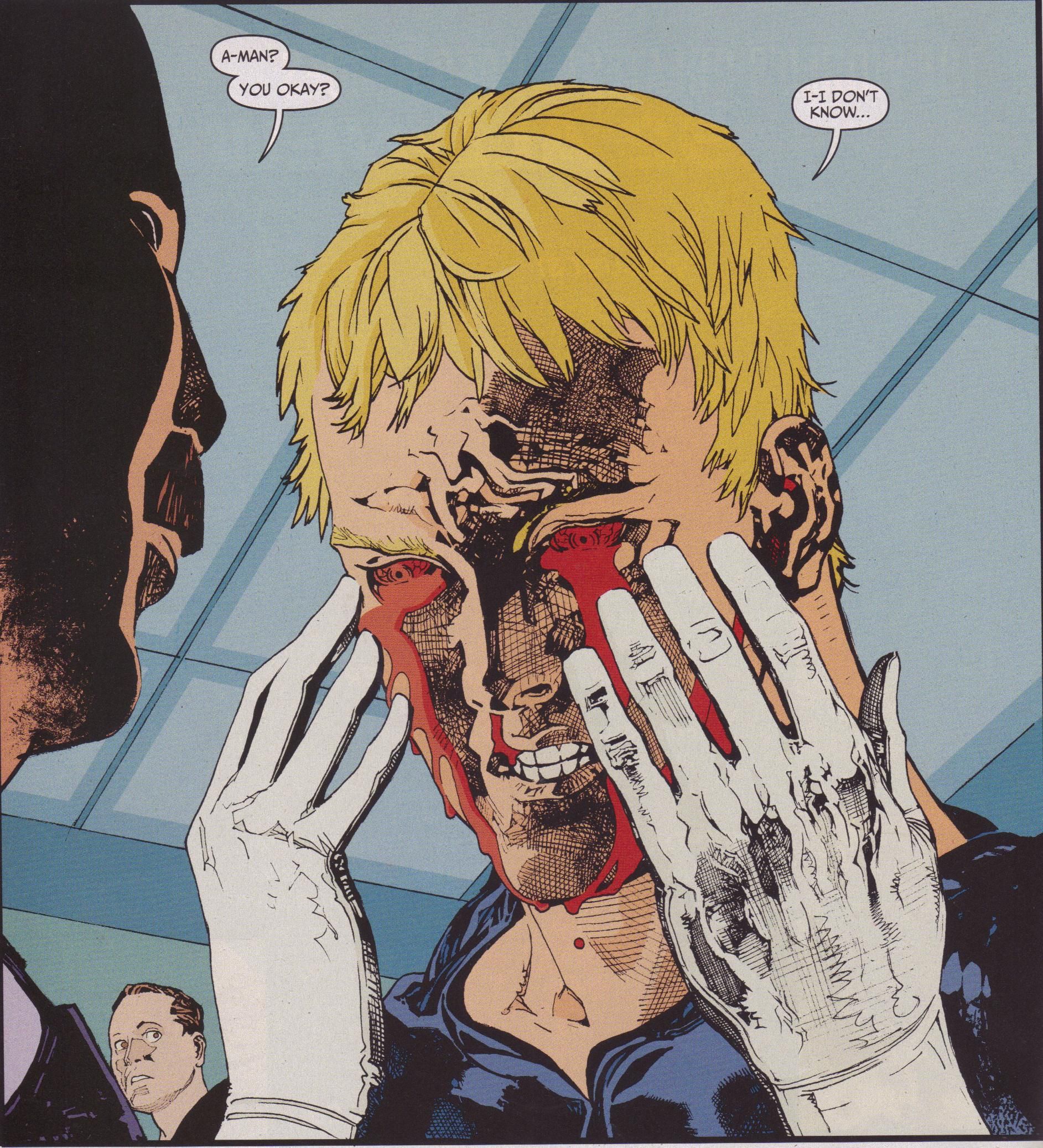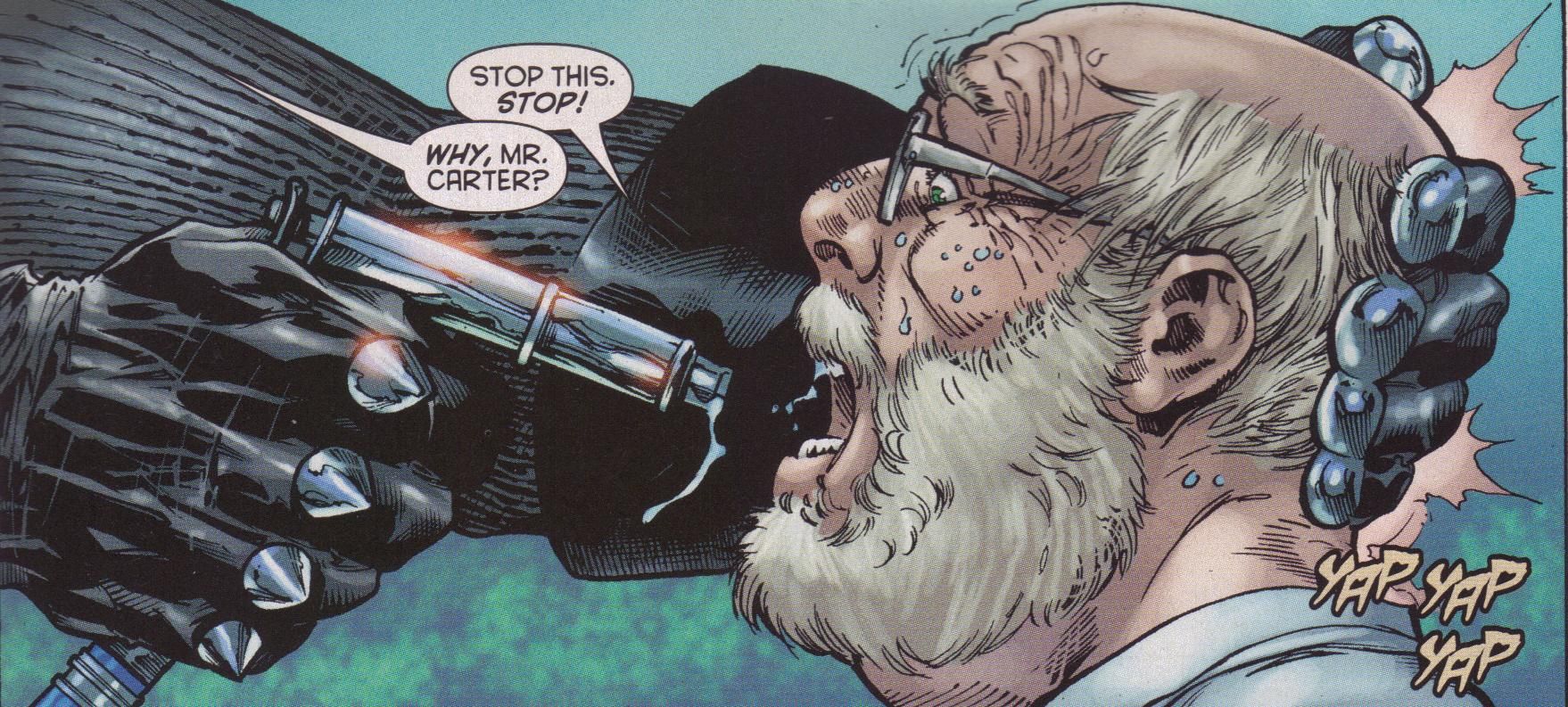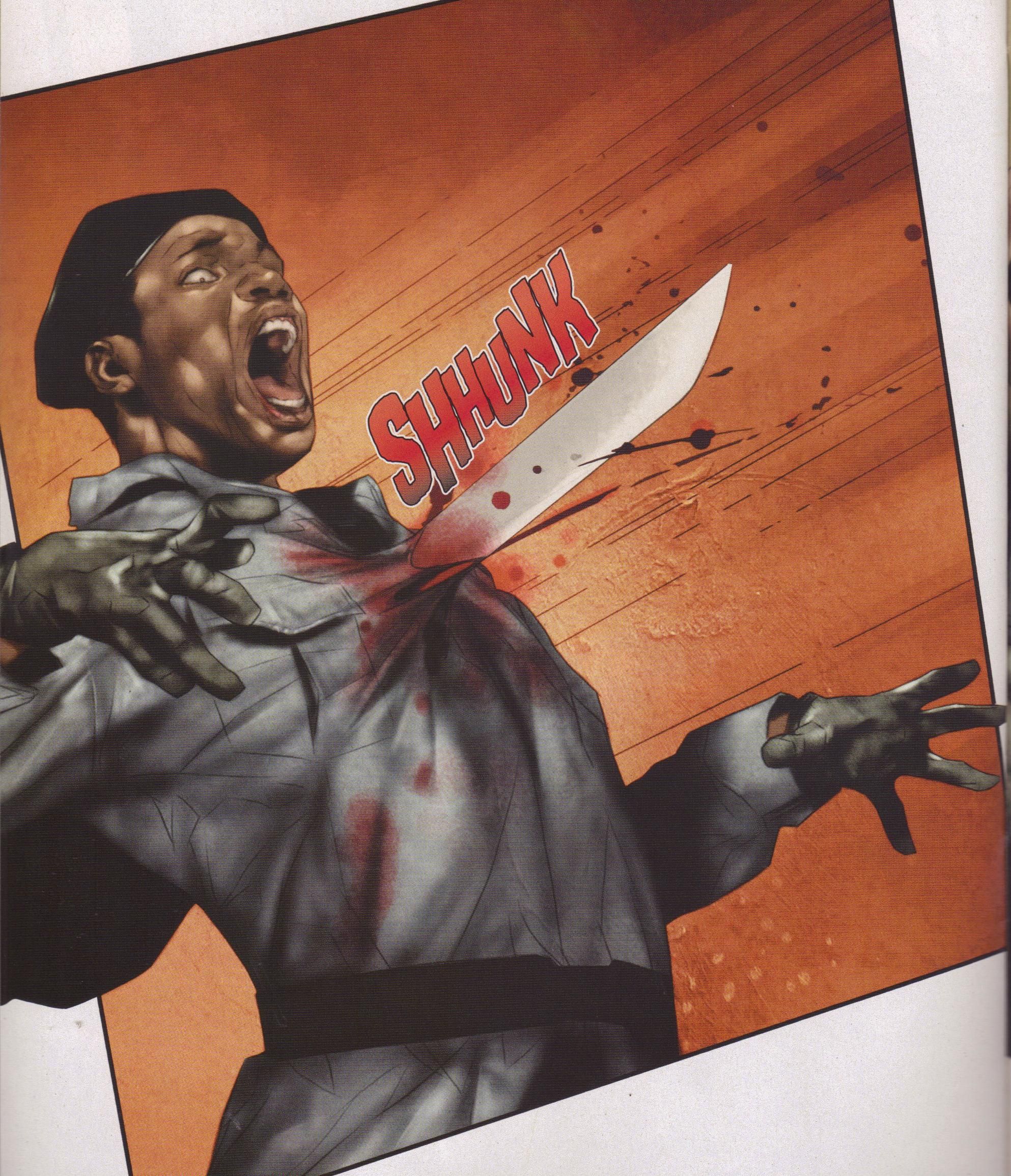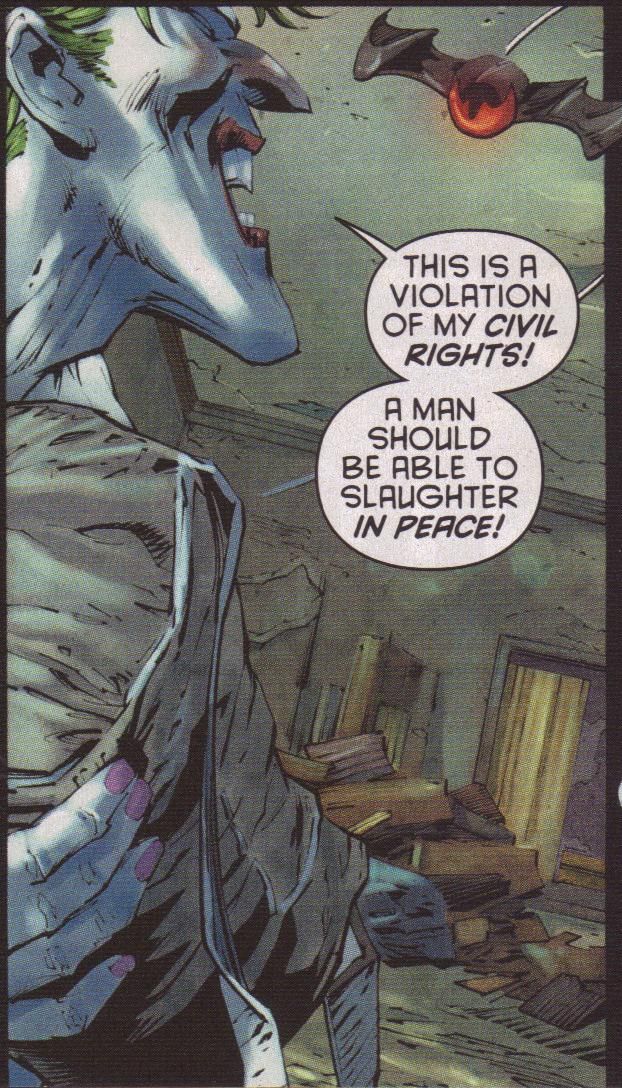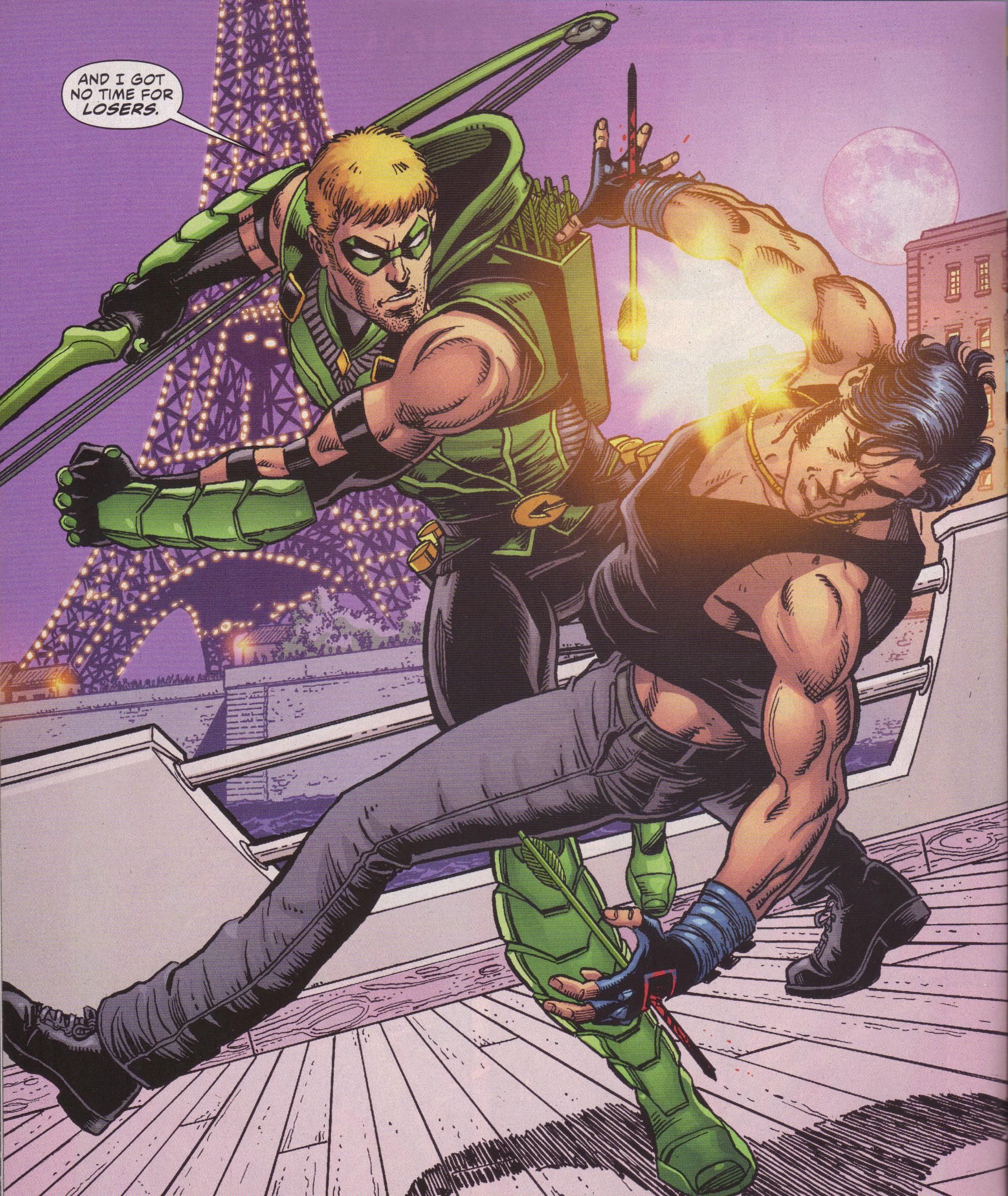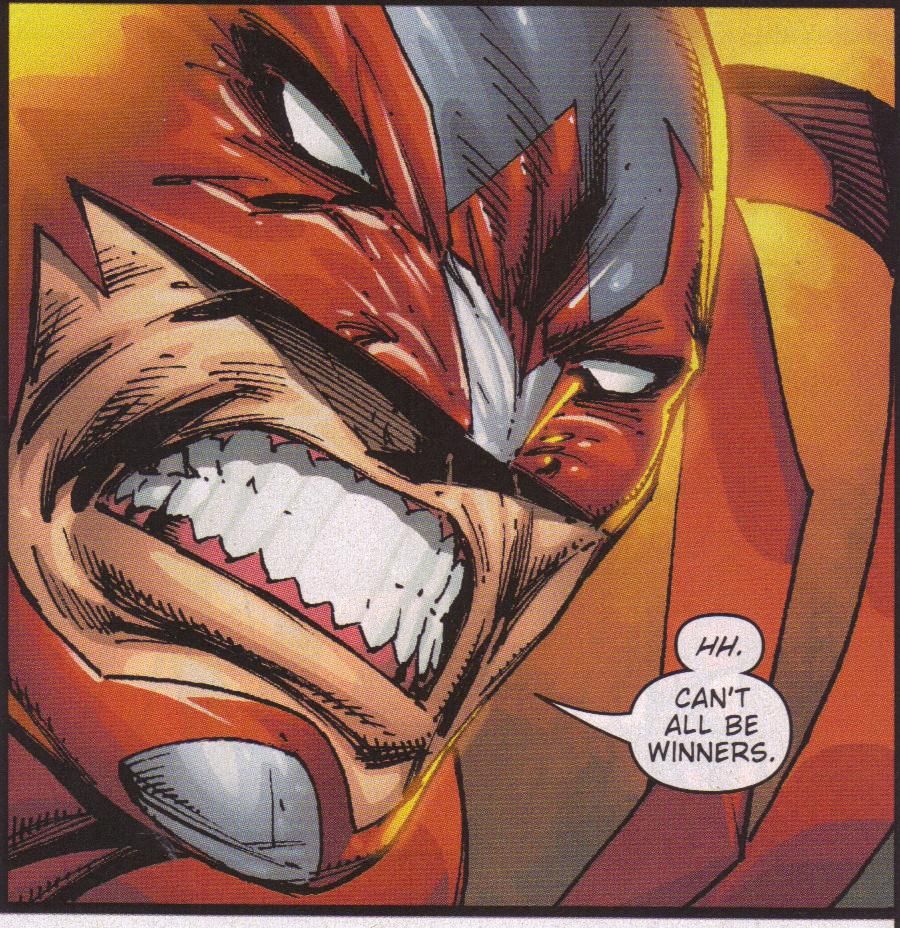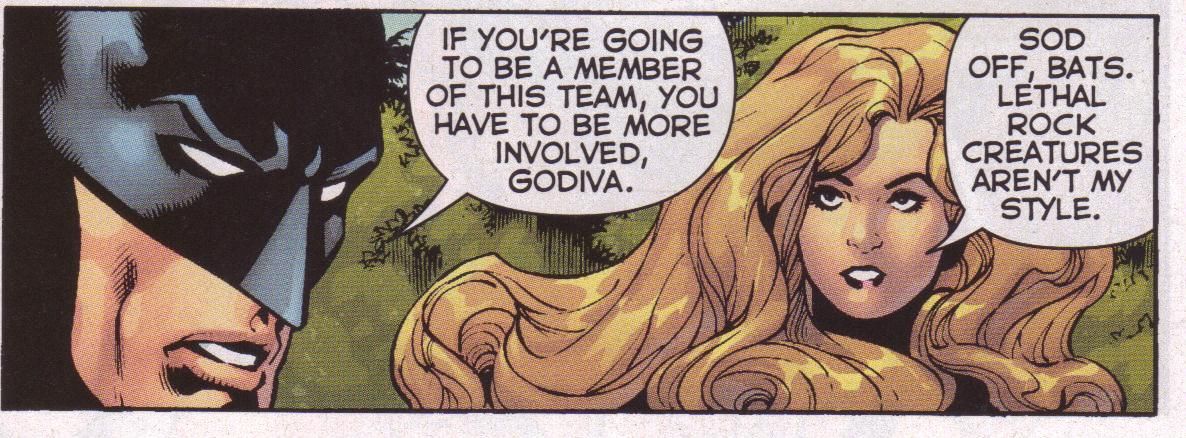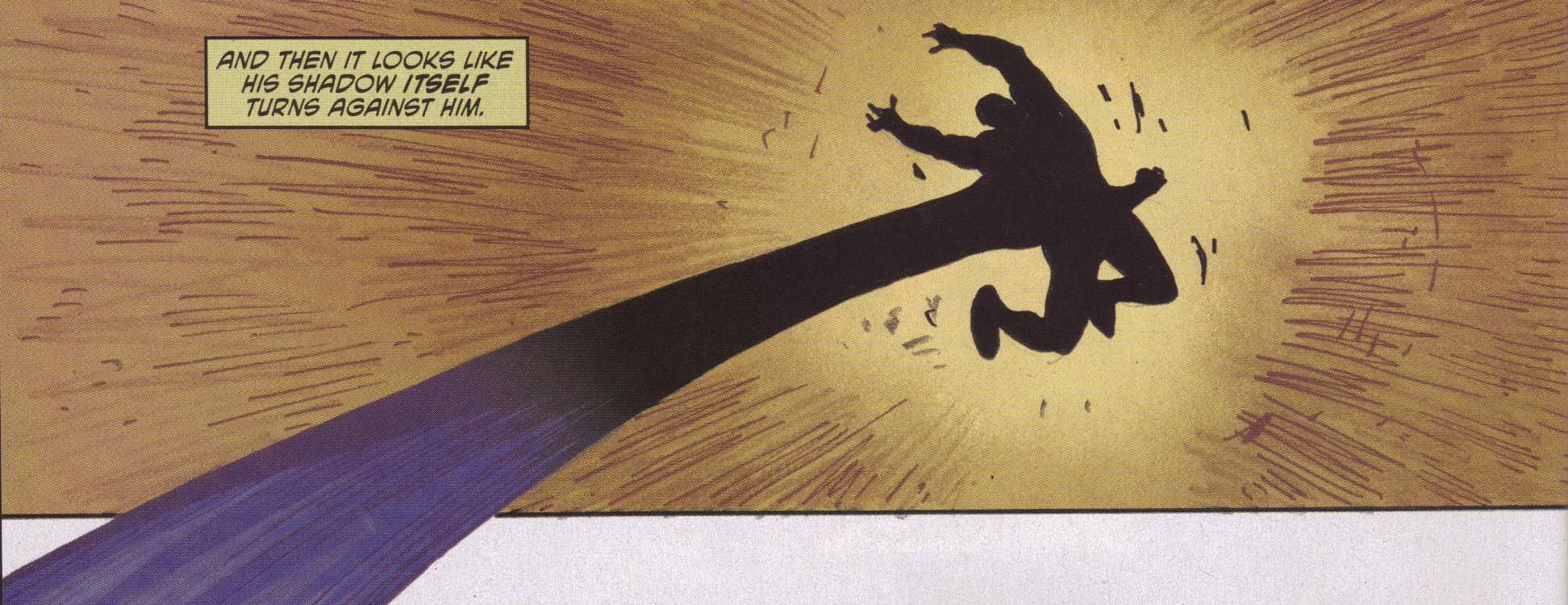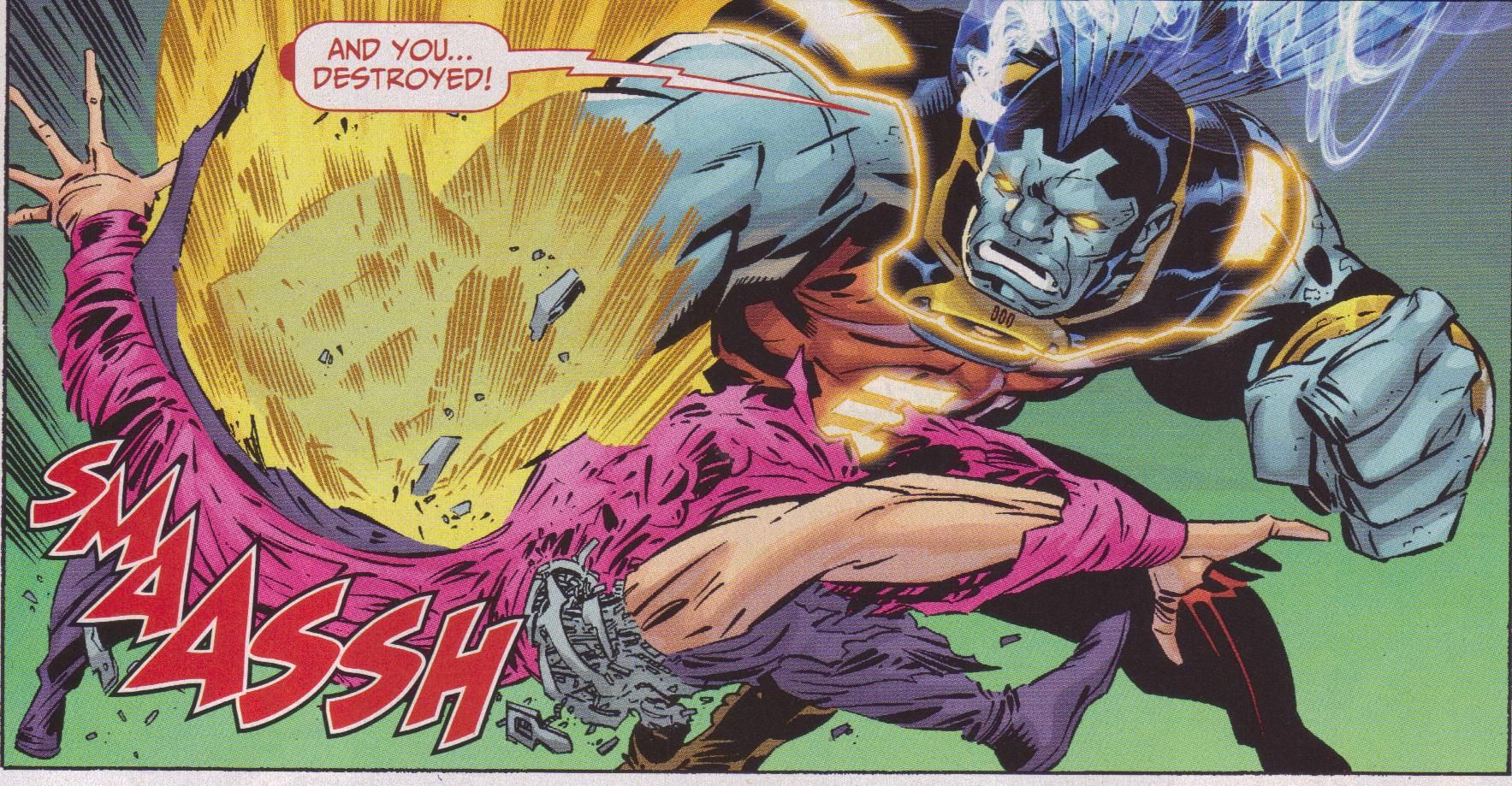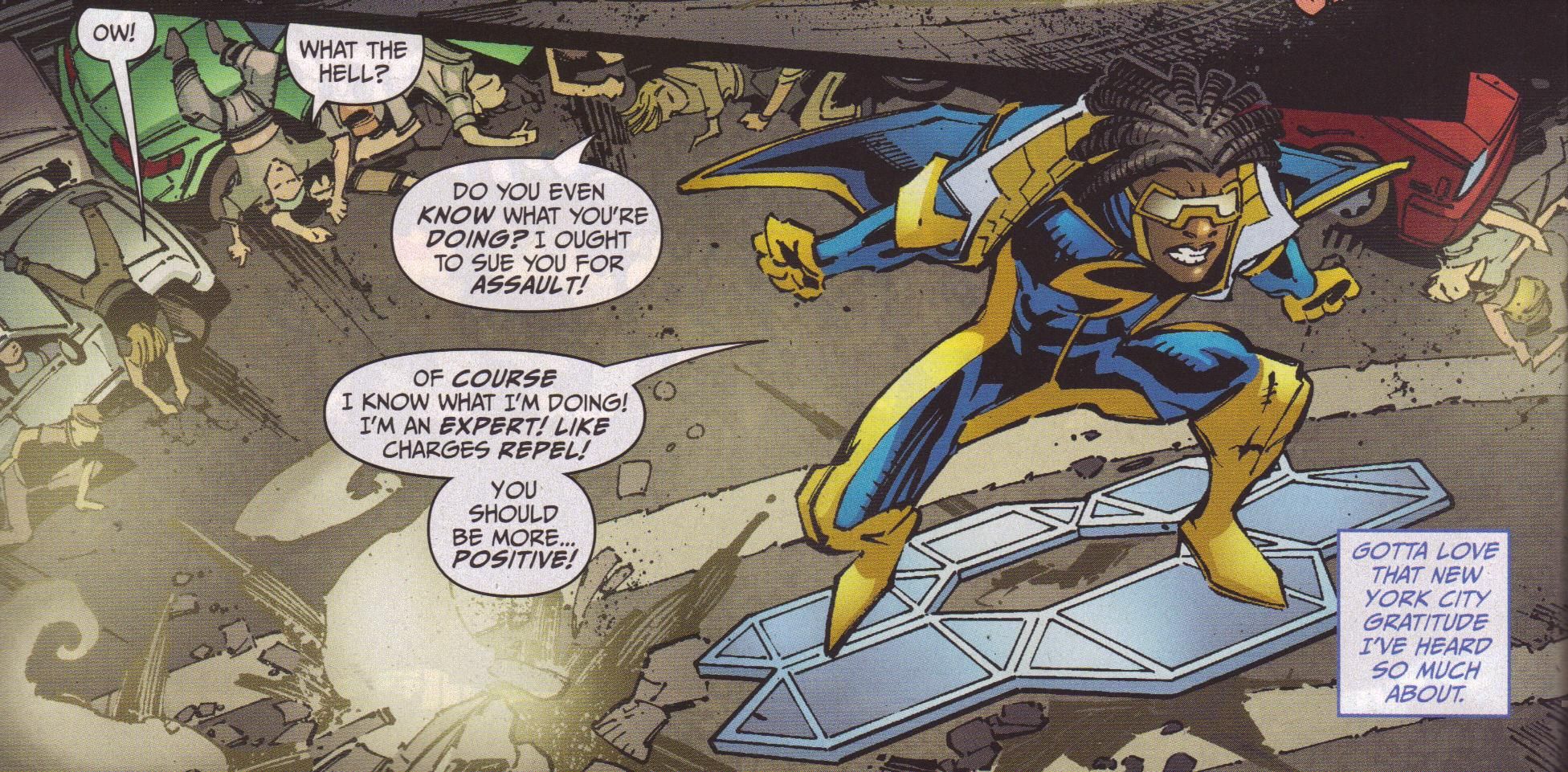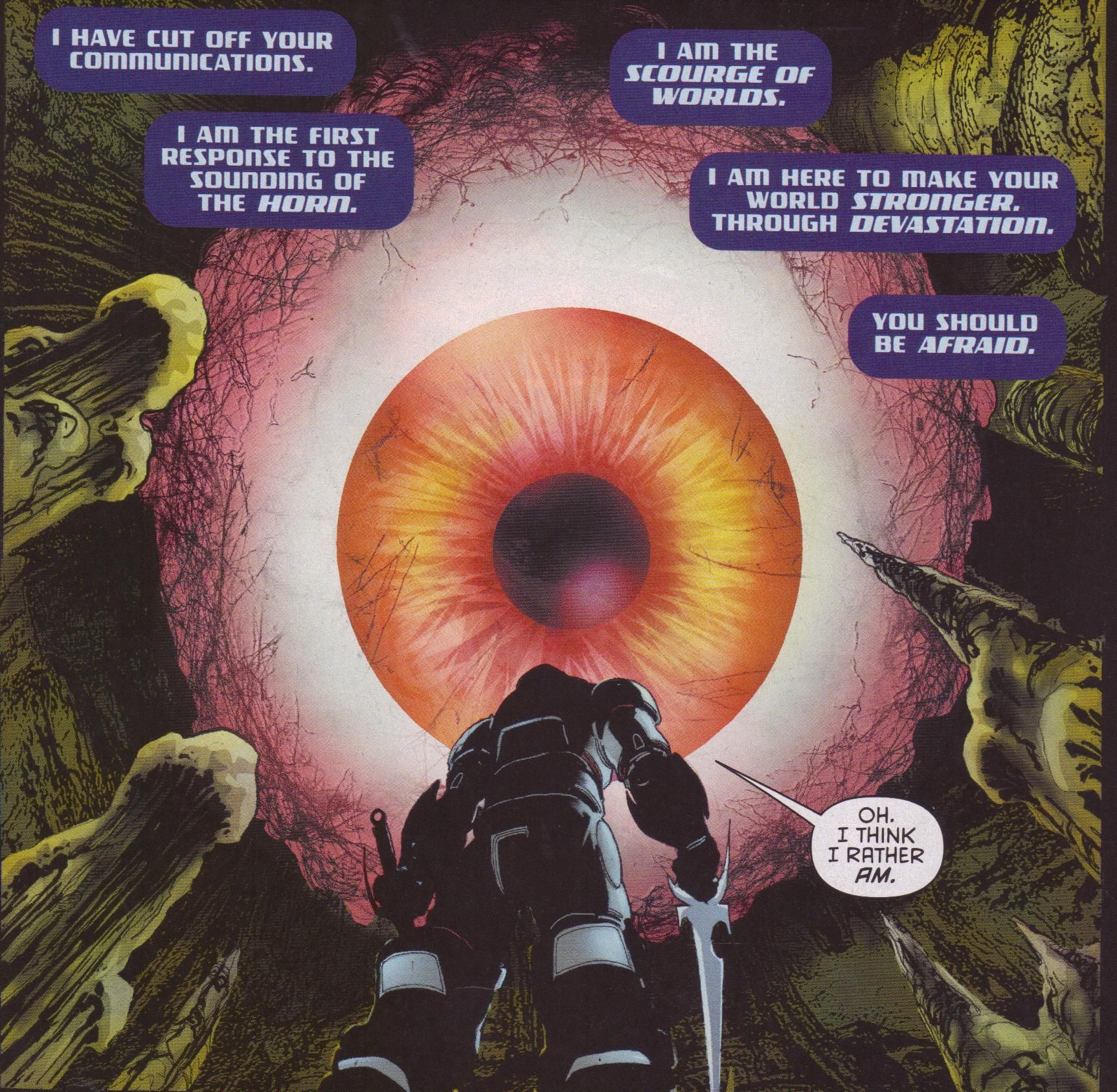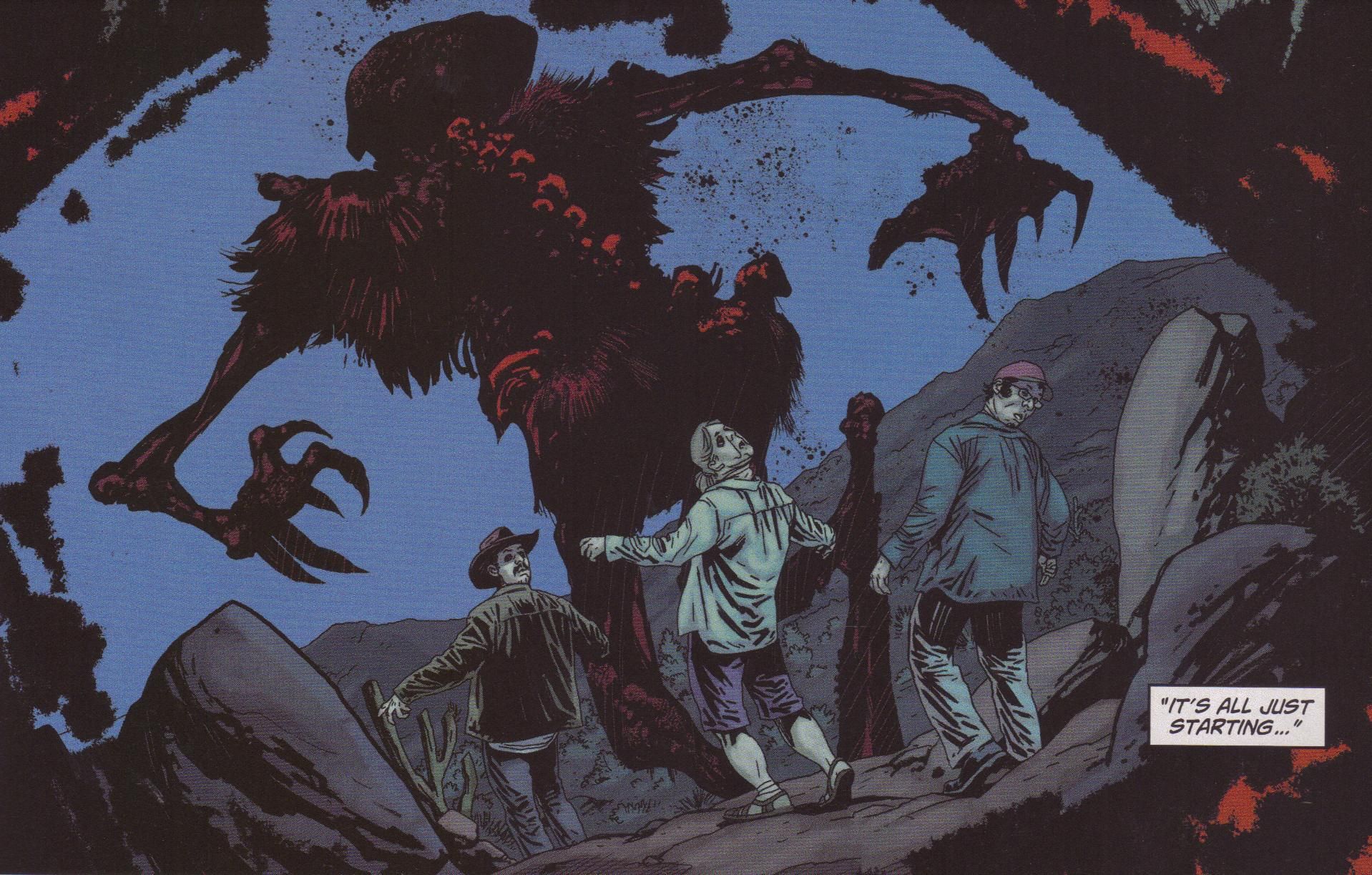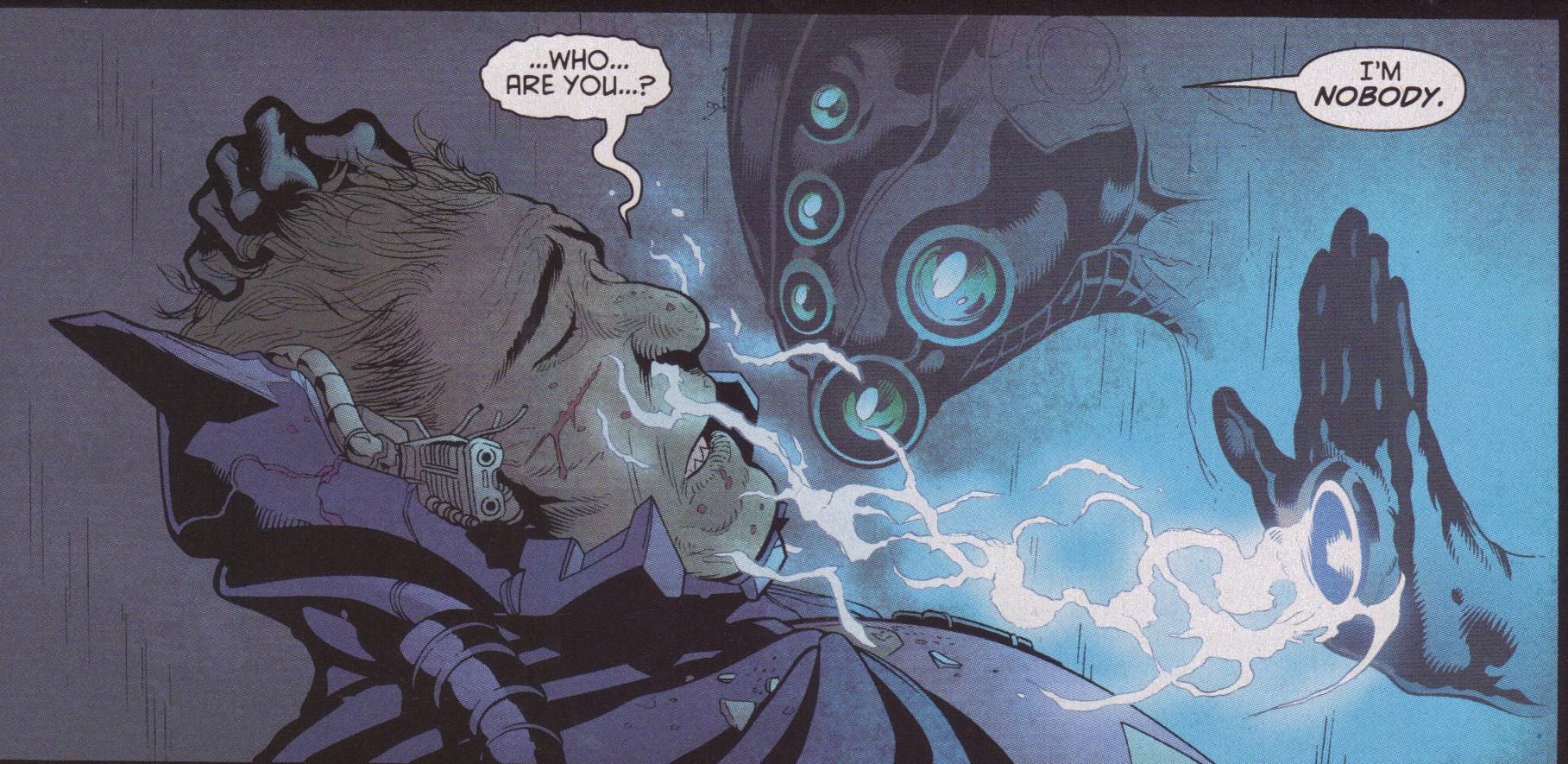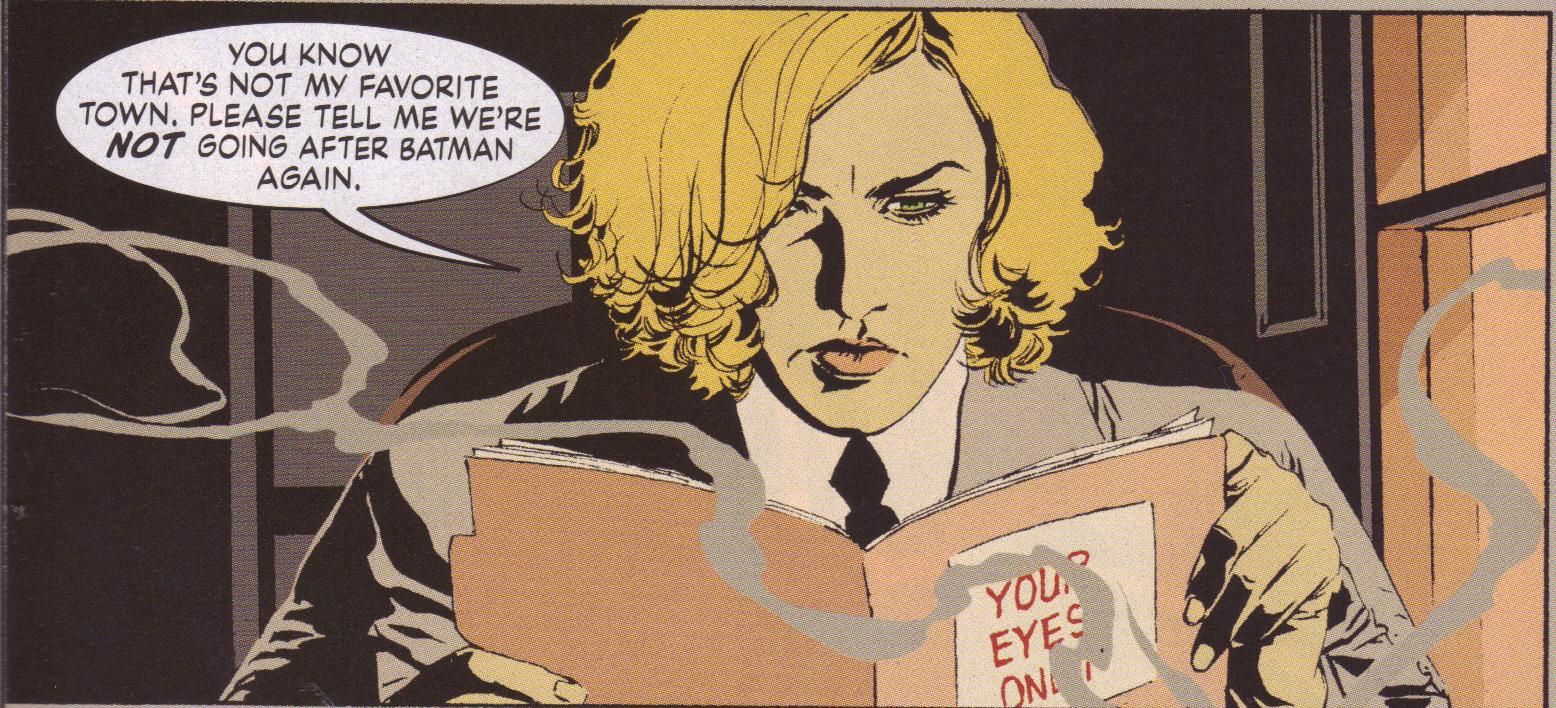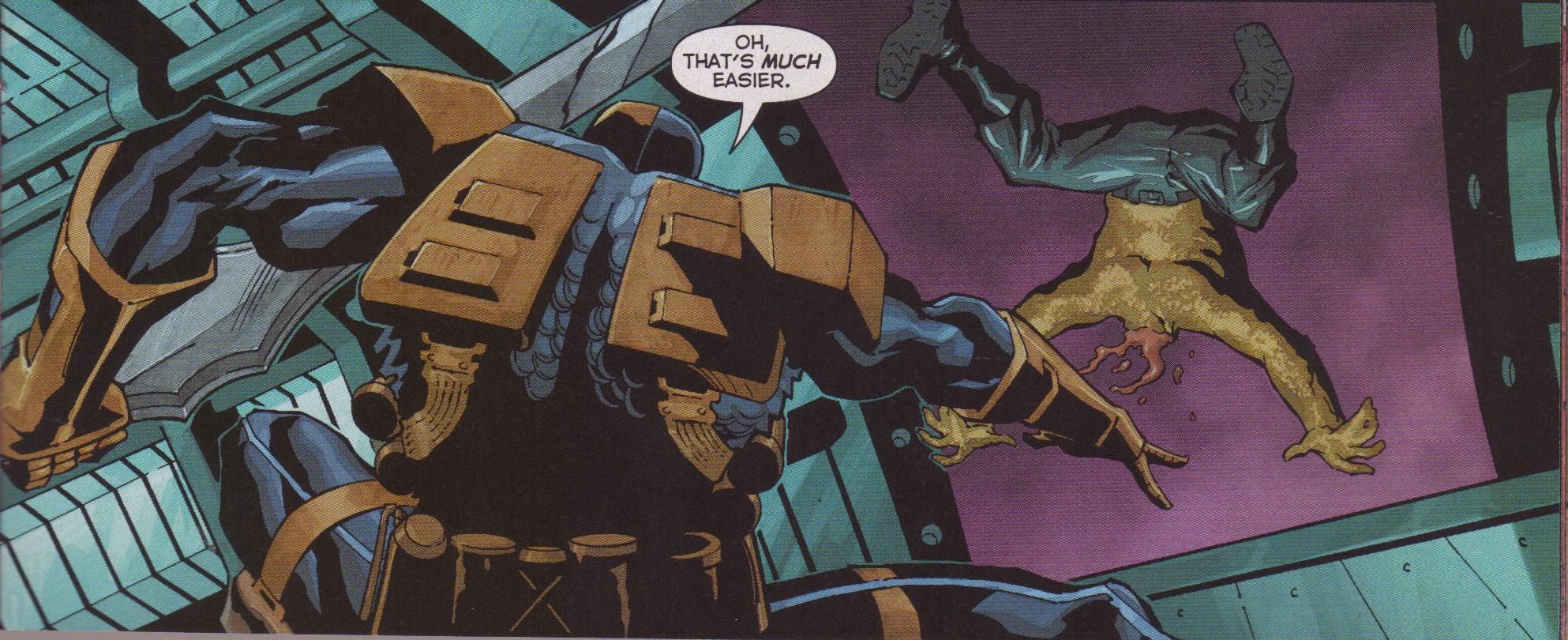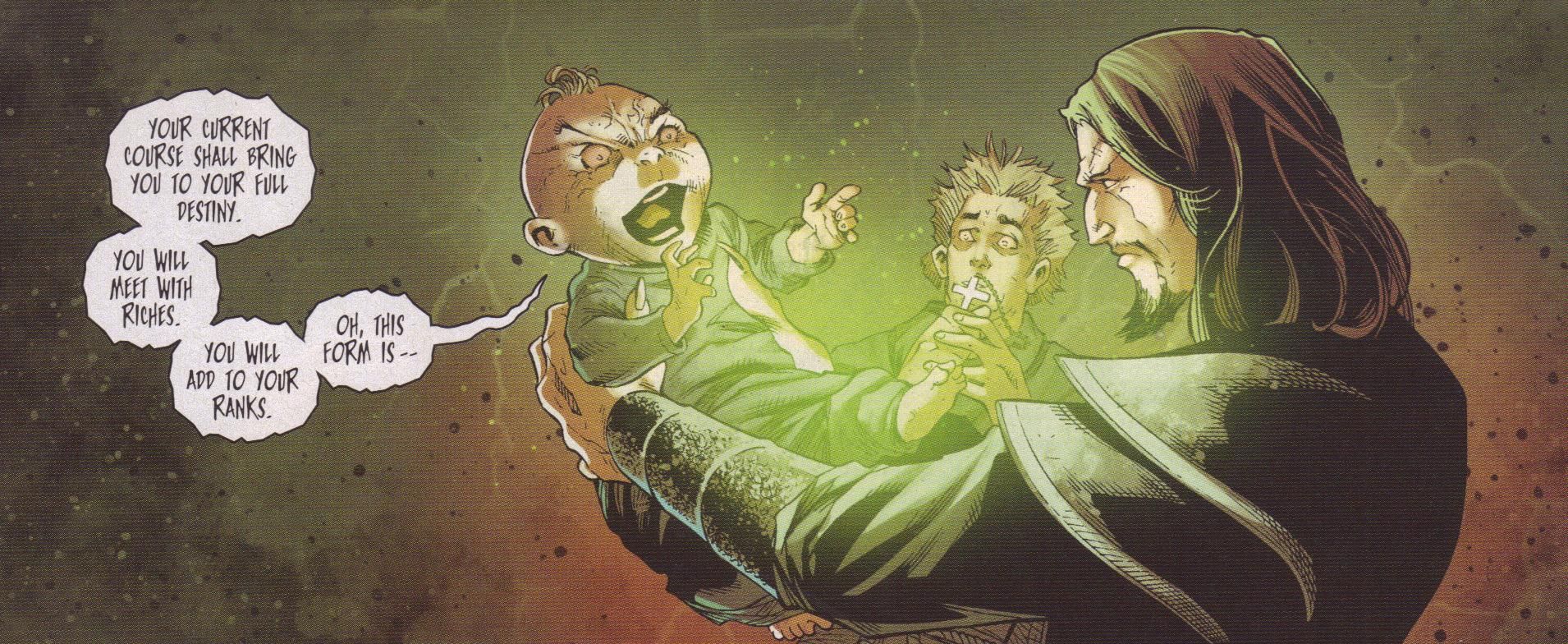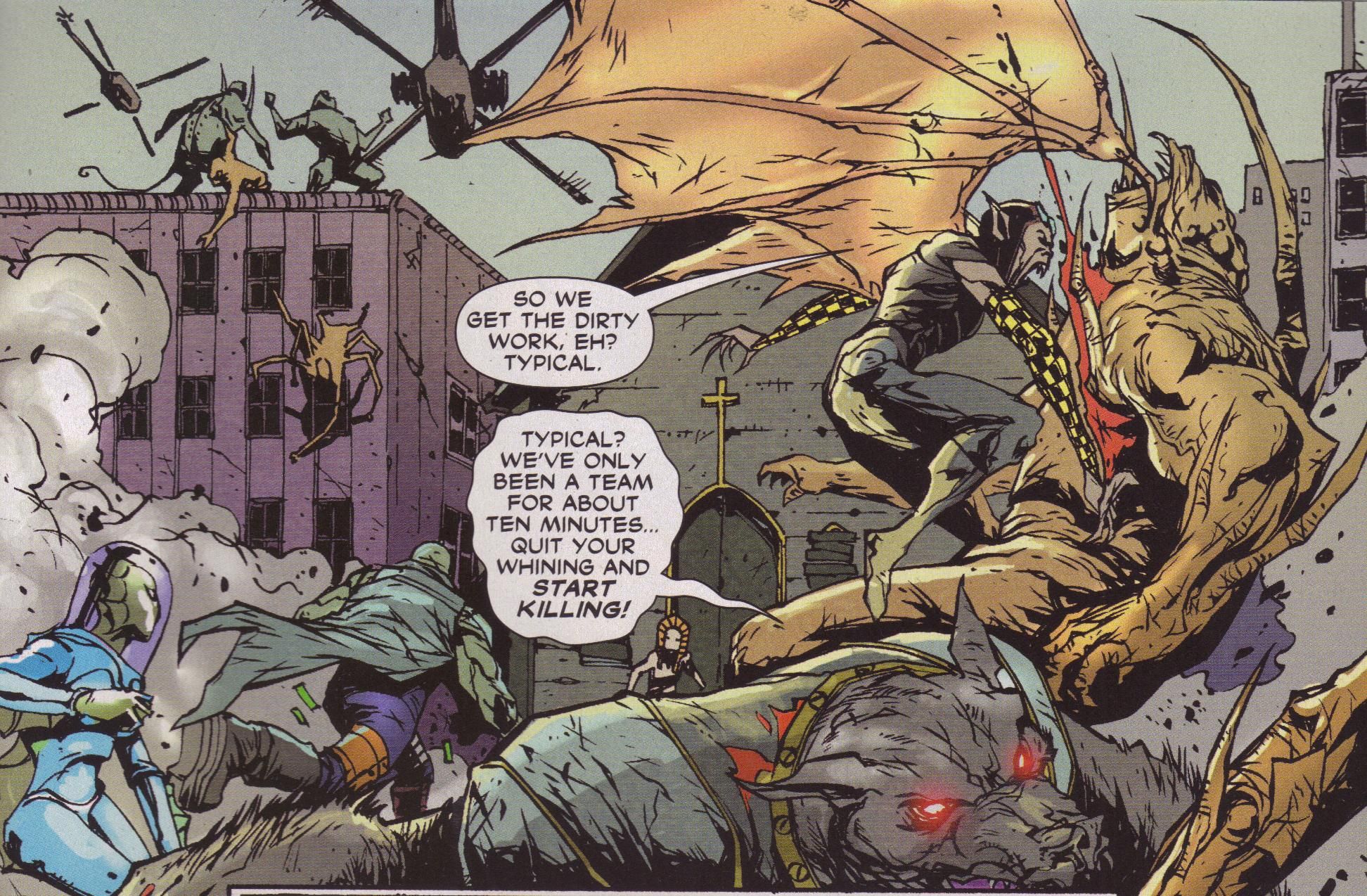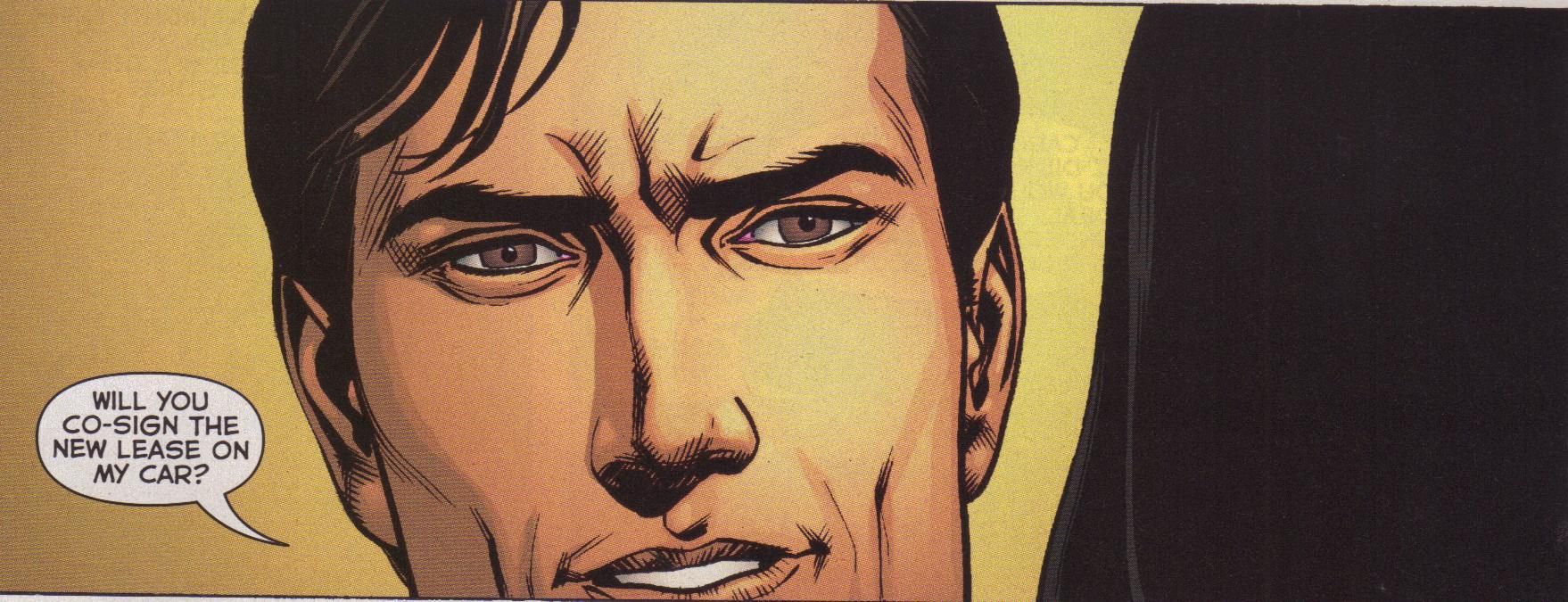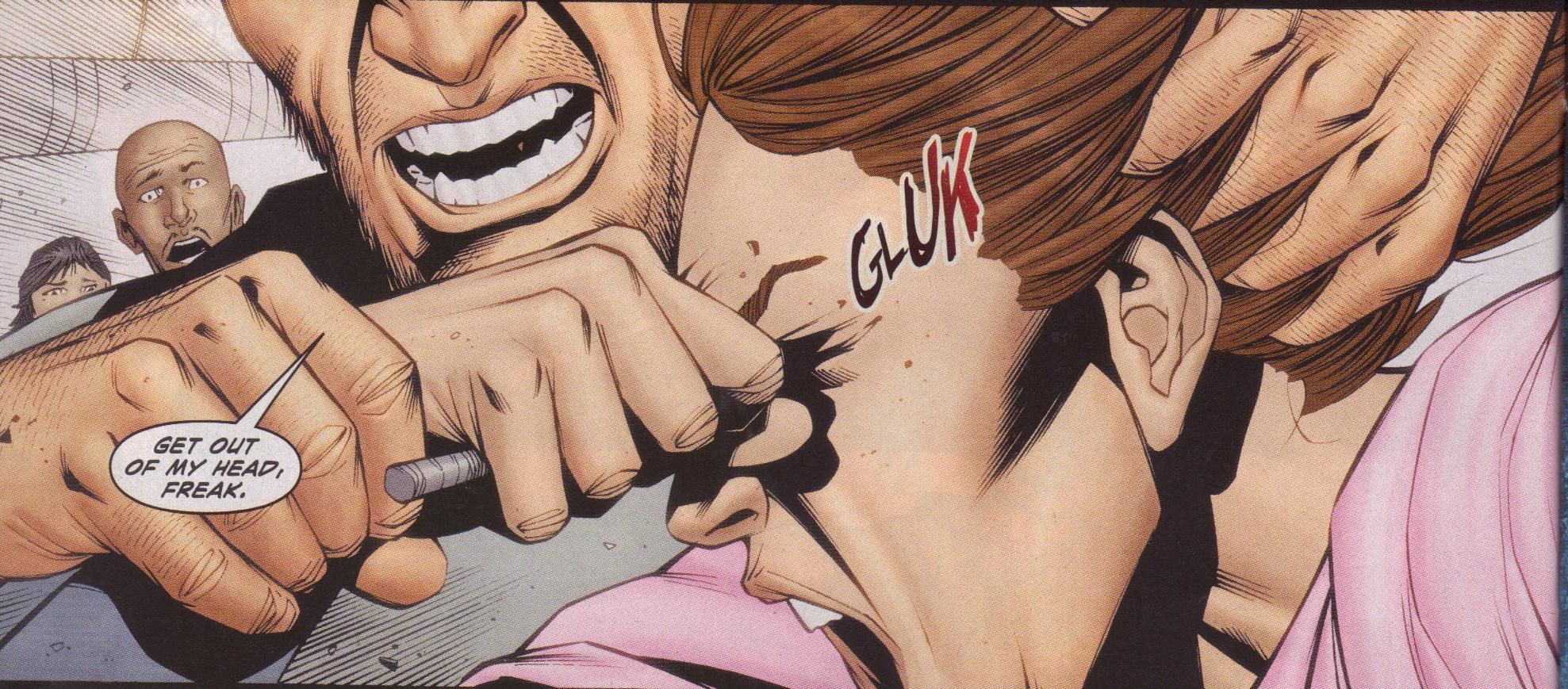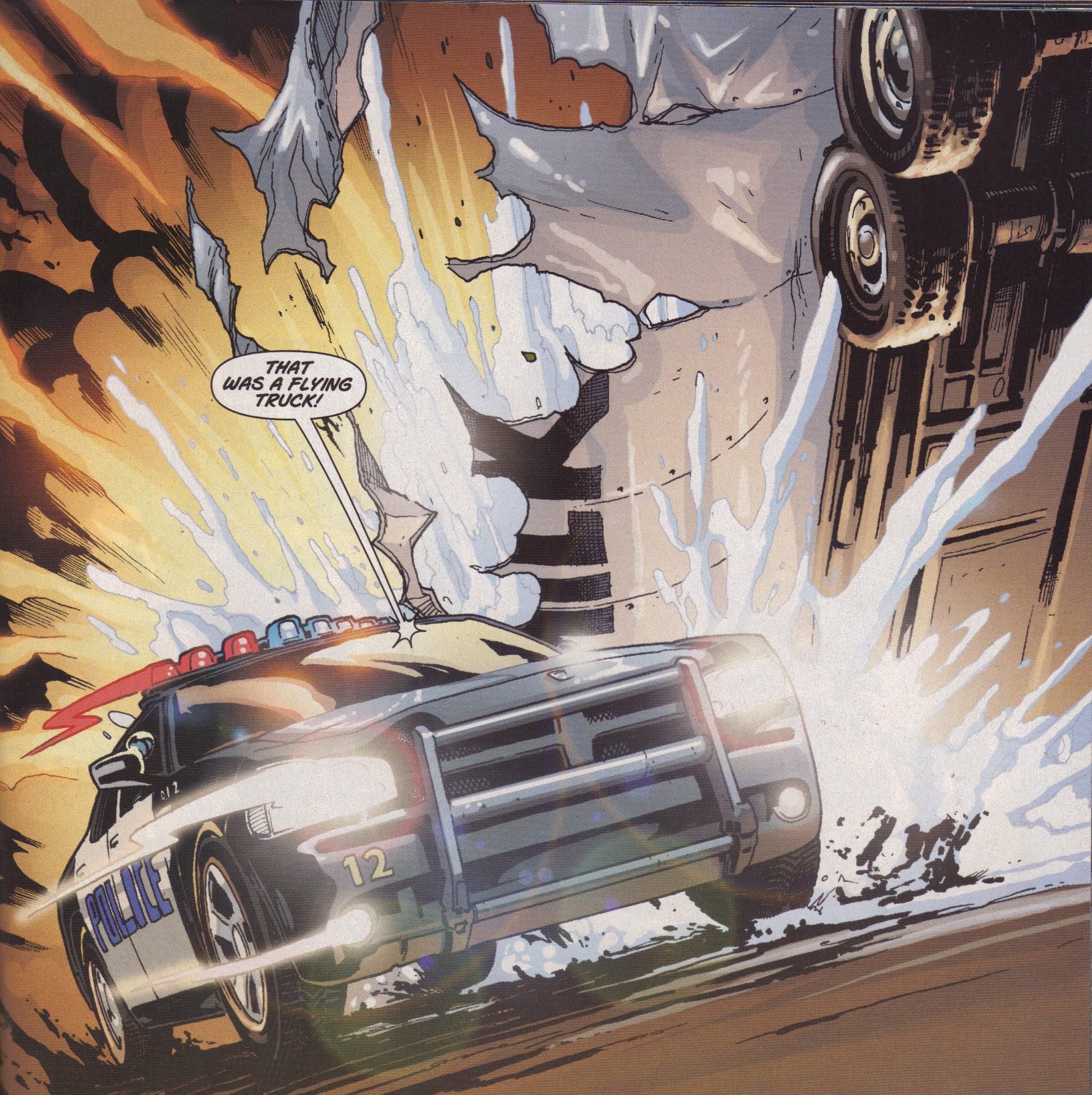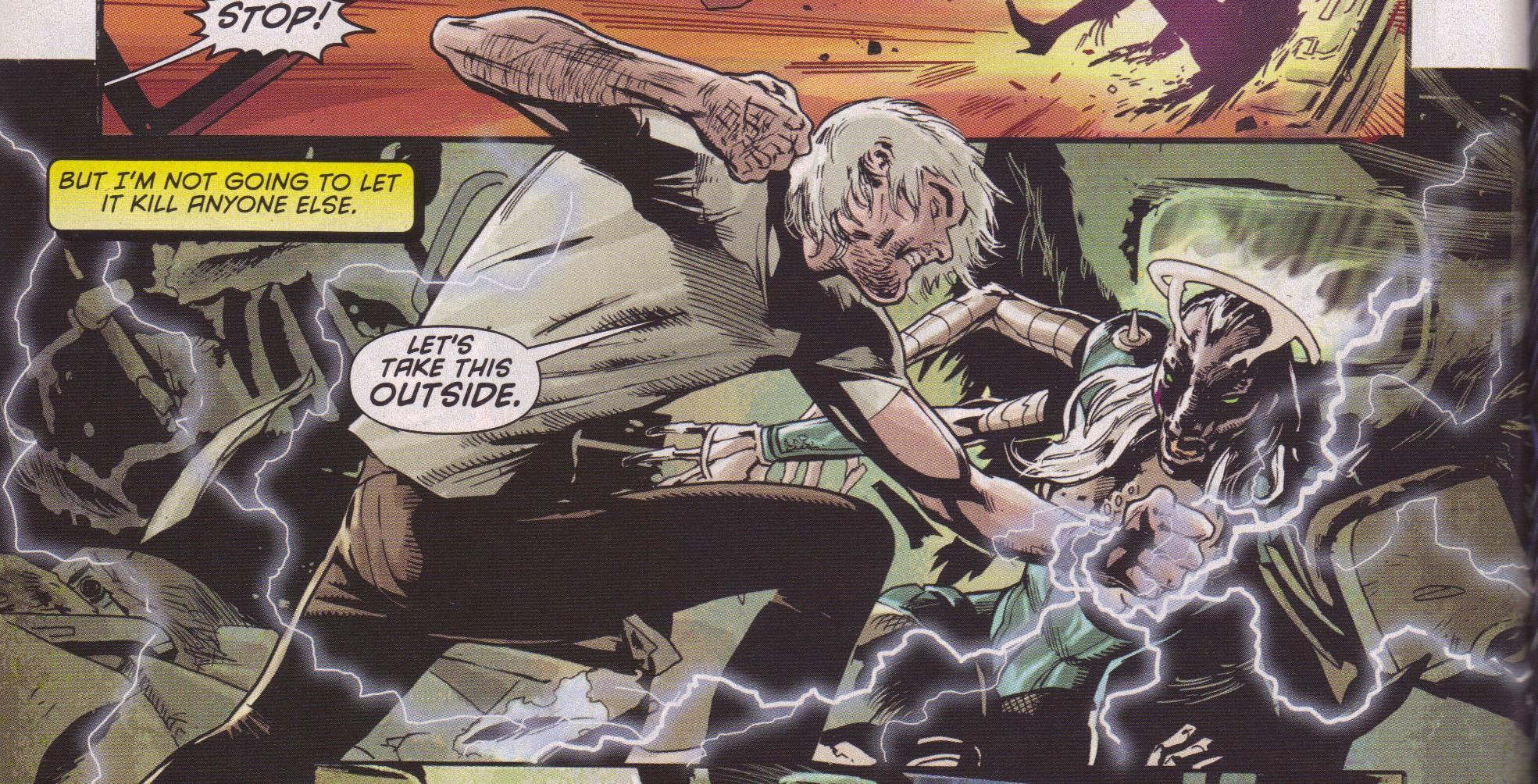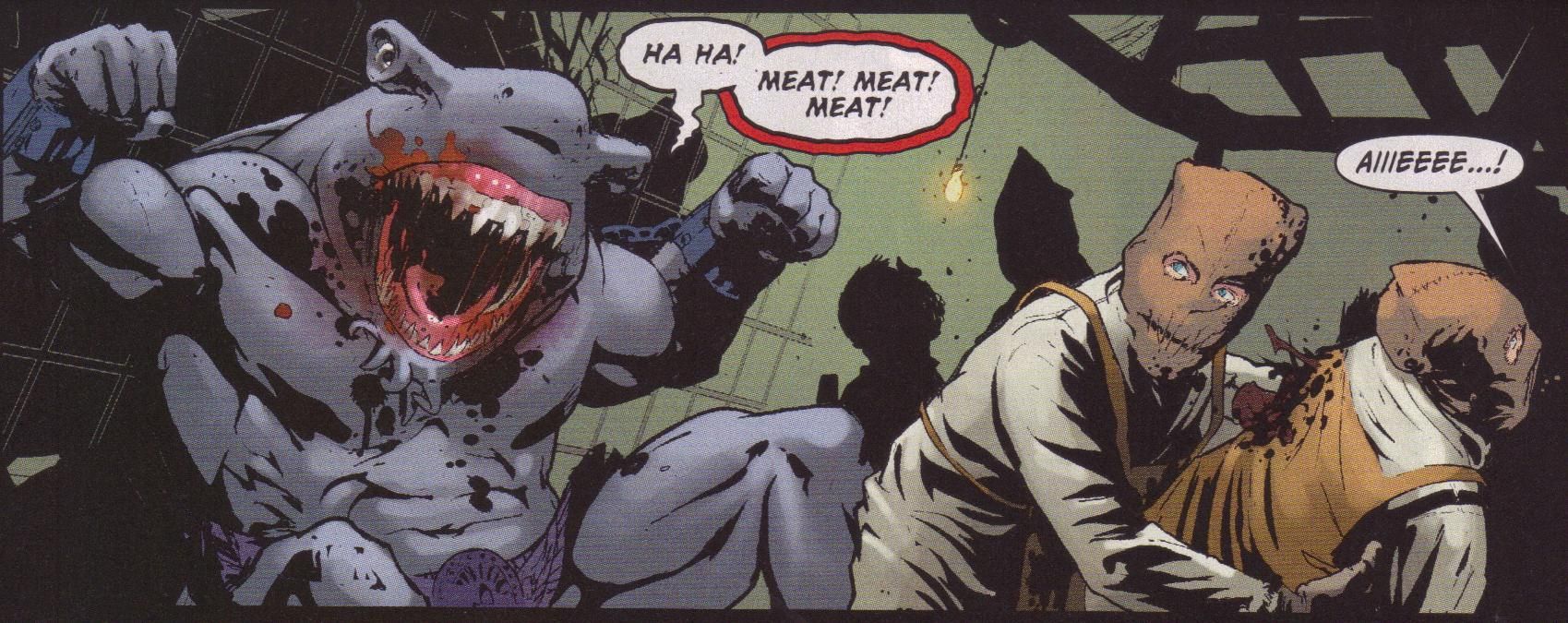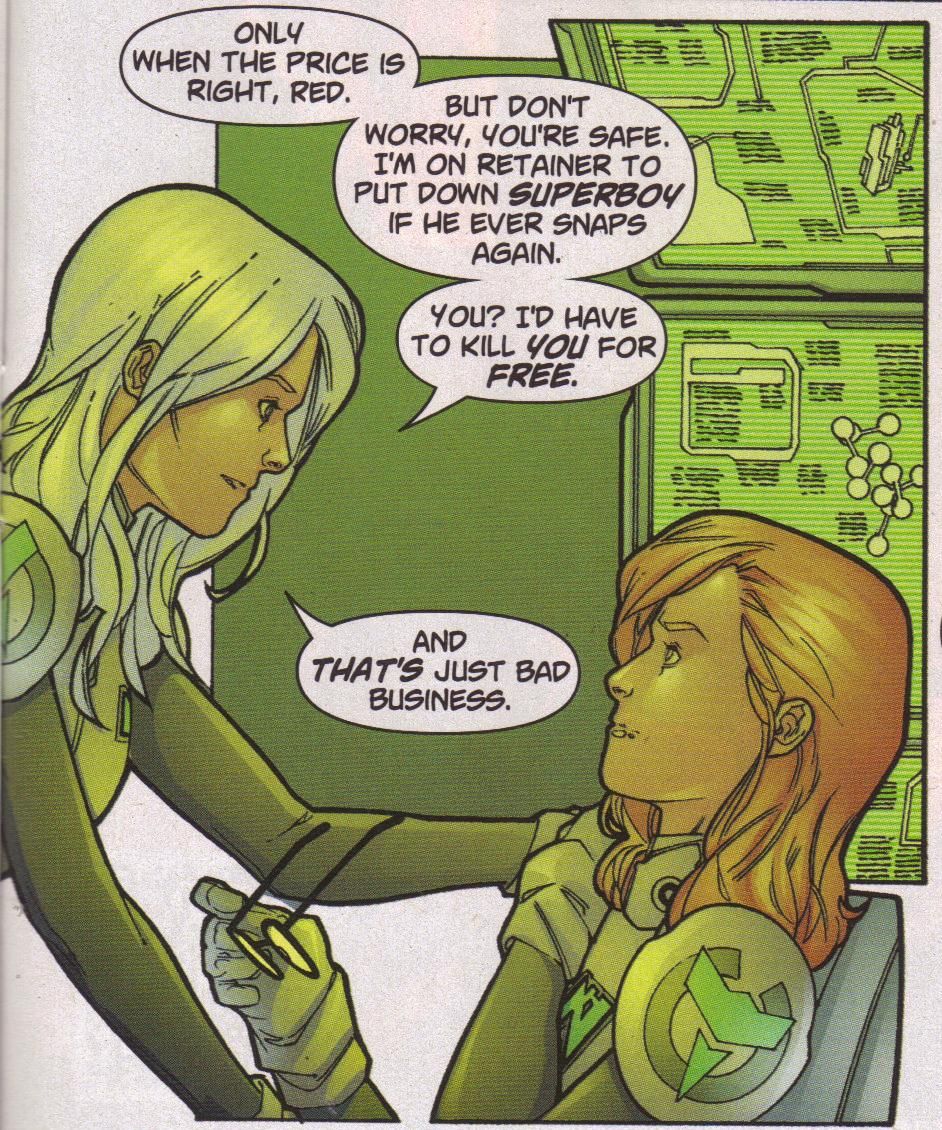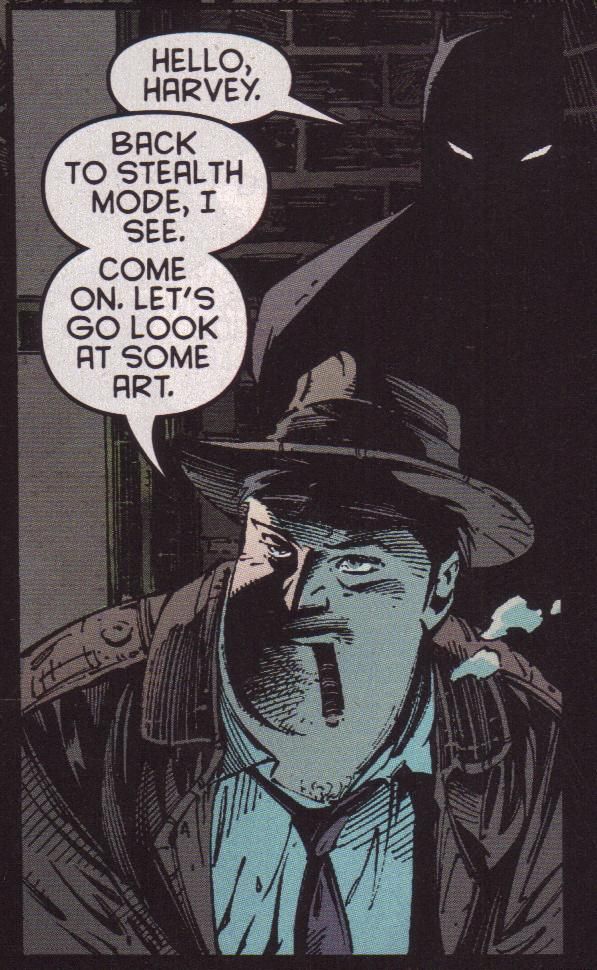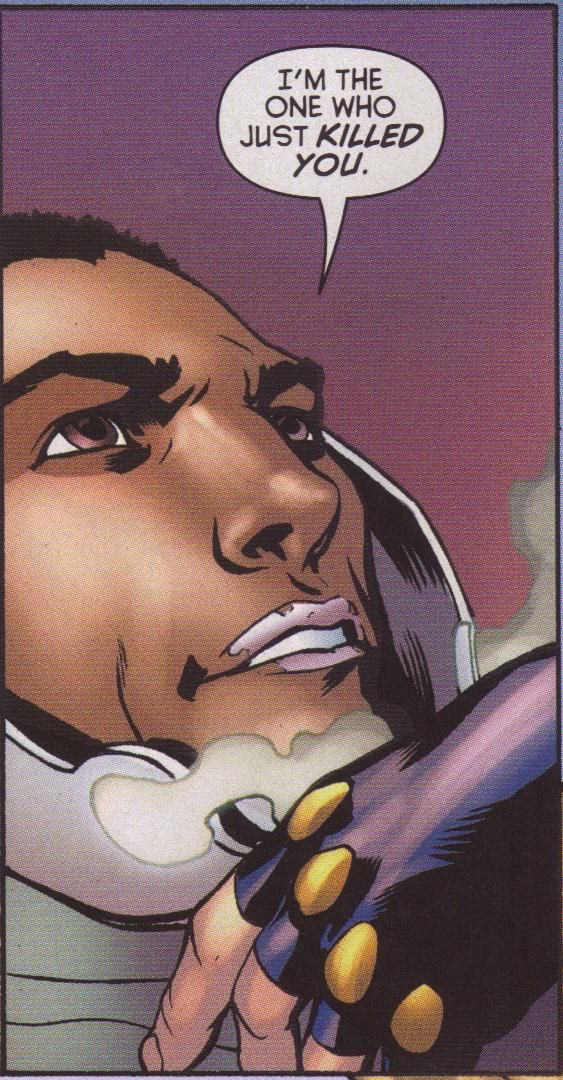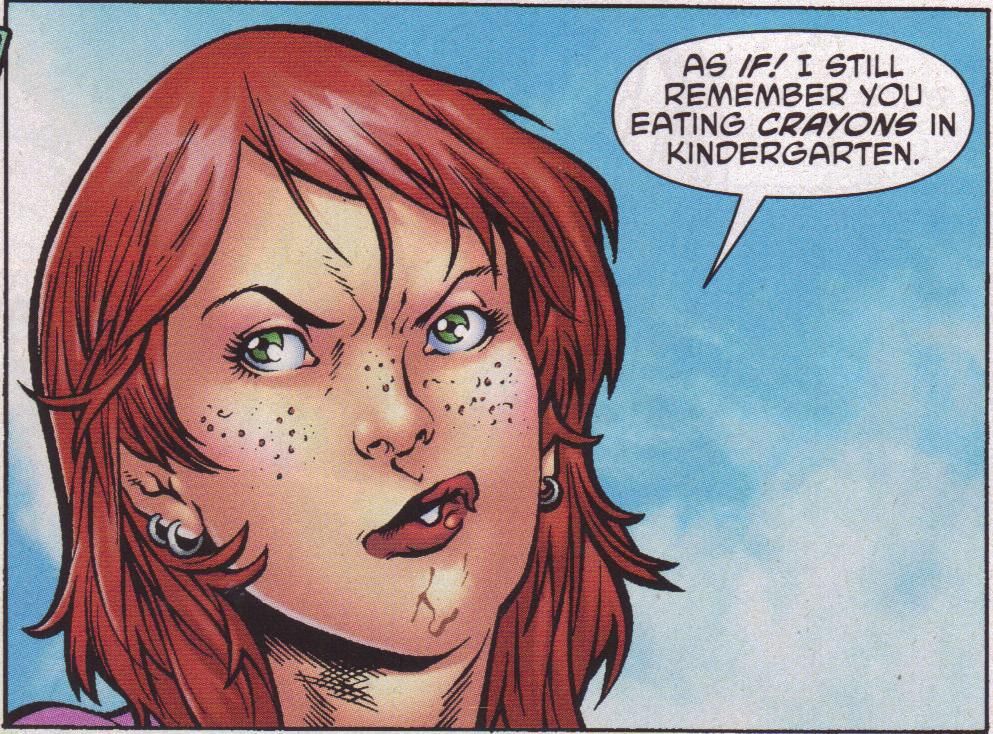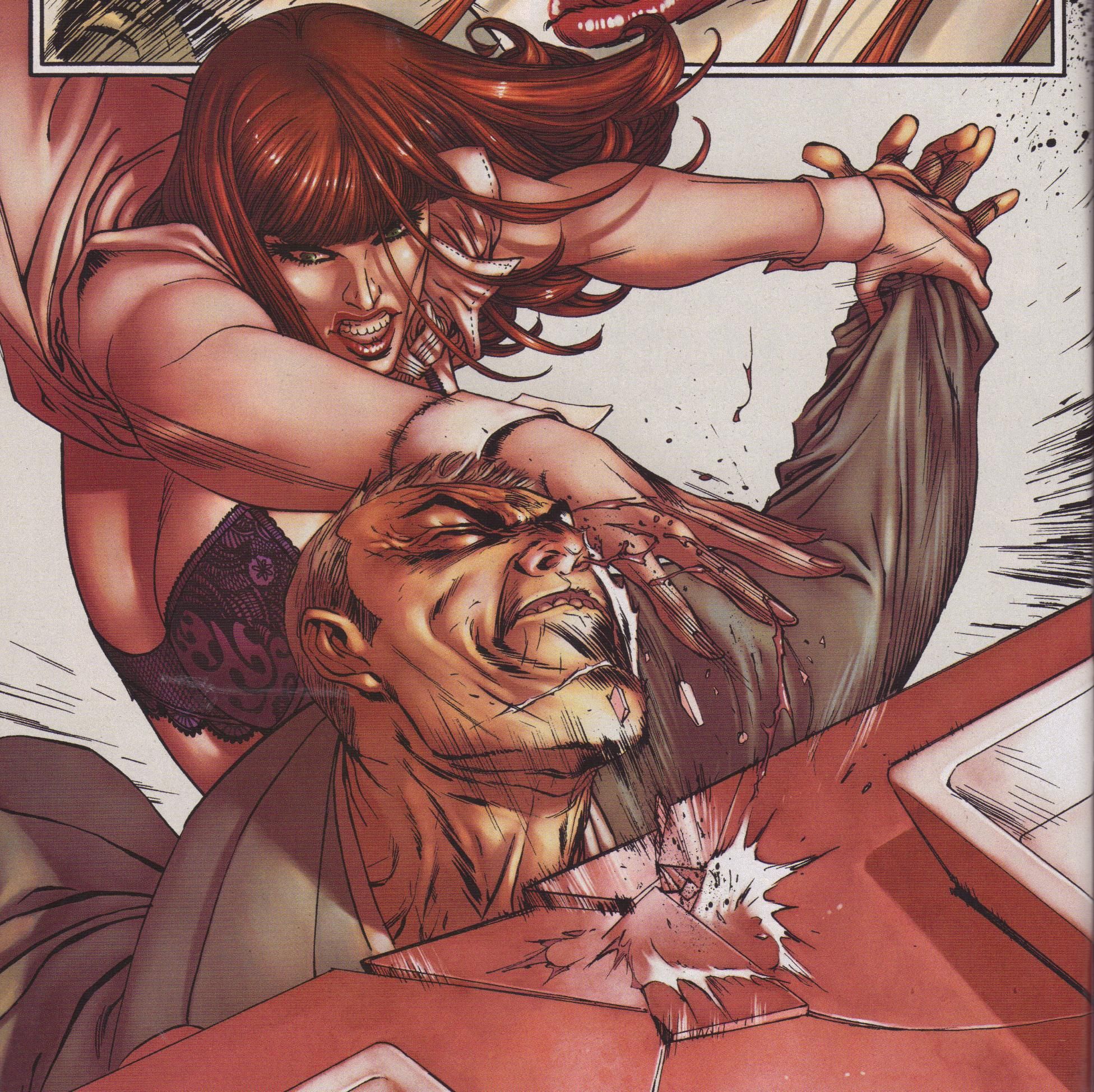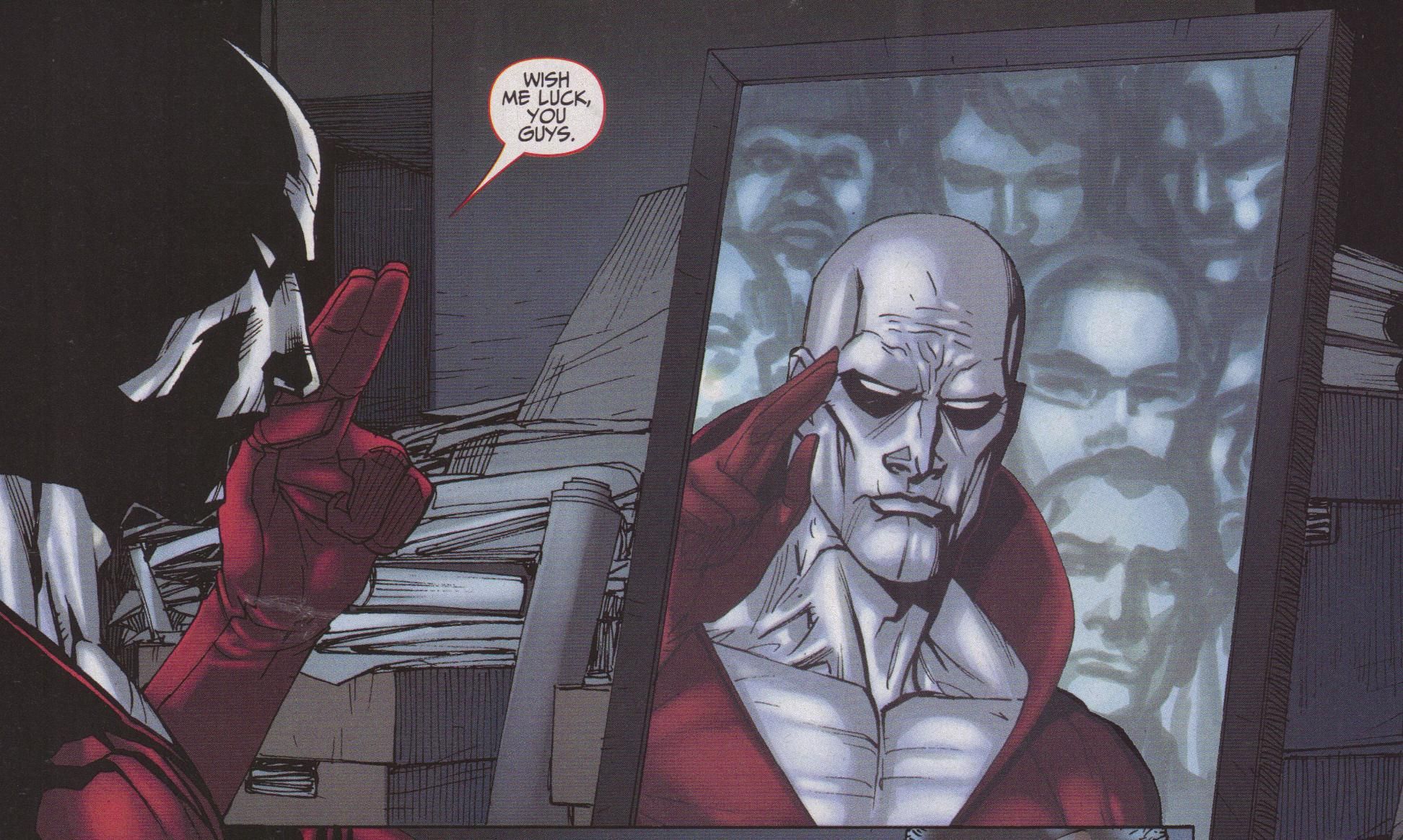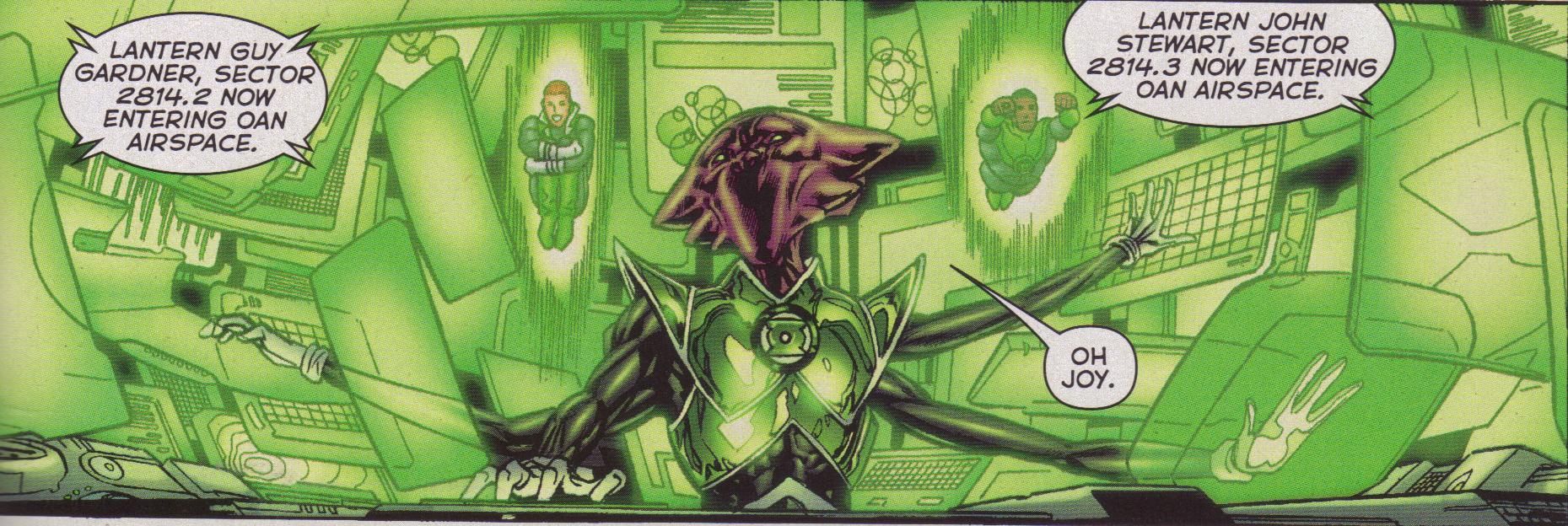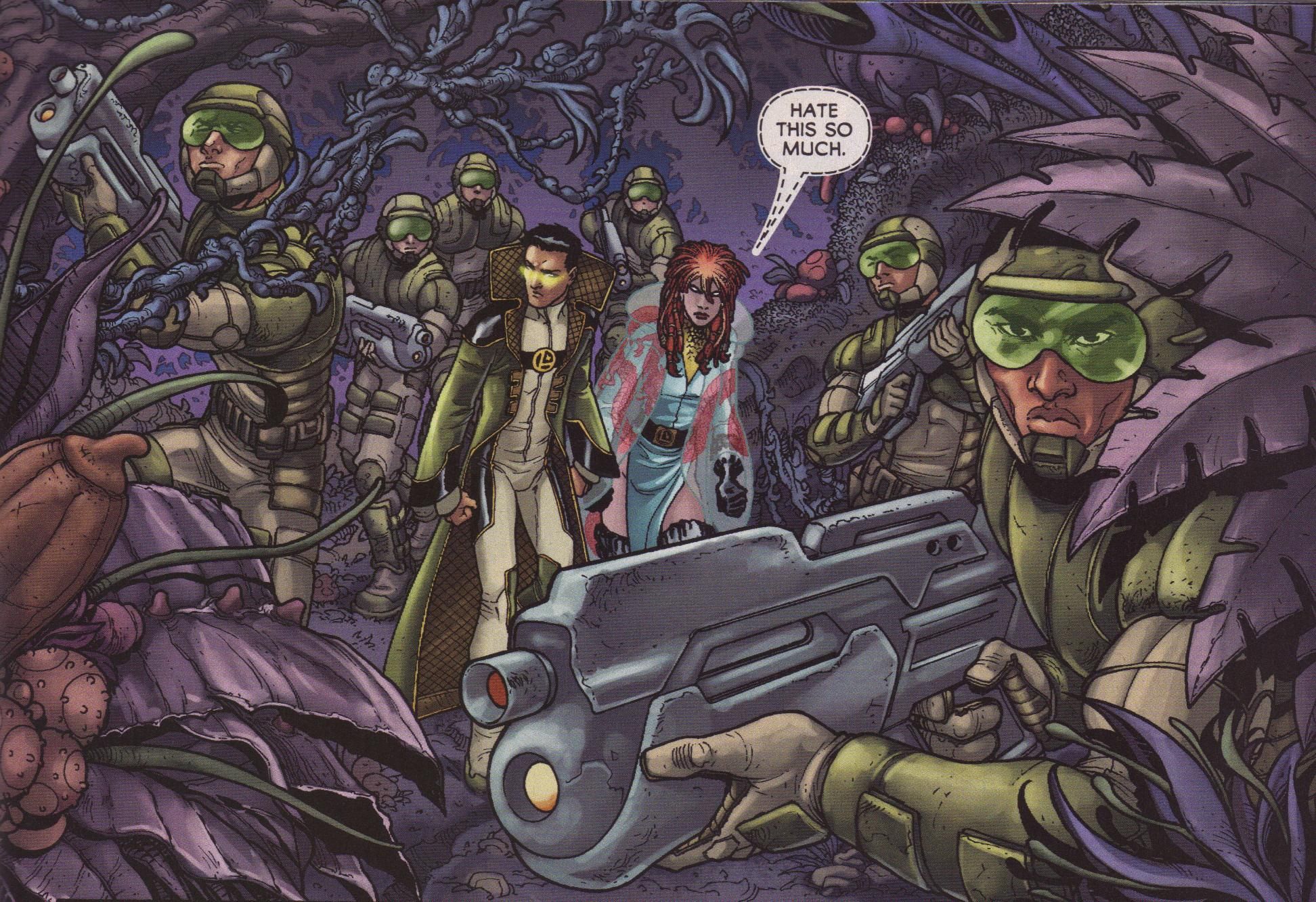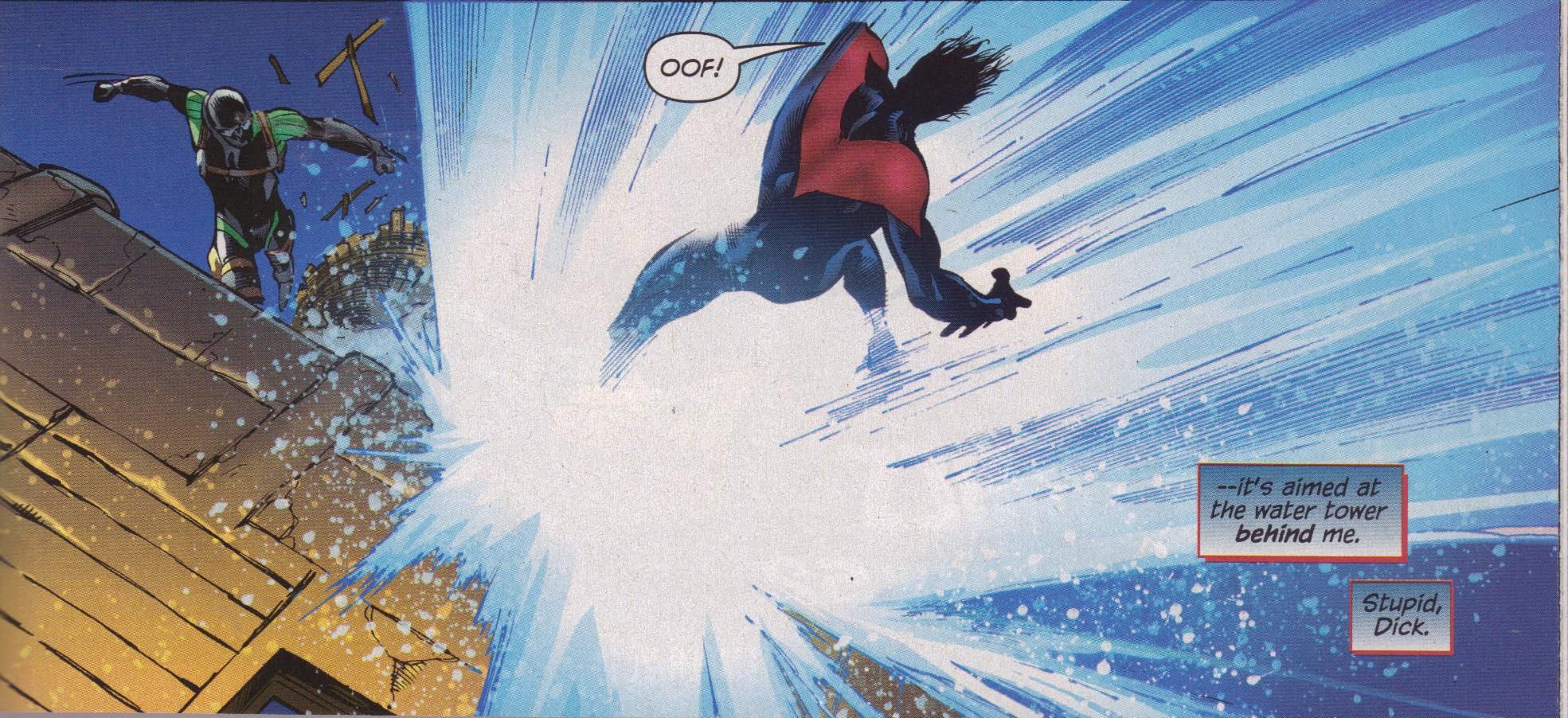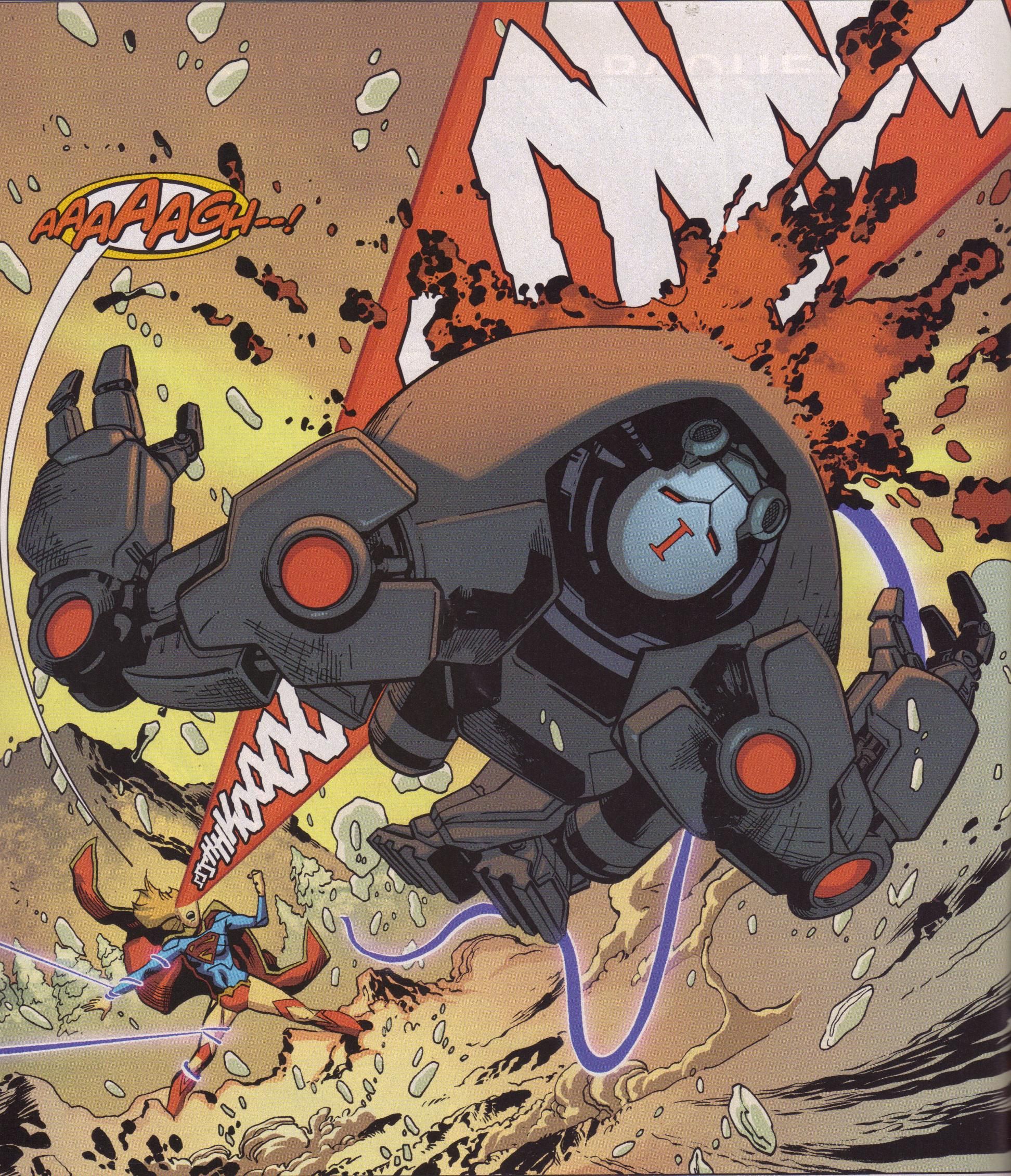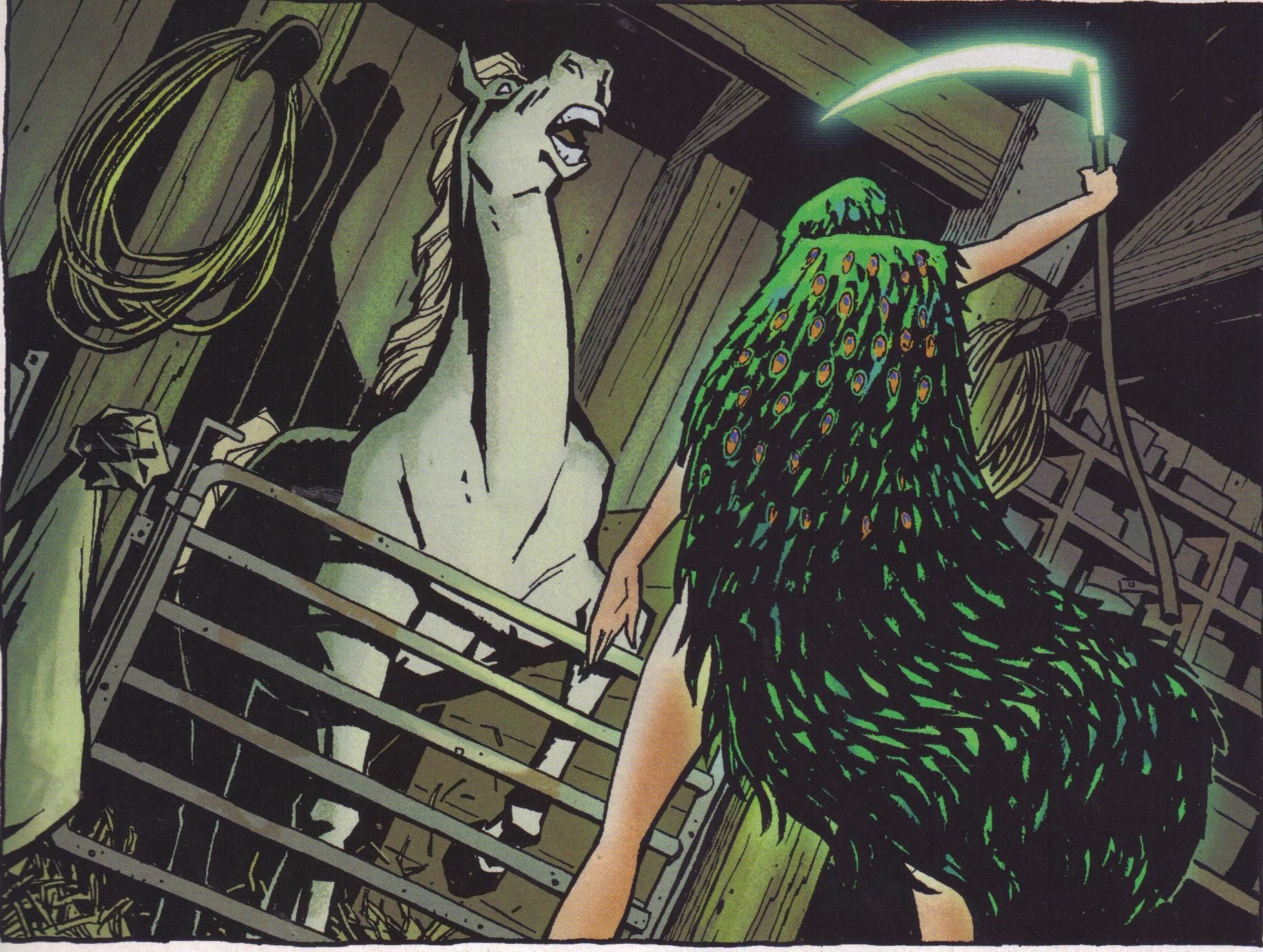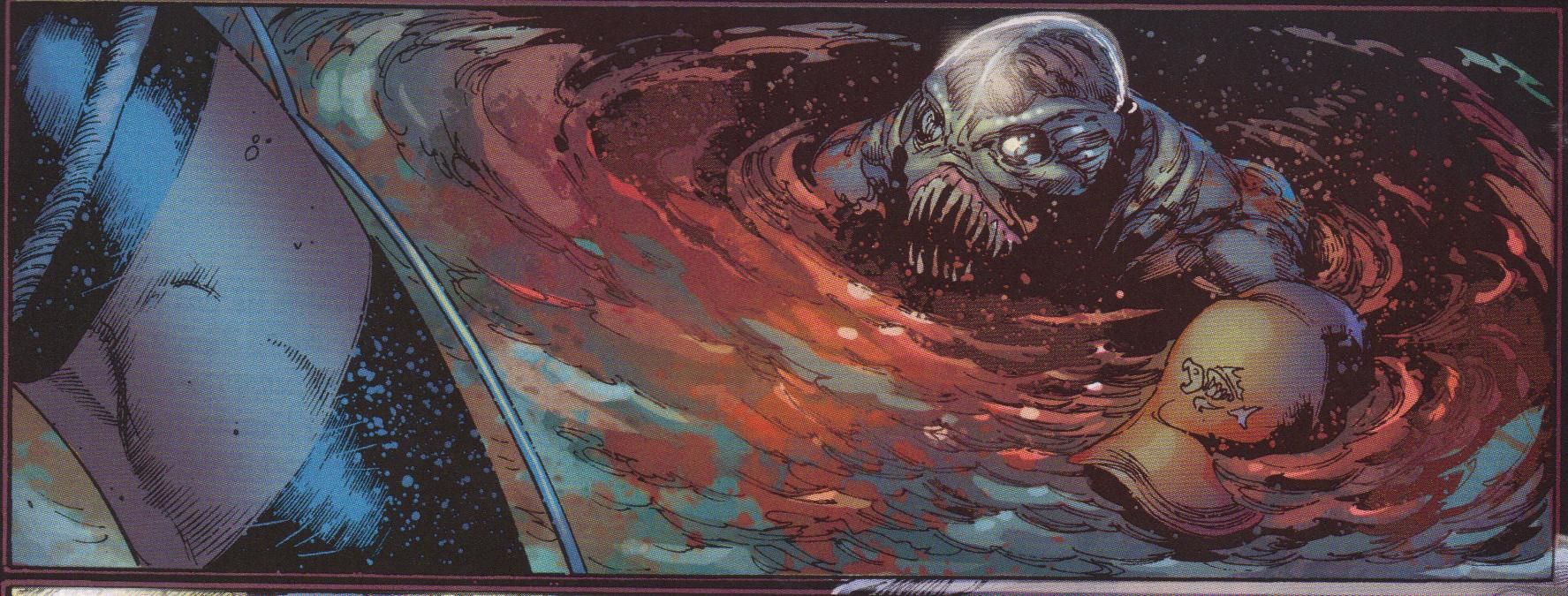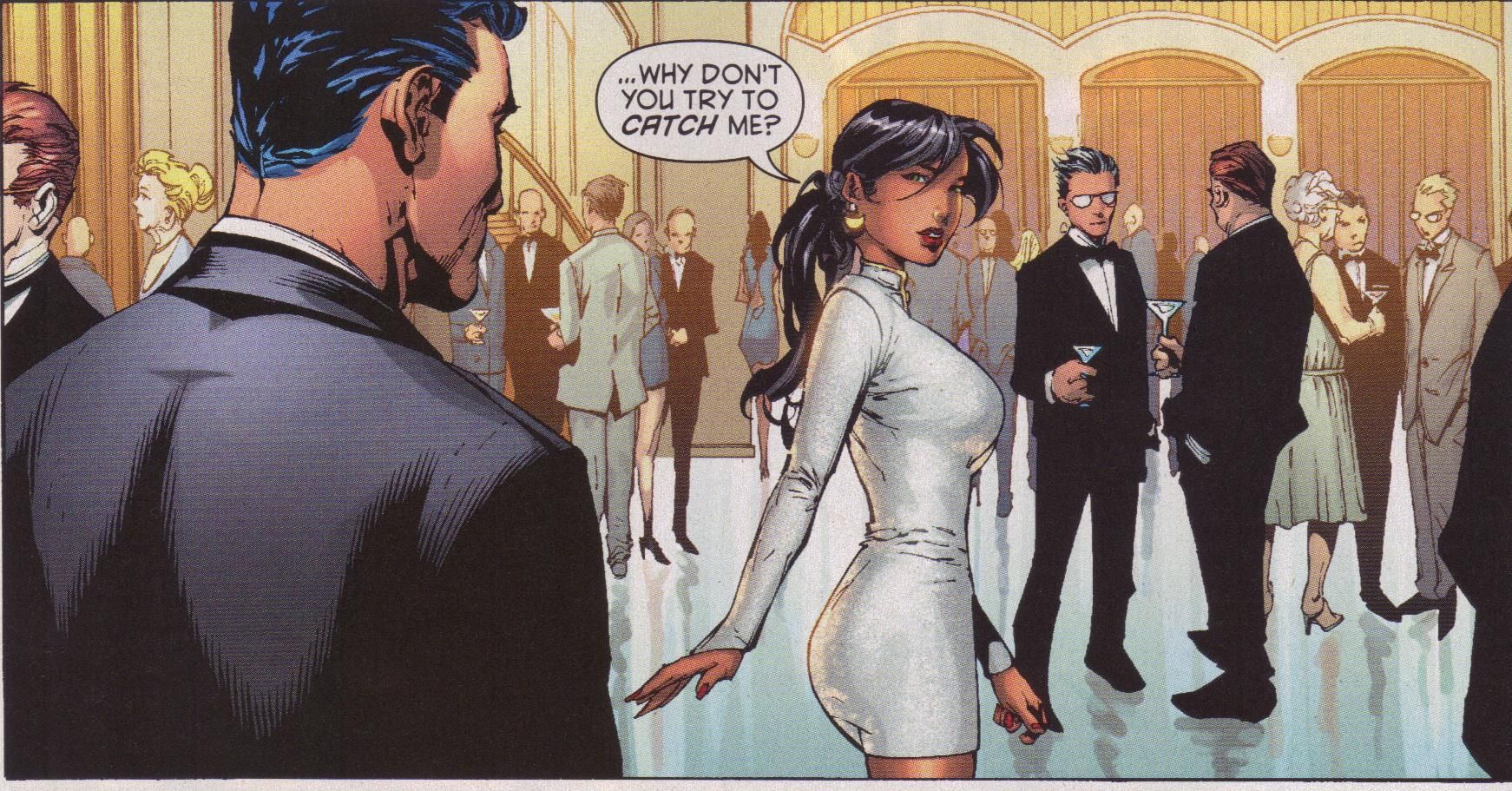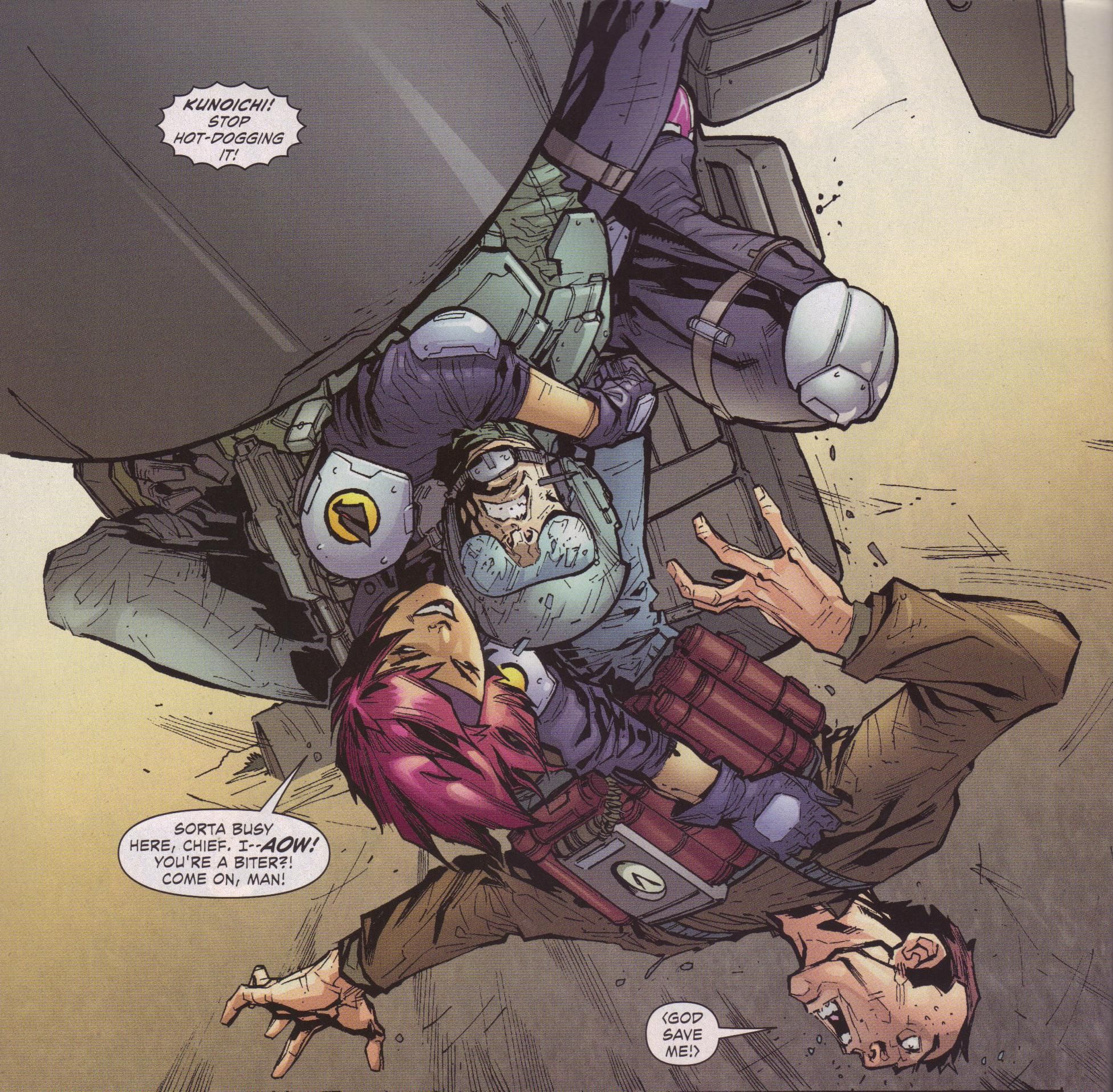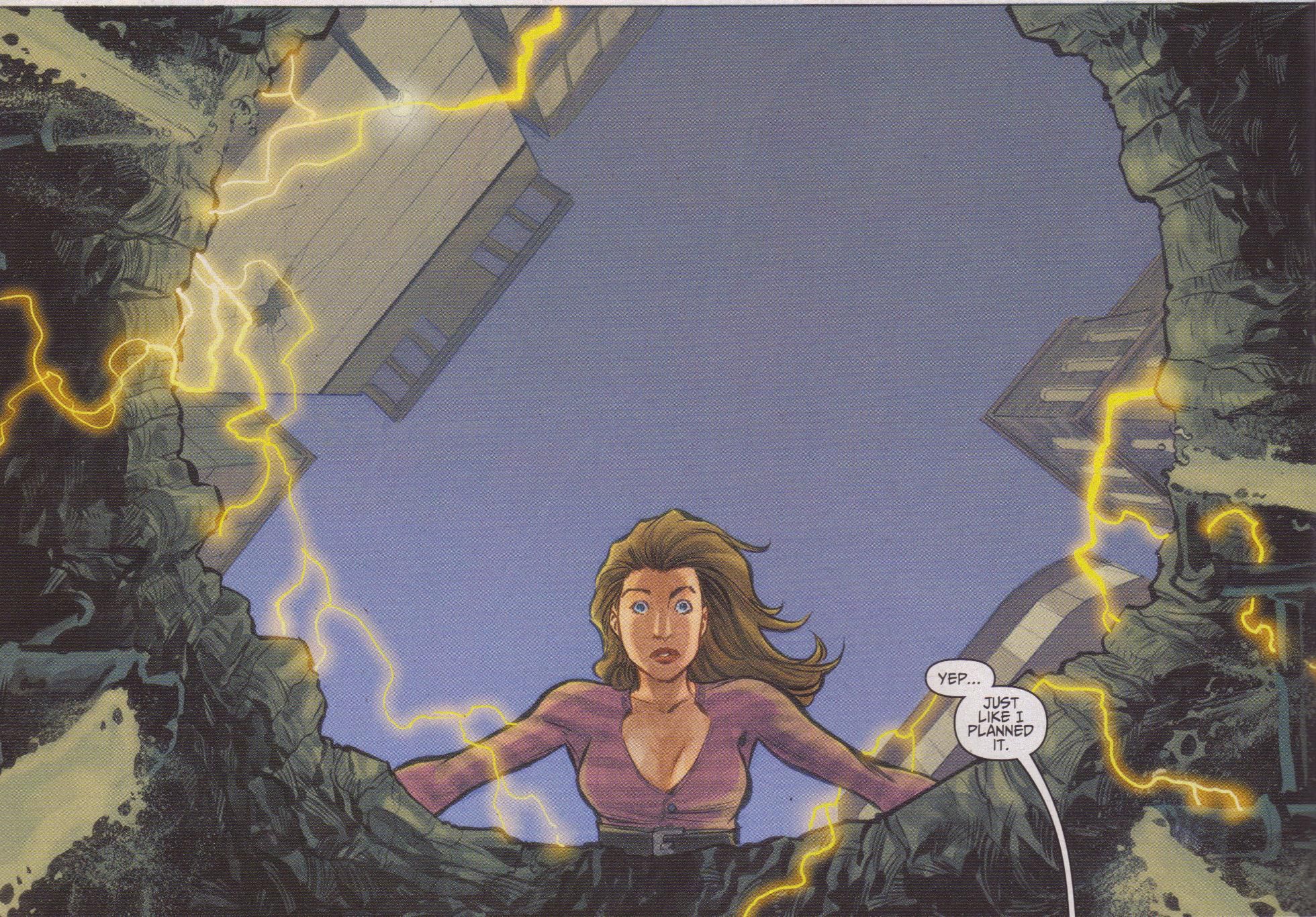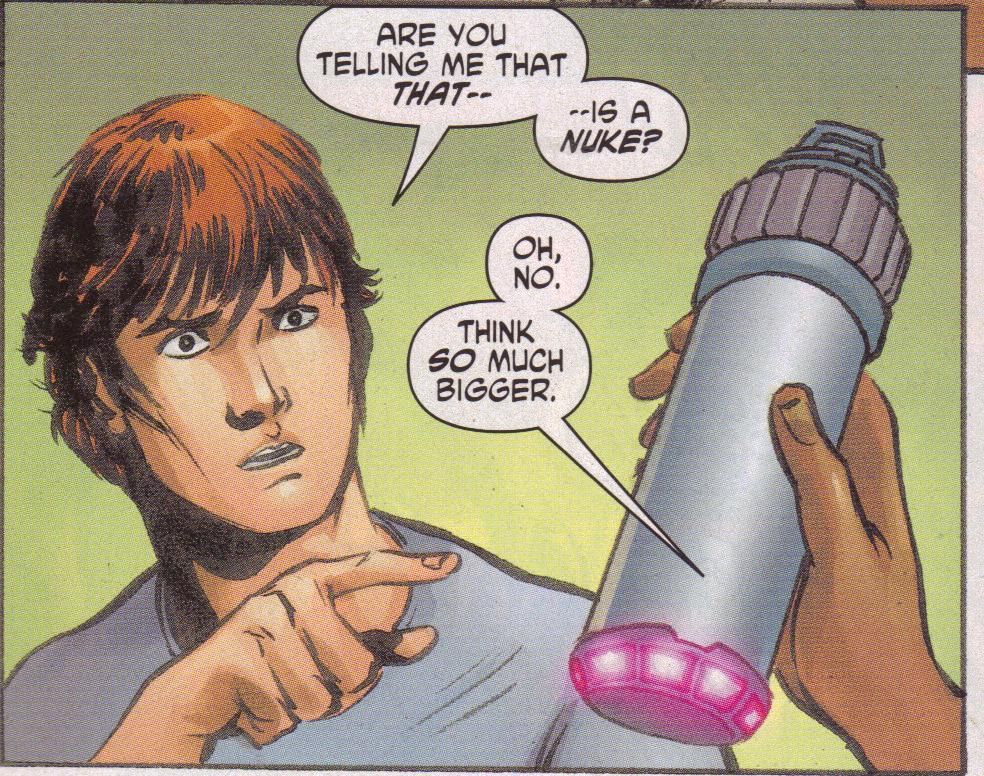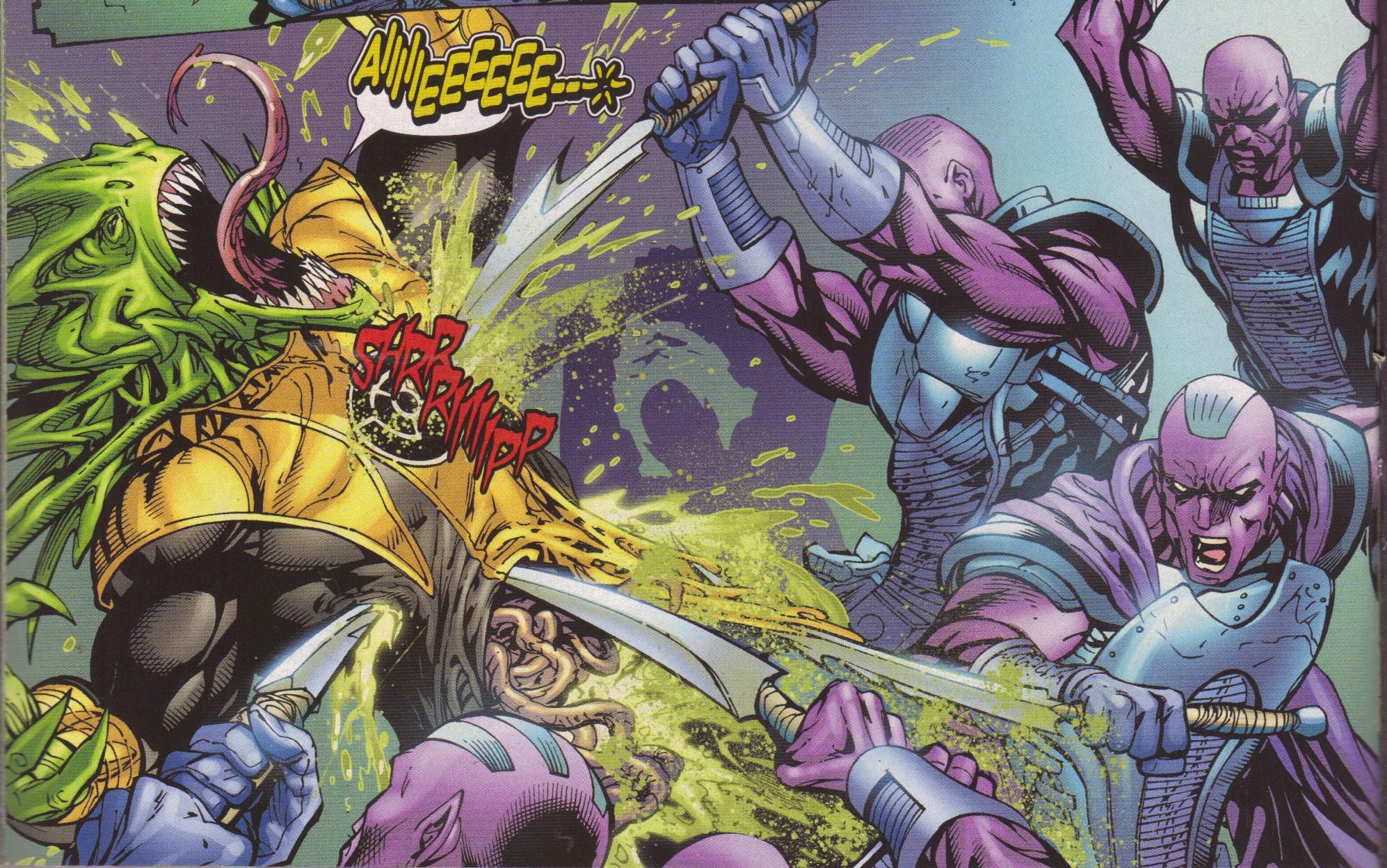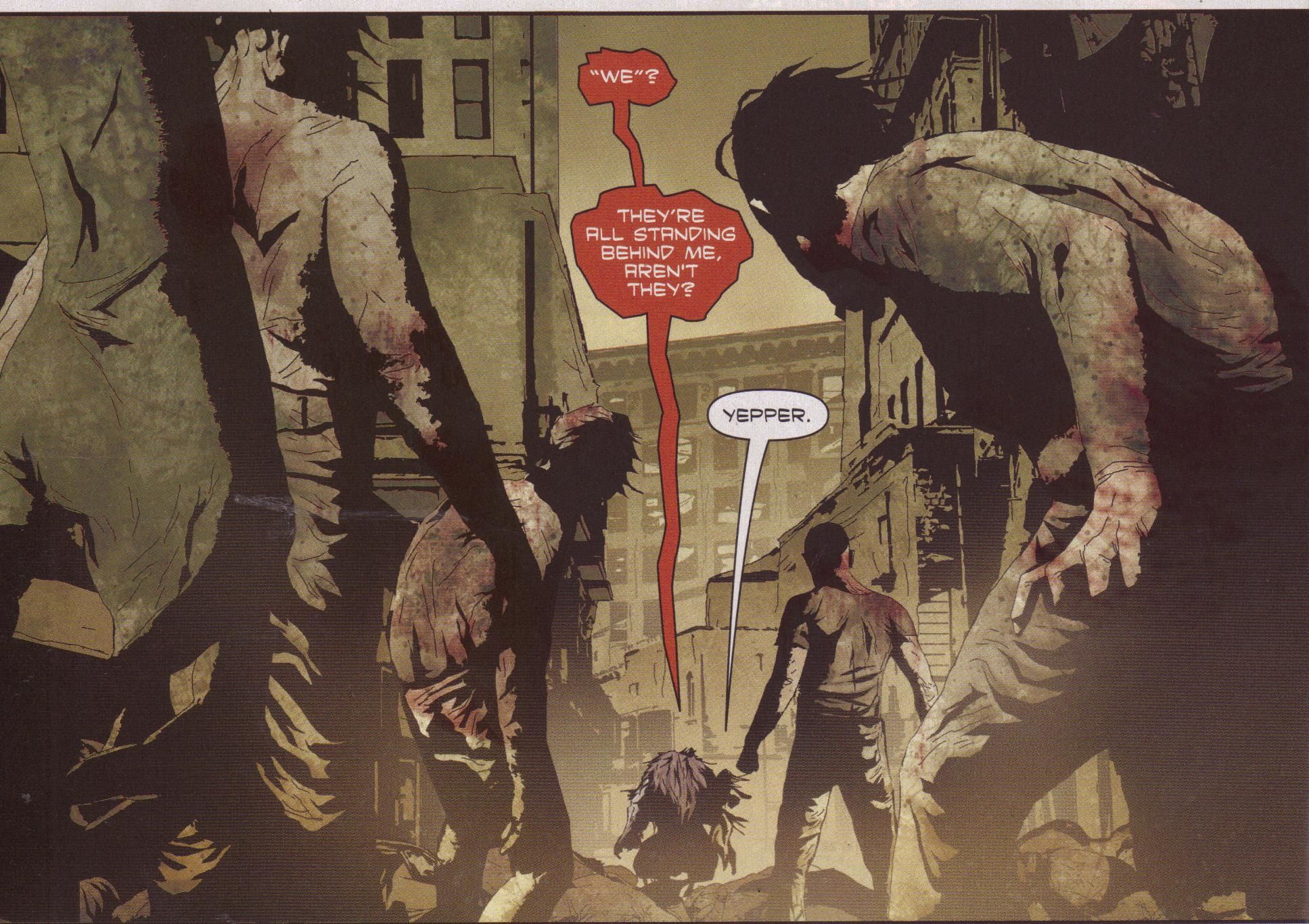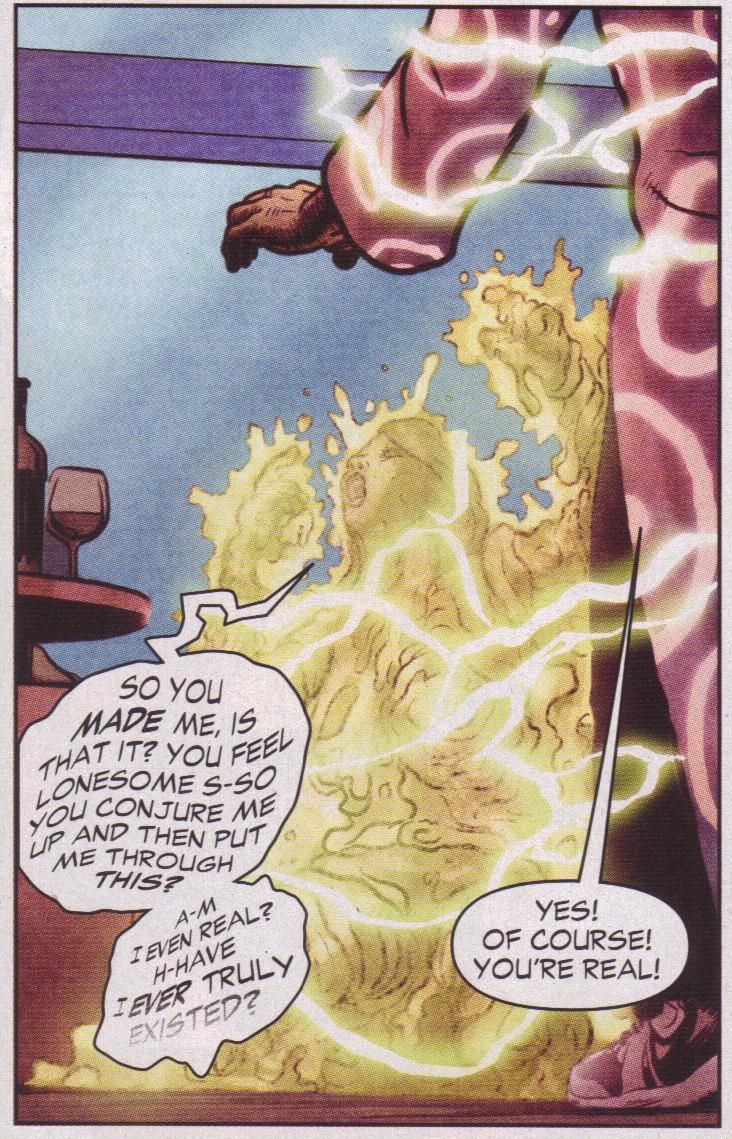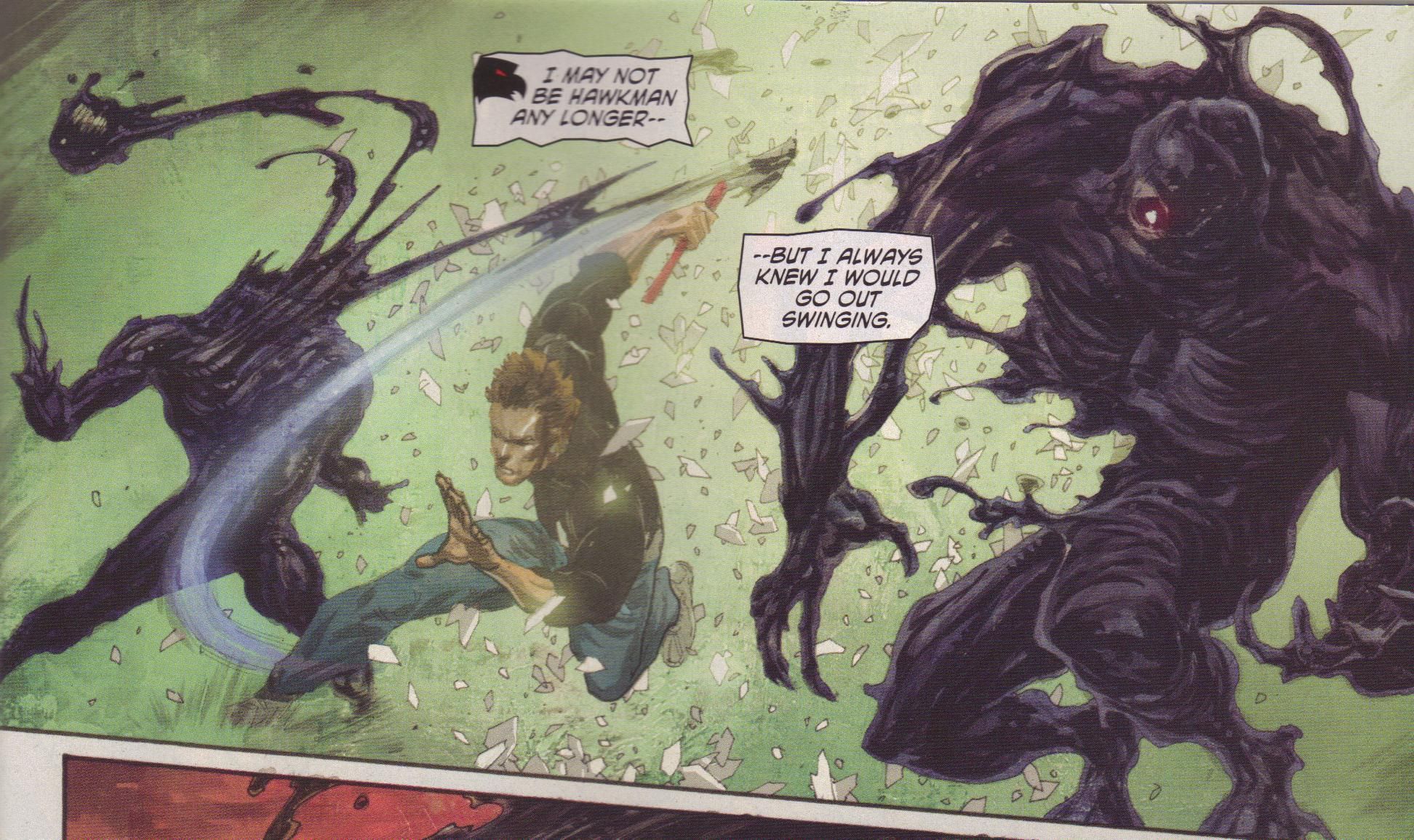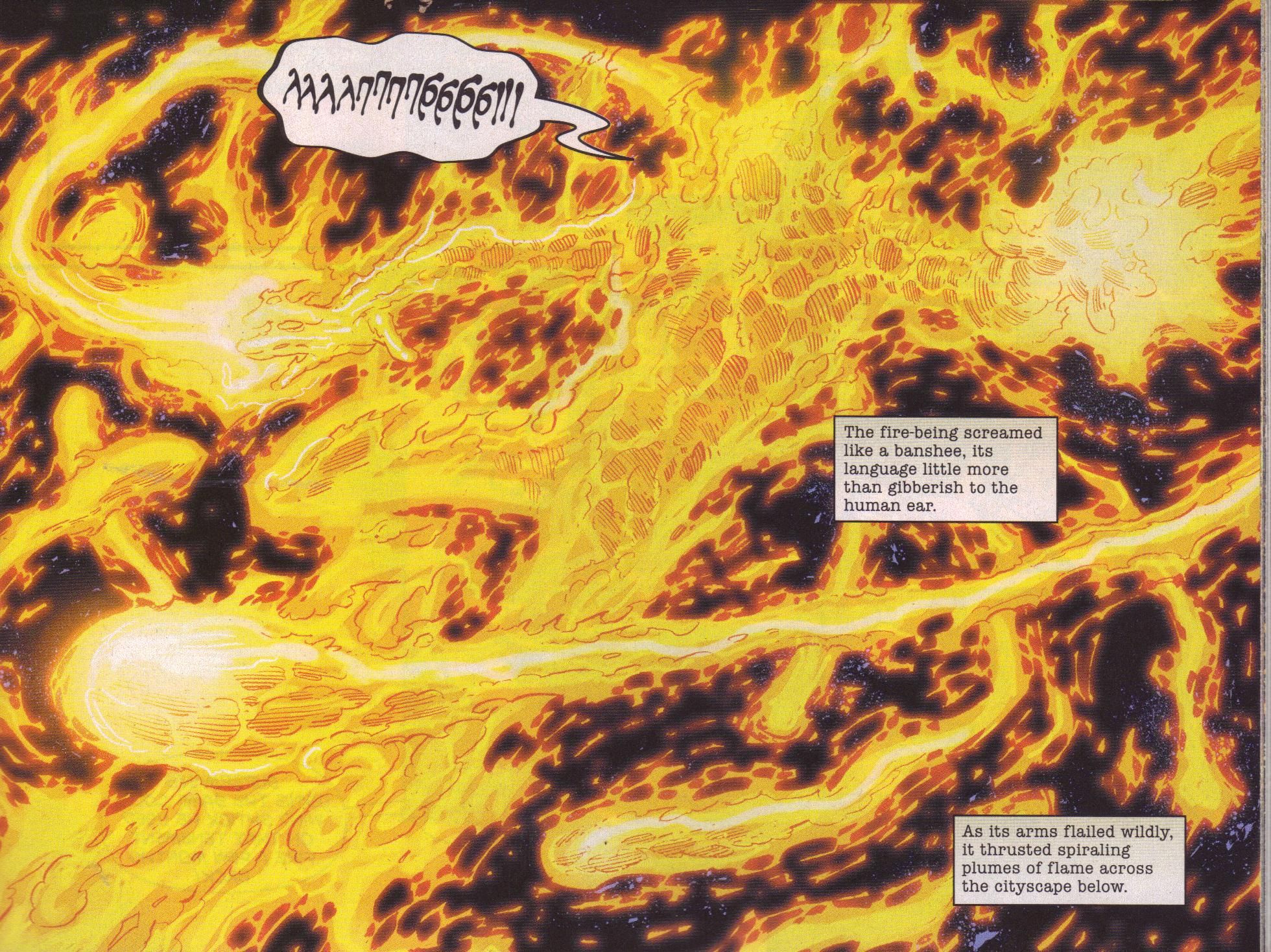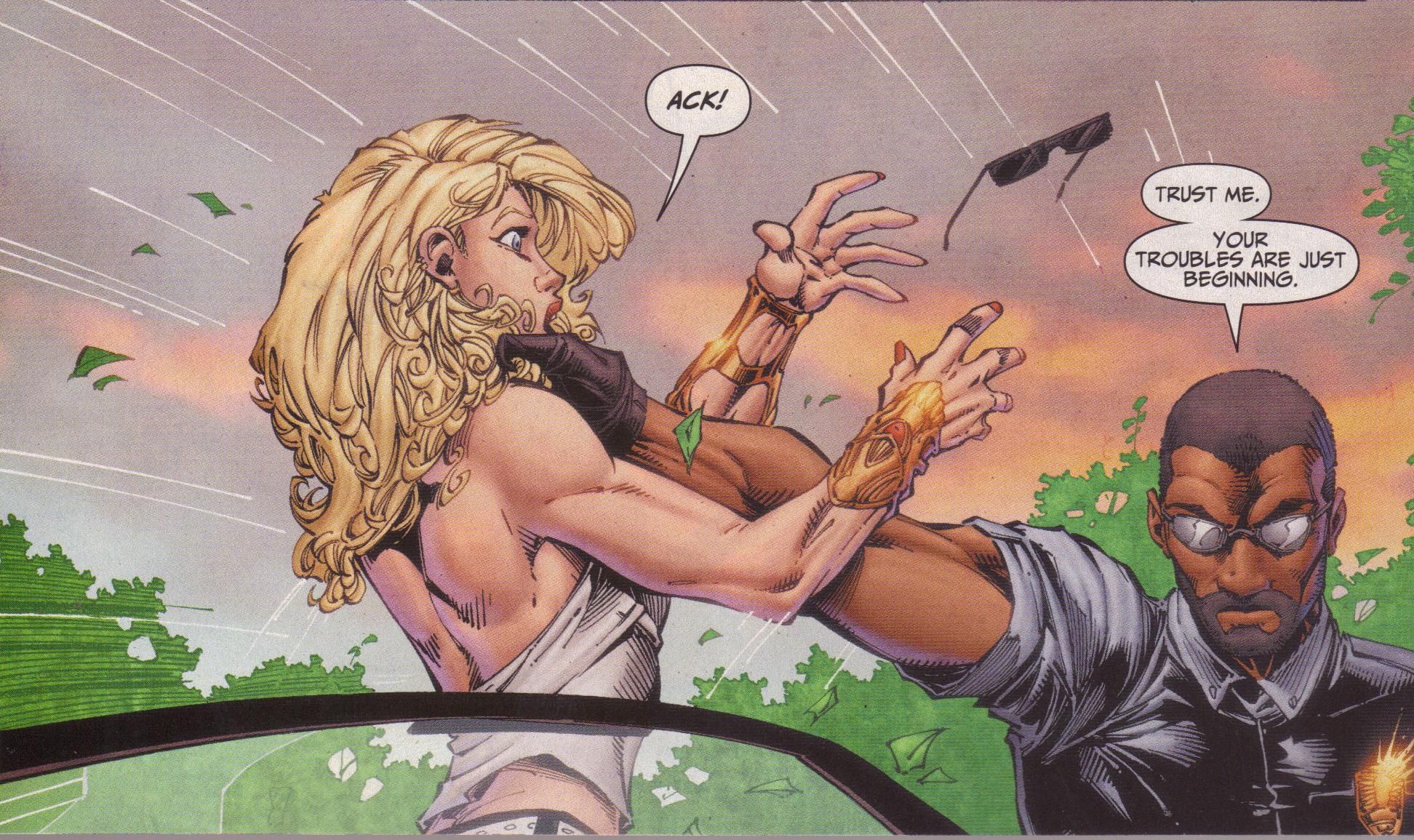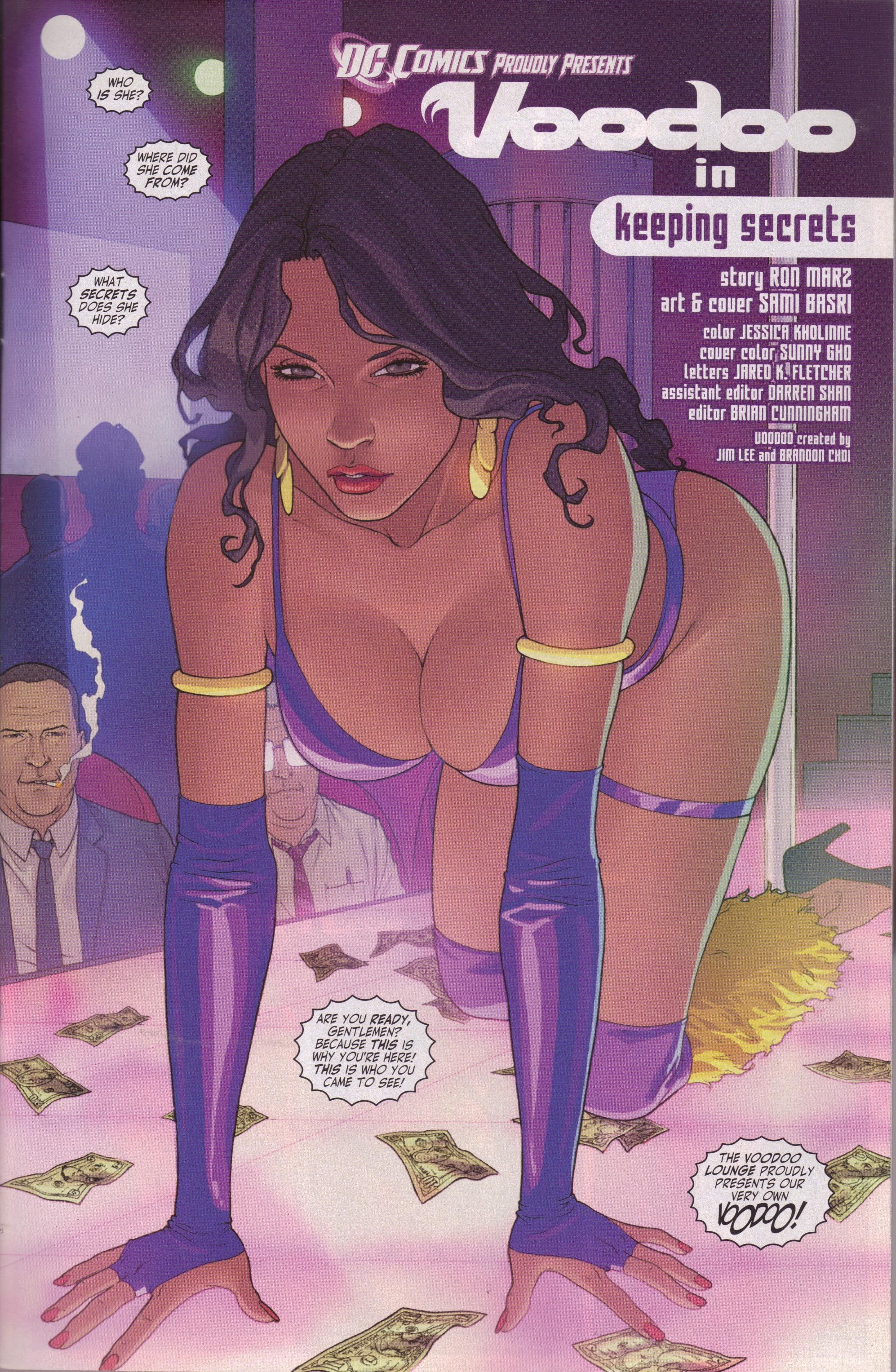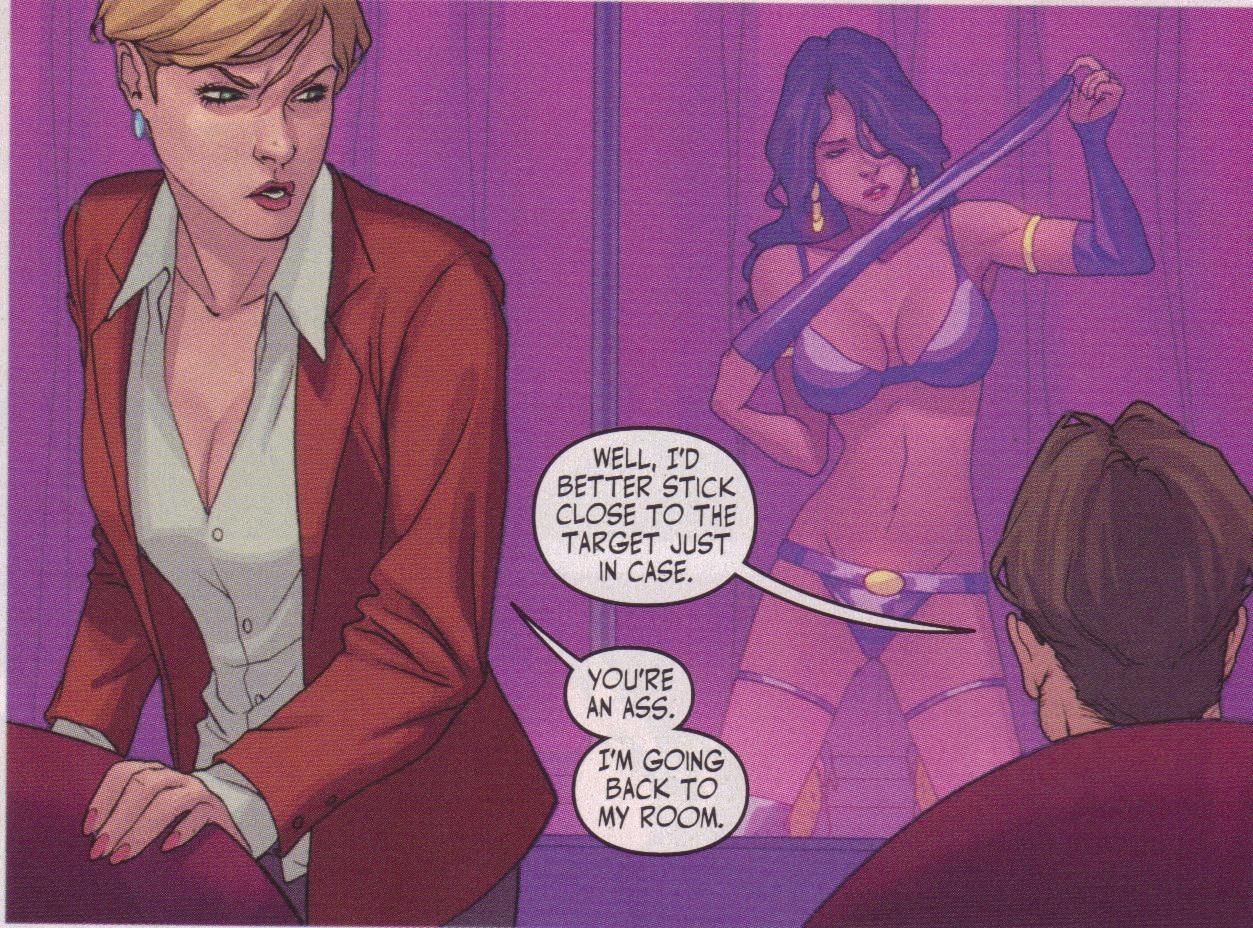Oh, yes, it's time once again for something crazy like this. Brace yourselves! You might want to get a glass of water and some provisions before you start reading. It's a long one, in case you can't guess.
Okay, so after I reviewed every single DC comic in January, I still had a chunk of credit left at my comic book store. I was going to pick a month and review every Marvel comic, but then Danny D. and DC did something crazy like reboot their entire line, so of course I had to use the credit to pick up every issue of the 52 number ones. Will I retain my sanity after reading every one of these? You be the judge! I'm going to review these in the order they came out, so I'll start with Justice League #1 and go through each week. In response to a few people who thought I should have done these in the weeks they shipped, well, I have many reasons for not doing them those weeks even though others did. But I do know that some people don't get to the comic book stores every Wednesday, and some are waiting for trades, and some just like to argue with me because they've already read the issue and take offense at something I might have written. It's my post, so I can post it whenever I feel like it! So let's have some fun, okay?
Justice League by Geoff Johns (writer), Jim Lee (penciller), Scott Williams (inker), Alex Sinclair (colorist), and Patrick Brosseau (letterer). $3.99, 24 pgs, FC.
Well, this comic certainly exists, doesn't it? This is kind of a hot mess, and people across the comics blogaxy have weighed in, and I doubt if I have anything else to add (but, of course, that won't stop me from trying). I certainly can't call it a good comic in any sense, but it's perversely fascinating nevertheless. I assume everyone knows the basic plot: Batman is being chased by the cops through Gotham City "five years ago," all while chasing down a parademon (which is never identified as such in the comic, but that's okay). Into this fray steps Green Lantern, who tells Batman he's (GL, that is) a space cop. They track down the parademon, who puts something on a wall in a sewer and blows up for no discernible reason. Before it explodes, it screams "For Darkseid!" GL and Batman find the thing it placed on the wall, which looks like a mother box. However, GL can't identify it even though the ring knows everything the Guardians know, and "the Guardians know everything." Obviously the New Gods aren't very high-profile in this new universe. Batman thinks it looks like an "alien computer," which makes GL think of Superman, who's an alien. He'd know about it, because those aliens are all the same anyway, right? So they fly off to Metropolis, where Superman smacks GL around and confronts Batman. Meanwhile, we get a four-page interlude where Vic Stone, playing high school football, feels bad because his dad doesn't come to his games (can you hear "Cat's in the Cradle" playing on the soundtrack, 'cause I sure can). He's a star with a lot of scholarship offers, but his dad doesn't come to his games. The only other thing we learn is that Vic's dad "studies" superheroes. So there's that.
There are two ways to look at this issue: As a single issue in a longer story arc, or as the foundation for the Shiny New DC Universe. If we regard it as the former, it's a fairly standard superhero comic - absolutely mediocre, to be sure, but not in any way objectionable. If we regard it as the latter, it's pretty much a failure. Johns introduces three heroes (I don't count Vic Stone, because he's not a hero yet), and none of them act terribly heroic. Batman is a pompous ass, Green Lantern is a pompous ass, and Superman is ... well, he's a pompous ass as well. Hmmm. Now, these characterizations (they're different kinds of pompous asses, so there's that) aren't bad in theory, but not as the first issue of a new universe. The idea that heroes aren't well established and that they don't trust each other is one thing, but for none of them to act particularly heroically is kind of strange. Does DC want new readers to pick up these books or not? I'm not sure new readers want to read a comic about three douchebags. Meanwhile, Vic Stone is a non-entity as a character - yes, he only appears in four pages, but shouldn't that be long enough to establish some sort of personality for him? Plus, if you're a new reader, wouldn't you be expecting to see the Justice League? Long-time comic readers are used to this kind of stuff, but if you're this mythical "new reader" that DC wants, this issue isn't very good. If DC is not trying for the first-time comic book reader but to lure back readers who dropped their books in recent years, why does this comic read like almost every other superhero comic from the past 10 years? There's nothing unique or interesting at all about this comic, and even attempts at clever repartee like Batman's and Green Lantern's bantering about their powers that leads to Batman somehow getting Green Lantern's ring off (which is one of those "clever the first time but more idiotic the more you think about it" ideas) fall short. From the pace of this issue, this feels like a 6-issue arc, only at the end of which will the Justice League be assembled completely. It's frustrating.
Here's the thing: Somewhere (I can't find the source) Dan DiDio was quoted about wondering why the audience has shrunk so much from the heyday of the 1990s. Well, this is his attempt to fix that: Justice League looks and reads like a comic from 1992. Jim Lee, who can be brilliant, is never helped by Scott Williams inking him (and yes, I'm aware that Scott Williams is his usual inker, which is why Lee's never become the superb craftsman he could be), and he's not here. As usual with writers and artists who take their superhero comics too seriously, the attempts at "realism" might make sense (Batman probably would wear armor) but they take away the sheer joy of superhero comics. Green Lantern's constructs are a bit more fun, but they're still very "serious." Lee never met a windblown hair style that he didn't like, and GL's facial expression when he leaps toward the parademon right before it explodes is positively Liefeldian. Lee apparently hasn't seen a football game in the past 20 years, or he'd know that those half shirts are ridiculously dated. His page layouts, which have never been a strong suit, fail him on the Vic Stone page, where Vic somehow leaps so high in the air the American flag frames his body and the layout on the page sends the eye all over the place, never able to really get comfortable with the way it's going (plus, Johns shows that Vic's team is awfully unsportsmanlike, throwing deep passes while leading 42-0). Somehow Vic, who's inside the locker room, hears the cheerleader shouting about GL's plane flying overhead, and he makes it outside in time to see the plane (the cheerleader's line is the only line of dialogue by a woman in this book, by the way). Lee's strengths - dynamic fight scenes and cool-looking shit - are on display nicely in the book, but so are his weaknesses. Johns' script, which features all the clichés of a 1990s comic - heroes fighting each other! - should make Dan DiDio happy, because this is basically what he wants from his comics.
I know that I've gone on about this comic more than I probably should, but it is the first comic in a line-wide reboot, so it should be the kind of foundational comic that Action Comics #1 or Fantastic Four #1 were. It's not, but it also doesn't seem like the kind of comic that's going to please non-comics readers or even old comics readers who have been driven away from DC books. No, it doesn't feature gallons of blood, but it does feature non-heroic "heroes" being dicks to each other and failing to do anything particularly heroic. It's certainly not good enough to get me to come back.
In the interest of keeping track of diversity, which seems to be a hot-button topic these days, I'm tracking some statistics. These are offered without editorial comment - I'm simply tracking statistics. Make of them what you will.
Speaking parts for white men: 14 (non-speaking parts: 16, give or take*)
Speaking parts for women of all ethnicities: 1 (non-speaking parts: 4, not including the Flashpoint chick**)
Speaking parts for black people (men or women): 1 (non-speaking parts: 8 ... mostly football players)
Speaking parts for Hispanics (men or women): 0 (non-speaking parts: 0 ... but it's hard to tell)
Speaking parts for any other minority (men or women): 0 (non-speaking parts: 1 - a woman in the stands might be Asian?)
Speaking parts for known gays or lesbians: 0 (non-speaking parts: 0)
Speaking parts for disembodied voices: 1
* The non-speaking parts are somewhat fluid, as I can't count every single person in every single panel and some might show up again, but from a different angle that makes them look like two different people.
** I won't include the Flashpoint chick in any of the non-speaking parts tally, just so you know.
Violence update!
Number of sentient, organic creatures who die violently, either on-panel or slightly off-panel, including creatures whose deaths are not shown but their bodies are: 1
Cameo by the Flashpoint chick? On page 18, in the bleachers at the football game, watching Vic Stone.
Rating: ★ ★ ★ ★ ★ ☆ ☆ ☆ ☆ ☆ (As a regular comic)
Rating: ★ ★ ☆ ☆ ☆ ☆ ☆ ☆ ☆ ☆ (As an introduction to the New DCU)
One totally Airwolf panel:
Action Comics ("Superman Versus the City of Tomorrow") by Grant "I put him in jeans and work boots just to watch my fans try to justify it, fanboys!" Morrison (writer), Rags Morales (penciller), Rick Bryant (inker), Brad Anderson (colorist), and Patrick Brosseau (letterer). $3.99, 29 pgs, FC.
Morrison has an affinity for the 1930s populist Superman, and he channels that in this comic, right down to the ridiculous jeans and work boots. (Implying that Superman, an alien with fantastic powers, is one of the "common people" even though he was raised on a Kansas farm cracks me up, like the way Bruce Springsteen, whose net worth is somewhere around $200 million, still tries to pretend he's one of the "common people.") It would be a far more interesting comic if Morrison bothered to investigate Midwestern farm life in the 1980s and 1990s and showed a Superman raised in that environment (would he be a fundamentalist Christian?) rather than showing us a Superman who, for all intents and purposes, was raised on a Depression-era farm, but I guess that sort of nuance is beyond the purview of a superhero comic writer. That doesn't mean this is a bad comic, just not a terribly deep one, as Morrison presents us with a ridiculous villain in Lex Luthor, who somehow gets away with destroying a tenement with people still inside it, all with the approval of the United States military (as cynical as I am about the government and the military and the corporate influence on government and the military, even I have a hard time swallowing that). The dialogue is wildly artificial (which sometimes is a good part of Morrison's writing), from someone actually saying "I'm teetotal" (what year is this?) to Mr. Glenmorgan saying "Somebody! Save me!" to "Say it to the guns!", and in this instance, it heightens the disconnect between the fact that this is a superhero book and that Morrison wants to have Superman deal with some social issues. That the dialogue is ham-fisted isn't surprising; subtlety has never been a Morrisonian byword with regard to characters speaking (which is surprising, given how subtle he can be with weaving a story). The plot, however, hums along, even with the idiocy of Luthor's plan, and if we ignore the disconnect between the two disparate tones, this is not a bad comic. As much as I wasn't dazzled by All Star Superman (a good, but not great, Superman story), Morrison kept it rather firmly in the realm of Silver Age sci-fi nonsense, and that made it a better read. If he's serious about Superman as "defender of the people," he has to make the bad guys more compelling and more real-life. Luthor shooting a train at Superman doesn't count.
Meanwhile, Rags Morales does a nice job. Superman is muscular but not insanely so, Lois is cute, and Lex is oddly effeminate without being obnoxiously so. The fight scenes are well done, but Morales (or perhaps Morrison) drops the ball in a couple of places, including the first page, unfortunately. The storytelling on the first page is poor - there's no other way to put it. And then there's the weaselly dude who's hanging out with Mr. Glenmorgan, who leaves the building seemingly unmolested even though Blake tells someone to escort him down and, from the way Morales draws him, has something evil in mind. What is it, though? We never find out (and why does he have Glenmorgan's tie?). The train sequence is weird, too. Gus Grundig gets on board, and we see something that looks like a bomb counting down. A bolt comes loose from the wall where the "bomb" is placed. We have no context for where this bomb is, but I'm going to assume it's on the support structure that collapses later. I'm also going to assume that the dude watching the train from the car is the same weaselly dude who escaped the tower, although I'm not sure. And I'm also going to assume that Grundig's presence on the train is completely coincidental and has nothing to do with Luthor's plan. Except Grundig is heading for the driver's car. Why? Finally, did you notice that as the train hurtles forward, out of control (why is it going so fast?), Lois and Jimmy manage to tie Grundig to a pole with his belt? Man, that's some impressive thinking and ability, there. Anyway, maybe this all makes sense to you. Perhaps you could explain it.
Now, I enjoyed Action Comics. You might wonder why, and it does have something to do with my enjoyment of Morrison's writing. He has a way of getting us involved very quickly, with a ton of things seemingly going on and an energetic and brisk script. I'm intrigued by the direction in which he's going, but I do think he needs to think about it a little more. You can't make Superman more "realistic" without making his world more realistic, either. If that's the tack he wants to take, he needs to go further than he has.
Diversity update!
Speaking parts for white men: 15 (non-speaking parts: 38)
Speaking parts for women of all ethnicities: 3 (non-speaking parts: 14)
Speaking parts for black people (men or women): 0 (non-speaking parts: 12)
Speaking parts for Hispanics (men or women): 1 (maybe - the woman who asks if he can jump over Metropolis tower might be Hispanic) (non-speaking parts: 0 ... but again, it's hard to tell)
Speaking parts for any other minority (men or women): 0 (non-speaking parts: 1 - a train commuter on page 22 might be Asian?)
Speaking parts for known gays or lesbians: 0 (non-speaking parts: 0)
Speaking parts for disembodied voices: 2
Violence update!
Number of sentient, organic creatures who die violently, either on-panel or slightly off-panel, including creatures whose deaths are not shown but their bodies are: 0
Cameo by the Flashpoint chick? On page 16, in the bottom panel, sitting on the train as Supes tries to stop it.
Rating: ★ ★ ★ ★ ★ ★ ★ ☆ ☆ ☆
One totally Airwolf panel:
Animal Man ("The Hunt Part One: Warning From the Red") by Jeff Lemire (writer), Travel Foreman (artist), Dan Green (inker), Lovern Kindzierski (colorist), and Jared K. Fletcher (letterer). $2.99, 20 pgs, FC.
Jeff Lemire is a good writer (even if I don't love everything he writes), so it's not surprising that this is one of the best comics of the first week's batch, even with the wonky art (which I'll get to). Lemire manages to introduce Buddy Baker's family and give us a great deal of background in just a few pages, show Buddy doing superhero stuff, and introduce the main plot, which is filled with creepy horror stuff - all in 20 pages! If Geoff Johns likes Lemire's writing so much, why doesn't he learn some stuff from it?
There's a lot to like about the way the book is structured - Buddy and Ellen's conversation sounds like two long-time married people talking, with both of them zipping from topic to topic quickly but always staying on point. It's not "clever" in the way Morrison, for instance, writes dialogue, but the way it shifts sounds like two people talking in a chaotic environment. The book moves quickly to the hospital, where a man is holding kids hostage in the cancer ward and Buddy needs to do his superhero thing. Lemire, naturally, has Buddy talk to the guy about his own family, and he drops a nice Easter egg into Buddy's internal narration when he thinks about what would happen if he ever lost his own kids (I can't quite remember if Buddy "remembers" losing his kids during Morrison's run or not, or if Morrison the character allowed him to forget). Buddy's powers go a bit weird, setting up the final act of the issue, where Buddy dreams horrible dreams and Maxine does something creepy. It's a very effective way for Lemire to set up the three aspects of Buddy's life: his family, his superhero career, and the horror that took over his life once the comic went Vertigo back in the day. Let's hope this means Lemire has plans to include all three of these aspects during his run on the book.
I run hot and cold on Foreman's art, and this book is a good reason why. He goes a little wacky with the page layouts in the conversation between Buddy and Ellen, and it's for no discernible reason. But he does a nice job with the faces and the body designs (how nice that Ellen actually looks like a normal woman) and the clothing, which is nice. The hostage situation is a bit more problematic, because Foreman's strength has never been fluid action, and that's what Lemire calls for in this section, and it looks a bit more stilted than it should. But Foreman comes back with solid work on the horror section - the creatures that Buddy sees are nice and horrific, and giant Mr. Woofers is suitably weird and eerie. Overall, the art is good, although some specific details bugged me. First of all, Cliff has the same mullet kind of hair he wore in the late 1980s ... but it's not the late 1980s anymore, and one presumes that Ellen would have gotten him a haircut in the past 20 years. Buddy's costume features that ridiculous head covering that Havok made famous and comic book artists can never quite get away from, and it looks, well, ridiculous. Finally, that doctor who treats Buddy when his eyes start bleeding freaks me out. He has weird ringlets as a hair style, and he honestly looks like he dropped in from ancient Greece and should probably get back to the naked, oiled wrestling camp soon. Yes, everything that are odd about Foreman's art are about his heads in some way. It's strange.
This is a pretty good first issue, though. Lemire knows horror enough that he's probably going to do well with that aspect of the book, and he's gotten better at the superhero stuff recently. I can live with Foreman's art, especially because he does seem to be willing to try new techniques and experiment with his style, and I dig that.
Diversity update!
Speaking parts for white men: 5 (non-speaking parts: 8 )
Speaking parts for women of all ethnicities: 2 (non-speaking parts: 6)
Speaking parts for black people (men or women): 0 (non-speaking parts: 1)
Speaking parts for Hispanics (men or women): 0 (non-speaking parts: 2 ... I think)
Speaking parts for any other minority (men or women): 0 (non-speaking parts: 0)
Speaking parts for known gays or lesbians: 0 (non-speaking parts: 0)
Speaking parts for disembodied voices: 0
Violence update!
Number of sentient, organic creatures who die violently, either on-panel or slightly off-panel, including creatures whose deaths are not shown but their bodies are: 1 - yes, it's in a dream, but still.
Cameo by the Flashpoint chick? On page 12, in the bottom panel, among the ward patients.
Rating: ★ ★ ★ ★ ★ ★ ★ ½ ☆ ☆
One totally Airwolf panel:
Batgirl ("Shattered") by Gail Simone (writer), Ardian Syaf (penciller), Vicente Cifuentes (inker), Ulises Arreola (colorist), and Dave Sharpe (letterer). $2.99, 20 pgs, FC.
And then there's Batgirl. Sigh. Okay, let's get the good stuff out of the way. Syaf's art looks a lot better than it has in the past, even though I'm not terribly familiar with his work. It's clear, concise, very superheroic, and the few experiments with point of view work out well. It's not revolutionary in any way, but in today's comics culture, it's not damning with faint praise to say that the art doesn't confuse me at all. That's a horrible indictment on today's comics culture, but there it is. Syaf does a nice job.
I like the villain, too. The Mirror is a weird, pulpy villain who has a list of names and is killing the people on it because they survived some accident which ought to have killed them but didn't, so yeah, it's like Final Destination (but I still dig him). He doesn't appear to be superpowered, yet he causes his victims to look at his chest and see something horrible (it can't be his pecs, because you can just tell he's hunky underneath that costume!). And his costume is cool - black body suit and hood, what appears to be a shattered mirror mask, a big silver disc on his chest that forces people to see their "true face," plenty of pouches for Hershey's Kisses, probably - and I assume Syaf did that, so score another one for him. The book is crowded, but it looks fairly good - I guess no one can design a good outfit for Batgirl, as Barbara's looks as obnoxious as Stephanie's did - and "superheroic." So there's that.
As for the writing, with the exception of the Mirror, Simone has a horribly unenviable and editorially mandated task of making Barbara Batgirl again and she doesn't really do much with it. Where the script isn't forcing humor, it's insulting. Where it's not excessively pollyanna, it's dumb. After the first two pages, where the Mirror murders his first victim (with Simone's good use of black humor), it goes downhill quickly. And yes, I am going to discuss the weird way Barbara gets to walk again. So there. I get that in this first issue, Simone needed to hit the ground running so we're going to have to wait to find out how she's able to walk again, but that doesn't mean this is handled all that well. Consider: the Joker shot her three years ago. Some people believe that Simone implies that she never became Oracle because she gets her information from the cops instead of her computer system. Maybe, but I don't think so (Barbara implies she was still Oracle in the narration). It is a bit strange that she doesn't have all her computer gear, but I'm willing to give Simone the benefit of the doubt and believe it's packed away until she can get her own place (although now that she's living with a roommate, how will she explain it?). I'm also willing to give Simone the benefit of the doubt with regard to the "miracle" that got her out of the chair, even though I suspect, deep down, that it's going to be something idiotic. But she's back to being Batgirl? Already? We have no idea how long she's been out of the chair, but it would have to be some time, because somehow not only is she able to walk, but she's able to do gymnastics even after her leg muscles (presumably) atrophied. So she was in a chair for how long - two years? - and then a "miracle" occurred that allowed her to walk again, and then she had to work out to get her body back to fighting strength. The timeline doesn't make a whole lot of sense, but while Simone addresses the fact that she's "rusty," she doesn't address the fact that her body, which would have to be in peak physical condition to swing around Gotham, would probably NOT be in peak physical condition - not even close, actually. I know people who have recovered from physical injuries like Barbara's have gone on to do some pretty amazing things, but that's after some years of therapy and even then, it's a struggle. Some people might say that I shouldn't demand so much "realism" in my comics, but like I always do, I point out that I'm not the one putting realism in my comic books - the writers are. If they're going to put it in, they need to deal with it "realistically."
Simone's psychological exploration of Barbara's shooting is a little better, although the final page, where Detective McKenna calls her a "murderer" because she froze thinking about the Joker shooting her, is a bit much. McKenna can't be that stupid (the actual murderer is standing in the room with them!), and the fact that Barbara believes her is idiotic, too. I mean, even if she does believe her, Barbara can point out that the dead guy was a brutal murderer, and maybe no one should shed too many tears for him. So the drama of the hospital scene is lessened a bit by the silly way the book ends.
Finally, there's the roommate, Alysia. She's a stereotype, which is kind of annoying. Her brief introduction is what non-fans of Simone often point to when they criticize her writing - she's forcing humor (no one intelligent would make the joke about Barbara being named "Gordon Barbara Gordon," and then she shortens it to "GBG" later!); she's an "activist," which means she paints "Fight the Power" on her own wall, which makes no sense; and she shifts from being a bit scornful of Barbara to hugging her in the course of a few pages. It's very odd, and it would be nice if Simone could get past bolting personality traits onto her and making her a real character, because she'd probably have a nice dynamic with Barbara.
There doesn't seem to be any reason whatsoever for this book to exist, especially when DC had a perfectly good Batgirl comic that they could have shifted over to the DCnU (although I guess sales weren't great on it, which is too bad). Simone has shown in the past few years that she's really good with nasty stuff, but tonally, that would be off for this comic (despite the fact that I like the Mirror, he and the home invasion section feel strangely out of place in a Batgirl comic). Just the fact that Barbara insists her name is "Batgirl" rather than "Batwoman" seems to imply that Simone herself is uncomfortable with writing the adventures of an ostensible "girl" (Barbara has been "de-aged," but if she was Batgirl before the Joker shot her and that was three years ago, she has to be in her mid-20s, right? and that's not even counting the fact that she was a Congresswoman, meaning she had to be at least 25 when that happened). This feels like it ought to be more light-hearted than it is, yet Simone doesn't seem like the perfect choice for that, as she has gotten better at the darker stuff (even Welcome to Tranquility, with its proliferation of superheroes, was a pretty dark comic). So the tone of this book is all over the place, and that's part of the reason it doesn't really work.
Oh well. Let's move on!
Diversity update!
Speaking parts for white men: 9 (I'm counting the Mirror, because I'll be surprised if he's not white) (non-speaking parts: 4)
Speaking parts for women of all ethnicities: 5 (non-speaking parts: 1)
Speaking parts for black people (men or women): 1 (I'm counting Detective McKenna - she might be Hispanic, for all I know, but she's definitely "not-white") (non-speaking parts: 1)
Speaking parts for Hispanics (men or women): 0 (non-speaking parts: 0)
Speaking parts for any other minority (men or women): 1 (non-speaking parts: 0)
Speaking parts for known gays or lesbians: 0 (non-speaking parts: 0)
Speaking parts for disembodied voices: 0
Violence update!
Number of sentient, organic creatures who die violently, either on-panel or slightly off-panel, including creatures whose deaths are not shown but their bodies are: 3
Cameo by the Flashpoint chick? On page 19, in the bottom panel, reflected in the window of the hospital room.
Rating: ★ ★ ★ ★ ½ ☆ ☆ ☆ ☆ ☆
One totally Airwolf panel:
Batwing ("The Cradle of Civilization") by Judd Winick (writer), Ben Oliver (artist), Brian Reber (colorist), and Carlos M. Mangual (letterer). $2.99, 20 pgs, FC.
I am not a Judd Winick fan when he's not writing Barry Ween, so I kind of dreaded reading this, especially as DC seems convinced that Africa is a continent about the size of Connecticut (and I'm not convinced they know it's not one country, either). However, Winick's writing in this comic is pretty strong, despite his love of carnage - yes, the book is unpleasant, but it's a Bat-book, so that's kind of par for the course, and there does seem to be a mystery behind the massacres (by some dude named Massacre - now that's good naming!), so they're a bit deeper than just some guy wanting to slaughter everyone (unlike the comic below this). So there's that.
The main character, David Zavimbe, is also pretty intriguing. He works in the police department in "Tinasha," a fictional city in the Democratic Republic of the Congo (I like how they use an actual country but don't call the city "Kinshasa," but that's neither here nor there). If you pay any attention to world news, the Congo is not a pleasant place to live, given that a war raged there until recently that killed more people than any other war since World War II, and Winick, while not getting into that too much, gives us a drug-running warlord (which implies a fiefdom inside the country) and a corrupt police force. He begins with Batwing fighting Massacre (apparently in Egypt, to which I'll return) and then goes back six weeks, where the mystery of Massacre begins. He investigates as much as David as Batwing, which is also nicely done. I'm not entirely sure how Winick is going to write his way out of the ending, but I'm sure he has a plan!
It's a fairly intense little story, aided by David's narration, which is terse but informative. I do hope that Kia Okuru, the slightly corrupt female cop, survived the second massacre - she's an interesting foil to David because she implies that she does take bribes but offers a justification for it (a justification that is perfectly valid in the "real" world, by the way) and because she's the only character in the story who's not connected to Batwing or a villain. After 20 pages of this book, we have a clear idea of David's and Kia's personalities, even if they're a bit stereotypical (Kia actually tells David he needs to get his ass out from behind a desk and hit the streets if he cares about the people so much). Plus, as I mentioned, there's a nice little murder mystery going on.
Ben Oliver's artwork is where the book falls apart. It's that slick, thin-line pencil-and-ink work that allows Brian Reber's coloring to overwhelm it, so that everything looks soft-focused, as if we're viewing it through a slight haze. Oliver needs to use heavier lines to give the characters some heft, because he completely fails to provide much in the way of background. We know most of the book takes place in the Congo because Winick tells us it does, but Oliver barely shows anything in the scenes that would convince us of that. When the warlord is trying to escape, he's driving across grass, but that's it. We get one shot of the actual city, and some extreme close-ups on vague and indeterminate streets. When David sees the first massacre, we get a panel of him silhouetted in the foreground and a shantytown in the background. He narrates "Then I see it. I see what he fears" and then, on the next page, there's a close-up of the massacre site. The scene shifts quickly with no context: Batwing is confronting the warlord, who's freaking out, and then we get the panel of him looking at the city, with the narration implying he's just looked up from the warlord and sees the massacre. However, the warlord appeared to be escaping on a savannah somewhere far from town. So where did all the buildings come from? Then, the massacre site looks completely out of place, because when David is looking at the shantytown, we see no small hint that he's looking down at anything horrible. It's very poor storytelling and panel layout by Oliver, and the lack of background hurts him quite a bit. In the first few pages, Winick drops Batwing and Massacre at the pyramids, which of course are what, 2000 miles away from the Congo? I know this is six weeks after the main action and I know it will be explained how they got there, but it's still a bit troubling. Anyway, Oliver is terrible with the backgrounds there as well, and what could be a grand battle with 5000-year-old structures looming behind them becomes a claustrophobic affair that seems to take place in a room with brown walls. It's quite annoying. (And if we do get a longer shot of the pyramids when the battle moves there, I do hope Winick and Oliver realize that they're pretty much right next to Cairo and NOT out in the middle of nowhere like they're usually shown ... in fact, they're building houses on the opposite side of the pyramids these days, so soon they'll be completely surrounded by buildings.)
Batwing was a pleasant surprise in terms of story, but Oliver's art really makes it a tough slog. Given that this is DC trying something new instead of yet another retread, I really want this book to do well, even if I'm unsure whether I'll get the first trade. But Oliver's art makes it hard. Dang it.
Diversity update!
Speaking parts for white men: 1 (and it's Batman!) (non-speaking parts: 0)
Speaking parts for women of all ethnicities: 1 (non-speaking parts: 0)
Speaking parts for black people (men or women): 7 (non-speaking parts: 6 - I'm not counting the two mounds of corpses, but I am counting the primary victim)
Speaking parts for Hispanics (men or women): 0 (non-speaking parts: 0)
Speaking parts for any other minority (men or women): 0 (non-speaking parts: 0)
Speaking parts for known gays or lesbians: 0 (non-speaking parts: 0)
Speaking parts for disembodied voices: 0
Violence update!
Number of sentient, organic creatures who die violently, either on-panel or slightly off-panel, including creatures whose deaths are not shown but their bodies are: 17 that I can count.
Cameo by the Flashpoint chick? On page 17, in the top panel, standing behind the police van.
Rating: ★ ★ ★ ★ ★ ½ ☆ ☆ ☆ ☆
One totally Airwolf panel:
Detective Comics by Tony Salvador Daniel (writer/penciller), Ryan Winn (inker), Tomeu Morey (colorist), and Jared K. Fletcher (letterer). $2.99, 24 pgs, FC.
Tony Daniel is not a good writer, even though I've barely read anything he's written - I can just tell, man! He's been writing Batman-related comics for some time now, and I really want to believe he's writing it with tongue firmly in cheek, but I doubt if he's that subtle. Here's the first page, with Batman narrating:
One-hundred fourteen murders over the past six years. That's nineteen a year. And I can pin them all on him, even if the courts can't. Women, children and men. Asphyxiation, bullets, beheadings ... as well as homemade poisonous laughing gas. His modus operandi changes with the wind ... and it's been windy in Gotham City.
Yeah. It's like bad Frank Miller, and Frank Miller veers toward self-parody anyway, so please tell me that Daniel is having some fun. I very much doubt it, but then, as several reviewers have pointed out, Batman later narrates: "I'm still trying to figure out what the Joker was doing naked ... does he always remove his clothes first?" Jeebus. So yeah - the naked Joker butchers some dude who's apparently trying to help him do something (we find out what it is later), the cops idiotically burst into a room where a Joker doll sits and they trigger a bomb (how many times have cops done that in fiction, and why are they so goddamned stupid?!?!?!?), and the Joker allows himself to be captured so he can get into Arkham Asylum, where he hooks up with some dude who ... cuts his face off. Yes, he really does.
It's a thoroughly unpleasant comic, with absolutely no wit and the same old boring Joker shit and the same old grim Batman. I'm so sick of this Joker and Batman, yet we keep getting them - I guess I'm in the minority and I guess this shit sells, but it's crap. Daniel's writing isn't strong enough to make insane Joker interesting - he thinks the Joker slaughtering someone in the buff is clever, and doesn't try to do anything else with it - and his art remains ugly and even, unfortunately, incomprehensible (just because Batman never sees the two knives that get him doesn't mean we shouldn't, and the fact that the Joker manages to somehow stab them extremely deep makes no sense either). This is a terrible comic. I suppose the only thing that makes it even a tiny bit interesting is that Daniel introduces a love interest, or at least the name of a love interest. Given the way Daniel writes this comic, I expect her to end up in a refrigerator fairly soon. Blech.
Diversity update!
Speaking parts for white men: 13 (non-speaking parts: 12)
Speaking parts for women of all ethnicities: 3 (two of them are girls, though) (non-speaking parts: 5)
Speaking parts for black people (men or women): 0 (non-speaking parts: 0)
Speaking parts for Hispanics (men or women): 0 (non-speaking parts: 0)
Speaking parts for any other minority (men or women): 0 (non-speaking parts: 1 - one man at the train station might be Asian?)
Speaking parts for known gays or lesbians: 0 (non-speaking parts: 0)
Speaking parts for disembodied voices: 1
Violence update!
Number of sentient, organic creatures who die violently, either on-panel or slightly off-panel, including creatures whose deaths are not shown but their bodies are: 3
Cameo by the Flashpoint chick? On page 14, in the bottom left panel, among the crowd watching Batman crash onto the police car.
Rating: ★ ☆ ☆ ☆ ☆ ☆ ☆ ☆ ☆ ☆
One totally Airwolf panel:
Green Arrow ("Living a Life of Privilege") by J. T. Krul (writer), Dan Jurgens (penciller), George Pérez (inker), David Baron (colorist), and Rob Leigh (letterer). $2.99, 20 pgs, FC.
J. T. Krul has never proven to me that he's anything more than a mediocre writer, as he seems simply to place characters into a story and send them through the most boring superhero shenanigans, and that's what he does in Green Arrow. This isn't offensively bad, it's just dull. Oliver Queen is back in Seattle for no given reason (don't get me wrong, I'd much rather DC superheroes be based in real cities than fictional ones, so I'm glad he's back in Seattle, but why?), and Krul pays some lip service to his responsibilities as the head of "Q-Core," but then it becomes just another guy fighting bad dudes (and a dudette). The most interesting pages in this comic are the two where Q-Core is at the forefront. TWO PAGES! Other than that, Oliver fights three weird bad guys in Paris - Dynamix, Doppelganger, and Supercharge - with the help of an Oracle-type sidekick and a new weapons designer. He catches them, but while they're languishing in French jail, a new group of baddies breaks them out. Yawn. Krul's writing is about as by-the-numbers as you can get, Jurgens's art is the same (it usually is), and there's absolutely nothing in this comic that makes it memorable in any way. It doesn't make me angry, it just makes my eyes glaze over.
Oh, one more thing. I would LOVE if a writer had Oliver fail to come up with the right arrow just once. Ollie has the right arrows because he's been tracking the three villains, but I would laugh if he wanted a boxing glove arrow, for instance, and just didn't have one. That would be clever, but it's beyond Krul, apparently.
Diversity update!
Speaking parts for white men: 5 (non-speaking parts: 20)
Speaking parts for women of all ethnicities: 4 (non-speaking parts: 13)
Speaking parts for black people (men or women): 1 (I'm counting Dynamix as a black man, even though he's only slightly darker, skin-tone-wise, than Supercharge, who's definitely white) (non-speaking parts: 0)
Speaking parts for Hispanics (men or women): 0 (non-speaking parts: 0)
Speaking parts for any other minority (men or women): 0 (non-speaking parts: 1 - one of the dudes on the last page is obviously Asian, because he looks martial-arty, and all Asians and only Asians know martial arts, right?)
Speaking parts for known gays or lesbians: 0 (non-speaking parts: 0)
Speaking parts for disembodied voices: 0
Violence update!
Number of sentient, organic creatures who die violently, either on-panel or slightly off-panel, including creatures whose deaths are not shown but their bodies are: 0
Cameo by the Flashpoint chick? On page 8, in the top left panel, standing in the Parisian discotheque, wearing a double-breasted trench coat.
Rating: ★ ★ ★ ★ ★ ☆ ☆ ☆ ☆ ☆
One totally Airwolf panel:
Hawk & Dove ("First Strikes") by Sterling Gates (writer), Rob Liefeld (artist), Matt Yackey (colorist), and Dezi Sienty (letterer). $2.99, 20 pgs, FC.
And then there's Hawk & Dove, with Rob Liefeld's return to the book on which he first gained notoriety. It's been a long time since I read a complete Rob Liefeld comic, so this was kind of novel. It is not by any means a good comic, but you have to admire Liefeld for sticking to his admittedly terrible guns. This is a guy who never even tries to get any better, and it's refreshing in a perverse way. The one thing I can say is that I really appreciate that Liefeld rarely uses photo-referencing (if at all; it's hard to spot) and he actually draws every single thing in his comics. Unlike, say, Greg Land, there's an old-school allure to Liefeld's work, simply because of its imperfections. Yes, the feet are weird. Yes, the perspective is often skewed for no reason. Yes, the faces are terrible. But Liefeld draws every single line on those vacant faces, people, and by God, that's something!
First, however, there's the story. This and our next first issue bring up, even more than something like Batgirl, the weirdness about this "reboot." We begin with an opening sequence where Alexander Quirk, a "science terrorist," announces that he's hijacked a plane full of "monsters of mass destruction" and he's aiming it at Washington. The fact that this comic came out the week before September 11th doesn't seem to bother Dan DiDio or anyone else at DC very much (to be honest, it doesn't bother me either, but I found the synchronicity interesting). Hawk and Dove have already intercepted the plane, which appears to contain some kind of zombies, and they're trying to stop it before it hits the Washington Monument. Of course they do (well, sort of), and they land the plane safely. Then the book gets boring, as Gates spends six dull pages recapping the history of Hawk and Dove, both the male Dove (Hawk's brother, who died) and the new Dove (Dawn Granger, who's been Dove since the first Liefeld Hawk & Dove series in 1988). Hank Hall vents to his father in the most melodramatic fashion possible, Dawn vents to Deadman (they're a couple, and no, I don't want to know how that works), Gates retcons a bit, and the story grinds to a halt. Then a zombie pops out of the Reflecting Pool (how did it get there?) and a character who looks a lot like Hawk (but isn't Kestrel) grabs it and plans to give it a good thrashing.
The action part of the book isn't great, but it's better than the expository portion. The idea of a "science terrorist" has its merits, I suppose. Hawk telling the zombie that nobody likes zombies anymore is kind of funny in a metafictional way, and the way Dove and Hawk avoid smashing into the Monument is okay. But it's the little things in the writing that make this a goofy comic. Alexander Quirk wants to unleash zombies on Washington because he doesn't like the two-party system? Really? Dove says "Kaaiw!" when she attacks, which is dumb but doesn't occur often enough to become truly surreal. We have no idea how the zombie got into the Reflecting Pool. And the exposition is painful. It does, however, indicate that everything that's happened to Hawk and Dove has actually happened, which isn't the case with every comic in the DCnU (JLI, for instance). I honestly don't care all that much about continuity, but you would have thought that someone at DC would have said either nothing happened or everything happened. Oh well.
It's Liefeld's glorious crap, though, that makes this something to behold. It begins on PAGE ONE, where Quirk's announcement is met by slack-jawed yokel stares by everyone at a coffeehouse. Hawk, of course, appears to have no neck whatsoever, while Dove's waist and hips on the cover are, unfortunately, pretty much par for the course. Hawk has vampire-like incisors for some reason (but only in some panels). Washi Watanabe, the cop who meets Hawk and Dove on the ground after they land the plane, has a giant business card that simply reads "Watanabe," which is absolutely awesome. (John Layman, writer of Chew, told me that he once had business cards that read only "Layman," and people used to be flummoxed when he handed them out. Maybe Liefeld knew that?) It's hilarious that the card just has his last name, because he seems like such a tool that everyone should just know who the fuck he is. Or maybe he appears when you say his name, so he doesn't need any contact information? And, of course, there's the fact that no male in Liefeld's world has lips, so their teeth just appear in giant, misshapen holes. I can't stop staring at the awfulness of Liefeld's artwork. You know, at least it's not bland, like Dan Jurgens' on Green Arrow, or too slick like Ben Oliver's on Batwing. Yay?
Anyway, this is a bad comic, but it has flair, which some of the other lousy comics that DC released in the first week don't have. Liefeld inks himself, which is never a good thing, and I can't imagine he's going to be able to pencil very many issues consecutively of this series, and Gates needs to stop expositing, but Hawk & Dove has style. That's something, right?
Diversity update!
Speaking parts for white men: 11 (I'm counting the two bad guys who just moan, though) (non-speaking parts: 6)
Speaking parts for women of all ethnicities: 2 (non-speaking parts: 1)
Speaking parts for black people (men or women): 0 (non-speaking parts: 0)
Speaking parts for Hispanics (men or women): 0 (non-speaking parts: 0)
Speaking parts for any other minority (men or women): 1 (non-speaking parts: 0)
Speaking parts for known gays or lesbians: 0 (non-speaking parts: 0)
Speaking parts for disembodied voices: 0
Violence update!
Number of sentient, organic creatures who die violently, either on-panel or slightly off-panel, including creatures whose deaths are not shown but their bodies are: 0
Cameo by the Flashpoint chick? On page 19, in the top panel, standing by the Reflecting Pool.
Rating: ★ ★ ★ ★ ☆ ☆ ☆ ☆ ☆ ☆
One totally Airwolf panel:
Justice League International ("The Signal Masters Part One") by Dan Jurgens (writer), Aaron Lopresti (penciller), Matt Ryan (inker), Hi-Fi (colorist), and Travis Lanham (letterer). $2.99, 20 pgs, FC.
Unlike Hawk & Dove, Justice League International seems to imply that the Giffen/DeMatteis JLI never existed. Andre Briggs, who is trying to convince the U.N. to create a team of superheroes, is even told by Mrs. Bao, the Chinese delegate, that the U.N. has "flirted with this notion before. We keep saying no." When Guy quits the team, he tells Batman that he's worked with Booster a few times - not "we were on the same team together for years" but "I've worked with him a few times." Andre tells Booster that he needs to make a team out of the group, and Booster says "When I hardly know them?" Sure, he might not know some of them, but Fire and Ice are on the team, after all. I know it doesn't really matter, but it's just weird.
Anyway, Dan Jurgens tends to write fairly bland superhero stories, but he adds a tiny dash of spice to this to make it a bit more interesting, and Aaron Lopresti's clean, confident line is well suited for a superhero comic. Jurgens doesn't spend a lot of time with the preliminaries, getting the team set up quickly and sending them on their first mission (it's nice that he actually used "international" heroes even though the Chinese hero is in ethnicity-concealing armor and Vixen doubles as the black hero AND a woman and the other women are Norwegian, British, and a very fair-skinned Brazilian, but at least he's trying!), which involves something in Peru that swallows up a research team and then spits out ... but that would be telling (it involves typical superhero stuff, but it's still fun). Most of the issue is taken up with the team bickering, but unlike something like Justice League, where everyone's posturing, this does feel more like the Giffen/DeMatteis League, in that the characters arguing stems from their personalities rather than because the writer thought it would be kewl. So far only Booster has a complex personality (Jurgens created the character, so of course), but at least Jurgens is trying. As I love Beatriz da Costa, I was a bit put out that she wasn't the strong character Rucka wrote in Checkmate, but I have hope. Jurgens must have a soft spot for Guy Gardner, because he's not quite as much as a dick as he has been, which takes a bit of the edge off his character. So while the characters aren't great, they have potential. I mean, Godiva has to do more than just talk about how hunky Booster is, right?
Lopresti does a nice job with the artwork - he has a lot of different characters to draw, and he does well with all of them, and the final pages are a bit crowded but never confusing. His women are gorgeous and proportionate, and the men are muscular but not steroidal. He's not in Maguire's class when it comes to facial expressions, but he does a pretty decent job. He even does a nice job with the background players, who actually look like individual people. Lopresti and Jurgens put a lot of people in the book, but it's never a mess. He takes the slightly thin plot with some sparks and makes the book even better, which is what you want from your artist.
I was also happy that Jurgens destroyed the Hall of Justice. That thing should have stayed in the cartoon where it belonged, damn it!
Diversity update!
Speaking parts for white men: 9 (non-speaking parts: 8 )
Speaking parts for women of all ethnicities: 10 (non-speaking parts: 4)
Speaking parts for black people (men or women): 6 (non-speaking parts: 0)
Speaking parts for Hispanics (men or women): 1 (does Bea count? because I'm counting her) (non-speaking parts: 0)
Speaking parts for any other minority (men or women): 4 - Mrs. Bao; the two dudes in Peru, one of whom is clearly Asian and the other appears to be an indigenous Peruvian; August General in Iron - although I suppose Mrs. Bao and AGiI might not count, as they're not minorities in China (non-speaking parts: 0)
Speaking parts for known gays or lesbians: 0 (non-speaking parts: 0)
Speaking parts for disembodied voices: 1
Violence update!
Number of sentient, organic creatures who die violently, either on-panel or slightly off-panel, including creatures whose deaths are not shown but their bodies are: 3
Cameo by the Flashpoint chick? On page 8, in the top left panel, among the "basement-dwellers who spend all day whining on the 'net."
Rating: ★ ★ ★ ★ ★ ★ ½ ☆ ☆ ☆
One totally Airwolf panel:
Men of War ("Joseph Rock"/"Human Shields Part One of Three") by Ivan Brandon (writer, "Rock"), Jonathan Vankin (writer, "Shields"), Tom Derenick (artist, "Rock"), Phil Winslade (artist, "Shields"), Matt Wilson (colorist, "Rock"), Thomas Chu (colorist, "Shields"), and Rob Leigh (letterer). $3.99, 28 pgs, FC.
Men at War is an interesting concept that's not executed terribly but lacks anything that will make it so different that it will survive long, at least according to me. That is - it's a war comic firmly set in the DCnU, which means superheroes, but Brandon has an interesting idea, in that the soldiers are confronted by a mysterious superpowered being in a foreign land and they're not quite sure what's going on. It certainly could work, and as a concept, I like it, but the book has so much going against it that I very much doubt it will be with us for long.
First of all, Derenick doesn't bring much pizzazz to the comic. He's channeling Darick Robertson, so the book looks like a Garth Ennis war comic (never a bad thing), but it's very meat-and-potatoes storytelling, and probably won't make readers sit up and say wow. Even his superbeing remains in the shadows, and again, while I don't have a problem with that, it's just not very flashy. It's actually probably the best work I've seen from Derenick (who has always been a competent if bland artist), but it will be a tough sell to DC readers, I think. He's just not a big enough name.
Brandon doesn't do the book any favors by his set-up, either. The comic begins with Joseph Rock sitting in a small gulley while things explode all around him. We flash back to how he got in this predicament, and Brandon takes a bit too long to introduce him before the bullets start flying. A book like this needs action, and while Brandon delivers eventually, I wonder if he'd already lost people. Beats me. Anyway, the set-up isn't terrible, but Brandon does traffic in simple stereotypes - Rock should've been sergeant already, but he's insubordinate (he's a rebel, man!), but his men love him nevertheless (he's a leader, man!). Brandon tells us quite a bit that he then proceeds to show us, making the telling part superfluous. So Rock and Sergeant Torisi go on a mission in some desert land (it's kind of annoying that not only is it not identified, it's not even a fictional DC country like "Qurac") to find a senator who was trying to negotiate a cease-fire but who disappeared. Things go pear-shaped, people die, and some superbeing shows up.
Like I said, the concept is neat. Brandon's writing seems a bit too rah-rah and somewhat pedantic - we get a bunch of footnotes explaining what the weapons jargon is, when, really, who cares? In some cases, the context tells us what it is, and in others, it seems Brandon puts in it the script simply to tell us what the weapon is in a footnote. As with far too many comics, there's a lot of absolutely unnecessary narration - Rock tells us "Projectile. Moving fast. No, a man ... flyin' like a hypersonic missile. Too fast even to see" when Derenick is perfectly capable of showing us that. There's a lot of that in this comic (it's certainly not alone in this regard, of course).
Finally, there's the back-up story. Why on earth DC put a back-up story in this comic when they claimed $3.99-comics were damaging their bottom line and people weren't buying them and they want to gain new readers and presumably some of the new readers they want are the same ones who left them when they started charging $3.99 for their comics is beyond me. I mean, they might be able to get away with it in a book starring Batman or Superman or even Green Lantern, but putting a back-up story in this and charging $3.99 for it ... well, you might as well cancel it right now. Good move, DC! It's not like the back-up story is very good - it's not terrible, but it's fairly clichéd, as a group of Navy Seals get shot at by a sniper who turns out to be a young girl but who really turns out to be an older guy using the young girl as a shield!!!!! Blah blah blah.
I really don't get the strategy with this book. I know Danny D. and the suits will say they believe every single comic will be a big seller, but they can't really believe that, and looking at the new 52, they had to see which books would be an uphill climb. I mean, everyone was going to get Justice League and Action and Detective and Batman and Green Lantern, but beyond that, are there really any "proven" sales-winners out there? If there aren't, why throw any roadblocks in the way of extremely marginal titles like this one? Brandon and Derenick will take the job, I know, but even they can't believe this is going to burn up the sales charts. So why is DC trying to kill it?
Diversity update!
Speaking parts for white men: 10 (non-speaking parts: 5)
Speaking parts for women of all ethnicities: 1 (and it's the girl in the second story, who says one word) (non-speaking parts: 2)
Speaking parts for black people (men or women): 2 (non-speaking parts: 1)
Speaking parts for Hispanics (men or women): 0 (non-speaking parts: 0)
Speaking parts for any other minority (men or women): 0 (non-speaking parts: 5 - I'm counting the Iraqis who chase Torisi into the cave and the Iraqi in the final panel)
Speaking parts for known gays or lesbians: 0 (non-speaking parts: 0)
Speaking parts for disembodied voices: 0
Violence update!
Number of sentient, organic creatures who die violently, either on-panel or slightly off-panel, including creatures whose deaths are not shown but their bodies are: 8
Cameo by the Flashpoint chick? On page 17, in the bottom panel, among the bystanders watching the battle.
Rating: ★ ★ ★ ★ ★ ☆ ☆ ☆ ☆ ☆
One totally Airwolf panel:
O.M.A.C. ("Office Management Amidst Chaos") by Keith Giffen (story/penciller), Dan DiDio (scripter*), Scott Koblish (inker), Hi-Fi (colorist), and Travis Lanham (letterer). $2.99, 20 pgs, FC.
* I assume DiDio scripted this, because that's how Giffen often works. They're both credited with "story and art," but I doubt if DiDio had anything to do with the artwork on this book.
So is every story going to be named something that can be acronymed as "O.M.A.C."? 'Cause that won't get annoying at all.
I've seen some people wondering why on earth Kirby gets nary a mention in this comic. I get that, I really do, but does Static get a "created by" for McDuffie? Oh, wait, yeah, he does - in fact, four guys are listed as his creator. The non-Kirby thing is pretty strange because of the first week's comics, Superman, Batman, Static, Stormwatch (yes, Stormwatch, which makes sense if you remember who created it and what his job is these days), and Swamp Thing all get a "created by" credit. Maybe Kirby's negotiating skillz weren't what they should have been, but it seems that DC dropped the ball on this. I mean, nobody cares who created Barbara Gordon (although it was Gardner Fox and Carmine Infantino, so maybe someone should), but Kirby has a pretty big legacy. Is it because this O.M.A.C. isn't Kirby's O.M.A.C.? Seems to be splitting hairs a bit, there.
Anyway, as you may know, O.M.A.C. has been getting some love around the Internets because it's basically a blast of pure superhero id jammed right into your frontal lobe, and while it's probably unsustainable (presumably either Giffen or DiDio will have to explain shit at some point), it's not a bad way to ramp up your comic. I didn't love it as much as some, but it's a fun comic. O.M.A.C. shows up at Cadmus Industries and starts wrecking shit, all the time being directed by a disembodied voice whom, we learn, is Brother Eye. What is Brother Eye? those semi-mythical new readers might ask. Well, it doesn't really matter right now, does it? Kevin Kho, who works at Cadmus, has somehow been turned into O.M.A.C., and he, you know, wrecks shit. He fights rent-a-cops, then heads into the lower levels of Cadmus to find the mainframe. Why? Who knows and who cares, right? Down in the bowels of Cadmus the really weird shit takes place, with some dude named Mokkari running things. O.M.A.C. shows up and fights Dubbilex and his army, a robot in the form of a woman, a bunch of gobblers (who, you know, gobble), until he reaches the mainframe, which Brother Eye then uses to re-establish contact with Cadmus. Whatev. It's basically a crazy 20-page fight. Nothing wrong with that.
I'm not as big a fan of Giffen's Kirby homage as some are, not because it's not nice-looking, but because it's regressive. When Giffen first came on the scene, he drew very much like Kirby, but that was 35 years ago and there's nothing wrong with using Kirby as a template. Giffen has evolved past that, to some people's chagrin (not mine), and it's unfortunate that he has decided to tone down his own personal style simply to evoke the style of someone else. Maybe he works faster in this mode and therefore will be able to keep up, but while the book looks very nice (and the colors are gorgeous), I can't help wonder if turning the clock back to the 1970s is really the way to go. Comics are regressive enough, and for an artist to do this on purpose is somewhat depressing. It's very nice-looking art, but it's not Giffen. Giffen at least has fun with it, from the sparkly Mohawk to the various bad guys that O.M.A.C. fights. Of all the new DC books from the first week, this is the most COMICS! of them, and that's something. The biggest question, of course, is whether Giffen and DiDio can keep it up while still giving us a compelling story. That's the test!
Diversity update!
Speaking parts for white men: 12 (I'm counting Mokkari but not Dubbilex) (non-speaking parts: 8 )
Speaking parts for women of all ethnicities: 5 (I'm counting that robot chick even though she's, you know, a robot) (non-speaking parts: 4)
Speaking parts for black people (men or women): 0 (non-speaking parts: 0)
Speaking parts for Hispanics (men or women): 0 (non-speaking parts: 0)
Speaking parts for any other minority (men or women): 1 (non-speaking parts: 0)
Speaking parts for known gays or lesbians: 0 (non-speaking parts: 0)
Speaking parts for disembodied voices: 1
Violence update!
Number of sentient, organic creatures who die violently, either on-panel or slightly off-panel, including creatures whose deaths are not shown but their bodies are: 0
Cameo by the Flashpoint chick? On page 6, in the bottom left panel, among the people who have been evacuated from Cadmus.
Rating: ★ ★ ★ ★ ★ ★ ★ ½ ☆ ☆
One totally Airwolf panel:
Static Shock ("Recharged") by Scott McDaniel (story/penciller), John Rozum (story/writer), Jonathan Glapion (inker), Le Beau Underwood (inker), Guy Major (colorist), and Dezi Sienty (letterer). $2.99, 20 pgs, FC.
People seem to be digging Static Shock, and it's not bad, to be sure. To me, it seems like a perfectly adequate superhero comic - a notch up from JLI, I suppose, but nothing to get all that excited about. There's a lot of what I assume is pseudo-science in it, and there's a LOT of internal narration, which slows everything down, but McDaniel and Rozum get us through the story pretty well and introduce a ton of characters, each of whom seems to exhibit more personality than many of the other Week One DC books. I read someone griping about the artificial way everyone says everyone else's names, but while it is a bit obnoxious, it's probably necessary, and it's not terribly clunky. The first part of the book, where Static chases some random dude who got in over his head, is unfortunately the weakest part - it's where we get so much of the narration, and Static comes across as kind of a jerk (to be fair, so do the other characters). Once the group of bad guys show up, the book gets more interesting - we get a bit about what they're doing, we get to see Virgil at home with his family, and we get more interaction between Static and Hardware (who's kind of a cybernetic mentor and whose explanation about why Static is hanging out at a warehouse in the middle of the night is priceless), and we get the big ol' cliffhanger. It's a bit ironic that the action-packed beginning is somewhat boring, while the other stuff is actually pretty good. After Rozum's keen work on Xombi, he dials back the Morrison-lite for this book, and that might be why this is slightly more middle-of-the-road.
McDaniel's art is fine, although I'm not his biggest fan. He has some nice designs, but he seems trapped in a 1990s time warp too often - check out Virule's outfit, for instance, and Tan is wearing a duster with a popped collar - really? It just seems unnecessarily busy. He gets sloppy some time, but, like the writing, the best work in when Virgil is at home with his family and when he enters his "secret lair." McDaniel is kind of like a sloppier, slightly more exciting Dan Jurgens - he's fine, but he doesn't do too much for me. Much like Static Shock in general - it's perfectly fine, but nothing too great.
I should point out that my retailer told me that Static Shock was by far the worst seller of the first week. Yes, even worse than Hawk & Dove. And Men at War. So that's something. I'll get more sales information out of him as the month goes on.
(Update for those who haven't heard: John Rozum has quit the book (more from the Mothership, too). So there's that.)
Diversity update!
Speaking parts for white men: 4 (non-speaking parts: 14)
Speaking parts for women of all ethnicities: 9 (non-speaking parts: 5)
Speaking parts for black people (men or women): 9 (non-speaking parts: 1)
Speaking parts for Hispanics (men or women): 0 (non-speaking parts: 0)
Speaking parts for any other minority (men or women): 4 (non-speaking parts: 1)
Speaking parts for known gays or lesbians: 0 (non-speaking parts: 0)
Speaking parts for disembodied voices: 0
Violence update!
Number of sentient, organic creatures who die violently, either on-panel or slightly off-panel, including creatures whose deaths are not shown but their bodies are: 1
Cameo by the Flashpoint chick? On page 15, in the top panel, looking into Virgil's apartment from the street.
Rating: ★ ★ ★ ★ ★ ★ ½ ☆ ☆ ☆
One totally Airwolf panel:
Stormwatch ("The Dark Side Part One") by Paul Cornell (writer), Miguel Sepulveda (artist), Allen Passalaqua (colorist), and Rob Leigh (colorist). $2.99, 20 pgs, FC.
Stormwatch is a strange comic, because on the one hand, Cornell is a decent writer who has proven he can do this kind of book, with superheroes confronting weird crap, but on the other hand, this is kind of a mess. It's certainly not helped by Sepulveda's art, which is stilted, dark, and excessively computer-aided. Plus, his redesign of Midnighter's costume is atrocious. Cornell writes a decent enough story, even if he can't resist the "superheroes fight each other the first time they meet" trope, which is unfortunate. As a first issue, it's okay, I suppose - we get the team and their powers, we get Jenny Quantum and some strange stuff in the Himalayas, and we get Harry Tanner confronting Sauron on the moon and coming out far worse for wear. Cornell is ripping off Jonathan Hickman's S.H.I.E.L.D. by showing that Stormwatch has been around for centuries, which isn't the greatest idea in the first place (Hickman has made it work a little, but it's still vexing) and probably won't be the greatest idea here, either. It does allow him to tie this into Demon Knights, his other DCnU book, so there's that. He also ties it into Superman #1, which came out three weeks after this comic, which is kind of annoying (and it turns out the horn had very little do with what was happening in Superman anyway). Other people have speculated that Stormwatch is at the forefront of whatever mega-plot the Flashpoint chick portends, what with the horn and the eye on the moon and such. Beats me. It would make sense, as Stormwatch was the flagship title of the Wildstorm universe. We'll see.
Cornell seems partially driven by editorial imperative (if the horn and Sauron are actually part of a bigger mega-plot) and partially by the desire to tie his two books together. It weakens the book, frankly, because it feels incomplete. I'm interested in this comic, but not in looking at Sepulveda's artwork. That definitely knocks this down a bit.
Diversity update!
Speaking parts for white men: 5 (I'm counting J'onn, as he's white when he's not green, but I'm not counting Adam - see below) (non-speaking parts: 8, although I'd take zero, too, as I'm counting Superman, the Demon Knight group, those astronomers, and the "shadow cabinet")
Speaking parts for women of all ethnicities: 3 (non-speaking parts: 1)
Speaking parts for black people (men or women): 0 (non-speaking parts: 0)
Speaking parts for Hispanics (men or women): 2 (don't forget, Angie is Hispanic, and I'm counting Adam here, because he's darker than the others and he has a stereotypical big-ass gold medallion hanging around his neck - which is kind of sad, but I think that definitely means he's not a northern European white guy) (non-speaking parts: 0)
Speaking parts for any other minority (men or women): 0 (non-speaking parts: 0)
Speaking parts for known gays or lesbians: 2 (non-speaking parts: 0)
Speaking parts for disembodied voices: 0
Violence update!
Number of sentient, organic creatures who die violently, either on-panel or slightly off-panel, including creatures whose deaths are not shown but their bodies are: 0
Cameo by the Flashpoint chick? On page 15, in the top left panel, watching Apollo in the alley.
Rating: ★ ★ ★ ★ ★ ★ ☆ ☆ ☆ ☆
One totally Airwolf panel:
Swamp Thing ("Raise Dem Bones") by Scott Snyder (writer), Yanick Paquette (artist), Nathan Fairbairn (colorist), and John J. Hill (letterer). $2.99, 22 pgs, FC.
David Brothers, with his usual keen eye for all things comics, has pointed this out about Scott Snyder's scripts, and it's one of those things that you can't unsee. It will be interesting to track Snyder's writing in the years to come to see if he gets over it.
Anyway, Swamp Thing is garnering some kudos around the Interwebs as well, and it's not completely undeserved. Yanick Paquette is brilliant on this book, especially when Snyder turns him loose at the end and the bones come to life and the dudes turn into homages to the Invunche and Alec Holland dreams of the time he was a swamp monster. Paquette doesn't do anything too fancy, but just by changing up the panel borders a little (the ones in the horror section are deliberately made to look like a swarm of insects) and creating jagged and unkempt panels, he creates a sense of tension in the story. No, he can't make Superman's new costume look good, but everything else in the book looks wonderful.
Snyder's story follows right on the heels of the re-introduction of Swamp Thing to the DCU, and apparently he incorporates all the previous continuity of the creature. That's not a bad idea - even Alan Moore at his weirdest set the book within the DCU, and the book didn't go Vertigo until late in its second run. For the most part, Snyder does a pretty good job with the weirdness in the book, and the final pages work very well, but like a lot of these DCnU books, he spends far too much time having Alec Holland exposit to Superman about the plot. There are five pages in the middle of this comic where everything grinds to a halt, and there's not a lot in those five pages that are really all that germane - sure, we need to know that Alec Holland was once a swamp creature and now he's not and he's not sure what happened, but the whole "plants are evil" conversation sounds like the worst of Brian K. Vaughan trivia, and Superman backs up Brothers' point when he talks about something his father told him (to counter what Alec's father told him, presumably). I enjoyed this comic, but that conversation in the middle was deadly.
I suppose I'm betraying my lack of interest in superheroes these days by saying that Animal Man and Swamp Thing were probably the best issues of the first week. Oh well - they were. Snyder's story is pretty neat, and if he can cut down on the narration, it might be even better - he can allow Paquette and whichever guest artists fill in (they're already being solicited) to tell the story, which is never a bad thing if the artist is up for it. I like weird mysteries in my comics. Sue me.
Diversity update!
Speaking parts for white men: 6 (non-speaking parts: 3)
Speaking parts for women of all ethnicities: 0 (non-speaking parts: 1 - Lois Lane)
Speaking parts for black people (men or women): 0 (non-speaking parts: 0)
Speaking parts for Hispanics (men or women): 0 (non-speaking parts: 0)
Speaking parts for any other minority (men or women): 0 (non-speaking parts: 0)
Speaking parts for known gays or lesbians: 0 (non-speaking parts: 0)
Speaking parts for disembodied voices: 0
Violence update!
Number of sentient, organic creatures who die violently, either on-panel or slightly off-panel, including creatures whose deaths are not shown but their bodies are: 3
Cameo by the Flashpoint chick? On page 5, in panel 3, standing in front of the pick-up truck.
Rating: ★ ★ ★ ★ ★ ★ ★ ½ ☆ ☆
One totally Airwolf panel:
Moving on ... to Week Two!
Batman and Robin ("Born to Kill") by Peter J. Tomasi (writer), Patrick Gleason (penciller), Mick Gray (inker), John Kalisz (colorist), and Patrick Brosseau (letterer). $2.99, 20 pgs, FC.
Continuing with the "It's a reboot, it's not a reboot" coyness from DC, we get the latest issue of Batman and Robin, which reads exactly like every other previous issue of Batman and Robin (well, the ones I read, anyway) and makes no attempt whatsoever to introduce new readers to the concept. If DC wants to get brand-new readers or reclaim ones that left years ago, they might want to pay lip service to the fact that "Robin" is now Batman's actual son, and kind of a snot at that. I don't mind it at all, but as usual, someone at DC didn't get the memo (or, more likely, no memo was sent).
Beyond that, this is a perfectly fine Batman and Robin story, with a new villain (MORE BRAND-NEW VILLAINS, PLEASE) with something of a grudge against Batman and Bruce Wayne (MORE VILLAINS WHO KNOW BRUCE IS BATMAN, PLEASE) and a nice creepy costume (of course, watch it not be a brand-new villain, just a Jason Todd-like bad guy, in which case, yuck). Tomasi does a standard comic book thing - the first few pages introduce the villain, then we get some character stuff with Bruce and Damian, then a crime they can thwart which seems to be random but will surely tie into the big bad villain, and finally ends with the villain being all scary and shit. It's Generic Plot Structure 101, but it's perfectly fine to read. Tomasi makes Damian even more of a jerk than usual, which is kind of annoying, because he shifts slightly from charmingly psychotic (as he's usually written) to shrilly psychotic (which isn't as much fun), but perhaps that's because this is a new #1, after all, and Tomasi feels the need to over-emphasize that this ain't your daddy's Robin (yes, I meant that to be a bit creepy). If Damian is written well, a reader doesn't really like him, but he's entertaining. In this, Damian starts off somewhat entertaining, but he quickly becomes obnoxious.
Tomasi also naïvely tries to change the Batman culture when Bruce tells Damian he's going to stop honoring the place and day his parents died and honor their anniversary instead. Bruce even goes so far as to promise urban renewal of "Crime Alley." Oh, Peter Tomasi - bless you and your faith in the better angels of humanity. Don't worry, soon enough this will be forgotten and Bruce will be back to laying roses outside the theater where his parents were gunned down. We can't have any hope in Gotham, can we? (I wrote this before I read Batman, of course, so it appears that DC is committed to this kind of good feeling about Gotham. I'm still not holding my breath.)
As he was in their brief arc of the old series, Tomasi is helped immensely by Gleason. There's not a whole lot to say about Gleason, except he's goddamned amazing. Wonderful details, a nice blend of cartooning and "realism," tremendous action scenes, creepy costume designs - Gleason is the shit. I always get upset that he's more often than not paired with a writer I don't like or a book I have no interest in, but there it is. Sigh. Tomasi is certainly competent, but nothing to write home about. If only Gleason were drawing something like Demon Knights - that would be an awesome comic. Oh well.
If you liked the arc these two gentlemen did on the old Batman and Robin, you'll probably like this one. How's that for a recommendation?
Diversity update!
Speaking parts for white men: 11 (possibly 12, but we can't see the guy who speaks to Commissioner Gordon, and I'm counting Nobody as a white male, because I'm sure he/she will be) (non-speaking parts: 6 - plus a bunch of other random dudes who are dressed in radioactive containment suits who we can't see)
Speaking parts for women of all ethnicities: 0 (non-speaking parts: 2)
Speaking parts for black people (men or women): 0 (non-speaking parts: 0)
Speaking parts for Hispanics (men or women): 0 (non-speaking parts: 0)
Speaking parts for any other minority (men or women): 0 (non-speaking parts: 0)
Speaking parts for known gays or lesbians: 0 (non-speaking parts: 0)
Speaking parts for disembodied voices: 0
Violence update!
Number of sentient, organic creatures who die violently, either on-panel or slightly off-panel, including creatures whose deaths are not shown but their bodies are: 5
Cameo by the Flashpoint chick? On page 17, in panel 3, standing next to the the swimming pool.
Rating: ★ ★ ★ ★ ★ ★ ½ ☆ ☆ ☆
One totally Airwolf panel:
Batwoman ("Hydrology Part One: Leaching") by J. H. Williams III (writer/artist), W. Haden Blackman (writer), Dave Stewart (colorist), and Todd Klein (letterer). $2.99, 22 pgs, FC.
I read a comment on a blog somewhere in which the person called the art on Batwoman "pretentious." That person should be strapped to a chair and made to read every comic that Ed Benes has ever drawn. Unfortunately, he'd probably like that. Okay, he should be strapped to a chair and made to watch Irma Vep over and over again for a week. Yes, that would do it.
This is another title that ignores the reboot mandate, continuing as it does directly from Kate Kane's adventures in Detective Comics. Again, that's not a criticism, just an oddity. Williams and Blackman give us a new mystery, as a ghost-like woman is abducting children (only Hispanic children?), one of whom washes up in the course of the book. Batwoman promises to stop her, Maggie Sawyer is in charge of the case, Batwoman starts training Bette and won't let her go out as Flamebird, Kate is pissed off at her father for lying to her about her sister, and Batman shows up at the end (to ask Batwoman to join Batman, Inc.?). Oh, and MOTHERFUCKING CAMERON CHASE IS COMING TO GOTHAM!!!!! Whoo-hoo! Very little of this is new-reader-friendly - Bette talks about her time with the Teen Titans, Kate moons over a photograph of Renee Montoya and the readers are given no context for the mooning, and we get only a vague idea about what the DEO is, but Williams does provide a double-page recap of the "Alice" story arc in which Kate learned her sister was still alive, so there is that. Basically, if you strip everything away, this is an abduction mystery, and that's fine. It's a good start.
There's really nothing more to say about Williams's art that others haven't said better, but I want to reiterate that it's totally worth the price of admission. Even with the odd panel/page designs, a reader is never confused when reading a Williams page (or they shouldn't be). He moves your eye so well across the page that you can feel him leading you, making sure you take in every single facet of the art. He alternates between that ethereal, "Batwoman" look where the panels flow together and give us a sense of movement and the more mundane "Kate Kane" pages (which are still beautiful) where the panel layout is more traditional but Williams still kills. He even mixes the two - the two pages where Gordon and Sawyer discuss the case has those two drawn in the more traditional fashion while, in the center of the page, Williams places a weeping skeleton in his dreamier style. Look how Williams directs the eye in this two page spread - most artists would simply trust us to read the pages like we read a book, from left to right and from top to bottom, but Williams not only directs our eyes that way, he draws them back to the second level of the page as well:
Okay, my drawing skillz aren't great, but you get the idea. Anyway, you might think this is easy or that a lot of artists do it, but you'd be wrong. It's astonishing that most artists who get paid to draw for a living have no idea how to do this kind of thing. Part of what makes Williams great is that he pulls this off, but the other part is that he actually tries stuff like this in the first place. Fortune favors the bold, motherfuckers!
The only thing I don't like about Williams's art is that I presume he tells Dave Stewart to color Kate Kane like a ghost. I do not like the whiteness of her face. It's creepy. But that's a minor complaint.
Anyway, this is a superb comic. It proves that there are two types of comic book fans: Those who love J. H. Williams III's art, and those who are absolutely wrong.
Diversity update!
Speaking parts for white men: 4 (I'm counting Director Bones, although I can't find anything that actually says he's white) (non-speaking parts: 6)
Speaking parts for women of all ethnicities: 6 (non-speaking parts: 4)
Speaking parts for black people (men or women): 0 (non-speaking parts: 0)
Speaking parts for Hispanics (men or women): 2 (non-speaking parts: 3)
Speaking parts for any other minority (men or women): 0 (non-speaking parts: 0)
Speaking parts for known gays or lesbians: 2 (non-speaking parts: 0)
Speaking parts for disembodied voices: 0 (I'm not counting the ghost)
Violence update!
Number of sentient, organic creatures who die violently, either on-panel or slightly off-panel, including creatures whose deaths are not shown but their bodies are: 2 - one in the flashback section.
Cameo by the Flashpoint chick? On page 17, in the top "panel," standing among the crowd (Gordon even points at her!)
Rating: ★ ★ ★ ★ ★ ★ ★ ★ ★ ☆
One totally Airwolf panel:
Deathstroke ("Back to Basics") by Kyle Higgins (writer), Joe Bennett (penciller), Art Thibert (inker), Jason Wright (colorist), and Travis Lanham (letterer). $2.99, 20 pgs, FC.
Someone reviewing this comic (sorry about the vagueness of this; a LOT of people are reviewing these comics, and I can't remember where I read some of this stuff) pointed out that if you need to have every character telling the reader how bad-ass the main character is, he's probably not very bad-ass. The funny thing about the beginning of this comic (the first caption box actually reads "Deathstroke the Terminator -- the scariest badass on the planet") is that the guy who's speaking is talking directly to Slade Wilson, telling Deathstroke himself that he's a bad-ass. That's comedy gold, if you ask me.
Anyway, once you get past the annoying narration (which, honestly, doesn't stop after the first few pages), this is a decent enough action/adventure comic that would star Sylvester Stallone as Slade, Mickey Rourke as Christoph, Channing Tatum as Hughes, Jake Gyllenhaal as Quinn, and Minka Kelly as April. Slade needs to get his edge back, so his "agent" sets him up with some younger mercenaries to pull off an "impossible" job. The other mercenaries are, I very much hope, deliberately written as the most annoying people on the planet, and Slade initially doesn't think much of them but is impressed when they're in action. The job is different than he anticipated, but it also seems to indicate a bigger über-plot that he'll have to deal with. Higgins pulls a twist at the end, and we're off!
This is, to use a word, adequate. I mean, with a different writer and a different artist, the exact same plot might have been superb (or, to be fair, wretched). Higgins, who has never done anything much of note in comics, seems to think that having Slade kill flying insects with paper clips is a) original and b) clever, and if you like that sort of thing, you'll like this comic, I guess. I don't hate it, but I'm having trouble mustering up much enthusiasm for it. Joe Bennett's art looks like low-rent Jim Calafiore, for what that's worth. This is a mediocre comic with some interesting ideas, but nothing much to recommend it. I suppose if you're a big Slade Wilson fan, you'll like this. I mean, it doesn't shit all over the character or anything. I should point out that Slade's daughter is more bad-ass in another comic that came out this week. I'm just sayin'.
Diversity update!
Speaking parts for white men: 6 (non-speaking parts: 11)
Speaking parts for women of all ethnicities: 1 (non-speaking parts: 1)
Speaking parts for black people (men or women): 0 (non-speaking parts: 0)
Speaking parts for Hispanics (men or women): 0 (non-speaking parts: 0)
Speaking parts for any other minority (men or women): 0 (non-speaking parts: 0)
Speaking parts for known gays or lesbians: 0 (non-speaking parts: 0)
Speaking parts for disembodied voices: 0
Violence update!
Number of sentient, organic creatures who die violently, either on-panel or slightly off-panel, including creatures whose deaths are not shown but their bodies are: 8
Cameo by the Flashpoint chick? On page 1, in panel 3, watching the Russian dudes confronting Deathstroke.
Rating: ★ ★ ★ ★ ★ ☆ ☆ ☆ ☆ ☆
One totally Airwolf panel:
Demon Knights ("Seven Against the Dark") by Paul Cornell (writer), Diógenes Neves (penciller), Oclair Albert (inker), Marcelo Maiolo (colorist), and Jared K. Fletcher (letterer). $2.99, 20 pgs, FC.
So this has been getting good reviews around yonder cyberspace. Will I follow the herd?!?!?!?
Well ... it's not bad. I'm not quite as enamored of it as some seem to be, for a variety of reasons, the biggest of which I'll rant about below (and over which many will take me to task, I'm sure). First, I will say that it's a solid first issue, as Cornell establishes the creation of the Etrigan/Jason Blood melding and why Camelot fell. Centuries later, there's an evil queen (the Questing Queen, to be precise) and her evil sidekick, Mordru, and they're questing for something. In a small village in the mountains, the "Knights" come together - Jason Blood, Madame Xanadu (who are lovers), Vandal Savage, Sir Ystin (who's female but thinks no one notices even though they do in what I truly hope will not become a running gag), some dude named Al Jabr, some babe named Exoristos, and a mysterious archer chick. As they come together in a tavern, the Queen's horde bursts in and all hell breaks loose. Much like a lot of these comics, the set-up is riddled with clichés, but because Cornell knows what he's doing, there's more wit and characterization than we've been getting from other, worse writers. Cornell, for instance, cleverly reveals that Madame Xanadu is really all hot and bothered for Etrigan (who doesn't rhyme, something else I approve of whole-heartedly) and simply tolerates Jason Blood. Stuff like that makes this an intriguing comic, even if it's a fairly standard plot. Of course, unlike other less talented writers, Cornell takes the standard and at least makes it worthwhile to read, as he at least solidly establishes the characters (even someone like Al Jabr, who doesn't get a lot of dialogue). And even though I'm not as big a fan of dinosaurs as some people might be, their placement in the story is somewhat interesting.
I haven't seen too much of Neves's art, but from what I have seen, it appears he's a fairly competent superhero artist. There's nothing really wrong with his art, per se, but there's not much that's going to make you say "wow," either. His possessed baby is nice, and he draws a nifty Etrigan, which is something, I suppose. We can tell who all the characters are, and that's always appreciated. I've written this before and I'll write it again - in superhero comics these days (and yes, this is a superhero comic), it's often enough to make sure it's comprehensible, because some artists can't even manage that. So I'll live with Neves's artwork, because some of the issues I have with it have to do, I'm sure, with the major complaint I have about the book and are therefore Cornell's fault.
Okay, are you ready for my rant? Too bad - here it comes. As you know (because I've mentioned it enough times), I love history. In fact, I have a fancy Master's Degree in History hanging next to my desk like I'm somebody important. So of course I'm going to be interested in a book set during the "Dark Ages" - my wheelhouse, really - and I want to love it. But because I read a lot of history and have studied it in the past, I hold it to a higher standard. So while I ignore bad science in comics and let others rip those writers who indulge in it, I don't see many reviewers bashing Cornell for his "historical" comic. THE BURDEN FALLS TO ME!!!!!
First of all, I understand that DC's history probably looks slightly different than ours. Dinosaurs exist in this comic, after all, and demons and magic are commonplace. But Cornell also probably wants to at least parallel the real European "Dark Ages," if only to lend his comic some verisimilitude, so while I can allow him some leeway, for other things he doesn't get a pass. The biggest problem I had with the book is there doesn't seem to be any reason it's set in the "Dark Ages." I know there's a mean villain and magicians and demons, but all of those are perfectly fine in the modern DCU (versions 1.0, 2.0, 3.0, 4.0, and now 5.0 - I think that's all of them). Cornell begins the story in Camelot, but so far, there's no connection with that in the "present" except to show how Jason Blood became bonded to Etrigan and that Madame Xanadu was hanging around, so that's not keeping it in the "past" (Madame Xanadu, for what it's worth, shows up in the "present" in Resurrection Man and she's a member of Justice League Dark, so she's still around). You might say that it's set in the past so that people can swing giant swords and Vandal Savage can swing an axe and hordes of vaguely Viking-like warriors can crash into taverns, and that's true, but again, that's just window dressing. My complaint is that these people look and act like denizens of a Renaissance Faire, and that's just boring. The past is a foreign country, as someone once said (L. P. Hartley, specifically), but most people don't really consider what that means. People in the past did not have the same attitudes that we do; they spoke a different language with different idioms; their culture and religion were different from ours; their dress and hygiene were different from ours - I don't expect Cornell do delve into this all that much, but he doesn't even make an effort. The book is set during the "Dark Ages" - when is this, specifically? The "Dark Ages" (I keep using quotation marks for a reason, because that nomenclature is bullshit) are regarded as extending from about AD 500 to anywhere from 1200 to 1400. If Cornell begins the book in Camelot, let's assume he means the time period of the "real" Camelot, which would have been in the sixth century, after the Romans left England. On the first page of this comic we get a man in full armor dying in front of a giant burning castle, which, if we're feeling charitable, we can call early Romanesque but is far more Gothic and therefore wildly anachronistic. I know that the legends of King Arthur have him existing well after the time period (the idea of Arthur had been around for some time, but the romances about him flourished in the late 12th century and Thomas Malory didn't come along until the 15th), but if Cornell does that and then sets the rest of the book "four centuries" later in the "Dark Ages," it becomes problematic. If Cornell's "Dark Ages" mean the 9th century, then this is a pretty good idea of the buildings our heroes would encounter (and that's the palace of the most powerful ruler in Europe at the time). The tavern where this book is set is giant, made of stone, clean, and well-lit. Even if we push this book back to the High Middle Ages (the 12th through 14th century), that's an impressive establishment. Cornell pays lip service to the xenophobia of many cultures in the Middle Ages with Al Jabr, but if he's an ambassador, what on earth is he doing in that tavern? And how can Ystin sit cross-legged wearing mail like that? You'll notice that everyone is clean, disease-free, and their clothing is well-kept. Until the (re)-invention of flush toilets, the world was a dirty and stinky place, and until scientists started figuring out that tiny organisms made you sick, the world was a illness-filled place. I don't expect all of the characters in this book to have open sores, but they look like they stepped out of a special Abercrombie and Fitch Ye Olde Middle Ages Catalogue. As I wrote above, we can't even imagine the cultural differences (even when we have plenty of written sources, we can't fathom some of the things people once did, so it's even more difficult for time periods when we don't have a lot of written sources), but Cornell doesn't really try all that hard. Everyone behaves like a modern person, even the racist tavernkeeper.
If you're still reading, you might tell me to shut up and that it's only a comic book. Sure, I get that. But this is a chance for Cornell and DC to do something a bit different, and this book ain't it. It's constructed well, it zips along, it's better written than many of the offerings this week or last (including Cornell's Stormwatch), but it's basically a superhero comic with people dressed in slightly less modern clothing. There's nothing to indicate that it takes place in the past or in a world we don't understand. Cornell could have written both an entertaining and challenging comic. Demon Knights is entertaining, but when you scratch the surface a bit, it's simply a well-done superhero comic.
Diversity update!
Speaking parts for white men: 14 (non-speaking parts: 34 ... give or take)
Speaking parts for women of all ethnicities: 5 (non-speaking parts: 8 - the archer who saves the monk seems pretty clearly a woman)
Speaking parts for black people (men or women): 0 (non-speaking parts: 0)
Speaking parts for Hispanics (men or women): 0 (non-speaking parts: 0)
Speaking parts for any other minority (men or women): 1 (non-speaking parts: 0)
Speaking parts for known gays or lesbians: 0 (non-speaking parts: 0)
Speaking parts for disembodied voices: 0
Violence update!
Number of sentient, organic creatures who die violently, either on-panel or slightly off-panel, including creatures whose deaths are not shown but their bodies are: 7
Cameo by the Flashpoint chick? On page 7, right above the "n" in the logo. She's kind of obvious.
Rating: ★ ★ ★ ★ ★ ★ ½ ☆ ☆ ☆
One totally Airwolf panel:
Frankenstein, Agent of S.H.A.D.E. ("War of the Monsters Part 1: Monster Town, USA") by Jeff Lemire (writer), Alberto Ponticelli (artist), José Villarrubia (colorist), and Pat Brosseau (letterer). $2.99, 20 pgs, FC.
Lemire's second entry in the DCnU is also getting some decent reviews, and it's also not bad. Lemire, having written the Flashpoint Frankenstein series, has started to get a handle on these characters, so we get solid characterization from the start. Father Time as a young Japanese girl is a cute visual (why is she wearing a domino mask, though?), although it's not all that clever. The Creature Commandos are fine, although I like the fact that Frankenstein is very uncomfortable with all this mad science (foreshadowing alert!) more than the actual existence of the Creature Commandos. As with many of these comics, Lemire assembles the team and throws them into action (I say "many" because, of course, Justice League took a different path), fighting monsters in a rural Washington town while Frankenstein tries to find his wife, who had been sent in earlier but disappeared. Mayhem ensues. I'm not exactly sure why the ending is made to be a cliffhanger, but that's the way it is, I guess. It's not very cliffhangery, is all I'm saying.
Ponticelli's art looks a bit more rushed than it did when he was drawing Unknown Soldier, but it's also possible that the brighter colors and more superheroic slant of the book clashes a bit with his style and makes it look more rushed. His pencil work on IDW's Godzilla comic, for instance, seems much tighter than this. I still like his art (both the exterior and the interior of the Ant Farm are very well done), but I also think Villarrubia doesn't do him any favors by coloring every monster a sickly green. Mix it up a little! Ponticelli is still an odd choice for one of these new 52 books, and I totally support odd choices.
Much like Lemire's Animal Man, this is a pretty solid entry into the field. While it might not dazzle readers, Lemire wastes no time setting things up (Frankenstein's remote access to the S.H.A.D.E. database brings him - and us - up to speed) and we get right into the thick of it. Even if you're not in love with the comic, it's always nice to read a well paced book. Once again, Geoff Johns should take notes.
Diversity update!
Speaking parts for white men: 9 (I'm counting Frankenstein, the werewolf, and the vampire, but not Father Time) (non-speaking parts: 1 - I'm not counting all the children at the end, sorry)
Speaking parts for women of all ethnicities: 3 (non-speaking parts: 1)
Speaking parts for black people (men or women): 0 (non-speaking parts: 0 - although there's at least one black child at the end)
Speaking parts for Hispanics (men or women): 0 (non-speaking parts: 0)
Speaking parts for any other minority (men or women): 1 - I'm counting Khalis, because I assume he's Egyptian (non-speaking parts: 0)
Speaking parts for known gays or lesbians: 0 (non-speaking parts: 0)
Speaking parts for disembodied voices: 1
Violence update!
Number of sentient, organic creatures who die violently, either on-panel or slightly off-panel, including creatures whose deaths are not shown but their bodies are: 11 - I guess I'll count all the creatures that Frank and his pals tear through.
Cameo by the Flashpoint chick? On page 18, in the top panel that stretches across both pages, watching the big fight.
Rating: ★ ★ ★ ★ ★ ★ ★ ☆ ☆ ☆
One totally Airwolf panel:
Green Lantern ("Sinestro Part One") by Geoff Johns (writer), Doug Mahnke (penciller), Christian Alamy (inker), Tom Nguyen (inker), David Baron (colorist), and Sal Cipriano (letterer). $2.99, 22 pgs, FC.
DC wouldn't dare kill the goose that laid the golden egg, so not only is Green Lantern basically intact, but so is Geoff Johns, giving us a story that a new reader might struggle with and which this reader doesn't care about. I assume this is part of a long-running story in which Sinestro finds some kind of redemption, but who knows. Mahnke's art is gorgeous, though.
Sinestro is a Green Lantern again, which means turning his back on his Yellow Lantern cohorts. Meanwhile, the Guardians are dicks. Meanwhile, Hal is no longer a Green Lantern (of course, from the ending of this book, we know he'll get his ring back, and of course he's going to be part of the "present-day" Justice League), but he's still a dick (see below). I don't know - I've never been able to "get" Hal Jordan's appeal, especially as Johns writes him. I know the book is popular, and I know a lot of people like him, but he just doesn't work for me. The scene where he gets arrested is a perfect encapsulation of that. First of all, how many people are just hanging out in their apartment and happen to see a crime being committed (Hal sees a dude assaulting a young woman in the apartment opposite his)? So then, because he's such a hero, he leaps across the gap and smashes through the window - all without a power ring, which stretches credulity just a bit. Then, of course, it turns out that it's just a group of people filming a scene for a movie, which gets Hal arrested. I guess Johns is going for the fact that Hal is still a hero even without his power ring but he has to learn humility, but it just feels so corny and forced and, frankly, stupid. Maybe it worked for some people. For whatever reason, I just can't like a Geoff Johns-written Hal Jordan. Sigh.
So this is another issue of Green Lantern. God forbid DC's crown jewel of writers, who probably had a hand in the initial idea for this pseudo-reboot, follow the rules himself. Whatever.
Diversity update!
Speaking parts for white men: 9 (I'm counting Sinestro and the Guardians, because, let's be honest - they're white dudes) (non-speaking parts: 28)
Speaking parts for women of all ethnicities: 2 (non-speaking parts: 6)
Speaking parts for black people (men or women): 1 (non-speaking parts: 2)
Speaking parts for Hispanics (men or women): 0 (non-speaking parts: 0)
Speaking parts for any other minority (men or women): 0 (non-speaking parts: 0)
Speaking parts for known gays or lesbians: 0 (non-speaking parts: 0)
Speaking parts for disembodied voices: 0
Violence update!
Number of sentient, organic creatures who die violently, either on-panel or slightly off-panel, including creatures whose deaths are not shown but their bodies are: 1
Cameo by the Flashpoint chick? On page 12, in panel 4, standing on the street while Hal and Carol are talking.
Rating: ★ ★ ★ ★ ★ ★ ☆ ☆ ☆ ☆
One totally Airwolf panel:
Grifter ("17 Minutes") by Nathan Edmondson (writer), CAFU (penciller), Jason Gorder (inker), Andrew Dalhouse (colorist), and Wes Abbott (letterer). $2.99, 20 pgs, FC.
And we're back to a massive reboot, and nothing, it seems, of the old Grifter, save his name and his brother's name, has been retained. Edmondson simply starts with a con man who begins seeing people as demons and feels the need to kill them even if everyone else thinks he's killing people. Yes, it's been done (even in comic book form!). But it's the way it's told that counts, right?
Edmondson has done some good indy books in a similar vein as this, so there's no reason it can't work, even if they're going to need guest artists very soon if CAFU's track record is anything to go by. This is a competent first issue, as Edmondson does manage to begin on a high note (Grifter killing a woman on a plane and then getting tackled out of said plane by another dude who's trying to kill him) before going back and filling in some blanks, but the book does end kind of oddly (I'll get to that). I'm not exactly sure how Cole's grift works (he switches briefcases somehow, but I'm not sure how), but I have a feeling he won't be doing much grifting as the book moves along, which is unfortunate. While Edmondson does a good job with the set-up, I can't help compare this to his (now very late) Image comic, Who Is Jake Ellis?, which has a similar vibe to it but on which Edmondson seems like he's taking a few chances (not many, but a few). I chalk that up to corporate comics blandness, I suppose. But it's intriguing enough as a concept, and CAFU is a good artist, which is nice. (I should point out that CAFU has apparently never been on a plane, because there's a TON of space for Cole to move around, and I do believe he's flying coach.)
I wonder about the ending, where Cole puts on the "Grifter mask" for seemingly no reason whatsoever. It's a stupid mask in the first place, but why on earth does he put it on? And where did the streaks come from? I guess he's trying to hide his face because he's wanted for murder, but that seems rather conspicuous. Maybe he should shave that oh-so-trendy stubble he's sporting. Nah - that would be too damned logical. I get that Edmondson is trying to link him to the earlier incarnation of the character (and what happens when he and Voodoo meet Stormwatch - will they know each other?), but if he's going to put on that stupid mask, at least give him a reason to do so.
One last comment about editing (yes, I love me some editing mistakes!): Cole thinks he's unconscious for 17 minutes (hence the name of the story). Gretchen corrects him and tells him he was out of commission for 17 days. Later he says aloud that he wants his 17 hours back. So which is it? I assume the last instance is a mistake that slipped by the editor and Cole should have said "I want my seventeen days back." But who knows?
Diversity update!
Speaking parts for white men: 7 (non-speaking parts: 8 )
Speaking parts for women of all ethnicities: 4 (non-speaking parts: 4)
Speaking parts for black people (men or women): 1 (non-speaking parts: 0)
Speaking parts for Hispanics (men or women): 1 (non-speaking parts: 0)
Speaking parts for any other minority (men or women): 0 (non-speaking parts: 0)
Speaking parts for known gays or lesbians: 0 (non-speaking parts: 0)
Speaking parts for disembodied voices: 3
Violence update!
Number of sentient, organic creatures who die violently, either on-panel or slightly off-panel, including creatures whose deaths are not shown but their bodies are: 3
Cameo by the Flashpoint chick? On page 14, in panel 3, floating above Cole as he steals clothes.
Rating: ★ ★ ★ ★ ★ ★ ½ ☆ ☆ ☆
One totally Airwolf panel:
Legion Lost ("Run From Tomorrow Part One: Present Tense") by Fabian Nicieza (writer), Pete Woods (artist), Brad Anderson (colorist), and Travis Lanham (letterer). $2.99, 20 pgs, FC.
I guess, once again, that I don't get comic books, because while this book is getting slammed around these parts, I thought it was fairly well done. Were the people who hated it long-time Legion fans who didn't like what Nicieza was doing with the characters? Beats me. I've never been into the Legion, and whenever I pick up a Legion book, I'm usually lost pretty quickly. However, in this book, I didn't have any problems following what was going on. Sure, the "deaths" at the end were cheap, but I can live with that. Let's break this down, bullet-point style!
* On page 1, we're at a hospital and some weird alien dude speaking an unknown language freaks out as the doctors and nurses try to sedate him.
* "Twenty-nine hours after release," a bunch of weird superhero-looking types crash land in Red Lake Falls, Minnesota.
* The thing they're traveling in is called a "time bubble," implying that they've traveled through time (which is confirmed when they say they're from the 31st century).
* The characters are named Timber Wolf, Yera, Tellus, Gates, Tyroc, Wildfire, and Dawnstar. The dude in the beginning is called Alastor. We learn all of this on pages 4 and 5.
* Tellus is a telekinetic. Yera is a shapeshifter. Wildfire is a "ball of energy" - literally. Timber Wolf has heightened senses. Dawnstar has wings and apparently also has heightened senses. Tyroc "manipulates harmonics" - whatever that means. Gates can open teleport holes.
* Alastor is trying to release some kind of pathogen.
* Alastor can turn into some kind of giant monster but can't sustain it, and it's apparently the result of being infected.
* Dawnstar "sees" that the pathogen has been released and that Earth is compromised.
* Alastor wants revenge on humanity for some reason involving his sister.
* Alastor transforms while the superheroes are trying to take him back to the 31st century, causing their time bubble to explode and apparently killing two of their number.
* The group is trapped on Earth, there's no sign of Alastor, and they might be infected with the pathogen.
See? It's not hard to follow at all. The Legion is stripped of all its history (well, I don't know if Alastor is a new character or if he's a long-standing villain, but for this story, it doesn't matter) and Nicieza just tells a story. I've never been a huge fan of Nicieza (at least not until recently, because his work on Red Robin was quite good), but he's old-school enough that he knows when you're introducing a bunch of new stuff to (potential) new readers, you get to the gist of things, speed everything up, ramp up the action, and hope everyone climbs on. As Colin Smith has pointed out, the characters are fairly dumb, but let's face it - superheroes are often dumb. Nicieza needs to get this Legion trapped in the 20th century and dealing with an infection. He does that, so no harm done (well, at least for me - Colin, obviously, feels differently and thinks more deeply about it, but as you can tell, I don't think very deeply about anything except whether or not I'm going to have that second corn dog).
Woods is a big plus, as he often is. He appears to have eased up on the digital stuff that was a hallmark of his Action Comics run, and I, for one, am very happy about that. This looks much more organic, and it reminds us once again that Woods is a damned fine cartoonist. He draws a wonderful goopy Yera (her shapeshifting gets a bit out of control early in the book), and Alastor's rampage through town is tremendous. Even with alien faces like Tellus's, he manages to convey emotions very well. Some of the books this week are getting better reviews with far inferior artists, and it's kind of puzzling. While this isn't on J. H. Williams's level (what is, really), Woods's art on this book is as good as any other art on the DC books so far, including Rags Morales's, Yanick Paquette's, Keith Giffen's, R. B. Silva's, Patrick Gleason's, and Doug Mahnke's. So there!
So that's Legion Lost. It's not the best book so far, but it's as good as some of the darlings like Demon Knights (it has better art, for one, and Nicieza's story is almost as good as Cornell's). But what do I know, right?
Diversity update!
Speaking parts for white men: 5 (non-speaking parts: 2)
Speaking parts for women of all ethnicities: 4 (non-speaking parts: 0)
Speaking parts for black people (men or women): 2 (non-speaking parts: 0)
Speaking parts for Hispanics (men or women): 0 (non-speaking parts: 0)
Speaking parts for any other minority (men or women): 0 (non-speaking parts: 0)
Speaking parts for known gays or lesbians: 0 (non-speaking parts: 0)
Speaking parts for disembodied voices: 0
Violence update!
Number of sentient, organic creatures who die violently, either on-panel or slightly off-panel, including creatures whose deaths are not shown but their bodies are: 4 - although we don't see very much of any deaths.
Cameo by the Flashpoint chick? On page 10, in the top panel, watching Alastor rampage through the town.
Rating: ★ ★ ★ ★ ★ ★ ☆ ☆ ☆ ☆
One totally Airwolf panel:
Mister Terrific ("Software Update") by Eric Wallace (writer), Gianluca Gugliotta (penciller), Wayne Faucher (inker), Mike Atiyeh (colorist), and Dave Sharpe (letterer). $2.99, 20 pgs, FC.
Now this is a terrible comic. Man, it's just lousy from start to finish. Gadzooks.
First, the art is bad. Gugliotta will be back on the book for issue #4, and we'll see if it gets any better then, because this is bad. He seems to have a limited grasp of anatomy and even clothing, but unlike someone wacky like Rob Liefeld where the horrific anatomy is part of the art's perverse charm, Gugliotta looks like he really wants to draw the figures correctly but can't. The figures are wildly disproportionate and even inconsistent over the course of the book, and some of them don't even look human. Meanwhile, Faucher's weak inks and Atiyeh's slick coloring don't do anything to help the art, either. This is a really ugly comic.
Wallace's horrible story, however, trumps even that. I don't even know where to begin. Wallace has to write a character who's smarter than he is, which never ends well (even for good writers), so Michael Holt comes off as an arrogant asshole who's trying to sound smarter than he actually is. Wallace does try to get us up to speed on who Michael is and what he's all about, which is good, but that's about the only positive in this comic. I don't know if Wallace is black or not, but he's trying really hard to remind us that Michael and many of the people in this comic are, in fact, black (okay, that's one other positive thing about the book) - when Michael defeats the villain early on, he brings up his race rather idiotically, as the man talking to him is also black and is simply asking him questions that anyone would ask. Later, Karen Starr (I'll get back to her) and Aleeka, one of Michael's employees, have a bizarre conversation that focuses on race and wealth. It's not that the sentiment doesn't ring true, it's that the dialogue is painfully bad. Finally, the plot centers on something influencing the minds of people to make them do horrible things, and of course at the end it gets to Michael. His revelation: Politicians are hypocrites. ALERT THE MEDIA!!!!!! Wallace comes to this conclusion in the most ham-fisted way possible. Michael holds a fundraiser for his foundation and invites a Republican senator (who's Hispanic - how bold!). But this Republican senator actually supports science education, so he's okay. But he's really in bed with special interests and doesn't care about the environment! Shocking! You'll notice that the Republican is only good if he "calls out his own party for de-emphasizing science in public schools." If he supports something liberal, he's obviously a good Republican. But, because he's a Republican at heart, he's actually eeeeevil. This is what passes for thoughtful political discourse in comics. (And yes, I'm far more liberal than conservative, but that doesn't mean I think all conservatives are evil or idiots any more than I think all liberals are altruistic or brilliant. Just so you know.)
Anyway, the plot is dumb enough, but the dialogue and characterization really pushes this over the top. Michael, an American, tells the bad guy in the beginning that he "took a first in physics." Does that sound like something an American would say? I've never heard it described that way, unless he took first place in a physics competition, but it sounds like a grade he received in school. If we pick on people for trying to write British idioms and failing, shouldn't we pick on people for trying to write American idioms and failing? Then we get the exchange between Michael and a black man and what looks like a white woman.
Black Man: Nice work, mate. Got a name?
Michael: Mr. Terrific. Some people call me the third smartest man in the world.
Black Man: Does it bother you being third?
White Woman: Who's one and two?
Michael: Actually, a simple "Thanks, black guy, for saving us from a homicidal lunatic wearing weaponized body armor" will do.
See? That's painful dialogue, and makes Michael look like a conceited dickhead. I mean, "some people call me the third smartest man in the world"? Jesus, pal, the dude just asked you your name.
Then we get the backstory about his wife's death (with an unborn son in her womb, naturally, although I can't blame that on Wallace, as it's been long established), followed by a vision of his son from the future, apparently, who tells him to keep working. Then we get a weird scene with Michael and Karen Starr. Karen, of course, is Power Girl, and some people have taken her (non-powered) presence in this issue to mean that Power Girl no longer exists in this DCnU. Maybe. We'll see next issue, when she has an excuse for showing up. Anyway, she's in Michael's "private residence" and she's wearing what looks like a basketball jersey and nothing else, while Michael is strolling around with sweatpants on and no shirt. What can we infer from this? Yet, later, Karen tells Aleeka that she and Michael are "just friends." Hmmm. Michael narrates that "Karen's a great lady, but don't kid yourself, Michael. There's only so far you can afford to let someone in." It certainly sounds like they're "friends with benefits" to me. And then Aleeka tells Karen she's "a black woman, which means I'm built to handle things you can't even imagine. Or never had to." Again, the sentiment isn't bad, but the dialogue is horrible. She resents Karen because she's rich AND gorgeous, so she'll never have a chance with Michael. But Karen specifically told her that she and Michael are "just friends." But Karen was sitting in his apartment wearing hardly anything! It's all very confusing.
Anyway, this is a bad comic. It's dull, ugly, confusing, the lead character is written terribly, and the supporting cast is annoying. I'm not even going into Michael's stupid superhero name and tattoos! Look how charitable I am!
Diversity update!
Speaking parts for white men: 4 (non-speaking parts: 5)
Speaking parts for women of all ethnicities: 9 (non-speaking parts: 13)
Speaking parts for black people (men or women): 11 (non-speaking parts: 6)
Speaking parts for Hispanics (men or women): 1 (non-speaking parts: 1)
Speaking parts for any other minority (men or women): 1 (non-speaking parts: 5)
Speaking parts for known gays or lesbians: 0 (non-speaking parts: 0)
Speaking parts for disembodied voices: 0
Violence update!
Number of sentient, organic creatures who die violently, either on-panel or slightly off-panel, including creatures whose deaths are not shown but their bodies are: 2
Cameo by the Flashpoint chick? On page 4, in panel 2, in the crowd watching Michael fly overhead.
Rating: ★ ½ ☆ ☆ ☆ ☆ ☆ ☆ ☆ ☆
One totally Airwolf panel:
Red Lanterns ("With Blood and Rage") by Peter Milligan (writer), Ed Benes (penciller), Rob Hunter (inker), Nathan Eyring (colorist), and Carlos M. Mangual (letterer). $2.99, 20 pgs, FC.
You know, as bad as Mister Terrific is, Red Lanterns is worse. When the best part of your comic is a cat that vomits blood, you know you're in trouble. Ye gods.
Here's my theory about Red Lanterns. Peter Milligan is doing tremendous work on Hellblazer. When Danny D. decided that John Constantine really needed to start yanking Batman's chain again and exist in the DCnU, I imagine that Milligan came up with the idea for Justice League Dark. Now, either Danny D. didn't want to publish JLD or he wanted someone else to write it. So he told Milligan that in order for JLD to exist, Milligan had to write Red Lanterns, because I imagine that even the hackiest of writers in DC's stable knew that writing Red Lanterns was a losing proposition. Milligan got Justice League Dark, Danny D. and Geoff Johns got a book with a cat that vomits blood, and everybody moves on. At least that's what I hope happened. If Milligan actually wanted to write this comic, I think he needs to get a CT scan or something, because I fear he might have suffered some kind of head trauma.
Anyway, this is a terrible comic. If your idea of fun is reading about blood-vomiting aliens whose only character trait is that they're really, really angry - and the entire comic is played straight and not for laughs at all - then this is for you. Benes is awful as usual - I won't go over his many sins, just point out the one panel where John punches Ray with a right cross and Ray flies backward to his left, which seems to me the very opposite of the way he would fall. Whatever - I've never punched anyone before (my few youthful fights were mainly about grappling and trying to get the other dude to the ground), so maybe that's how someone who gets punched falls. As for the rest of the art - it's Benes. You know what you're going to get (asses!).
And yes, even Dex-Starr sucks. Okay, unless Katie Cook draws him, because then he's awesome. He's a mildly amusing one-joke character, and the joke has already been told. Blech.
Blech to this entire comic existing, in fact. What a waste of paper.
Diversity update!
Speaking parts for white men: 4* (non-speaking parts: 1)
Speaking parts for women of all ethnicities: 2 (non-speaking parts: 1)
Speaking parts for black people (men or women): 0 (non-speaking parts: 0)
Speaking parts for Hispanics (men or women): 0 (non-speaking parts: 0)
Speaking parts for any other minority (men or women): 0 (non-speaking parts: 0)
Speaking parts for known gays or lesbians: 0 (non-speaking parts: 0)
Speaking parts for disembodied voices: 0
* I'm not counting any aliens except the chick alien, because she's obviously a chick.
Violence update!
Number of sentient, organic creatures who die violently, either on-panel or slightly off-panel, including creatures whose deaths are not shown but their bodies are: 7
Cameo by the Flashpoint chick? On page 16, in the top panel, watching Ray and John talk.
Rating: ½ ☆ ☆ ☆ ☆ ☆ ☆ ☆ ☆ ☆ (It gets half a star for Atrocitus's line when he enters the spaceship looking for Dex-Starr, because it's mildly amusing - half a star's worth of amusing, in fact!)
One totally Airwolf panel:
Fuck it. I had one (1) panel that could have worked, but it's still lousy. This comic doesn't deserve any positive adjectives, and certainly not "Airwolf."
Resurrection Man ("Pronounced Dead") by Dan Abnett (writer), Andy Lanning (writer), Fernando Dagnino (artist), Santi Arcas (colorist), and Rob Leigh (letterer). $2.99, 20 pgs, FC.
I was never really into the original Resurrection Man, and this issue seems to follow along with that one - an interesting premise that turns into a fairly standard superhero story. This isn't a bad comic, but it's kind of bland. Mitch (he never gets a last name in this issue, although it's "Shelley") comes back to life whenever he's killed, and each time he has a different superpower. That comes in handy, I guess. The issue begins with him waking up in a morgue, and he's compelled to catch a plane to Portland (he narrates that he has these "compulsions" whenever he wakes up). While on it he meets a woman who turns into what looks like an armored angel, and she tells him that his soul is "overdue." He manages to escape her, but gets killed in the process. He flees again, but we learn that more angels (and probably devils) are after him. Meanwhile, two assassins (the Body Doubles) from the first series are after him as well. And Madama Xanadu is somehow involved.
So that's the set-up, and it's not bad - Mitch ought to be dead, after all, so it's not surprising that Heaven and Hell would be interested in him. I'm not sure what the Body Doubles are doing looking for Mitch, but I don't care not knowing for now (I assume it might have something to do with the old series, but I also assume Abnett and Lanning will explain to new readers soon enough). I didn't love their "Bonnie and Bonnie" routine (one of them is even named "Bonnie"!) because while I get that Carmen is supposed to be a bit crazy, why is she so stupid as well (she continually asks a gagged man questions and expects him to answer)? And I don't understand the nature of Mitch's ability, either - he is actually dragged through an airplane engine and ground up, yet he comes back to life easily enough. How does his body regenerate? Oh well - questions for another day! And, keeping with the new, cuddlier DC, Abnett and Lanning kill everyone on the plane. Why? Because Mitch was "compelled" to fly with them. He could have driven to Portland, but nooooo - he had to take a plane, killing everyone on board.
Dagnino's art is better by comparison to some of the offerings we've been getting, in that we can understand what's going on in each panel, but it's mainly just competent superhero art. Again, that's a compliment, and while Sue the angel is dressed ridiculously, Dagnino shows remarkable restraint with the Body Doubles (yes, they're wearing sexy clothes - including a Catholic school girl uniform - but the clothes at least look like clothes a person would wear and their bodies are within the realm of reality). It's not great art, but it gets the job done.
I suppose if you really like the idea of Mitch Shelley, this is a nice read. I don't care all that much about the idea of Mitch Shelley, and while Abnett and Lanning are fine, they've never been the kind of writers that I must seek out. So this is just a decent superhero comic. Nothing wrong with that, I suppose.
Diversity update!
Speaking parts for white men: 5 (non-speaking parts: 6)
Speaking parts for women of all ethnicities: 7 (non-speaking parts: 8 )
Speaking parts for black people (men or women): 1 (non-speaking parts: 0)
Speaking parts for Hispanics (men or women): 0 (non-speaking parts: 0)
Speaking parts for any other minority (men or women): 0 (non-speaking parts: 0)
Speaking parts for known gays or lesbians: 0 (non-speaking parts: 0)
Speaking parts for disembodied voices: 0
Violence update!
Number of sentient, organic creatures who die violently, either on-panel or slightly off-panel, including creatures whose deaths are not shown but their bodies are: 3 - I'm not counting everyone on the plane.
Cameo by the Flashpoint chick? On page 15, in the bottom panel, hiding behind a tree, and she seems to have grown long fingers!
Rating: ★ ★ ★ ★ ★ ½ ☆ ☆ ☆ ☆
One totally Airwolf panel:
Suicide Squad ("Kicked in the Teeth") by Adam Glass (writer), Federico Dallocchio (artist), Ransom Getty (penciller), Scott Hanna (inker), Val Staples (colorist), and Jared K. Fletcher (letterer). $2.99, 20 pgs, FC.
The new Suicide Squad has been getting a lot of negative press because it features svelte, sexy, hot Amanda Waller instead of not-hot, large-Marge Amanda Waller (she's the WALL, get it?), but frankly, even before that final page reveal, it's a pretty terrible comic book. This comic begins with 17 pages of hooded figures torturing characters. Oh, sorry - in two pages we cut away for flashback, and in those, the characters murder a bunch of people. Now, I've read some people claiming that if you liked Secret Six, you'll like this, but I liked Secret Six, and this is shit. The characters in Secret Six did some horrible stuff, it's true, but Simone not only created relationships between the people in the group (which Glass hasn't done yet because it's only the first issue, but maybe I wouldn't hate this as much if he tried that and saved the torture for, I don't know, issue #3?) but also laced the violence with dark humor. Humor is extremely subjective, I know, but the funniest part of this book is when Harley tells her torturer that the Scarecrow wants his laundry back (because of the hoods). If you didn't think that was funny ... well, neither did I, to tell you the truth. I said it was the funniest part of this book, but that doesn't mean it's all that funny.
Here's what I don't get: Why the torture? Waller needs people on Task Force X and, apparently, needs people who won't talk about Task Force X. Glass never gives us a reason why the six who "pass" don't talk except that they're tough guys. But they're also bad guys, and what do they care about Waller? Furthermore, Savant even says that they have bombs implanted in their necks. So if the torture is to ensure they won't reveal the existence of Task Force X even under torture, why implant the bombs? If Waller is tracking them on their missions and one of them gets captured, just detonate the bomb. Problem solved! There doesn't seem to be any reason whatsoever for the torture, especially when it goes on and on and on. It just gets more and more unpleasant, and Glass doesn't give us any reason to keep reading except we just feel the need to get to the end. And then, at the end, Waller orders them to kill 60,000 people. That should be fun!
I won't really get into the weird characterization of Harley, which others have complained about. She's never been a big favorite of mine, and while I wish she were a bit peppier in this comic because that's how she often is, I don't care all that much. I don't even care about the loss of Deadshot's moustache! Even if Glass got Harley's voice right and Floyd had a moustache and Waller was her old ass-kicking self, this would be a crappy comic. Ostrander and Simone understood that if the characters are written well, you can get away with unpleasantness. Glass apparently believes that if your comic is "edgy," it doesn't matter that the characters suck. For me, at least, he's wrong.
Oh, yes, the art. It's blah. I do like that Dallocchio draws all the torture scenes and Getty (I assume) draws the flashbacks and the final few pages. That gives the art a distinctive look. It's still just kind of there. King Shark in a thong kind of cracked me up, though, especially because it looks like a penis. Well done, Dallocchio!
Diversity update!
Speaking parts for white men: 6 (non-speaking parts: 5 ... give or take)
Speaking parts for women of all ethnicities: 3 (non-speaking parts: 1)
Speaking parts for black people (men or women): 2 (non-speaking parts: 0)
Speaking parts for Hispanics (men or women): 1 (non-speaking parts: 3)
Speaking parts for any other minority (men or women): 0 (non-speaking parts: 0)
Speaking parts for known gays or lesbians: 0 (non-speaking parts: 0)
Speaking parts for disembodied voices: 0
Violence update!
Number of sentient, organic creatures who die violently, either on-panel or slightly off-panel, including creatures whose deaths are not shown but their bodies are: 5 - I'm counting the dude who has his arm ripped off by King Shark, because he has to bleed out quickly, right?
Cameo by the Flashpoint chick? On page 4, in the second panel, watching Deadshot get tortured.
Rating: ★ ★ ☆ ☆ ☆ ☆ ☆ ☆ ☆ ☆
One totally Airwolf panel:
Superboy ("The Clone") by Scott Lobdell (writer), R. B. Silva (penciller), Rob Lean (inker), The Hories (colorists), and Carlos M. Mangual (letterer). $2.99, 20 pgs, FC.
People are a fickle bunch, it's true. After Week Two of the Great Rebootening 2011, reviewers were writing nice things about Superboy and its writer, a Mr. Scott Lobdell. Then came Week Three and Red Hood and the Outlaws. Things ... were a little less positive then. Oh, the fickleness of fame!
So who's the real Scott Lobdell? Why are people so quick to label him a hack and a misogynist and a downright idiot because he totally screwed the pooch with regard to, well, everything about Starfire? Maybe he's the guy who can write a pretty decent 20-page Superboy story in which two women wear clothes and actually act like regular people and might even pass the Bechtel rule! I dunno. I tend to think more highly than Lobdell than the average discerning comic book fan, based mainly on his early work on Uncanny X-Men and because he wrote a movie that managed to showcase all of these young ladies, but I get that he has plenty of detractors. So those people were perfectly willing (and justified) to dogpile on Lobdell when he writes Kori as someone who just wants to have sex with anyone with a dick and can't even tell those with dicks apart, but did they give him any credit for writing Rose Wilson and the redheaded doctor (Rich Johnston claims she's Caitlin Fairchild, because God forbid it's a totally new character, but she's not named in the book, so we'll just have to wait and see, won't we) as interesting and not-at-all-obsessed-with-sex females? (Yes, Lobdell is clearly showing that "Red" has a bit of a thing for Superboy, but it's not obnoxious at all.) Again, beats me. Would the real Scott Lobdell please stand up?
Superboy is a pretty neat comic, as "Dr. Fairchild" and another doctor have created this clone that they call Superboy (as he thinks, he has no idea why) but are about to terminate him. Superboy will have none of that, and he kills everyone in the research project except for "Dr. Fairchild" (he doesn't realize what he's done, but he still kills everyone). There's a funny sequence where Superboy is living in Kansas and he ignores a burning building to chat up Rose Wilson, but it's just a virtual reality, and "Dr. Fairchild" is still studying him. Meanwhile, a scientist on the project is leaking information to Lois Lane, so that can't be good. It's not an action-packed issue, but Lobdell does a nice job establishing how "alien" Superboy is and how he reacts to the world around him, while both "Caitlin" and Rose are established pretty well. The only thing I didn't like about the comic was the final page, when Lobdell ties it into the new Teen Titans comic, in which Superboy plays a part. It feels very forced and also feels like the book has been hijacked by a different title (even though Lobdell writes both books). Too bad.
Silva is a pretty good artist, although I hope that they explain that "Dr. Fairchild" is some kind of prodigy because she looks about 18 years old. Silva's clean lines work well for a bright and shiny superhero book, which is nice.
Superboy is a pleasant surprise in the DCnU. I'm sure it garnered Mr. Lobdell quite a bit of goodwill amongst the DC cognoscenti. Too bad it only lasted a week!
Diversity update!
Speaking parts for white men: 6 (non-speaking parts: 5)*
Speaking parts for women of all ethnicities: 5 (non-speaking parts: 5)
Speaking parts for black people (men or women): 1 (non-speaking parts: 1)
Speaking parts for Hispanics (men or women): 0 (non-speaking parts: 0)
Speaking parts for any other minority (men or women): 0 (non-speaking parts: 0)
Speaking parts for known gays or lesbians: 0 (non-speaking parts: 0 - although two guys leave the classroom, one with his arm around the other, so who knows what's up with that)
Speaking parts for disembodied voices: 0
* I'm not counting any of the scientists who always keep their masks on. It appears they're all male, but who knows what their skin color is.
Violence update!
Number of sentient, organic creatures who die violently, either on-panel or slightly off-panel, including creatures whose deaths are not shown but their bodies are: 4 - I'm counting the three people in the room when Superboy goes nuts, plus the fake woman who burns to death, even though she technically doesn't exist.
Cameo by the Flashpoint chick? On page 19, in the first panel, watching the helicopter land.
Rating: ★ ★ ★ ★ ★ ★ ★ ☆ ☆ ☆
One totally Airwolf panel:
You know what's next ... it's Week Three!
Batman ("Knife Trick") by Scott Snyder (writer), Greg Capullo (penciller), Jonathan Glapion (inker), Fco Plascencia (colorist), Richard Starkings (letterer), and Jimmy Betancourt (letterer). $2.99, 24 pgs, FC.
Batman is a fairly strong entry in the DCnU, although I don't think I like it as much as some other people (hey, that's why these are opinions, right?). I'm glad there's a mystery, although it's rather annoying the way the issue ends, because - come on. Are we really supposed to believe that guy's the killer? I mean, it's not even that dramatic, because there's not even a possibility of the murderer being that guy. It's not a bad way to take the case, but not as a dramatic ending. But look at Batman detecting and shit! Isn't that crazy cool?
I guess that Peter Tomasi, up there in Batman and Robin, was following the general directive of DC editorial, because Snyder also has Bruce talk about urban renewal. Frankly, that's fine with me. The opening narration of this comic, where Batman says that a Gotham newspaper asks people to finish the sentence "Gotham is ..." and they come up with all sorts of horrible stuff, borders on parody, because one wonders why anyone lives in Gotham. I mean, I know some cities in this country are suffering, but people usually have some positive things to say about the places. When the only good thing about your city is that it's protected by a psychopathic fascist in a bat costume, you're in trouble. So urban renew away, Bruce! I'm all for it! (Of course, that assumes that Snyder and DC editorial stick around long enough to push this through, but based on what Snyder has said, he has a long-term plan, so we'll see.)
The opening of the book is a bit silly, as well. I'm not a fan of comics wasting time showing us something that has nothing to do with the main plot just to show off how bad-ass the character is - he's Batman, we know he's bad-ass - and the tired, "every villain escapes from Arkham" trope is dull, especially because Batman and Dick, who have often struggled for many issues to put away one of these dudes, mop the floor with them in four pages. I don't mind comics that begin with a bang to introduce the main characters (this week, Birds of Prey, Blue Beetle, Captain Atom, Nightwing, and Red Hood and the Outlaws do that, and it's not a bad way to begin), but I wonder if it's all that necessary with Batman, even if it is to re-introduce us to the fact that he and Dick make a pretty good team. If you're not going to reboot Batman (which DC hasn't done), why start by showing us how bad-ass he is? HE'S THE GODDAMNED BATMAN!!!!!!
However, I do like the fundraiser (Snyder slips in a "My father told me" story, you'll notice) and I do like the mystery. And there's Capullo's art, which is also getting kudos around the Internets. It's fine, I guess. It's very much low-rent McFarlane, which shouldn't be surprising - big square chins, too many teeth, not a lot of facial features, too many of the males in the story look the same - but if Snyder is going to write some weirder stuff, Capullo might be a good fit, because his cartoony style is suited for exaggeration. It's not bad art by any means, but it does look far better in the opening sequence, for instance, than at the fundraiser. He draws a decent Joker, so there's that.
So, Snyder continues to prove that he knows how to write a little bit. That's always nice to see!
Diversity update!
Speaking parts for white men: 12 (non-speaking parts: 28 ... give or take - it's hard to count the people in the audience at Bruce's speech)
Speaking parts for women of all ethnicities: 1 (non-speaking parts: 12 - again, this is estimated)
Speaking parts for black people (men or women): 0 (non-speaking parts: 1 - I'd like to point out that there appears to be but one black person at Bruce's little gathering)
Speaking parts for Hispanics (men or women): 0 (non-speaking parts: 0)
Speaking parts for any other minority (men or women): 0 (non-speaking parts: 1)
Speaking parts for known gays or lesbians: 0 (non-speaking parts: 0)
Speaking parts for disembodied voices: 0
Violence update!
Number of sentient, organic creatures who die violently, either on-panel or slightly off-panel, including creatures whose deaths are not shown but their bodies are: 1
Cameo by the Flashpoint chick? On page 1, in the first panel, standing with the homeless gentlemen in the Majestic Theater entrance.
Rating: ★ ★ ★ ★ ★ ★ ★ ½ ☆ ☆
One totally Airwolf panel:
Birds of Prey ("Let Us Prey") by Duane Swierczynski (writer), Jesus Saiz (artist), Nei Ruffino (colorist), and Carlos M. Mangual (letterer). $2.99, 20 pgs, FC.
Now, I really liked Birds of Prey. I thought it was just a tick less good than Batman and Wonder Woman, the two books getting the most love among reviewers this week (even though the praise isn't universal). Am I just stupid, or are others missing the boat? Beats me. Are you really reading this for the reviews, or do you just hope I'll go off on a tangent about how it's a crime against humanity that Katrin Cartlidge and Jennifer Jason Leigh have never won Oscars (and in Cartlidge's case, never goddamned will) but so, so many hacks have? I mean, really - if I was a good reviewer, I'd be writing for the Mothership, wouldn't I? But here I can write as many goddamned words as I like and never actually get to a point!
Oh, wait a minute. I probably ought to review this. Is it a perfect comic? Of course not. Starling is, so far, a weird character - we don't get much about her, but she's written somewhat poorly. First she's worried about the sin of destroying a cathedral (she actually uses the word "sin," implying that she's a Catholic), even though it seems that, in the hierarchy of sins, destroying a cathedral, especially to save another human being's life, is not a particularly damning sin. And, of course, she doesn't act terribly concerned about other sins in the flashbacks. But I can live with that - she's a new character, and it's hard to establish a new character quickly. I don't really care that Dinah and Barbara Gordon aren't friends anymore. The story, however, works. Swierczynski does a nice job flipping from the "present" into flashbacks - the transitions are smooth (even without narrative tags, it would be easy to tell that we're flashing back) and they do a good job breaking up the main action, in which Black Canary and Starling rescue a reporter from a bunch of dudes wearing suits that make them almost invisible. It's unclear what the bad guys are doing - the disembodied voice who's talking to the reporter (Charlie Keen) in the beginning of the book alludes to the fact that he's been helping Keen track Dinah and her group, but then Keen is targeted for assassination. It's intriguing, though, so I can deal with it, especially because I love how the book ends. Now that's a cliffhanger!
Saiz is a solid superhero artist, and he does a nice job with Swierczynski's transitions to the flashbacks and with the final few pages, where he adds well to the growing sense of foreboding Swierczynski is writing. I absolutely hate both Canary's and Starling's costumes, but it appears no one working for DC has any sense of design, so there's that. I do like Ivy's look on the cover, even though she doesn't appear in this book.
I also wonder if Dinah has been poisoned. There's obviously something on the lips of the bad guy who kisses her, and I thought that at the airport Swierczynski was going to go with that, just before he zigs instead of zagging. I imagine the buzzing she hears is related to what happens and not whatever was on that dude's lips. I just assume Swierczynski will get back to that stuff on the dude's lips.
So, what am I missing? This is a solid superhero book with good art. The dialogue is slightly better than most of the mediocre books coming out this month, so while it's not quite top-tier, it's certainly better than, say, Justice League. But that could just be me.
Diversity update!
Speaking parts for white men: 1 - maybe, as the bad guy who speaks is wearing that suit that covers up his entire body, but I'll bet he's white (non-speaking parts: The bad guys are all wearing those uniforms, so I have no idea, but other than that, 4)
Speaking parts for women of all ethnicities: 3 (non-speaking parts: 4 - and I'm counting Katana)
Speaking parts for black people (men or women): 2 (non-speaking parts: 2 - two people at the airport can count, I think)
Speaking parts for Hispanics (men or women): 0 (non-speaking parts: 0)
Speaking parts for any other minority (men or women): 0 (non-speaking parts: 0)
Speaking parts for known gays or lesbians: 0 (non-speaking parts: 0)
Speaking parts for disembodied voices: 1
Violence update!
Number of sentient, organic creatures who die violently, either on-panel or slightly off-panel, including creatures whose deaths are not shown but their bodies are: 1
Cameo by the Flashpoint chick? On page 8, in the third panel, standing in the doorway as Dinah enters the hotel.
Rating: ★ ★ ★ ★ ★ ★ ★ ☆ ☆ ☆
One totally Airwolf panel:
Blue Beetle ("Metamorphosis Part One") by Tony Bedard (writer), Ig Guara (penciller), Ruy Jose (inker), Pete Pantazis (colorist), and Rob Leigh (letterer). $2.99, 20 pgs, FC.
Blue Beetle, May 2006 - April 2009: A young Hispanic youth living in El Paso named Jaime Reyes has a blue scarab attached to his spine that gives him fabulous powers, and he gradually learns that the scarabs are weapons of an alien race called the Reach, who colonize planets and do nasty things to the inhabitants. Jaime fights back, the book is charming but sells ridiculously poorly, T. hates it (which means, of course, that it's good!), and it gets cancelled. So sad! Life goes on, and loyal fans hold out hope that the book will be reborn (I'm not sure why, because BB told a good, 25-issue story, and that's not bad) and pine for a Milagro Reyes Green Lantern series.
Blue Beetle, 2011: A young Hispanic youth living in El Paso named Jaime Reyes accidentally gets a blue scarab attached to his spine that gives him fabulous powers, and we already know that the scarab is a weapon of an alien race called the Reach, who colonize planets and do nasty things to the inhabitants. WTF? This is a total reboot, yet everything from the poorly-selling, T.-hated, cancelled series is still there. Paco is there. Brenda is there. Dama Amparo is there. Milagro is there (in one panel, playing video games in the background, but still). Brenda's aunt is a crimelord (crimelady?). I don't get this. How did Bedard pitch this? "Hey, guys, I want to redo Blue Beetle ... exactly how it was done five years ago. How does that sound?" Danny D.: "SOLD! Fetch me my finest Barbados rum, my hunting rifle, and my rarest Siberian tigers, and we'll celebrate!"
I mean, I just don't get it. Now, this is a decent comic book, and Bedard gets the Reach into the book far sooner than the previous series did, and we zip along nicely, and Guara draws it well, but I don't get it. I guess we'll see if Jaime Reyes 2.0 survives any longer than the ur-version did.
And what's the deal with Brenda? Her last name is Del Vecchio, she's red-headed with freckles, and she's having a quinceañera. She's like an ethnic rainbow!
Diversity update!
Speaking parts for white men: 2 (non-speaking parts: 7)
Speaking parts for women of all ethnicities: 4 (non-speaking parts: 5)
Speaking parts for black people (men or women): 2 (non-speaking parts: 2)
Speaking parts for Hispanics (men or women): 9 (non-speaking parts: 15)
Speaking parts for any other minority (men or women): 0 (non-speaking parts: 0)
Speaking parts for known gays or lesbians: 0 (non-speaking parts: 0)
Speaking parts for disembodied voices: 0
Violence update!
Number of sentient, organic creatures who die violently, either on-panel or slightly off-panel, including creatures whose deaths are not shown but their bodies are: 5
Cameo by the Flashpoint chick? On page 17, in the bottom panel, watching as Jaime runs away from the bad guy.
Rating: ★ ★ ★ ★ ★ ★ ☆ ☆ ☆ ☆
One totally Airwolf panel:
Captain Atom ("Evolution of the Species") by J. T. Krul (writer), Freddie Williams II (artist), José Villarrubia (colorist), and Rob Leigh (letterer). $2.99, 20 pgs, FC.
Captain Atom is a perfectly serviceable superhero story, elevated slightly by Williams's nice idiosyncratic art - Williams seems to rely less on inks on this book, which gives the art an odd, airbrushed look and helps turn Captain Atom into a more ethereal figure, which is a good thing. The only real problem I have with the artwork isn't the way Williams draws it, it's that the panels showing the volcano in the middle of New York (yep) are weirdly constricted, and we don't really get a sense of the scope of the problem. It appears that the volcano is simply in the middle of one street, and maybe Krul and Williams didn't want to make it too big and wipe out a bunch of people (in which case, that's remarkable restraint considering the Big Two love killing thousands of people in their superhero battles), but it also makes the threat seem somehow negligible. Otherwise, the art is fine.
Krul's story is standard mediocre superhero stuff, which means he doesn't do anything too wrong but doesn't really make this anything to care about. We don't have any idea how Captain Atom became Captain Atom, just that he had an "accident." He narrates like Dr. Manhattan for the first few pages, and I don't have any idea why he's ranting about how humans aren't special or if Krul is setting something else up. There's a weird villain in the book, but it doesn't come in contact with Captain Atom just yet. There's a generic bad guy driving a mech thingy in the beginning, and we have no idea why Atom is fighting him or what he tried to do. He's just stomping around being a douchebag. The big idea in the comic is that if Atom uses his powers, he might die. Krul spends the entire comic to get that across and to put Atom in a situation where, yes, it appears he's going to die. What do you want to bet he doesn't?
So there's nothing really wrong with Captain Atom, but there's nothing really right about it either. Given that Krul was writing mediocre superhero comics before the reboot, it's not surprising that he's writing mediocre superhero comics after it. He's already left Green Arrow, but apparently he loves Captain Atom, so this will continue to be what it is. I guess it's worth it if you really like Freddie Williams II?
Diversity update!
Speaking parts for white men: 5 (non-speaking parts: 26)
Speaking parts for women of all ethnicities: 1 (non-speaking parts: 8 )
Speaking parts for black people (men or women): 1 (non-speaking parts: 0)
Speaking parts for Hispanics (men or women): 0 (non-speaking parts: 0)
Speaking parts for any other minority (men or women): 0 (non-speaking parts: 0)
Speaking parts for known gays or lesbians: 0 (non-speaking parts: 0)
Speaking parts for disembodied voices: 0
Violence update!
Number of sentient, organic creatures who die violently, either on-panel or slightly off-panel, including creatures whose deaths are not shown but their bodies are: 0
Cameo by the Flashpoint chick? On page 18, in the first panel, watching Captain Atom fly overhead toward the volcano.
Rating: ★ ★ ★ ★ ★ ☆ ☆ ☆ ☆ ☆
One totally Airwolf panel:
Catwoman ("... and most of the costumes stay on ...") by Judd Winick (writer), Guillem March (artist), Tomeu Morey (colorist), and Sal Cipriano (letterer). $2.99, 20 pgs, FC.
Oh, Catwoman, Catwoman, Catwoman. Whatever are we to do with you? In all the kerfuffle, nobody has brought up a very good point about that last page: Her zipper does not go down far enough to expose her crotch, so exactly how is Batman getting his penis in there? And Batman's pants appear to be on, too. I guess such is the power of the Bat-dick!
Let's consider how Catwoman could have worked, shall we? This book is rated "T+," meaning it is appropriate for readers 16 years or older and may contain "moderate violence, mild profanity, graphic imagery and/or suggestive themes." I suppose this qualifies! But here's my idea:
First of all, make this a "M" comic - mature readers only (officially, "M" means "Appropriate for readers age 18 and older. May contain intense violence, extensive profanity, nudity, sexual themes and other content suitable only for older readers"). I know, DC would never do that, but anyone who read Catwoman #1 knows that it wouldn't take much to make it a mature readers book. But why would they do that? Because this book is so close to being a good comic, but it's not. Consider:
With an "M" rating, Winick could take this idea, that Selina is somehow damaged and therefore throws herself into situations - including sexual ones - to an extreme. From the flashback in this book, we can see why Selina is damaged, and while abuse is a clichéd motivator for superheroes (especially as it usually happens to females), handled correctly it can help create a devastating portrait of addiction and self-abusive behavior. The opening of the comic, where Selina runs from punks, adds nothing to this portrait and indeed weakens it, because why wouldn't Selina, as an action junkie, try to fight? The scene with the Russian mob is intense, especially when Selina destroys the dude who killed her mother. She uses her sexuality convincingly but isn't afraid to get extremely violent. It's a great scene, but it's immediately undercut by the sex scene, which features none of the subtlety of the scene in the bathroom (yes, I used the word "subtlety" to describe this comic book). Winick doesn't do anything to make us believe this is an act of sadness or desperation or sickness - the way he writes it (and the way March draws most - only most! - of it) is as a male fantasy of a woman digging sex so much that she leaps on the first man she sees. She "needs" him, she narrates, but Winick doesn't give us any hints as to why she needs him. The narration in this case hurts Winick's case, because it gets in the way of what March can bring to the table (I'll get to that). Plus, with an "M" rating, Winick could make Batman a bit creepier - let's face it, he's pretty creepy in this book - and show us that he's taking advantage of a severely damaged woman (yes, I know Winick would claim that she's in charge, but that's the point - that's stupid given what we see of Selina throughout the book). Batman has such vaunted self-control that he can't stop himself from banging Catwoman? Really?
If you look at March's art, you'll see that he gets it more than Winick does. Look at the scene from when Selina sees Renald until the time she kills (?) him, which has very few narrative captions. Selina sees him and narrates "He's supposed to be locked up." She then flashes back to the abuse, and then Winick repeats the narration: "He's supposed to be locked up." But look at March's drawing of Selina - she's barely holding it together, and once Renald goes into the bathroom, we get a silent panel of Selina hardening her face and knowing what she has to do. It's a beautiful transition. The next panel in which she appears is the one where she's partially undressed, and March deliberately makes her look vulnerable. Then, of course, she attacks, and unlike the attack of a hero, March draws her as a crazed harridan, overcome with hatred. It's the best sequence in the book, and Winick could have easily built on that. Instead he turns Selina into someone who loves sex ("I've grown to like it. A lot" she narrates) but March is still doing some interesting things with the art. On the bottom of the page where she jumps him, March shows her looking away sadly while Batman, oblivious, asks "What's going on?" (He doesn't mean what's wrong with her, he means why does she want to have sex with him). These few panels show that March has a better handle on what it means to be addicted and not be able to help yourself - it's not liberating, it's not sexy, and it's not empowering. If Winick were a better writer (and he's not terrible, but not great), the sex scene could have been a terribly sad event, not the male fantasy pandering that it is. Too bad.
I know I've fallen into the trap of "How I would do it" rather than just straight-up reviewing the damned book, but is it "falling" if you deliberately go that way? The book has been analyzed to death, and most people either dismiss it or dismiss those who are dismissing it. I've seen very little discussion about how the book does what it does, because so many people are focused on the idiotic sex scene. Unlike a certain crappy comic that we'll get to below, Catwoman is partly so vexing because I can see a very dark, psychological thriller struggling to get out, but Winick, despite his proclamations to the contrary, seems to want to write a caper comic. He struggles with this awkward tone and ultimately fails to provide either a caper OR a dark, psychological thriller, and it's frustrating. Unlike some people, I don't think this is a horrible comic, even though it's not very good. March is a borderline great artist, especially for stuff like this (and yes, the cover is inexcusable), and Winick seems to know that he should take this in a certain direction, but either he's incapable of it or DC won't let him. I'm not going to give this the benefit of the doubt based on what I know of Winick's writing (I'm much more likely to believe that he's incapable of doing what needs to be done, even though I'm sure DC wouldn't let him do it), but it's too bad that DC, with 52 comics to choose from, couldn't have pushed the envelope just a little with this comic. Oh well.
(I should point out that I asked my wife to read this. She wasn't offended at all - not much offends her - but she was bored by it. She mentioned what other women have mentioned - this reads like something a man who knows very little about how women think believes a woman would act. So there's that.)
Diversity update!
Speaking parts for white men: 4 (non-speaking parts: 18)
Speaking parts for women of all ethnicities: 3 (non-speaking parts: 15)
Speaking parts for black people (men or women): 0 (non-speaking parts: 0)
Speaking parts for Hispanics (men or women): 0 (non-speaking parts: 0)
Speaking parts for any other minority (men or women): 0 (non-speaking parts: 0)
Speaking parts for known gays or lesbians: 0 (non-speaking parts: 0)
Speaking parts for disembodied voices: 0
Violence update!
Number of sentient, organic creatures who die violently, either on-panel or slightly off-panel, including creatures whose deaths are not shown but their bodies are: 2 - although I'm not sure if Selina actually kills Renald.
Cameo by the Flashpoint chick? On page 8, in the first panel, watching the gangsters and the prostitutes dancing.
Rating: ★ ★ ★ ★ ★ ½ ☆ ☆ ☆ ☆
One totally Airwolf panel:
DC Universe Presents ("Deadman in Twenty Questions Part 1") by Paul Jenkins (writer), Bernard Chang (artist), Blond (colorist), and Dave Sharpe (letterer). $2.99, 20 pgs, FC.
Paul Jenkins changes the focus of Boston Brand's mission (as far as I know; it seems some time since he's had a mission) from finding his killer to balancing out the fact that in life, he was kind of a dick, so in the afterlife, he needs to help desperate people. The "finding his killer" theme was fine for a while, but once he found the killer, why would he hang around? (I seem to recall that Boston found his killer at some point, which is why his hanging around the DCU for the past few decades seems odd.) This "storytelling engine" is much more nebulous, because only Rama can say when he's not a tool anymore and can move on.
Otherwise, this is a pretty boring comic. Jenkins really writes a lot, which bogs the book down, and Chang is perfectly fine even though he's nothing special. Nothing much even happens in this issue - Boston Brand gets killed, meets Rama, finds out his mission, and then kind of muddles around. The final page isn't even that dramatic because while we understand that Boston wants to confront Rama, she's such an enigma that we just don't care all that much. This issue slogs quite a bit, and there's no reason to care what happens next. Oh well.
Diversity update!
Speaking parts for white men: 6 (I'm going to count the people who speak as "Boston" for these (non-speaking parts: 37)
Speaking parts for women of all ethnicities: 7 (non-speaking parts: 17)
Speaking parts for black people (men or women): 4 (non-speaking parts: 4)
Speaking parts for Hispanics (men or women): 0 (non-speaking parts: 0)
Speaking parts for any other minority (men or women): 3 (non-speaking parts: 1)
Speaking parts for known gays or lesbians: 0 (non-speaking parts: 0)
Speaking parts for disembodied voices: 1
Violence update!
Number of sentient, organic creatures who die violently, either on-panel or slightly off-panel, including creatures whose deaths are not shown but their bodies are: 4
Cameo by the Flashpoint chick? On page 2, in the third long panel down, watching Boston being a dick.
Rating: ★ ★ ★ ★ ½ ☆ ☆ ☆ ☆ ☆
One totally Airwolf panel:
Green Lantern Corps ("Triumph of the Will")* by Peter J. Tomasi (writer), Fernando Pasarin (penciller), Scott Hanna (inker), Gabe Eltaeb (colorist), and Pat Brosseau (letterer). $2.99, 20 pgs, FC.
* Yes, really.
GLC is another one of those books that is exempt from the reboot, it seems, so we get a comic that isn't terribly new-reader-friendly and makes no effort to catch anyone up. Even if Tomasi dropped us into a story without any context (like Azzarello does, for instance), it would be fine, but it's obvious that any baggage from the previous series is carried over into this one. Again, that doesn't make this a bad comic - if I were interested in the Green Lantern mythos that Geoff Johns has shepherded over the past few years, I'd probably be interested in this - but it does mean that I have no reason to come back, because Tomasi gives me no reason to care at all about what happens in this book. It's just another chapter of a long-running story. Sure, there appears to be a new mystery, but there's always a new mystery - that's not good enough. In this comic, the main protagonists are largely colorless - Guy is a dull, somewhat pathetic character, while John Stewart is so saintly it's almost comical (remember the great portrayal of John Stewart in Cosmic Odyssey? man, that was a long time ago, wasn't it?). There's just not a lot here to grab a new reader, unfortunately.
But at least three characters get chopped in half and two others get mounted on spikes! Good times!
Diversity update!
Speaking parts for white men: 7 (non-speaking parts: 7)
Speaking parts for women of all ethnicities: 4 (non-speaking parts: 1)
Speaking parts for black people (men or women): 2 (non-speaking parts: 1)
Speaking parts for Hispanics (men or women): 0 (non-speaking parts: 0)
Speaking parts for any other minority (men or women): 0 (non-speaking parts: 0)
Speaking parts for known gays or lesbians: 0 (non-speaking parts: 0)
Speaking parts for disembodied voices: 6
Violence update!
Number of sentient, organic creatures who die violently, either on-panel or slightly off-panel, including creatures whose deaths are not shown but their bodies are: 5 - plus the innumerable bodies when the seas are drained.
Cameo by the Flashpoint chick? On page 9, in the second panel, on the other side of John Stewart's projection.
Rating: ★ ★ ★ ★ ★ ☆ ☆ ☆ ☆ ☆
One totally Airwolf panel:
Legion of Super-Heroes ("Renegade World") by Paul Levitz (writer), Francis Portela (artist), Javier Mena (colorist), and Pat Brosseau (letterer). $2.99, 20 pgs, FC.
Man, what a mess this is. I don't get this - of all the DC books that are in desperate need of a fresh start, it seems like Legion of Super-Heroes would be the one. I know whenever I read anything about the Legion, it seems like every single story ever is somehow referenced, and it makes no sense. So here comes DC with the Great Rebootening, and Levitz is allowed to write this, which is as impenetrable as ever? Legion Lost, despite being a Legion book, was fairly simple to figure out (see above). But this book, even with little identitags listing each Legionnaire's name, homeworld, and power, is really confusing. There are a ton of speaking parts, and there's very little differentiation between each character, so they all sound the same to a large degree. There's a complex plot with an unseen larger enemy that is apparently long-standing, while the more immediate bad guys don't seem to have any motivation. And because we have no idea what a "Daxamite" is, the final page lacks any kind of tension (unless you know what a Daxamite is, but that would mean you've read a Legion book before). Levitz makes an oblique reference to Legion Lost for seemingly no reason, and another character even makes reference to Flashpoint, which leads me to believe even more that this DCnU won't last more than a year. I don't understand the point of this "New 52!" if you don't tell your Legion writer to burn it all down and start from the ground up. If Levitz, with his long history with the Legion, won't do it, you fire his ass. Jesus, DC.
Portela's art is nice, though. I remember when I first saw his art a few years ago on that M.O.D.O.K.'s 11 mini-series and thinking he had some nice chops. It's good to see him getting more exposure.
Diversity update!
Speaking parts for white men: 12 (yes, many of them are aliens, but they're still white) (non-speaking parts: 7)
Speaking parts for women of all ethnicities: 6 (non-speaking parts: 3)
Speaking parts for black people (men or women): 1 (non-speaking parts: 4)
Speaking parts for Hispanics (men or women): 0 (non-speaking parts: 0)
Speaking parts for any other minority (men or women): 1 (non-speaking parts: 0)
Speaking parts for known gays or lesbians: 0 (non-speaking parts: 0)
Speaking parts for disembodied voices: 0
Violence update!
Number of sentient, organic creatures who die violently, either on-panel or slightly off-panel, including creatures whose deaths are not shown but their bodies are: 0
Cameo by the Flashpoint chick? On page 7, in the first panel, standing on the balcony above the control room.
Rating: ★ ★ ★ ★ ★ ☆ ☆ ☆ ☆ ☆
One totally Airwolf panel:
Nightwing ("Welcome to Gotham") by Kyle Higgins (writer), Eddy Barrows (penciller), JP Mayer (inker), Rod Reis (colorist), and Carlos M. Mangual (letterer). $2.99, 20 pgs, FC.
Boy, Nightwing is ponderous, isn't it? I mean, if you take every single bit of Dick's narration out of it, it would move fine and I very much doubt we'd lose anything. But with it ... Jesus, it's ponderous. I mean, maybe, in order to establish that this title hasn't been rebooted, we could keep the stuff on the first page about how he replaced Bruce as Batman for a while ("for almost a year," again making the "five-year timeline" of the DCnU a bit of a joke), but after that, we don't need any of it. I mean, the introduction of the bad-ass is fine, and the dialogue between Dick and the circus folk is fine (although I'm positive that Dick's circus has been back in Gotham since his parents were killed, because it felt like such a familiar plot point that I can't imagine someone else has already done it, but I can't be bothered to look it up), and the fight at the end is fine (although, once again, we're already having crossovers with other titles?), even though Dick is a total jackass when he gets the two cops killed. But Higgins, like a lot of comic book writers, seems desperate to be taken seriously as a wordsmith, so he absolutely doesn't trust Barrows one iota. I'm not a huge fan of Barrows's art, but it's perfectly serviceable in this book, and Higgins constantly writes over it. There's no reason for it. One thing you'll notice as you're reading dozens and dozens of DC books in one sitting for a month - some writers (otherwise known as "the good ones") don't feel the need to flex their writing muscles and trust their artists to tell the story for them. Other writers (otherwise known as "the not-so-good ones") feel the need to tell us every little thing that's going on in a character's head. If you're completely rebooting something, maybe you need to do that. But this is Dick Grayson. Even a new reader can figure out who he is and what he's doing. Sheesh.
I do enjoy suspending my disbelief, though. Look, black-haired Dick Grayson leaps into an alley and black-haired and similarly-built Nightwing suddenly shows up! And the bad guy actually asks Nightwing why he's so intent on protecting Dick Grayson! Bwah-ha-ha-ha!
Diversity update!
Speaking parts for white men: 9 (non-speaking parts: 9)
Speaking parts for women of all ethnicities: 1 (non-speaking parts: 4)
Speaking parts for black people (men or women): 2 (non-speaking parts: 0)
Speaking parts for Hispanics (men or women): 0 (non-speaking parts: 1)
Speaking parts for any other minority (men or women): 0 (non-speaking parts: 0)
Speaking parts for known gays or lesbians: 0 (non-speaking parts: 0)
Speaking parts for disembodied voices: 0
Violence update!
Number of sentient, organic creatures who die violently, either on-panel or slightly off-panel, including creatures whose deaths are not shown but their bodies are: 4
Cameo by the Flashpoint chick? On page 12, in the second panel, watching Dick as he enters the circus (the second time this week she's been hanging out at a circus, mind you)
Rating: ★ ★ ★ ★ ★ ☆ ☆ ☆ ☆ ☆
One totally Airwolf panel:
Red Hood and the Outlaws ("I Fought the Law and Kicked Its Butt") by Scott Lobdell (writer), Kenneth Rocafort (artist), Blond (colorist), and Carlos M. Mangual (letterer). $2.99, 20 pgs, FC.
Now, see, this is a terrible comic book, unlike its partner in softcore porniness above. With Catwoman, you can see how it could be a good book with only a few tweaks. With this, you'd need a scorched earth policy ("Some day this war's gonna end") to redeem it.
As I mentioned above, Scott Lobdell managed to write a good comic that came out in Week Two, but no one remembers that because this is so egregious. I mean, yes, there's Starfire (I'll get to her). But consider Jason Todd and Roy Harper, who talk like frat brothers long before Starfire shows up. How about some of this witty repartee:
Roy: I'd shake, but I need both hands for my ball. [He's holding an iron ball attached to chains that bind him. This is by far the cleverest thing anyone says in the comic.]
Roy: Tanks!
Jason: Don't mention it. [Yes, really]
Roy: I hope you have at least one good backup.
Jason: 38 of them.
Roy (in a caption box): I don't get it. Who do we know who carries a pair of 38s? [On the next page, we see Starfire's breasts. Yes, really]
Jason: What can I say? Chicks dig me. It's the giant red helmet.
Man, that's some dialogue. And here's another interesting thing about Starfire that not many people have brought up - at least, not where I've read about this issue. Yes, yes, she likes to have sex with any- and everyone. Yes, she's presented as not caring about humans in the least. Neither of these things is consistent with what we know about Starfire, and as this is not a hard reboot, it feels wrong. The second thing is particularly egregious because it allows Lobdell to make her seem like an uncaring bitch (she did spend a great deal of time with Dick, after all) and someone who doesn't form emotional attachments, which doesn't jive with pre-reboot Starfire. But here's the interesting thing: by doing this, Lobdell presents her as extremely flighty, as if she just doesn't care *giggle* about the face as long as the dick is satisfying. So there's that. But even before Starfire narrates that she can't tell people apart, Lobdell presents her desperate to please Jason, which doesn't jive with the way Lobdell writes her on the next page! So are we supposed to believe her internal narration or her "What can I do for you, Jason?" Barbara Eden thing she's working on the previous page? Lobdell wants her to jump into bed with everyone (I'll like this book A LOT more - not that I'm going to keep buying it - if the next time we see Starfire sleeping naked, she's wrapped around a random woman), because that means she's "liberated," but she's also sycophantic to the men. As bad as the former portrayal is, Lobdell's not even consistent with it. Sigh. That's why, I believe (I won't speak for them), so many women have a problem with this. Jesus, at least Selina is portrayed fairly consistently in Catwoman. It's a childish portrayal, sure, but it's consistent!
So who's the black dude who's interested in Starfire? His shadow on the wall behind him shows ears or horns or something. Should I know him?
Anyway, the frustrating thing about this comic is that I really want to like a book that Rocafort draws. He has a weird, funky style, oddball page layouts, and while he's a bit early Image-y, he also has a nice edge to his work. Yet his employers keep putting him on books where the writers want him to draw giant-breasted women. It's vexing. Oh well.
So, yeah - this is a lousy comic. It's in the running for worst DCnU comic, so that's something!
Diversity update!
Speaking parts for white men: 5 (non-speaking parts: 3)
Speaking parts for women of all ethnicities: 2 (non-speaking parts: 0)
Speaking parts for black people (men or women): 1 (non-speaking parts: 1)
Speaking parts for Hispanics (men or women): 0 (non-speaking parts: 0)
Speaking parts for any other minority (men or women): 0 (non-speaking parts: 14)
Speaking parts for known gays or lesbians: 0 (non-speaking parts: 0)
Speaking parts for disembodied voices: 0
Violence update!
Number of sentient, organic creatures who die violently, either on-panel or slightly off-panel, including creatures whose deaths are not shown but their bodies are: 19
Cameo by the Flashpoint chick? On page 16, in the first panel, standing at the end of the alley by the loading dock.
Rating: ★ ½ ☆ ☆ ☆ ☆ ☆ ☆ ☆ ☆
One totally Airwolf panel:
Supergirl ("Last Daughter of Krypton") by Michael Green (writer), Mike Johnson (writer), Mahmud Asrar (penciller/inker), Dan Green (inker), Dave McCaig (colorist), and John J. Hill (letterer). $2.99, 20 pgs, FC.
Back when Dynamo 5 began, I wrote something to the effect that one of the Big Two should snap Mahmus Asrar up, because he was a hell of a superhero artist. I'm glad he lasted as long on that book as he did, and I'm glad someone at DC realized what anyone who bought that first issue did, because he's been getting steady work from them recently. Unfortunately, it's been on comics I have no interest in buying, but still - good for him! And now he's on Supergirl, where he can show off some more. And show off he does!
First, there's the splash page. I don't know if Jim Lee designed the new Supergirl costume (I looked, but couldn't find anything about it), but it's pretty good for a teenager even if it's kind of ugly. There's no midriff exposure, and the bathing suit bottom isn't a thong. But look how Asrar draws her - she's a bit puzzled but ready for action, and her thighs are amazing. They're powerful, muscular, and lean without being sticks. Like a lot of the DCnU books, there's too much narration, but on the next page, Asrar tells us all we need to know about Supergirl as she takes stock of her surroundings. Then, when the sun comes up, we again don't really need the narration, as Asrar shows how Supergirl suddenly realizes that something is happening to her. The fight scene is amazing, especially because Asrar doesn't forget that Supergirl doesn't know what's happening to her, so even as she kicks ass, we see how terrified she is. Again, so much narration isn't necessary. And, astonishingly, Superman's costume actually looks a bit better than it has so far. It's still dumb, but it's not as terrible. Asrar kills on this comic, and I'm very glad that he's getting more high profile work.
Green and Johnson give us a story that, honestly, could have been told in half the time (even though that would have deprived us of Asrar's marvelous work). Supergirl lands on earth, some disembodied voices dispatch soldiers in mechanized armor to bring her in, she freaks out and wrecks the dudes, Superman shows up to stop her. Green and Johnson wisely let Asrar dominate the scene, even though they still feel the need to give us far too many caption boxes. Still, this is a decent first issue. And I thought it was clever for the writers to place it very specifically in time - this book is occurring at the same time as page 19 of Nightwing and page 3 of Birds of Prey and as page 12 of Aquaman - I very much doubt if DC will keep it together long enough to follow the timeline that closely, but it was a neat little trick.
So, yeah, I enjoyed this a lot. It's a pure superhero slugfest, and every so often, that's a good thing. Especially when Asrar is drawing it.
Diversity update!
Speaking parts for white men: 1 (non-speaking parts: 0)
Speaking parts for women of all ethnicities: 1 (non-speaking parts: 0)
Speaking parts for black people (men or women): 1 (non-speaking parts: 0)
Speaking parts for Hispanics (men or women): 0 (non-speaking parts: 0)
Speaking parts for any other minority (men or women): 0 (non-speaking parts: 0)
Speaking parts for known gays or lesbians: 0 (non-speaking parts: 0)
Speaking parts for disembodied voices: 2
Violence update!
Number of sentient, organic creatures who die violently, either on-panel or slightly off-panel, including creatures whose deaths are not shown but their bodies are: 0
Cameo by the Flashpoint chick? On page 14, in the bottom panel, hiding behind one of the robotic thing's legs.
Rating: ★ ★ ★ ★ ★ ★ ★ ☆ ☆ ☆
One totally Airwolf panel:
Wonder Woman ("The Visitation") by Brian Azzarello (writer), Cliff Chiang (artist), Matthew Wilson (colorist), and Jared K. Fletcher (letterer). $2.99, 24 pgs, FC.
Let's play Devil's Advocate! That's always fun!
Say there's a comic in which a man kidnaps three innocent women, does something horrific to their minds, and then burns them into skeletons. In this same comic, a naked woman wearing a peacock cloak (because it's awesome, fools!) chops the heads off of two innocent horses so that monsters can emerge from the blood. In this same comic, one of the two main female characters spends the entire issue prancing around in her underwear. In this same comic, the first time we see the main character, a superhero, she's not kicking ass but sleeping naked. In this same comic, the superhero cuts off a bad guy's arm with a sword, and the artist shows it in all its bloody glory. In this same comic, another character wrenches a spear out of his body, bringing some guts with it, and the artist shows this as well. And all of this is in a "T"-rated book, which means, according to DC, that it's "appropriate for readers age 12 and older" and "may contain mild violence, language and/or suggestive themes."
Now, do you think that would be something the ladies of, say, everyone's favorite podcast or a person who rants about DC's love of gore would like? I certainly wouldn't. And yet, Wonder Woman features all of that exactly, yet Kelly and Sue loved it, as did some others around yonder Internet who often decry the horrific violence in DC's books. Are they a bunch of hypocrites? Do they love Cliff Chiang's art so much that he could draw the most offensive comic in existence and they'd like it? Do they just want Wonder Woman to succeed so much they're willing to overlook the glaring problems with it?
Well, of course not. Remember, I'm playing Devil's Advocate, and if you listen or read with your brain to anything that thoughtful people say or write (I'd like to include myself in that discussion, but honestly, how thoughtful can I be when I'm always linking to random hotties and listing the shitty music on my iPod?), it's all about context. Azzarello is writing a horror comic (I actually do think this book should be rated "T+," because it is somewhat violent), and Chiang does draw women differently so that they look like actual people rather than, you know, Starfire. Azzarello starts off very well, with a lot of mysterious plot points that pique one's interest without overdoing it. Chiang's art is superb, unsurprisingly, and while I'm not exactly buying the idea that showing Wonder Woman in the nude is "empowering" (I don't care if she sleeps in the nude or not, but it's interesting that male heroes rarely sleep, and when they do, they're fully clothed), at least it's not a ridiculous scene, which it probably would be with a different artist. Azzarello is always good with openings (it's his endings with which he has problems), so I'm not surprised that this is a slam-bang beginning.
The only reason I don't think this is the greatest 24 pages of sequential art ever placed together and then stapled to form a pamphlet is because I don't care much about any of the characters. I get that it's the first part of a story, but they're kind of dull, even Diana. Azzarello is much more concerned with kicking the plot into high gear, I get that, but he's capable of cramming a lot of action into a first issue and still making the characters interesting. He's relying on readers' affection for Wonder Woman, it seems, and that might be a good idea, but everyone in this seemed like plot devices. I'm sure in subsequent issues he'll change that, and this is one of the top five DCnU books, so I don't have too many problems with it, but there is that.
Still, a nice book. As we've seen through three weeks of this, the best comics are either the ones where the writer is really, really good or the writer trusts his artist. Azzarello is a top-tier writer (I'm not as big a fan as some are, but he's certainly extremely talented) AND he trusts his artist. So it's not surprising that this is so good.
(I should point out that two people at my store last week, both of whom have read quite a number of comics, said they like Ed Benes's art more than they like Cliff Chiang's. I'm sure there are many people like that.)
Diversity update!
Speaking parts for white men: 2 (non-speaking parts: 1 - the centaur)
Speaking parts for women of all ethnicities: 5 (non-speaking parts: 1 - again, the centaur)
Speaking parts for black people (men or women): 0 (non-speaking parts: 0)
Speaking parts for Hispanics (men or women): 0 (non-speaking parts: 0)
Speaking parts for any other minority (men or women): 0 - you'll note the scene in Singapore, where none of the three women is Asian (non-speaking parts: 0)
Speaking parts for known gays or lesbians: 1 - come out of the closet, Diana! (non-speaking parts: 0)
Speaking parts for disembodied voices: 0
Violence update!
Number of sentient, organic creatures who die violently, either on-panel or slightly off-panel, including creatures whose deaths are not shown but their bodies are: 3 - but Hermes and the female centaur get bloodied up pretty badly even though they don't die.
Cameo by the Flashpoint chick? On page 17, in the fourth panel, hiding behind a tree in the woods.
Rating: ★ ★ ★ ★ ★ ★ ★ ★ ☆ ☆
One totally Airwolf panel:
And so we reach ... Week Four!
All Star Western ("No Rest For the Wicked") by Jimmy Palmiotti (Palmiotti's blog is NSFW, by the way) (writer), Justin Gray (writer), Moritat (artist), Gabriel Bautista (colorist), and Rob Leigh (letterer). $3.99, 28 pgs, FC.
I mentioned that I spoke to Palmiotti at San Diego and he totally sold me on this comic, but it was even better than I thought it would be. Yes, it has some problems - whores gotta die in Ye Olde West, apparently - but it's interesting, gripping, has nice, crisp dialogue, and is beautifully drawn. Other than the whores dying, there's also a big conspiracy of rich white dudes, which is kind of annoying, but Palmiotti and Gray do such a nice job with their two main characters that I'm certainly willing to see this through. In the 1880s, Jonah Hex arrives in Gotham at the request of a police detective, which seems a bit odd - first, that Hex would be that famous in Gotham, and second, that the police would seek him out because they can't find someone closer to home to help. But I guess this shows that the Gotham police were incompetent long before Jim Gordon draped a piece of cloth over a searchlight!
The other main character is Amadeus Arkham, who is also called in to help investigate - really, Gotham police? I've always been a big fan of Arkham, and it's fun that Palmiotti and Gray are giving us hints about his future in this comic - I doubt if we'll get to the place where he ends up, but it's still kind of fun to get hints - and you don't need to know anything about the character to enjoy the book, which is also nice. He and Hex make a good team - Hex, of course, never wants to talk, while Arkham tries to figure out what's going on in his head, and the tension in their relationship carries parts of the comic well. The final few pages are supposed to be scary, but they come off as a bit goofy, as the bad guys seem to advertise a bit too obnoxiously that they're bad guys. But it's still a very good start to the comic.
Moritat's art is superb, which isn't surprising. He crams Gotham with all kinds of people and gorgeous, Victorian architecture, and the final page works as well as it does because of the way Moritat draws the all-encompassing evil of the bad guys. As with Demon Knights way, waaaaay above this, I thought this could have been a tiny bit more historically accurate - as with most visual media set in the past, the whores are far too hygienic for the 1880s, it seems. Belle and her ilk look clean, scrubbed, and well-dressed. I very much doubt that prostitutes in the 1880s were that genteel. It's a minor thing, because I know the creators aren't really going for historical accuracy, but it always bugs me, and I forgive it less in comics than in movies, because there aren't any vain actresses (or actors, for that matter - the men in the bar look awfully well-groomed, as well) to say boo about it. But that's just me.
I fear for the future of this book, because it's 4 dollars and I think it will continue to be 4 dollars, and it's a hard sell to an audience. The guy at my comic book store said the people who bought all those issues of Jonah Hex will buy this, and that lasted for a while, but it was also $2.99. Yes, this has more pages, but will people care about that? I don't know. It's still one of the best DCnU books of September, for what that's worth!
Diversity update!
Speaking parts for white men: 15 (non-speaking parts: 70 - but there's probably well over 100, because I didn't even count the people in the wide view of the bar)
Speaking parts for women of all ethnicities: 1 (see below for another one) (non-speaking parts: 23 - I did try to count the women in the bar, but I'm sure I missed a few)
Speaking parts for black people (men or women): 1 (non-speaking parts: 0)
Speaking parts for Hispanics (men or women): 0 (non-speaking parts: 0)
Speaking parts for any other minority (men or women): 0 (non-speaking parts: 1 - it appears the Chinese man who attacks Hex is the only other minority in the book beside the black butler, but I could be missing someone - Hex beats up a lot of people in this comic)
Speaking parts for known gays or lesbians: 0 (non-speaking parts: 0)
Speaking parts for disembodied voices: 1 - it's Arkham's mother, whom we never see but whom we do hear.
Violence update!
Number of sentient, organic creatures who die violently, either on-panel or slightly off-panel, including creatures whose deaths are not shown but their bodies are: 2 - I won't even count the many, many people Hex beats up!
Cameo by the Flashpoint chick? On page 10, in the bar where Hex and Arkham have a drink, acting very "Where's Waldo?"-ish.
Rating: ★ ★ ★ ★ ★ ★ ★ ★ ☆ ☆
One totally Airwolf panel:
Aquaman ("The Trench Part One") by Geoff Johns (writer), Ivan Reis (penciller), Joe Prado (inker), Rod Reis (colorist), and Nick J. Napolitano (letterer). $2.99, 22 pgs, FC.
You know what's dumb? This comic. Okay, Johns does his thing by having actual characters in the comic imply that Aquaman is lame, and one character even comes right out and asks him how it feels to be a joke. It's all very meta, and we're all supposed to chuckle and then marvel at how Johns makes Aquaman not a joke, but a total bad-ass, man! Here's the thing, though - the DCnU is very clearly NOT our world. In the old DCU, Aquaman was never a joke. Go ahead, read your actual comics, I'll wait. For the past 20 years, several writers have tackled Aquaman and absolutely never written him as a joke - he's always fairly bad-ass. So why would the people of the DCU have that attitude? As far as they know, Aquaman is a cool dude. This is what happens when writers try to be clever - they forget that they're writing fiction, and that gets in the way of a good story. Because this is not a terribly good story - it's a decent enough set-up, but it's not a good story. Johns is so concerned with trying to show us, the reader, that Aquaman is a bad-ass that he forgets that other, better writers have already done it. This gets back to Johns and his odd love of the 1970s - the only people who think Aquaman is lame are those who watched the Super Friends when they were kids (and you know Johns watched every single episode of that) and thought, "Man, those circles coming out of Aquaman's forehead are lame!" There's nothing in the actual comics that portrays him as being lame. So he's really setting up a straw man in this comic, and he doesn't need to. Are you really telling me a comic written by Geoff Johns and drawn by Ivan Reis is not going to sell? Do you really think people won't buy it because "Aquaman is lame"? Maybe they won't. But that's really their fucking problem, and if they read this comic, Johns making fun of them won't endear them to this book at all. You might argue that he's not making fun of them, but come on - that blogger who accosts Aquaman in the restaurant might as well have "weenie" tattooed on his forehead. Then, Johns has Aquaman stay on the surface, even though everyone thinks he's "lame." Why wouldn't he return to Atlantis, where he's known as a king and a hero? He whines about not wanting the responsibility, and that's fine, but the ocean is a big place. Why does he have to live on land, in a country where he's a "punchline"? It makes no sense. I like Shaun McLaughlin's heroic Aquaman more than this baby. I like Peter David's regal Aquaman more than this whiner. I like Grant Morrison's arrogant Aquaman more than this coward. Sheesh.
The rest of the book is fine but slight. Aquaman foils a robbery and creatures emerge from a deep sea trench and start killing humans. Reis is fine - he's a slick, detailed superhero artist, and there's nothing wrong with that. But the book is dull because Johns is writing a polemic. For a first issue, that's a bad idea.
Diversity update!
Speaking parts for white men: 18 (non-speaking parts: 32)
Speaking parts for women of all ethnicities: 3 (non-speaking parts: 16)
Speaking parts for black people (men or women): 1 (non-speaking parts: 3)
Speaking parts for Hispanics (men or women): 0 (non-speaking parts: 0)
Speaking parts for any other minority (men or women): 0 (non-speaking parts: 0)
Speaking parts for known gays or lesbians: 0 (non-speaking parts: 0)
Speaking parts for disembodied voices: 0
Violence update!
Number of sentient, organic creatures who die violently, either on-panel or slightly off-panel, including creatures whose deaths are not shown but their bodies are: 1
Cameo by the Flashpoint chick? On page 12, in the fourth panel, looking sad.
Rating: ★ ★ ★ ★ ★ ☆ ☆ ☆ ☆ ☆
One totally Airwolf panel:
Batman: The Dark Knight ("Knight Terrors") by Paul Jenkins (writer/plotter), David Finch (penciller/plotter), Richard Friend (inker), Alex Sinclair (colorist), and Sal Cipriano (letterer). $2.99, 20 pgs, FC.
DC, proving the famous definition of insanity, tries again with a David Finch Batman book, except this time they're really, really, really, really, really, really, really positive he'll be able to get out more than three issues a year. REALLY POSITIVE!!!!! Why, they've even paired him with Paul Jenkins, because I'm sure Finch's nuanced, erudite, complex scripts were the reason the last iteration of this book was so late.
I've been a fan of Finch in the past, extolling his virtues on Moon Knight much to the guffaws of the more refined among comic book fans, but I can't get on board with this art. Whereas on some books, his strengths are emphasized and his weaknesses downplayed, in this issue it's the exact opposite - there's not enough ultra-violence and there are far too many unmasked faces for Finch to draw, and everyone looks weird (well, the men do - the women are attractive but they all look pretty much the same). Bruce and Forbes look alike, while the Congressman looks positively ghoulish. Jaina looks fairly vacuous throughout her conversation with Bruce, which is par for the course for Finch. The White Rabbit is ... man, the less said the better. And Two-Face Hulk is a bit bizarre. I do love his veins and arteries popping out all over him, however. Because that doesn't scream THE NINETIES!!!!!! at all.
The comic is fairly dull - Bruce is still on his urban renewal kick, and then, for the second time in two weeks, there's a mass break-out at Arkham and Bruce has to go in. (Seriously, do the editors not read the comics before they're published? Mike Marts is the editor of both Batman and this book. Did he think it was the best idea to have two mass breakouts at Arkham in two consecutive weeks? Maybe he did. It's still stupid.) Jenkins and Finch introduce a second love interest for Bruce in the DCnU, and I suppose we'll see if either one pans out! And I'd like to believe that Jaina is the White Rabbit, but it appears that they have different skin coloring. Does anyone think the same thing I do? That would be kind of obvious, wouldn't it?
It's another Batman comic, and it's pretty dull. We don't really need it, so what's the point? It's going to be behind schedule by issue #3, I'd reckon, and does DC really need to keep Finch that happy? Beats me.
Diversity update!
Speaking parts for white men: 13 (non-speaking parts: 38)
Speaking parts for women of all ethnicities: 1 (non-speaking parts: 10)
Speaking parts for black people (men or women): 1 (non-speaking parts: 3)
Speaking parts for Hispanics (men or women): 0 (non-speaking parts: 0)
Speaking parts for any other minority (men or women): 1 (non-speaking parts: 0)
Speaking parts for known gays or lesbians: 0 (non-speaking parts: 0)
Speaking parts for disembodied voices: 0
Violence update!
Number of sentient, organic creatures who die violently, either on-panel or slightly off-panel, including creatures whose deaths are not shown but their bodies are: 1 ... or possibly 2 or 3, but we don't see it, so there's just the blood.
Cameo by the Flashpoint chick? On page 14, in the top panel, standing just inside the gates of Arkham.
Rating: ★ ★ ★ ★ ☆ ☆ ☆ ☆ ☆ ☆
One totally Airwolf panel:
Blackhawks by Mike Costa (writer), Graham Nolan (layouter), Ken Lashley (finisher), Guy Major (colorist), and Rob Leigh (letterer). $2.99, 20 pgs, FC.
In theory, I should like Blackhawks. It's a covert team of soldiers doing the jobs no one else can do, man! 'Splosions and guns and shit! This issue, however, is merely competent. It sets up the team, sets up a external conflict, sets up an internal conflict, and introduces the characters. They're all fairly stereotypical, even the Ukrainian dude called "The Irishman" who's so deliberately NOT a stereotype that he circles back around and becomes one. We have the inscrutable Asian, the loose cannon chick, the stickler for rules who's boinking the loose cannon chick, the tough guy leader - none of them are horrible, per se, but none of them are terribly interesting. Mostly this is just a dull, by-the-numbers smash-'em-up. One thing does crack me up - the Blackhawks are a wildly covert team that no one is supposed to know about, yet they put their logo on their helicopters where anyone with a camera phone can take a picture of it. That cracked me up.
Nolan does the layouts in this issue, and I do wish he had pencilled the entire thing, because he's better than Lashley is. I've never been a big fan of Lashley's work, and here he's competent without being in any way spectacular or even memorable. Like the story, it's just kind of there.
I honestly don't know why this book exists. It's one of those mediocre comics that will last for a time, get cancelled, and no one will ever think about it again. That's too bad - I like the idea, but this is just a dull comic.
Diversity update!
Speaking parts for white men: 10 - I'm counting the dude wired with explosives, because I guess he's Russian (non-speaking parts: 9)
Speaking parts for women of all ethnicities: 2 (non-speaking parts: 6 - including "Lady Blackhawk," who's only in one panel, which is weird)
Speaking parts for black people (men or women): 1 (non-speaking parts: 0)
Speaking parts for Hispanics (men or women): 0 (non-speaking parts: 0)
Speaking parts for any other minority (men or women): 1 (non-speaking parts: 0)
Speaking parts for known gays or lesbians: 0 (non-speaking parts: 0)
Speaking parts for disembodied voices: 0
Violence update!
Number of sentient, organic creatures who die violently, either on-panel or slightly off-panel, including creatures whose deaths are not shown but their bodies are: 5 - plus the innumerable people in the prison when it explodes.
Cameo by the Flashpoint chick? On page 8, in the fifth panel, standing pretty obviously next to the dude taking a picture of the helicopter.
Rating: ★ ★ ★ ★ ½ ☆ ☆ ☆ ☆ ☆
One totally Airwolf panel:
The Flash by Francis Manapul (writer/artist), Brian Buccellato (writer/colorist), and Sal Cipriano (letterer). $2.99, 20 pgs, FC.
I feel bad. A few years ago, I trashed a Francis Manapul comic. I don't feel bad about that - it was a terrible comic and the art was awful. But I got a little personal, and I shouldn't, because that's just rude and it reflects poorly on me and the blog and the web site. (Our motto here, after all, is "Keep It Klassy." Every blogger who begins writing for us has to get it tattooed on his or her ass, so we don't forget it!) Oddly enough, soon after that I saw Manapul working on a DC comic, and his art was fantastic. I don't know what he was doing on that other comic, but I was very happy that he was doing stellar work for DC. Of course, he usually works on stuff I don't care about, but I was still dazzled by his work.
And I'm still dazzled by his work. The Flash is a stunningly beautiful comic, and while the story is a bit slight, Manapul and Buccellato kill on the artwork. The story involves the theft of a genome re-coder that turns into a big mystery about clones, as an old friend of Barry's seems to be showing up over and over and over. Manapul and Buccellato introduce a new love interest for Barry (in addition to Iris West, who's around), and we'll see where that goes. Mostly, however, this comic just shows off Manapul and Buccellato's artwork, and there's nothing wrong with that. Manapul's thin lines and light inks are nicely highlighted by Buccellato's digital coloring, as he adds realistic-looking lightning bolts to Manapul's cartoony pencil work, and the effect is very nice. Meanwhile, Manapul's layouts are a sight to behold, from the wonderfully done title page that incorporates the name of the book but still manages to tell part of the story and look kinetic, to the clever way he shows the Flash and Manuel falling toward the street, which Buccellato colors so that the unimportant panels are almost bleached, keeping our focus on the two characters. The panel below is keen because it's an interesting perspective. The full page shot of Barry moving around his apartment is masterful, too, as we see him from above, and Manapul gives us plenty of visual information about his life and what he's doing. Even the "splash" sound effect created from the water as Barry falls in, while not original, is nifty. The story zips along (so to speak) and allows us to appreciate the artwork. I do hope Manapul has a good story sketched out, but there's nothing wrong with starting it this way.
I do wonder about the aftermath of Flashpoint with regard to this series, because Barry knows what happened. Will that be in any way part of the ongoing before the inevitable consequences? I don't know, and it's a nagging problem with Flashpoint - both Barry and Bruce know what happened, and so does the Legion. I can't imagine that Geoff Johns and Dan DiDio, with their love of universe-changing events, aren't looking over Manapul and Buccellato's shoulders a bit with regard to this title. That's too bad - let those gentlemen have some fun! This issue is a good place to start.
Diversity update!
Speaking parts for white men: 4 (non-speaking parts: 39)
Speaking parts for women of all ethnicities: 2 (non-speaking parts: 18)
Speaking parts for black people (men or women): 2 (non-speaking parts: 2)
Speaking parts for Hispanics (men or women): 1 - I'm counting Manuel as one person (non-speaking parts: 0)
Speaking parts for any other minority (men or women): 1 (non-speaking parts: 0)
Speaking parts for known gays or lesbians: 0 (non-speaking parts: 0)
Speaking parts for disembodied voices: 0
Violence update!
Number of sentient, organic creatures who die violently, either on-panel or slightly off-panel, including creatures whose deaths are not shown but their bodies are: 1
Cameo by the Flashpoint chick? On page 12, in the bottom panel, standing directly under Patty's word balloon.
Rating: ★ ★ ★ ★ ★ ★ ★ ☆ ☆ ☆
One totally Airwolf panel:
The Fury of Firestorm, the Nuclear Men* ("God Particle") by Ethan van Sciver (plotter), Gail Simone (plotter/writer), Yildiray Cinar (artist), Steve Buccellato (colorist), and Travis Lanham (letterer). $2.99, 20 pgs, FC.
* The indicia in the back of the issue calls this Fury of the Firestorms. DC should probably figure that out.
Simone goes 0 for 2 in the DCnU, as Firestorm (that's what I'm calling it, consarnit!) is a lot like Batgirl - not awful, but awkward in a lot of places and somewhat odd in tone. Simone and van Sciver begin with the slaughter of a mother, daughter, and two young children (by Cliff Carmichael, for those who care about old continuity nuggets), move on to torture, and finish with shots to the dome of several characters. In between, they engage in some painfully uncomfortable dialogue about race and create two Firestorms, Ron Raymond and Jason Rusch, who, instead of fighting the people who have just killed two of their friends, fight each other. It's a weird comic, wanting to be a superhero comic and a political thriller at the same time, and it doesn't work quite correctly as either.
The sections at Walton Mills High School in Anytown, U.S.A. are the most painful. Ron Raymond is the star quarterback, and Jason Rusch is a reporter for the school newspaper. Jason is angry because White Boy Ronnie is going to get a full scholarship because he can throw an oblong spheroid a long way, while Ronnie is angry at Black Boy Jason because Jason basically calls him stupid and racist in the space of a few sentences with no proof whatsoever. Then we get one of the most ham-fisted pages in recent mainstream comics history - Jason eats dinner with his father, while Ron eats dinner with his mother. Holy crap, it's a smorgasbord of pathos - Jason's dad got in an accident and lost his arm and then he got laid off (he could, however, still play drums for Def Leppard if he so chose); Ron's dad recently got remarried and often forgets to send an alimony check; Jason feels bad for being "in the right" about his argument with Ron (I'm not really sure he was in the right, but his dad accepts that he was even though he gets no details); Ron asks his mother why they don't have any black friends; Jason's dad tells him "Truth is a heavy suitcase ... sometimes it's a lot to carry for the listener and the speaker"; Ron's mom says she doesn't know why they don't have any black friends, it just "happened that way, somehow." Jesus, we get it. Life sucks, Ron and Jason have more in common than they think, and their parents are totally salt-of-the-earth who can spin homey wisdom like nobody's business. Man, that was a painful page to read. Later, when Jason is about to apologize, Ron finds out what he wrote about him, and goes ballistic, and when Ron's (black) friend tells them to chillax, we get the dual narration - Ron: "That's the thing, Trev --"; Jason: "I'm not sure we can." Oh, how pithy! I know how they can solve any and all race problems in the country - turn them into superheroes who merge into a giant, out-of-control monster!
I don't mean to be so harsh, because I do appreciate someone making an attempt to write about race, but it's still excruciating to read this. It's too bad, because van Sciver and Simone's story about scientists who create some kind of Firestorm thing (using SCIENCE!) that turns two different people into Firestorm and then they merge into an even bigger Firestorm (via SCIENCE!) isn't bad. Given that the two Firestorms are different races, Simone and van Sciver could have explored it slowly instead of making sure right from the beginning that these two guys don't like each other and race plays a part in that. It's just so heavy-handed.
Cinar is a very good superhero artist, so the book, at least, looks superb. He gets to begin the book in Istanbul, and I wonder if he had any input into that choice (Cinar is Turkish). He does a nice job with a lot of characters, giving them different looks and different personalities, and although the default emotion in this book seems to be anger, Cinar still does a nice job. The explosion of Firestorms is magnificent - Jason and Ron are wonderfully drawn, different from each other but still Firestormy, and the final image is tremendous. Cinar doesn't know how someone looks when they throw a football, but we'll just chalk that up to his nationality - I'm sure most people didn't even notice. Like his compatriot and former artist on a Jay Faerber book Mahmud Asrar, I'm happy that Cinar is getting high-profile work in the DCnU. He certainly deserves it.
Firestorm is a bit better than a mediocre superhero comic, but that's partly because of the art and partly because I appreciate that Simone and van Sciver are a bit more ambitious. The fact that they fall on their face is unfortunate, though.
Diversity update!
Speaking parts for white men: 7 (non-speaking parts: 16)
Speaking parts for women of all ethnicities: 6 (non-speaking parts: 1 - the female Firestorm on the monitor)
Speaking parts for black people (men or women): 4 (non-speaking parts: 7)
Speaking parts for Hispanics (men or women): 0 (non-speaking parts: 0)
Speaking parts for any other minority (men or women): 3 (non-speaking parts: 5)
Speaking parts for known gays or lesbians: 0 (non-speaking parts: 0)
Speaking parts for disembodied voices: 0
Violence update!
Number of sentient, organic creatures who die violently, either on-panel or slightly off-panel, including creatures whose deaths are not shown but their bodies are: 8 - I'm counting the family of four at the beginning and the doctor, even though we don't see him actually die.
Cameo by the Flashpoint chick? On page 18, in the second panel, standing on the building watching the two Firestorms burst out of it.
Rating: ★ ★ ★ ★ ★ ★ ☆ ☆ ☆ ☆
One totally Airwolf panel:
Green Lantern: New Guardians ("Part One") by Tony Bedard (writer), Tyler Kirkham (penciller), Batt (inker), Nei Ruffino (colorist), and Dave Sharpe (letterer). $2.99, 20 pgs, FC.
Man, it's a comic with Tyler Kirkham art. I should just move on right now.
Why do I hate the artwork of Tyler Kirkham? Look at those vacuous faces on page 3. Kyle and his friends look like wax dummies. Throughout the book, it's just bland - not quite as intricate as Jim Lee, not quite as horrifically twisted as Rob Liefeld, not quite as over-rendered as Todd McFarlane, not quite as frenetic as Marc Silvestri. Tyler Kirkham's art is like the worst part of the Image founders' artwork without any of the good stuff. He draws busty women in skimpy outfits who have no trace of sexiness and just look dull, he draws men who are supposed to be muscular but look weak, he draws ugly hair on Kyle. The only reason it's not quite as terrible as Ed Benes's art is that Ed Benes occasionally draws something that looks good, which makes you think he can do better but he chooses not to. I have no doubt that this is the best Tyler Kirkham can do, and that's just depressing.
Bedard's story, I should point out, is pretty terrible and dull, too. First of all, at the beginning of this book, all the Guardians and a bunch of Green Lanterns appear to be dead. So what about the Green Lanterns and Guardians in the flagship books, GL and GLC? Then, we find out that Kyle is not a Green Lantern yet. So this book is apparently rebooting even though the rest of the Green Lantern line isn't? Then rings of all the other Lanterns start abandoning their owners and eventually make their way to Earth, where they seek out Kyle for some reason. Other Rainbow Lanterns show up, demanding the rings back. AND IT'S ON!!!!!
It's a pretty boring book - Kyle gets his ring, rescues a construction worker, and a bunch of Lanterns lose their rings. It's moralistically bloody, in that the Yellow Lantern and the Red Lantern die when their rings leave them (because they're meanies) while the Pink Lantern chick is rescued (because she's a sweetie). It makes no sense within the framework of the DCnU, and it's just not all that interesting. And Tyler Kirkham does the art. NOW let's move on!
Diversity update!
Speaking parts for white men: 7 (non-speaking parts: 24)
Speaking parts for women of all ethnicities: 5 (non-speaking parts: 4)
Speaking parts for black people (men or women): 1 (non-speaking parts: 4)
Speaking parts for Hispanics (men or women): 0 (non-speaking parts: 0)
Speaking parts for any other minority (men or women): 0 (non-speaking parts: 0)
Speaking parts for known gays or lesbians: 0 (non-speaking parts: 0)
Speaking parts for disembodied voices: 6
Violence update!
Number of sentient, organic creatures who die violently, either on-panel or slightly off-panel, including creatures whose deaths are not shown but their bodies are: 21 - to be fair, I'm counting the dead bodies on the first page and the dead floating Khunds, but still.
Cameo by the Flashpoint chick? On page 16, in the top-left panel, as the kid makes fun of Kyle's costume.
Rating: ★ ★ ★ ☆ ☆ ☆ ☆ ☆ ☆ ☆
One totally Airwolf panel:
I, Vampire ("Tainted Love") by Joshua Hale Fialkov (writer), Andrea Sorrentino (artist), Marcelo Maiolo (colorist), and Pat Brosseau (letterer). $2.99, 20 pgs, FC.
Josh Fialkov is a good writer and a good guy, so I'm glad he's getting some work from DC, because he deserves it. I don't love I, Vampire, but it is a pretty decent entry into the DCnU Sweepstakes. The main character, Andrew (Bennett) carries on a conversation with Mary, whom he turned into a vampire centuries ago and who's tired of living in the shadows. Andrew doesn't want to kill humans, and in fact spends his time hunting down other vampires. It's been established that Andrew can't commit suicide, so I assume he wants to atone for his crimes by killing other vampires instead of offing himself. The book jumps back and forth between Andrew's mission and his conversation with Mary, ending with Andrew realizing that Mary is very serious about coming out of the dark and taking over. That can't be good.
It's a very moody comic, assisted by Sorrentino's artwork (I'll get back to that). Fialkov shows Andrew roaming through what looks like an urban wasteland, coming across piles of bodies - unfortunately, it's unclear if these are vampires he's already killed or victims of the vampires. He realizes he's been led into a trap, and toward the end of the book we get out first glimpse of actual inhabitants of this city, as the vampires attack a subway car. Fialkov also has Andrew and Mary engage in a philosophical debate about the merits of being vampires, and much like a lot of the DCnU books, this is a bit overwritten, unfortunately. Fialkov does get the basic premise down, though, and sets up Andrew and Mary's conflict for the foreseeable future.
Sorrentino's art is both good and bad. He nails the creepiness of the setting, both when Andrew and Mary conversate (which Maiolo colors in cool blue) and when Andrew is stalking through the city (which Maiolo colors in sickly brown). Sorrentino evokes an urban wasteland without overloading us with images, which is a nice trick. The problem is that the final scenes, when Andrew runs from the horde of vampires, loses some impact because the shadows overwhelm the work and Sorrentino chooses to show everything from a long view, which lessens the horror Andrew feels. Mary also inexplicably changes clothing throughout - is that something vampires can do? The biggest problem with the art is that it's unclear that Mary and the other female character are different people - both Fialkov's writing and Sorrentino's art make it seem that they're the same, but they're not. Maybe I'm just dim, but I kept wondering who the woman was, because I knew in my gut that it wasn't Mary but it kept seeming like they were the same (I thought the scenes with the other woman might have been a flashback, in case you're wondering). It's vexing.
Finally, this book points out the fundamental problem with incorporating everything into the DCnU. This is a horror book starring vampires, yet it takes place in the world of superheroes. Both Andrew and Mary acknowledge that fact. So at some point Fialkov is going to have to explain why a superhero like Green Lantern doesn't just scoop up the vampires in a giant bubble and chuck them into the sun. They're already dead, after all, so it's not like the superheroes would be violating some moral code. That might kill the vibe that Fialkov is trying to build up, and we'll see what he does with it. If he ignores it, it's always going to be there, unfortunately. I suppose that there's always something coming up to distract superheroes, but come on - an entire city turned into vampires? I think Superman can free up his schedule to take care of that. We'll see.
Anyway, this is a solid horror story, although it's not quite as good as Fialkov can be. While I don't love Sorrentino's art, but it's not bad and fits the story well. I think this will be a tough sell, but like a lot of the fringe books of the DCnU, I'm rooting for it!
Diversity update!
Speaking parts for white men: 3 (non-speaking parts: 22, at least, and it's interesting that every single vampire appears to be white)
Speaking parts for women of all ethnicities: 2 (non-speaking parts: 2)
Speaking parts for black people (men or women): 0 (non-speaking parts: 0)
Speaking parts for Hispanics (men or women): 0 (non-speaking parts: 0)
Speaking parts for any other minority (men or women): 0 (non-speaking parts: 0)
Speaking parts for known gays or lesbians: 0 (non-speaking parts: 0)
Speaking parts for disembodied voices: 0
Violence update!
Number of sentient, organic creatures who die violently, either on-panel or slightly off-panel, including creatures whose deaths are not shown but their bodies are: A lot more than 3, but that's as many as we see - and no, I'm not counting the swan.
Cameo by the Flashpoint chick? On page 11, in the top panel, trying to blend into the tree.
Rating: ★ ★ ★ ★ ★ ★ ½ ☆ ☆ ☆
One totally Airwolf panel:
Justice League Dark ("In the Dark Part One: Imaginary Women") by Peter Milligan (writer), Mikel Janin (artist), Ulises Arreola (colorist), and Rob Leigh (letterer). $2.99, 20 pgs, FC.
This is a comic I was kind of looking forward to, because Milligan is a good writer and turning him loose on the weirdo characters of the DCnU, especially Shade and John Constantine (two characters he knows fairly well), seems like a good bet. And Milligan writes a pretty darned good comic. June Moone is wandering around a city, and although Milligan doesn't tell us that she was once part of the Enchantress (which is a bit annoying, but which I'm sure will come up later), she appears out of it, perhaps because she's no longer actually part of the Enchantress. She sees a television, where the news is showing a bunch of wrecks on a highway ... caused by many different iterations of June Moone, from the look of it. Wha-huh? Enchantress, meanwhile, is inside an envelope (Milligan has always been weirdly fascinated by envelopes) inside a deserted cabin, and the Justice League goes in to investigate. Enchantress, however, is all sorts of magical, which messes with Superman, Wonder Woman, and Cyborg. So Zatanna restrains Batman and goes to help (this is the one silly part of the book, as Batman yells at Zatanna as if she's a spoiled child - it's odd). Meanwhile, the other future members of JLD (still blech on that title) are wandering around, discovering that something is wrong with the world. Shade is creating golems of Kathy George with his M-vest (a new reader wouldn't know about their history, but Milligan gives us slightly enough to understand it), John Constantine is somehow being summoned, June Moone is looking for Deadman at Dawn Granger's apartment (and no, I still don't want to know how that works), and Madame Xanadu is seeing horrific visions of the future. It's all very creepy and effective even if it's groundwork-laying. At least we get all the members of the team in this book, unlike a certain other Justice League comic!
Janin's artwork, however, is terrible. You know how in some really bad independent comics or webcomics it appears that the artist has cut things out of a magazine and then pasted them on a background and scanned it? That's what a lot of this looks like. The figures look completely divorced from the backgrounds, and everything is flat and boring, and the characters have very little personalities. The fight against the Enchantress ought to be horrifying, but because the teeth (yes, teeth) look as if they've been simply overlaid onto panels in which the Justice Leaguers appear, it loses any impact. The entire book is like that. It's oddly sterile. And the one shot we see of Enchantress is very strange - she's desiccated, yet her breasts are full as ever, but they're located halfway down her torso, it seems. What a weird panel.
So this is a creepy superhero horror book which is written well but drawn poorly. It's frustrating. Janin's art isn't quite on the level where I simply won't read a comic because he draws it (otherwise known as "Ariel Olivetti territory"), but it's pretty lousy. So sad!
Diversity update!
Speaking parts for white men: 4 (non-speaking parts: 8 )
Speaking parts for women of all ethnicities: 8 (non-speaking parts: 4)
Speaking parts for black people (men or women): 1 (non-speaking parts: 1)
Speaking parts for Hispanics (men or women): 0 (non-speaking parts: 0)
Speaking parts for any other minority (men or women): 0 (non-speaking parts: 0)
Speaking parts for known gays or lesbians: 0 (non-speaking parts: 0)
Speaking parts for disembodied voices: 0
Violence update!
Number of sentient, organic creatures who die violently, either on-panel or slightly off-panel, including creatures whose deaths are not shown but their bodies are: 13 - all on one two-page spread, sure, and I'm not counting the mound of bodies later in the book, but there's probably over 50 and less than 100 of them.
Cameo by the Flashpoint chick? On page 11, in the top panel, standing next to Enchantress's cabin as Superman, Wonder Woman, and Cyborg attempt to reach it.
Rating: ★ ★ ★ ★ ★ ½ ☆ ☆ ☆ ☆
One totally Airwolf panel:
The Savage Hawkman ("Hawkman Rising") by Tony S. Daniel (writer), Philip Tan (artist), Sunny Gho (colorist), and Travis Lanham (letterer). $2.99, 20 pgs, FC.
A few years ago I tried to defend Philip Tan's first issue on Batman and Robin, because it wasn't as bad as everyone claimed. Of course, by the time the third issue came out, Tan's art was back to being lousy, and I gave up my defense. And now I'm reading a Philip Tan book again, and not only that, it's written by Tony Daniel. Sheesh - the things I do for you people!
Hawkman is another one of those characters (like Aquaman) that someone at DC seems to think needs to be prominent in the DCnU, but unlike Aquaman, even fewer writers over the past 25 years have done good stuff with him. Truman's original Hawkworld was okay (I still haven't read the ongoing, but I own a few issues), and I guess some people enjoyed Geoff Johns's take on the character, but he's sold even worse than Aquaman and his backstory continues to be even more convoluted than pretty much any superhero out there, but the DCPTB seem to love him. So we get another series, except this time he's SAVAGE!!!!!!
I'm not quite sure why he's so savage, as he seems to act like a normal superhero in this book - he says some slightly more bad-ass stuff than we occasionally hear from Superman or Batman, but other than that, he's just a superhero fighting a bad guy. Carter Hall doesn't want to be Hawkman in the beginning of the book, but when he tries to ditch the accoutrements (by dousing them in alcohol and then ... shooting them?), he finds out that he can't get rid of them so easily, as later, when the bad guy shows up, the Hawkman stuff simply appears on his body. The villain, who comes out of a pod Carter's research team brings up out of the ocean, calls itself Morphicius and is somehow attracted to the Nth metal of the Hawkman costume. That can't be good.
Daniel's writing on this book is better than his writing on Detective (which is odd, as he's been doing that for a while plus he provides the art), but it never rises above competent. Everyone's dialogue is simply to advance the plot, and the villain sounds like a standard-issue bad guy from the DC assembly line. Unlike Detective, there's not a lot of gore in this book, despite Hawkman's "savagery," and the story zips along. It's just kind of there. Meanwhile, Tan has softened his lines (perhaps foregoing inks?) and allowing Gho (who's pretty good) to give the art a painted look, which helps mask his deficiencies (especially with his faces, which aren't very good). Tan fails a bit with the big fight, because like a lot of these comics, Daniel has to tell us a good deal of what's happening because the art doesn't do it for us. I can't decide if the writer is writing these scripts before the artist has a chance to draw it and overwriting, or if the artist doesn't do a good enough job and the writer has to go back in and add text to explain it. But it's happening a lot in these DCnU books, and it's not surprising that the best ones are where the writer trusts the artist, as I've pointed out before. It's just that it re-occurred to me as I was looking at Tan's art, because some panels don't make any sense without Carter's narration. It's frustrating.
I don't hate this book simply because Hawkman is a terrible character, as some reviewers do, but that doesn't mean it's a good comic. Like so many of these comics, it's a mediocre book that does its thing fairly inoffensively but doesn't really give the reader any reason to believe it will get better. The interview in the back of this week's book claims that Daniel is writing this like "Indiana Jones fighting alien threats," but from this issue, it's a standard superhero comic. That description might work, but I don't trust Daniel to pull it off.
Diversity update!
Speaking parts for white men: 6 (non-speaking parts: 6)
Speaking parts for women of all ethnicities: 1 (non-speaking parts: 3)
Speaking parts for black people (men or women): 1 (non-speaking parts: 4)
Speaking parts for Hispanics (men or women): 0 (non-speaking parts: 0)
Speaking parts for any other minority (men or women): 0 (non-speaking parts: 0)
Speaking parts for known gays or lesbians: 0 (non-speaking parts: 0)
Speaking parts for disembodied voices: 0
Violence update!
Number of sentient, organic creatures who die violently, either on-panel or slightly off-panel, including creatures whose deaths are not shown but their bodies are: 2
Cameo by the Flashpoint chick? On page 16, standing behind Hawkman in the full-page spread.
Rating: ★ ★ ★ ★ ★ ☆ ☆ ☆ ☆ ☆
One totally Airwolf panel:
Superman ("What Price Tomorrow?") by George Pérez (writer/breakdowner), Jesús Merino (artist), Brian Buccellato (colorist), and Carlos M. Mangual (letterer). $2.99, 25 pgs, FC.
Holy crap, this is an old-fashioned comic. It's 25 pages, but it takes a seriously long time to read because Pérez packs it with panels and text and all sorts of stuff. Just because it's old-fashioned doesn't mean it's bad or good, you understand, just that if this exact comic had been published in 1977, nobody would have batted an eyelash.
Pérez does a lot of setting the status quo in this book - Superman has been gone for a time and now he's back in town, The Daily Planet has been sold to Galaxy Communications and its CEO Morgan Edge (a black man with a shaved head and a goatee! how original!), Lois is the new boss of PGN News (Edge changes the name of Galaxy to Planet Global Network right then, because he's all about redundancies, I guess), Superman is occasionally blamed for bad things even though most people consider him a hero, and Lois and Clark don't see eye-to-eye about the new role of the Planet in the PGN hierarchy. Oh, and Lois has a new boy-toy (or, I suppose, a different one, because in the Great Rebootening, everything Superman has ever done still happened with the exception of his romance with Lois, right?). Plus, Superman fights a fire creature. And some alien blows that horn we first saw in Stormwatch #1. Man, there's a lot going on. There are many, many speaking parts (see below), and competing caption boxes throughout - we even get caption boxes of Clark Kent's article about Superman fighting the fire creature in addition to all the people talking about it. Honestly, it's exhausting reading this comic, because a lot of the narration is unnecessary - Pérez can break down a page, and Merino's solid pencils tell the story well, so we don't really need to read that "Superman gambled that even alien fire still needed oxygen to survive" as he flies into space - we know what's happening! Pérez does introduce a whole mess o' stuff rather deftly, but he could also pull back a bit when Superman is fighting the robbers and the fire creature. (I should point out that Pérez names the stadium in Metropolis the "Astrodome." The Astrodome in Houston is called such because the team is named the Astros. Is the professional team that plays in Metropolis's stadium called the Astros? If not, the name is dumb. These nagging details bug me. Yes, I may be going squirrelly after writing about 52 #1 issues in one month.)
I don't have any problems with Merino's pencils and inks - he's a solid artist, and working from Pérez's layouts is pretty handy. I do like that Buccellato makes the flashbacks slightly less vivid - they're not exactly sepia-toned, but they're nice markers along the way.
Should I mention what a tool Clark is in this comic? No? Okay, I won't. He is, though.
Diversity update!
Speaking parts for white men: 20 (non-speaking parts: 7)
Speaking parts for women of all ethnicities: 4 (non-speaking parts: 4)
Speaking parts for black people (men or women): 3 (non-speaking parts: 3)
Speaking parts for Hispanics (men or women): 1 (non-speaking parts: 0)
Speaking parts for any other minority (men or women): 1 (non-speaking parts: 0)
Speaking parts for known gays or lesbians: 0 (non-speaking parts: 0)
Speaking parts for disembodied voices: 0
Violence update!
Number of sentient, organic creatures who die violently, either on-panel or slightly off-panel, including creatures whose deaths are not shown but their bodies are: 4
Cameo by the Flashpoint chick? On page 3, in the panel showing the wide view of the banquet, on the extreme right of the panel.
Rating: ★ ★ ★ ★ ★ ★ ☆ ☆ ☆ ☆
One totally Airwolf panel:
Teen Titans ("Teen Spirit") by Scott Lobdell (writer), Brett Booth (penciller), Norm Rapmund (inker), Andrew Dalhouse (colorist), and Carlos M. Mangual (letterer). $2.99, 20 pgs, FC.
Scott Lobdell is almost 50, yet DC decided to let him write three comics that feature either teenagers or people in their early 20s. Now, granted, most characters in mainstream superhero comics are generally 35 or younger, but Lobdell in particular is writing the books starring even younger people than usual. Why is that? Someone at DC must think he writes young people well, even though, from these books, there's not a lot of evidence of that. Even Superboy, which is by far the best of the three books he's writing, doesn't feature young people speaking like young people - and Superboy himself is wildly precocious, so that's mitigated a bit. Lobdell has his strengths and weaknesses as a writer, but just because he did a decent job on Generation X 17 years ago doesn't mean he can still do it. As always, I find it weird that so much of life is determined not by what you do now but by what you've done far in the past. It holds true for comic book writers, certainly!
But this book isn't about Scott Lobdell. Unlike Red Hood and the Outlaws, it's fairly inoffensive. There's a bunch of teenagers with powers, some organization called N.O.W.H.E.R.E.* (which has already been mentioned in Superboy) led by a creepy dude named Zaniel (who isn't named in this book, but was in Superboy) is very interested in using them for their own nefarious ends, Tim Drake is trying to stop them by collecting them before N.O.W.H.E.R.E. can get to them, and as we've already seen, Zaniel wants Superboy (I find it humorous that the same writer wrote both comics but the words "Dr. Fairchild" and Zaniel say to each other are different). It's all very superheroic.
* Wouldn't it be nice if, like a certain God of All Comics, Lobdell has N.O.W.H.E.R.E. stand for something different each time? I doubt if Lodbell has the stones to do that, but I'd enjoy it!
No, the book is about Brett Booth and his horrible, horrible art. We've seen a lot of bad art in the DCnU, and Booth's can proudly hold its head up with the worst. Much like Tyler Kirkham, he takes the worst excesses of the Image-influenced 1990s without adding anything good, and the result is a watered-down Rob Liefeldian look without Liefeld's insanity - Booth is trying to make Liefeld's art look good, while Liefeld's art cannot be made to look good and it's a fool's quest to attempt it. I mean, there's not much more to say about Booth's art - we all know about the round, simple faces with tiny eyes and giant chins, the grossly distorted gigantic thighs, the muscles on top of muscles. It's just so dull - Booth isn't the only one, but he's such a lowest-common-denominator kind of artist, and while I can't believe anyone would name him as their favorite artist or even one of their top five, he must be able to keep a schedule or something because DC keeps putting him on high-profile comics. Looking at Brett Booth's art is like watching a television show on TLC - sure, it will take up some of your time and in the long term it might not cause you too many problems, but it's really not good for you and you'll feel lousy after the experience. If Booth slipped the dude wearing what looks like a top hat and a big-collared coat into the third panel of page 2, I can cut him a little bit of slack, but other than that, this is just dull, ugly superhero art. Blech.
Lobdell is 1-for-3 in the DCnU. In major league baseball, that will win you a batting title. In comics, it's not that great. Oh well.
Diversity update!
Speaking parts for white men: 6 (non-speaking parts: 11 - including the dude wearing the top hat)
Speaking parts for women of all ethnicities: 5 (non-speaking parts: 4)
Speaking parts for black people (men or women): 2 (non-speaking parts: 2)
Speaking parts for Hispanics (men or women): 0 (non-speaking parts: 4)
Speaking parts for any other minority (men or women): 0 (non-speaking parts: 0)
Speaking parts for known gays or lesbians: 0 (non-speaking parts: 0)
Speaking parts for disembodied voices: 0
Violence update!
Number of sentient, organic creatures who die violently, either on-panel or slightly off-panel, including creatures whose deaths are not shown but their bodies are: 0
Cameo by the Flashpoint chick? On page 12, in the top panel, standing behind the "policeman" as he gets out of his car.
Rating: ★ ★ ★ ★ ★ ☆ ☆ ☆ ☆ ☆
One totally Airwolf panel:
Voodoo ("Keeping Secrets") by Ron Marz (writer), Sami Basri (artist), Jessica Kholinne (colorist), and Jared K. Fletcher (letterer). $2.99, 20 pgs, FC.
This is the first page of DC's new comic book series, Voodoo:
Bwah-ha-ha-ha-ha!!!!!! Oh, man, that's awesome.
Let's break this book down, using SCIENCE!
Number of panels in which Priscilla Kitaen appears: 64
Number of panels in which Priscilla Kitaen is shown wearing underwear: 37 (57.8% of the time)
Number of panels in which we see only Priscilla Kitaen's head and/or extremities, but we know she's wearing underwear: 9 (14.1% of the time, meaning she's in underwear 71.9% of the time)
Number of panels in which Priscilla Kitaen is wearing a regular shirt but no pants, even though we don't see the lack of pants: 15 (23.4% of the time, meaning she's not wearing pants 95.3% of the time)
Number of panels in which Priscilla Kitaen is wearing actual clothing, meaning a half-shirt and tight, low-cut pants: 3 (4.7% of the time)
Number of panels in which Priscilla Kitaen is topless: 16 (25% of the time, and yes, I'm counting the full-page panel of her as an alien, and that means Priscilla Kitaen is topless for a quarter of her time in the comic)
That's breathtaking. Marz's commitment to Priscilla as a stripper, about which, from my recollections, not even the worst Wildstormy artists back in the T & A-Nineties were so obsessed, is amazing to behold. She's a stripper, so BY GOD SHE'S GOING TO TAKE HER MOTHERFUCKING CLOTHES OFF!!!!! Of course, she quits at the end, so maybe this is Marz breaking clean of the character's history and ... wait a minute, I just started laughing - in here, where it counts - and I couldn't keep typing. Actually, it seems that Marz might actually be doing that, but I'm sure there will plenty of other opportunities for Priscilla to take her clothes off in the future!
But let's get back to this issue. Two government agents watch Priscilla, the female one goes back to the hotel room, the male one pays for a private dance and, just for us, recaps who Priscilla really is, at which point she transforms into an alien (who still needs hair to hide her nipples, I should point out) and rips him to shreds. We quickly find out he's not dead, so that's a weird mystery. [Edit: As a few people have pointed out, Priscilla shapeshifts into the dead agent at the end. I wasn't positive that happened, but looking at it again, yeah, she's the agent dude. My bad.] Plus, we get three pages of the female agent beating the shit out of some punks who try to accost her. I honestly don't know why these pages are in here, unless Marz is trying to balance out the fact that the rest of the book is filled with women whose only purpose is to take their clothes off.
So there's a mystery. I don't have a problem with that. I can deal with a woman on the run from shadowy government forces who want to dissect her because she's really an alien shapeshifter. My main problem is with the art, which I'll get to. But here's the thing about Marz and the strippers - how much research did he do? I have confessed before and I'll do it again - I've never been to a strip club. I got married at 23 and missed several bachelor parties where strippers might have been involved because I lived 3000 miles away from my closest friends. I did deliver paychecks to a strip club once (I worked as a courier in Portland for a while), but it was ten o'clock in the morning and there was one dancer there and I didn't stay because I was working. So I have no idea what the inside of a strip club looks like (and this is supposed to be a high-end one, which means it's a bit classier?). But I'm talking more about the women who strip in the clubs - did Marz talk to any of them? It seems like the cliché these days is to portray all strippers as single moms just trying to get by or students trying to get through school, and both of those stereotypes show up in this book. I get that these strippers are just plot devices, but like so many of the other writers in this post, Marz doesn't seem to be thinking about them and what they would actually say. This is a very "pop culture" strip club, and I just don't know how closely that conforms to reality. It feels wrong, even though it could be a perfect reflection of the people who actually strip.
It's not Marz's writing that makes this a lousy comic, it's Basri's art (and Kholinne's coloring, which doesn't do Basri's art any favors). Priscilla creeps me right the hell out, because her eyes look dead in almost every panel. It's really weird. Basri's style makes everything extremely sterile, and while I guess that's kind of the point, I think the book would work much better if this entire book was a bit more seedy. Basri gives us scrubbed women with perfect breasts and perfect legs, and while that's the fantasy, it seems like this could have been a better comic if we saw a dark side in this comic. The women briefly talk about it, but it's glossed over so quickly that it's almost unnoticeable. I have never believed that most women who strip actually want to do it, despite the "liberating" propaganda we've heard over the past 15-20 years. Marz wouldn't have had to change the script at all, and Basri wouldn't have had to change the layout or even the placement of the characters in the panels, but showing that they have to wear a ton of makeup, for instance, or that they're a bit too skinny around the waist for the breasts they have - all of the women look fairly healthy - would go a long way to lessening the sterility of the art. Maybe Basri is subtly commenting on the toll this life takes on women by giving Priscilla those dead eyes. I doubt it, but I guess it's possible. There's also the weird thing where Jess, the female agent, is the only one in the comic with a slightly non-feminine haircut. Other strippers (and the waitress who serves the agents) have short hair, but they're cut in cutesy bobs. Jess's style is much less feminine. Is that deliberate by Basri? I don't know, but it's odd.
I'm not terribly offended by Voodoo, just like I'm not terribly offended by Catwoman or Red Hood and the Outlaws. They're not good comics, to be sure, but I'm more offended by the fact that with just a little work, all of them could have been fascinating comics about complex women instead of fantasies by men about how women act. This is another "T+" book, and if DC had made it an "M" - because, let's be honest, no one under the age of 18 cares about this book anyway - Basri wouldn't have needed to put Priscilla in such silly poses so we wouldn't get a glimpse of nipple (my eyes!!!!!) and Marz could have made it a bit darker. I'm not entirely sure who would read this book just to look at sexy women. I have nothing against naked women, as I've said many, many times, but people have heard of the Internet, right? Lots of nudity there ... for free! If I'm going to pay $2.99 for a comic, I'd like it to be something more than just a tease because DC won't nut up and stop pretending that kids read their damned comics. Sorry, but this is a sore point for me. This halfway bullshit is annoying.
Anyway, if Marz happens to read this, I'd like to say that I really wish that instead of wasting his time on this, he'd make sure his creator-owned book Shinku starts shipping again. That book is so much better than this one it's almost like he wrote this while he was asleep or distracted because he was busy watching So You Think You Can Dance? or because he let his pet marmoset write it. Put away that $2.99, people, and go find the first two issues of Shinku. They're fucking awesome. Voodoo? Yeah, not so much.
Diversity update!
Speaking parts for white men: 6 (non-speaking parts: 14)
Speaking parts for women of all ethnicities: 9 (non-speaking parts: 12)
Speaking parts for black people (men or women): 3 - I'm counting Priscilla (non-speaking parts: 1)
Speaking parts for Hispanics (men or women): 0 (non-speaking parts: 0)
Speaking parts for any other minority (men or women): 0 (non-speaking parts: 0)
Speaking parts for known gays or lesbians: 0 (non-speaking parts: 0)
Speaking parts for disembodied voices: 0
Violence update!
Number of sentient, organic creatures who die violently, either on-panel or slightly off-panel, including creatures whose deaths are not shown but their bodies are: 1 ... sort of.
Cameo by the Flashpoint chick? On page 8, in the sixth panel, watching Jess from the alley.
Rating: ★ ★ ★ ★ ☆ ☆ ☆ ☆ ☆ ☆
One totally Airwolf panel:
Man. That's a lot of comics. If you're still with me, here's how they shake down, in the order of my best to my worst. You'll note the best comic that came out in September was not part of the reboot at all. That's just the way it works!
Batwoman: ★ ★ ★ ★ ★ ★ ★ ★ ★ ☆
All Star Western: ★ ★ ★ ★ ★ ★ ★ ★ ☆ ☆
Wonder Woman: ★ ★ ★ ★ ★ ★ ★ ★ ☆ ☆
Animal Man: ★ ★ ★ ★ ★ ★ ★ ½ ☆ ☆
Batman: ★ ★ ★ ★ ★ ★ ★ ½ ☆ ☆
O.M.A.C.: ★ ★ ★ ★ ★ ★ ★ ½ ☆ ☆
Swamp Thing: ★ ★ ★ ★ ★ ★ ★ ½ ☆ ☆
Action Comics: ★ ★ ★ ★ ★ ★ ★ ☆ ☆ ☆
Birds of Prey: ★ ★ ★ ★ ★ ★ ★ ☆ ☆ ☆
The Flash: ★ ★ ★ ★ ★ ★ ★ ☆ ☆ ☆
Frankenstein, Agent of S.H.A.D.E.:★ ★ ★ ★ ★ ★ ★ ☆ ☆ ☆
Superboy: ★ ★ ★ ★ ★ ★ ★ ☆ ☆ ☆
Supergirl: ★ ★ ★ ★ ★ ★ ★ ☆ ☆ ☆
Batman and Robin: ★ ★ ★ ★ ★ ★ ½ ☆ ☆ ☆
Demon Knights: ★ ★ ★ ★ ★ ★ ½ ☆ ☆ ☆
Grifter: ★ ★ ★ ★ ★ ★ ½ ☆ ☆ ☆
I, Vampire: ★ ★ ★ ★ ★ ★ ½ ☆ ☆ ☆
Justice League International: ★ ★ ★ ★ ★ ★ ½ ☆ ☆ ☆
Static Shock: ★ ★ ★ ★ ★ ★ ½ ☆ ☆ ☆
Blue Beetle: ★ ★ ★ ★ ★ ★ ☆ ☆ ☆ ☆
The Fury of Firestorm, the Nuclear Men: ★ ★ ★ ★ ★ ★ ☆ ☆ ☆ ☆
Green Lantern: ★ ★ ★ ★ ★ ★ ☆ ☆ ☆ ☆
Legion Lost: ★ ★ ★ ★ ★ ★ ☆ ☆ ☆ ☆
Stormwatch: ★ ★ ★ ★ ★ ★ ☆ ☆ ☆ ☆
Superman: ★ ★ ★ ★ ★ ★ ☆ ☆ ☆ ☆
Batwing: ★ ★ ★ ★ ★ ½ ☆ ☆ ☆ ☆
Catwoman: ★ ★ ★ ★ ★ ½ ☆ ☆ ☆ ☆
Justice League Dark: ★ ★ ★ ★ ★ ½ ☆ ☆ ☆ ☆
Resurrection Man: ★ ★ ★ ★ ★ ½ ☆ ☆ ☆ ☆
Aquaman: ★ ★ ★ ★ ★ ☆ ☆ ☆ ☆ ☆
Captain Atom: ★ ★ ★ ★ ★ ☆ ☆ ☆ ☆ ☆
Deathstroke: ★ ★ ★ ★ ★ ☆ ☆ ☆ ☆ ☆
Green Arrow: ★ ★ ★ ★ ★ ☆ ☆ ☆ ☆ ☆
Green Lantern Corps: ★ ★ ★ ★ ★ ☆ ☆ ☆ ☆ ☆
Justice League: ★ ★ ★ ★ ★ ☆ ☆ ☆ ☆ ☆
Legion of Super-Heroes: ★ ★ ★ ★ ★ ☆ ☆ ☆ ☆ ☆
Men of War: ★ ★ ★ ★ ★ ☆ ☆ ☆ ☆ ☆
Nightwing: ★ ★ ★ ★ ★ ☆ ☆ ☆ ☆ ☆
The Savage Hawkman: ★ ★ ★ ★ ★ ☆ ☆ ☆ ☆ ☆
Batgirl: ★ ★ ★ ★ ½ ☆ ☆ ☆ ☆ ☆
Blackhawks: ★ ★ ★ ★ ½ ☆ ☆ ☆ ☆ ☆
DC Universe Presents: ★ ★ ★ ★ ½ ☆ ☆ ☆ ☆ ☆
Batman: The Dark Knight: ★ ★ ★ ★ ☆ ☆ ☆ ☆ ☆ ☆
Hawk & Dove: ★ ★ ★ ★ ☆ ☆ ☆ ☆ ☆ ☆
Teen Titans: ★ ★ ★ ★ ☆ ☆ ☆ ☆ ☆ ☆
Voodoo: ★ ★ ★ ★ ☆ ☆ ☆ ☆ ☆ ☆
Green Lantern: New Guardians: ★ ★ ★ ☆ ☆ ☆ ☆ ☆ ☆ ☆
Suicide Squad: ★ ★ ☆ ☆ ☆ ☆ ☆ ☆ ☆ ☆
Mister Terrific: ★ ½ ☆ ☆ ☆ ☆ ☆ ☆ ☆ ☆
Red Hood and the Outlaws: ★ ½ ☆ ☆ ☆ ☆ ☆ ☆ ☆ ☆
Detective Comics: ★ ☆ ☆ ☆ ☆ ☆ ☆ ☆ ☆ ☆
Red Lanterns: ½ ☆ ☆ ☆ ☆ ☆ ☆ ☆ ☆ ☆
Batwoman is clearly the best comic, but I'm not sure if it counts. For me, anything 7 stars or above is worth reading, and that means All Star Western, Wonder Woman, Animal Man, Batman, O.M.A.C., Swamp Thing, Action Comics, Birds of Prey, The Flash, Frankenstein, Agent of S.H.A.D.E., Superboy, and Supergirl. Almost all of those have both good writers AND good artists, so it's not surprising they're the best ones. Even writers I'm not all that familiar with, like Green and Johnson on Supergirl, are smart enough to get out of the way of Asrar. I don't care too much about whether or not these are good #1 issues for new readers - DC has made it clear that this is a middling Rebootening at best, so if they don't care, why should I? I'm interested in some of the other comics - Demon Knights, Grifter, I, Vampire, Firestorm - for a variety of reasons, even though they're not quite as good.
Overall, here's the breakdown of the quality of the books, according to me (I'd make a graph or a pie chart, but I'm not that clever):
10 stars: 0 books
9½ stars: 0 books
9 stars: 1 book
8 stars: 2 books
7½ stars: 4 books
7 stars: 6 books
6½ stars: 6 books
6 stars: 6 books
5½ stars: 4 books
5 stars: 10 books
4½ stars: 3 books
4 stars: 4 books
3½ stars: 0 books
3 stars: 1 book
2½ stars: 0 books
2 stars: 1 book
1½ stars: 2 books
1 star: 1 book
½ star: 1 book
Considering that 5 stars is utterly mediocre, I'm not surprised to see 17 of the 52 (32.7%) of the books with 4½-5½ stars. Six stars or more is something that I liked and might get again, and DC managed to get 25 books (48.1%) into that area. Maybe I'm getting old and I'm too nice or something, but I did enjoy far more of these than I thought I would. Meanwhile, only 10 (19.2%) are so bad I hope I never even see another issue lying on the table to entice a customer. I wish I had had enough credit to get all the books in August and compare how good or bad those were, but alas, I did not. Still, I suppose in terms of quality, I can call the Great 2011 Rebootening a modest success. Sales-wise, we'll see, won't we?
As far as continuing with any of them, I am trying very hard to stick to my policy of waiting for the trades. Therefore I will only buy Action Comics in singles, because Morrison's weird journey through the DCU fascinates me and I like to keep up. I haven't made up my mind about Batwoman yet - I know I'm getting it, but I'm not sure if I want to wait for the trades. Probably not, but we'll see. Everything else that I've liked I'm going to wait on, and there's nothing you can do about it! DC made it so very easy to stop getting their books, and I'm taking advantage of it!
Let's check out the Diversity and Violence Quotient in the DCnU! (Remember, these numbers aren't exact, but they're close!)
Speaking parts for white men: 394 (non-speaking parts: 711)
Speaking parts for women of all ethnicities: 193 (non-speaking parts: 298)
Speaking parts for black people (men or women): 76 (non-speaking parts: 78)
Speaking parts for Hispanics (men or women): 20 - 9 of them in Blue Beetle (non-speaking parts: 29 - 15 in Blue Beetle)
Speaking parts for any other minority (men or women): 25 (non-speaking parts: 36 - 14 are Arabian bad guys in Red Hood and the Outlaws)
Speaking parts for known gays or lesbians: 5 - I'm still counting Diana, damn it! (non-speaking parts: 0)
Speaking parts for disembodied voices: 27 - I just did this to point out that power rings seem to have as much prominence in the DCnU as some minorities do.
Number of sentient, organic creatures who die violently, either on-panel or slightly off-panel, including creatures whose deaths are not shown but their bodies are: 208 - and this is a low count, as I can't count some of the piled bodies.
So we have 1865 people in the 52 comics. Obviously, this is wrong, because I'm counting minority women twice, but that's just how I roll, man! Of those 1865 people, 1105 are white men, or 59%. 491 are women, or 26%. Here's the breakdown:
White men: 1105 - 59.2%
Women: 491 - 26.3%
Black men/women: 154 - 8.3%
Hispanic men/women: 49 - 2.6%
Other minorities: 61 - 3.3%
Gay or lesbian people: 5 - 0.3%
According the latest Census statistics I can find, white people (who aren't Hispanic) make up 63.7% of the U.S. population (obviously, the DCnU doesn't take place completely in the U.S., but that's the best I can do, people!). Females make up 50.7%. Black people make up 12.6% of the population, Hispanics make up 16.3%, while other minorities are around 8.8% (Asians were at 4.8%). Gays and lesbians are harder to track, but generally between 4-6% of Americans are homosexual.
Meanwhile, here's the breakdown of the speaking roles - there are 713 speaking roles in the 52 comics:
White men: 394 - 55.3%
Women: 193 - 27.1%
Black men/women: 76 - 10.7%
Hispanic men/women: 20 - 2.8%
Other minorities: 25 - 3.5%
Gay or lesbian people: 5 - 0.7%
So there you go. I didn't break down how many words each person says, because I did want to retain my sanity, but perhaps someone else will. Anyway, in the real world, 172 creators worked on these 52 books (I may have miscounted by one or two - forgive me). Of those 172 people, four (4) are women - Gail Simone, Tanya Horie, Nei Ruffino, and Jessica Kholinne - one writer and three colorists. Again, I'm not passing judgment, just pointing out the facts.
I won't speak to whether or not DC succeeded in making comics that will appeal to new readers - I'm not a new reader, and it's hard enough to get into that mindset occasionally, much less for almost a month. I do know that their pussyfooting around as to whether this is a hard reboot or not can only get them into trouble - as I pointed out, Barry, Bruce, and the Legion know all about the Flashpoint event, as the Legionnaire called it, and the fact that the Flashpoint chick shows up in every comic leads me to believe that Danny D. and Geoff Johns have an "out" in their back pocket in case the DCnU comes crashing down around them. The continuity of the DCnU is already a mess, and that's not good. But they did try something, and that in itself is something. Plus, they actually did something I've been lobbying them to do for years - advertise in other media. I don't know if you saw the New 52 commercial, but it's pretty neat. Good job, DC!
I'll have a little more to say about the DCnU pretty soon - I had an inspiration for a post while I was doing this one, but I didn't feel like going back and fitting more things in and I figured I've taken enough of your time already. I'm sorry I didn't get these up in a more timely fashion and you might be tired of it all, but that's just the way it is, I suppose. What did everyone think of the New 52? Don't be shy! Now, if you'll excuse me, I'm going to go stare mindlessly at a beige wall and try to blot all thoughts of comics from my brain for about a month. Wish me luck!

